

16 Top-Rated Tourist Attractions in Chile
Written by Bryan Dearsley Updated Nov 26, 2021
Boasting one of the planet's most diverse landscapes, Chile has in recent years become an increasingly popular travel destination, particularly among nature lovers and adventure seekers. Here in this long, narrow nation on the west coast of South America, travelers will find an array of stunning sightseeing opportunities, from the tall peaks of the Andes and endless beaches to lush temperate forests, ancient volcanoes, and a dramatic coastline such as that found at Cape Horn .
Chile is also blessed with an abundance of superb national parks and conservation areas , many of them popular destinations for those into trekking and hiking , as well as those who enjoy adventurous things to do such as climbing, river rafting, mountain biking, and horseback riding.
But Chile is not without its cultural attractions, too, with cities such as the capital of Santiago offering many fine museums and art galleries, and stunning Easter Island with its famous stone figures. Whatever your travel preferences, you'll find no shortage of beautiful places to visit and photograph in Chile .
To ensure you see the best points of interest in this amazing South American country, be sure to read our list of the top things to do on Chile.
1. Torres Del Paine National Park
2. valle de la luna and the atacama desert, 3. easter island & rapa nui national park, 4. santiago: chile's cultural capital, 5. the chilean lake district, 6. cape horn, 7. valparaíso, 8. lauca national park, 9. pumalín park, 10. los pingüinos natural monument, 11. the humberstone and santa laura saltpeter works, 12. chiloé island & chiloé national park, 13. valle nevado, 14. mylodon cave natural monument, 15. cochamó valley, 16. vicente pérez rosales national park.
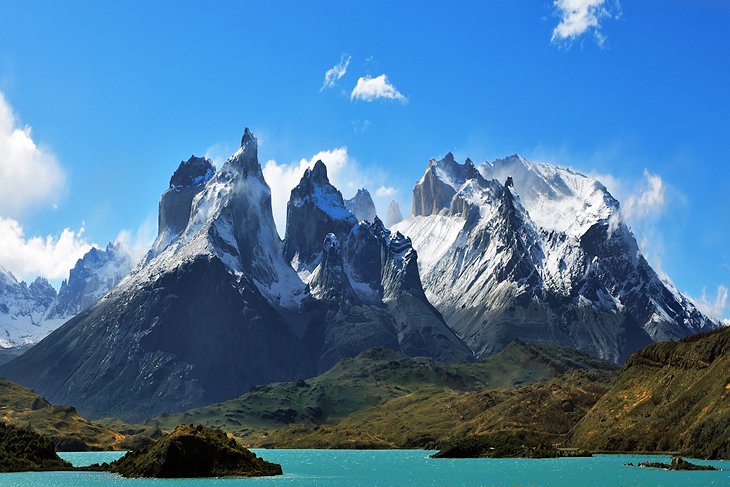
One of Chile's most important natural areas and an increasingly popular travel destination is the spectacular Torres del Paine National Park. Situated more than 100 kilometers north of the city of Puerto Natales in southern Patagonia, this stunningly beautiful area encompasses mountains, glaciers, and countless lakes and rivers.
The most important region of the park is the Cordillera del Paine , an area that marks the transition from the Patagonia steppe to the subpolar forests of the north. Perhaps the most notable of its many wonderful features are the three 2,850-meter-tall granite peaks of the Paine Massif, which dominate this already breathtaking scenery.
Hiking is one of the park's most popular activities, with numerous well-marked trails, many offering overnight shelters (refugios) with the basics needed for longer treks that circle the mountains. If you're planning on anything more than a day's hiking, professional guides are recommended and, in some areas, mandatory.
One of the top guided tours of the park is the five-day W Trek , one of the top hikes in Patagonia . This 71-kilometer route takes in some of the top points of interest in Patagonia, including the massive Glacier Grey and the mountains of Paine Grande.
Address: Magallanes y la Antártica Chilena Region
Official site: www.torresdelpaine.com/ingles/
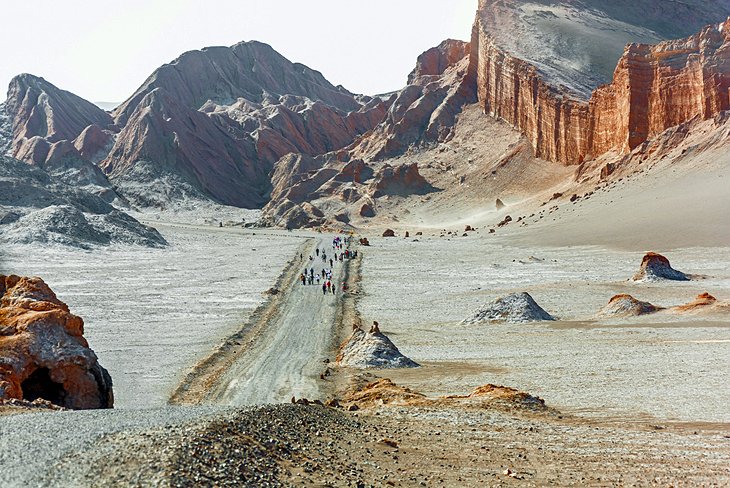
Valle de la Luna, which literally translates as "Valley of the Moon," lies 13 kilometers west of San Pedro de Atacama at the north end of the country, near its border with Bolivia. It can be accessed via well-marked bike trails, tour buses, or self-drive car rentals.
This rugged, inhospitable looking landscape in the heart of the Atacama Desert attracts many visitors for its eerie resemblance to the surface of the moon, an effect caused by the erosion of its sand and stone features by wind and water over countless millennia. Despite its remoteness, though, this surprisingly beautiful landscape has sustained life for centuries, both human as well as that of numerous species of flora and fauna.
Among its most interesting features are its dry lake beds-this is, after all, one of the driest places on the planet-which are dazzlingly white due to deposited salt, and prone to producing fascinating natural saline outcrops.
Other notable features of the Atacama Desert are the region's many caverns, some containing evidence of pictographs created by early man and where some of the world's oldest mummies, preserved by the area's aridity, were found. The most famous of these, the Chinchorro mummies, are now on display at the archaeological museum in San Miguel de Azapa.
Also of interest is the Laguna Cejar sinkhole, famous for its turquoise water.
Address: San Pedro de Atacama, Antofagasta Region
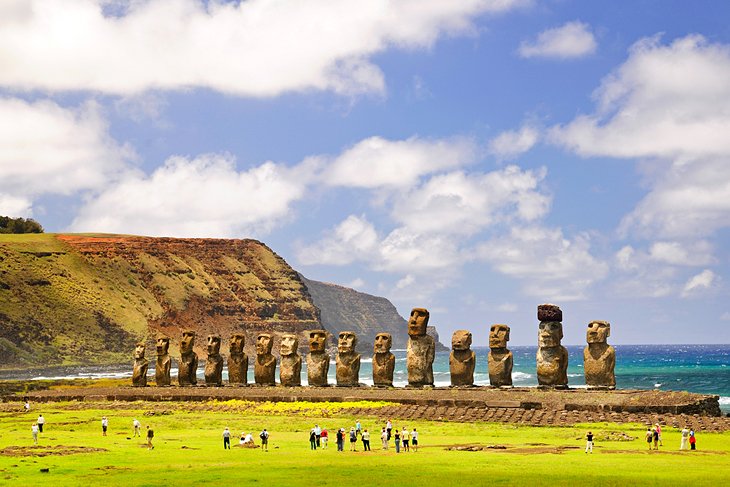
First visited by Europeans in 1722, the magnificent yet remote Easter Island – so named by a Dutch Explorer who first set eyes on it on Easter Sunday – has been inhabited for thousands of years by Polynesians. Despite being more than 3,500 kilometers away from mainland Chile, this fascinating island with its remarkable stone sculptures remains the country's most recognizable attraction.
All told, 887 of these statues, known as Moai – created by the island's early Rapa Nui population – have been identified, most of them now protected by Rapa Nui National Park (the island itself has been declared a UNESCO World Heritage Site). The most impressive collection is at Ahu Tongariki where 15 of them have been re-erected on the island's largest Moai platform, or "ahu."
Rapa Nui is also where you'll find one of the country's best beaches, Anakena . This beautiful yet short stretch of white coral sand is the perfect spot for a break from hiking.
Also of interest are the many "hare paenga" ruins near ahu sites consisting of stones that once formed the foundation of boat-shaped houses. Other highlights include the Father Sebastian Englert Anthropological Museum in Hanga Roa , the island's main community, notable for its exhibits relating to the history of the Polynesian islanders and their traditions.
Hot Tip: Visiting Easter Island is best done as part of a Chilean vacation, with regular flights available from Santiago or Tahiti. Flight times are approximately five hours, so expect to stay at least a couple of days.
Read More: Most Beautiful Islands in the South Pacific
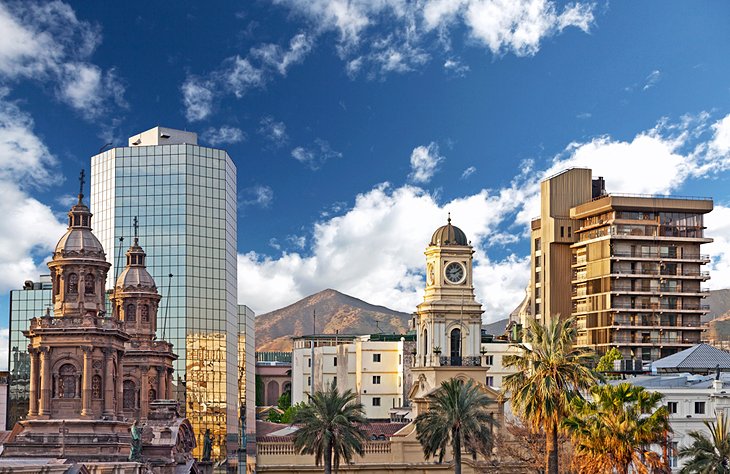
Santiago is not only the financial and business capital of Chile, it also serves as the country's cultural and entertainment center. Consequently, it's home to endless fun things to do, including visiting its best museums and galleries, along with excellent shopping, dining, and hotel options.
Centrally located and the country's main transportation hub, Santiago is where most visitors begin their Chilean travels before heading to the Andes or other areas of outstanding natural beauty, such as Easter Island. The smartest travelers, though, will allow time in their Chile travel itinerary to get to know Santiago.
Founded in 1541 and relatively crowd-free, the city features points of interest such as the Centro Cultural Palacio La Moneda , a state-of-the-art cultural center occupying part of the impressive Palacio de la Moneda, and the Chilean National Museum of Fine Arts (Museo Nacional de Bellas Artes). Established in the 1880s, it focuses on Chilean artists, and boasts a large permanent collection of paintings, sculptures, and photos.
Other must-sees are the excellent Museum of Pre-Columbian Art (Museo Chileno de Arte Precolombino), featuring collections relating to the country's native people, and the Museum of Memory and Human Rights (Museo de la Memoria y los Derechos Humanos). The latter commemorates those who suffered under the Pinochet regime.
A highlight of any visit to Santiago is taking the aerial tramway to San Cristóbal Hill for its stunning views over this most hospitable of cities. There are also some interesting attractions here, including an observatory, a 22-meter-tall statue of the Blessed Virgin Mary, and an amphitheater.
Be sure to also spend time enjoying Santiago Metropolitan Park (Parque Metropolitano de Santiago), a huge urban green space. Here, you'll find a botanical garden, the Chilean National Zoo, and a funicular railway.

Stretching for more than 330 kilometers from Temuco to Puerto Montt and resembling the alpine regions of Europe, the Chilean Lake District (Zona Sur) is well worth exploring. Like its alpine cousin, this beautiful region of the Andean foothills boasts rich farmland at the base of its many snowcapped volcanoes, ringed by thick forests and the kind of deep lakes that water sports enthusiasts drool over.
And the connection to Europe doesn't end here. After the forced resettlement of the region's indigenous people, the Mapuche , farmers from Switzerland, Austria, and Germany arrived, bringing with them aspects of their own culture that can still be seen in the architecture of towns like Osorno and Valdivia, as well as in the region's customs and festivals.
For adventure seekers, a typical Chilean Lake District itinerary includes endless hiking and biking potential, along with other fun activities such as volcano climbing; white water rafting; kayaking; canoeing; horseback riding; and, come winter, skiing. Road trips to the region are also extremely popular.
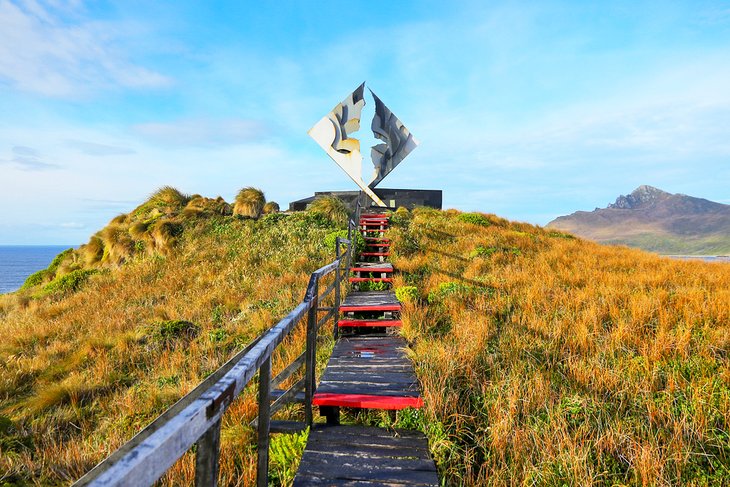
Considered something of a Holy Grail for travelers – and the equivalent of Mount Everest for yachting types – Cape Horn is, if you can get here, well worth the effort, if not the bragging rights.
The last stop before Antarctica and the world's southernmost tip, Cape Horn has for centuries been known as a sailor's graveyard for its remoteness, its hazardous coastline, and the rough seas that prevail here. While less important as a trade route now thanks to the Panama Canal, it has seen an increase in popularity among serious sailing enthusiasts, and features in a number of exciting races.
For the rest of us, it can, with careful planning, still be visited. There are, however, only a few ways to get to Cape Horn (apart from having your own yacht, of course). An increasingly popular option is via helicopter from the Chilean town of Puerto Toro. A day-long adventure, it can be expensive, so you may want to seek travel companions on the adventure. Alternatively, charter sailboats can get you here, but it's a long haul and often rough.
Cruise ships are, perhaps, the best option. A number of cruises in fact pass by Cape Horn on their way to Antarctica and will, weather and seas permitting, stop here for an hour. Passengers disembark via inflatable boats, so this part of the journey can be rough, too.
Once ashore, passengers can make the short cliff-top climb to what is perhaps the ultimate tourist selfie spot: the Cape Horn Memorial Sculpture. This breathtaking monument and its incredible views welcome you to the bottom of the world.
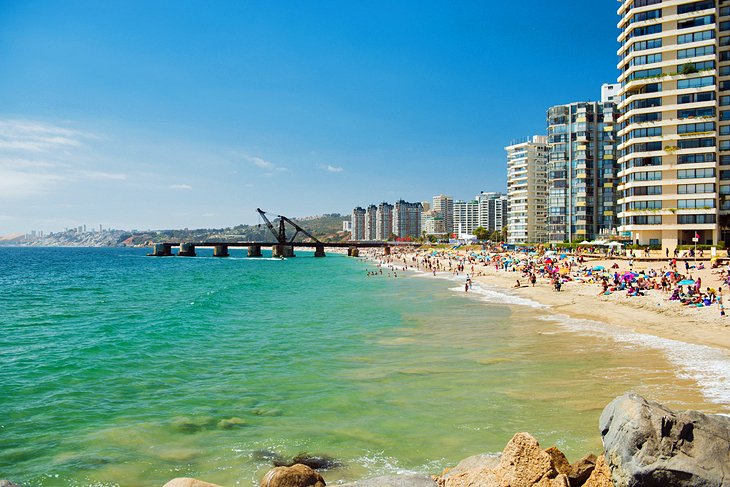
Chile's third largest city, Valparaíso, is nestled between the sea and the coastal mountain range about 112 kilometers northwest of Santiago and makes for an excellent day trip. As popular for its many old cobbled streets and unique architecture as it is for its lovely harbor and beaches, the city offers a great deal of fun things to do.
Many tourist attractions focus on the country's rich maritime heritage, including Lord Cochrane's Museum (Museo Lord Cochrane), located in a lovely old colonial home built in 1842. Another must-visit tourist attraction is the superb Naval and Maritime Museum (Museo Naval Y Maritimo) with its displays dealing with the War of the Pacific of 1879 between Chile and allied Peru and Bolivia, with particular emphasis on the contributions of Chile's war heroes.
A related attraction is the Ironclad Huáscar located in the Port of Talcahuano , some 600 kilometers south of Santiago. Talcahuano's beautiful harbor – home to Chile's navy – is the base for this immaculately restored historic vessel built in 1865 in Britain and one of the only surviving such battleships of her kind.
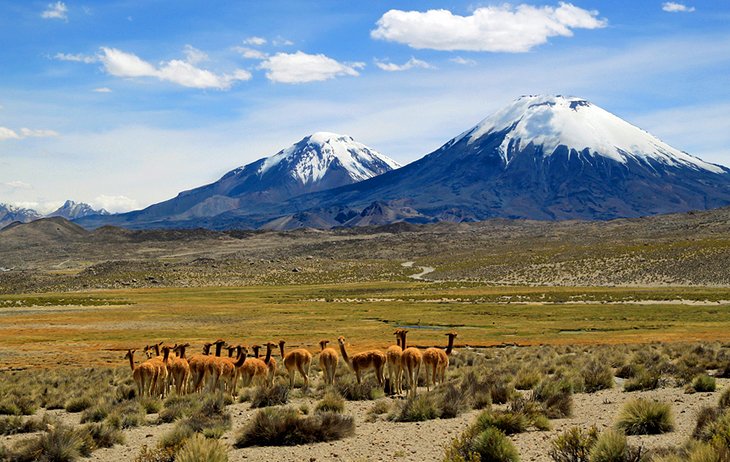
Located in the far north of Chile, just 140 kilometers east of the city of Arica, Lauca National Park (Parque Nacional Lauca) covers an area of 1,300 square kilometers and consists largely of high plains and mountain ranges, many of the latter comprised of large volcanoes.
Highlights include hiking around its many pristine mountain lakes, most notably Cotacotani and Chungara, which reflect the scenery around them to stunning effect. The park also features a number of important archaeological sites, as well as evidence of the early European settlers who left their mark in the region's many fine old colonial churches and buildings.
It's also especially popular for bird-watchers and is home to more than 140 species, including Andean geese, crested ducks, Chilean flamingos, and the massive Andean condor. Another beautiful area popular with nature lovers is Conguillío National Park (Parque Nacional Conguillío), also in the Araucanía Region of the Andes.
Address: Putre, Arica y Parinacota Region
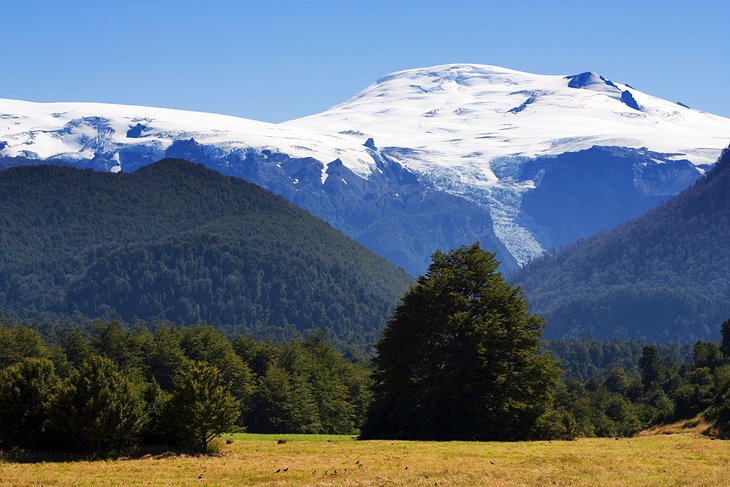
Although only established as a nature sanctuary in 2005, Pumalín Park has become one of Chile's most important and popular conservation areas. Covering a vast area of more than 988,000 acres stretching from the Andes to the Pacific, the area boasts some of the country's most pristine coastline and forests and is notable for being almost entirely untouched by human development.
In addition to protecting the area's rich flora and fauna, including the Alerce, the world's oldest tree species, the park is easily accessible to visitors and provides one of the country's best wilderness experiences. It's owned and operated by the US-based Conservation Land Trust.
Thanks to its extensive network of trails, campgrounds, and visitor facilities, Pumalín Park is a delight to explore, whether for a short nature hike or as part of a longer ecotourism adventure. These often include a stay at rustic cabin-style accommodations overlooking one of the world's most beautiful, unspoiled backdrops.
Address: Sector Río Amarillo S/N Chaitén, Chaiten, Chaitén, Región de los Lagos
Official site: www.parquepumalin.cl/en/index.htm
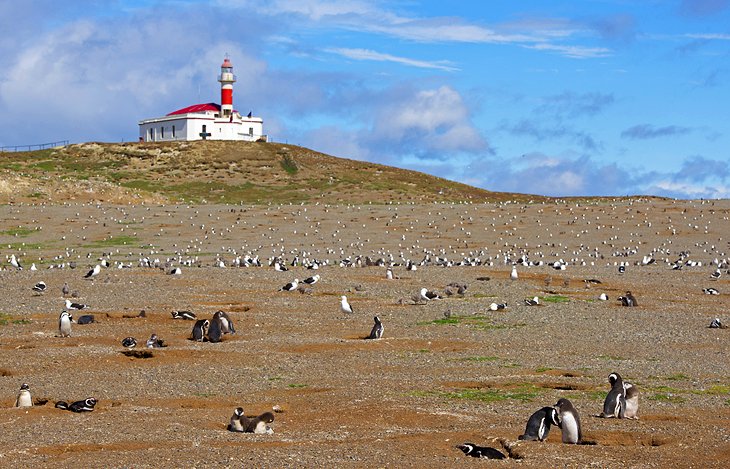
In addition to its national parks, more of Chile's important conservation efforts can be seen in its many natural monuments. One of the most popular is Los Pingüinos Natural Monument (Monumento natural Los Pingüinos), just 35 kilometers northeast of the city of Punta Arenas at the southern tip of the island and incorporating the beautiful Magdalena and Marta Islands .
As its name suggests (pingüinos is Spanish for penguins), the monument is home to one of Chile's largest penguin colonies, consisting of some 60,000 breeding pairs of Magellanic penguins. Accessible only by guided boat tours, the islands are also home to large colonies of seals and sea lions.
Another of Chile's important natural monuments is El Morado , an easy drive from Santiago and site of the San Francisco Glacier and the 4,674-meter-tall Cerro El Morado mountain.
Address: Punta Arenas, Magallanes y la Antártica Chilena Region
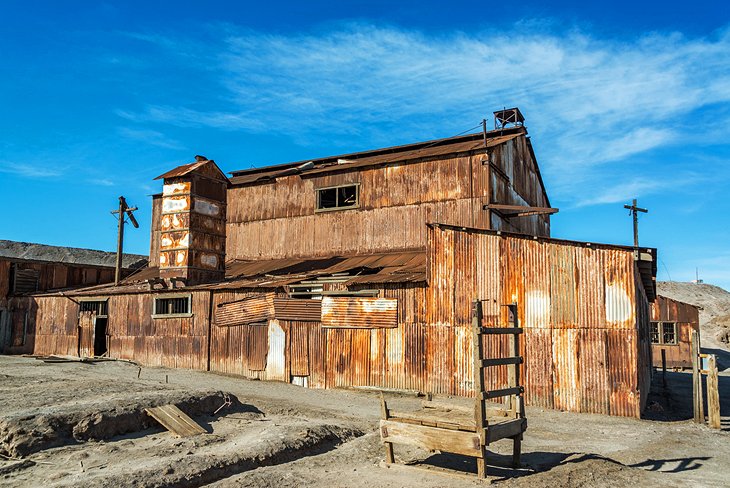
Situated near the northern port city of Iquique in the remote Pampa Desert and declared a UNESCO World Heritage Site in 2005, this fascinating ghost town was once home to a bustling community.
For more than 60 years from about 1880, thousands of Chilean, Bolivian, and Peruvian workers toiled in the Humberstone and Santa Laura Saltpeter Works (Salitreras Humberstone y Santa Laura), a hostile environment that included some 200 saltpeter mines. In the process, these workers formed a distinct culture and way of life that has been preserved here.
Although derelict since 1960, the site offers a fascinating glimpse into the tough conditions faced by these "pampinos," with many of the site's larger structures still standing and able to be explored. Professional guides are recommended given the area's remoteness and harsh climate.
Address: km 47 A-16, Pozo Almonte, Región de Tarapacá
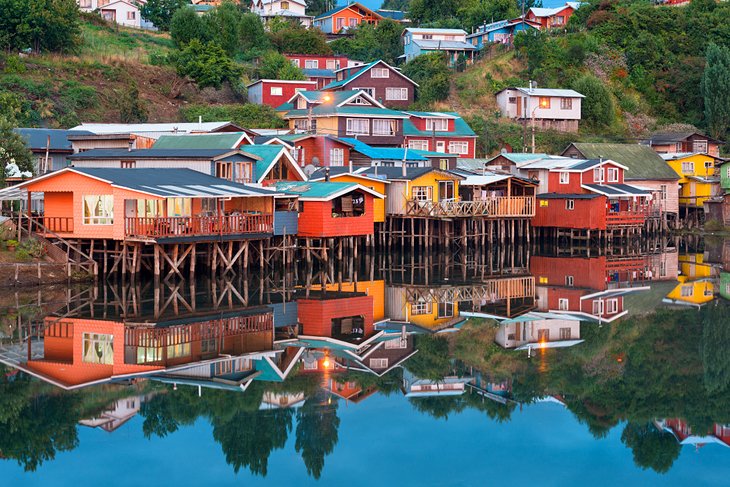
Situated on Chiloé Island, the country's second largest island, Chiloé National Park is well worth adding to your travel itinerary. While not as rugged as the majority of the country's most striking scenery, Chiloé Island is nevertheless quite unique.
In places, it looks not unlike the kind of rural topography you'd expect to find in parts of Europe – Germany immediately springs to mind – and it's a delight to explore.
In addition to the island's numerous old iconic wooden churches, remnants of the communities established by Jesuit missionaries who settled here in the 1600s, you'll see plenty of attractive, colorful old homes. Known as "palafitos," they snuggle along the shoreline in places and are raised out of the water on stilts. Many of the island's old churches, too, are painted brightly and should be visited.
Chiloé National Park itself has become increasingly popular among tourists in recent years. A highlight of a visit to this area of outstanding natural beauty is the chance to observe wildlife as diverse as blue whales and dolphins (sightseeing excursions are available), and the large penguin breeding grounds on the nearby Islotes de Puñihuil Natural Monument . Available adventures include sea kayaking, hiking, and eco-tourism.
Address: Los Lagos Region
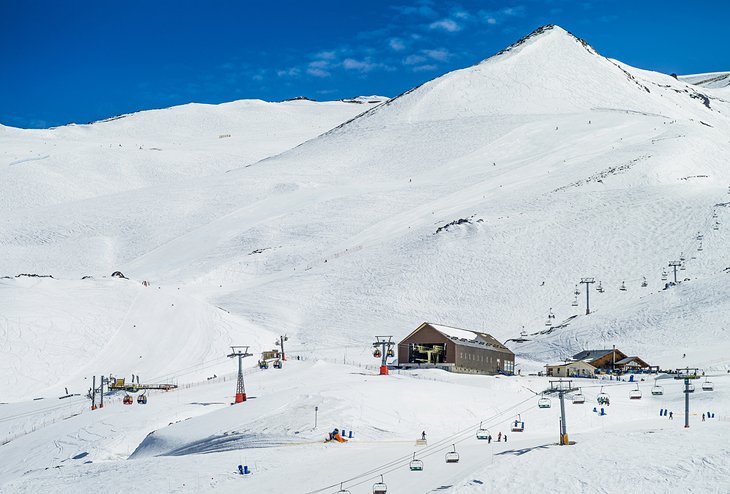
Once a well-kept secret, the fact that Chile is home to some of the world's best skiing is now common knowledge among skiers. By far the most popular ski area in South America, the Valle Nevado (Snowy Valley) resort region in the El Plomo foothills of the Andes is well-served by public transit from the country's capital of Santiago, located just 46 kilometers west of the slopes. Established in 1988, the ski resort covers a vast area and has grown rapidly in the time since.
Boasting mostly clear skies and great snow thanks to its high elevation 3,000 meters above sea level. It's skiable 112 days a year, and the resort features 37 trails and 11 lifts. It's as popular with beginner families as it is with seasoned skiers and snowboarders.
In addition to its three hotels, a variety of rental chalets and condos are available, suitable for short and long stays, and the resort also features eight restaurants. A snow school is located on-site, along with a ski shop and a tour company featuring heli-skiing adventures. Other notable Chilean ski resorts close to Santiago include La Parva and El Colorado .
Address: Avenida Vitacura 5250 of. 304, Vitacura, Región Metropolitana
Official site: https://vallenevado.com/en/
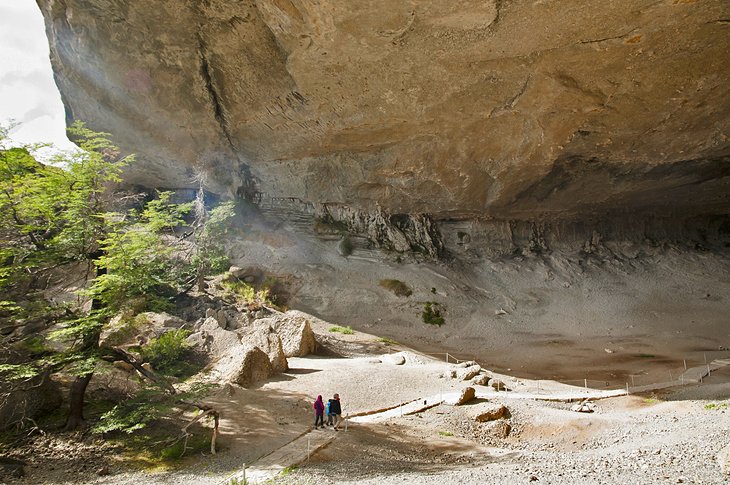
As popular with sightseers as it is with nature lovers, the Mylodon Cave Natural Monument (El Monumento Natural Cueva del Milodón) is situated in the heart of the Patagonia area of Chile a short distance from Puerto Natales.
Highlights of this fascinating natural wonder – part of the popular End of the World scenic drive – include a number of easy-to-access caves set around a formidable rock formation known as the Devil's Chair ( Silla del Diablo ).
The main cave, known as the Milodón Cave , was where, in 1895, the well-preserved remains of a prehistoric Mylodon were discovered (a tall statue of this long-extinct creature marks the spot where the discovery was made), along with remnants of other ancient animals and even human bones.
This impressive cave is some 200 meters deep, and it's fun to explore. If you've got time, take the marked trail that leads to the top of the cave, where you'll enjoy spectacular views over the nearby Eberhard fjord.
Other fun things to do include exploring the park's many other hiking trails, which include a number of raised sections at tree height that are fun to walk.
Address: Y-290 8, Natales, Región de Magallanes y de la Antártica Chilena
Official site: http://cuevadelmilodon.cl/en/index.php
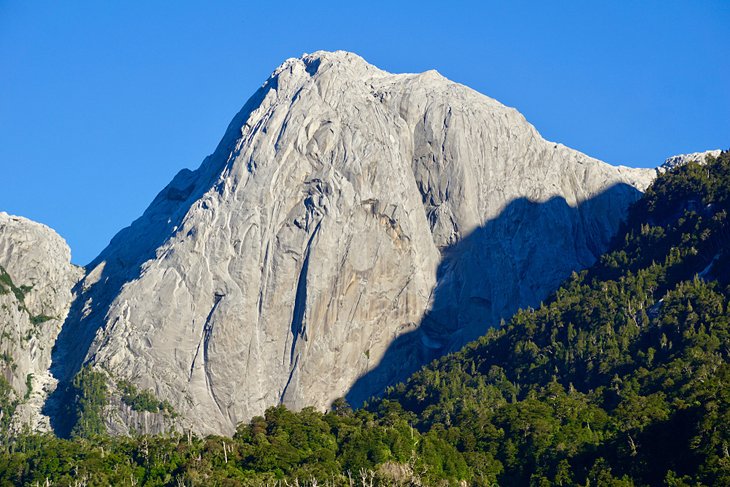
Known as the "Yosemite of Chile," the beautiful Cochamó Valley region of Chile is a delightful area to explore. Situated in the Los Lagos region of the Andes and named after the Cochamó river, it's a region that, like Yosemite, has become extremely popular among hikers and rock climbers, the latter drawn here for the chance to tackle its many 1,000-meter-plus granite walls.
Hikers, for their part, can choose from a variety of trails of varying degrees of difficulty, most of them taking you directly to popular sightseeing spots. These include the many beautiful waterfalls that dot the region.
You'll definitely want to tackle the 10-kilometer-long "Cowboy Trail," so named for its 100-plus-year history as a cattle trail (it was also used by the infamous bank robbers, Butch Cassidy and the Sundance Kid, after fleeing the US). This fun six-hour hike starts in the village of Cochamó and leads to La Junta, a rocky outpost with a number of campsites should you wish to bed down for the night.
In addition to the varied flora and fauna here, people are also drawn for the great fly fishing.
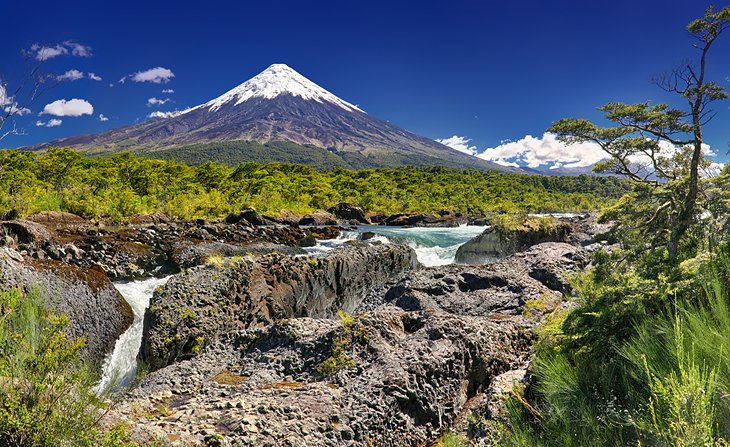
Established in 1926 and the first of the country's now numerous national parks, Vicente Pérez Rosales National Park (Parque Nacional Vicente Pérez Rosales) is located in the heart of the Chilean Lake District, and provides the perfect excuse to at least get a taster of this beautiful region.
Easily accessible from the city of Puerto Montt , the big tourist attraction here is the spectacular Petrohué Falls (Saltos del Petrohué). Here, the fast flowing Petrohué River plummets down a volcanic rock chute to Todos los Santos Lake, an especially impressive sight during the rainy season. After descending the falls and rapids, the water settles in the crystal clear lake, a popular fishing and bird-watching spot.
The area is also known for its diverse wildlife, including deer and pumas, as well as its thermal springs. Add to this picture-perfect location a backdrop of snowcapped volcanos, and you've got the perfect selfie spot to snap that memento of your vacation in Chile.
Address: Puerto Varas, Los Lagos Region

More on Chile
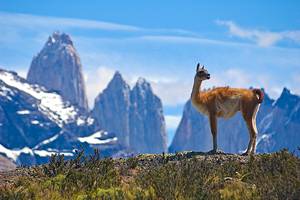
Santiago Travel Guide

15 Best Things to Do in Santiago, Chile
In Santiago, there are dramatic vistas at every turn – from the sprawling cityscape visible at the top of San Cristóbal hill to the ever-present Andes Mountains and their snow-covered slopes, which snake along the eastern horizon. Down below,
- All Things To Do

San Cristóbal Hill (Cerro San Cristóbal) San Cristóbal Hill (Cerro San Cristóbal) free
San Cristóbal Hill (Cerro San Cristóbal) stands nearly 3,000 feet above the rest of Metropolitan Park, a large swath of green spread between the neighborhoods of Providencia and Vitacura. The hill's height affords spectacular views to those who visit the summit. To reach the top of the hill, you'll need to hop on the funicular located on the north end of Pío Nono Street, which flanks the western side of Metropolitan Park. Or, if you're up for the challenge, you can strap on some hiking shoes and make the roughly one-hour climb up the hill from the base at Plaza Caupolicán, which is a quick walk from the Baquedano stop on metro Lines 1 and 5.
Regardless of whether you decide to make the journey to the top of the hill on foot or by funicular, you'll be rewarded with iconic photo-ops of the city below, as well as unrivaled views of the statue of the Virgin Mary at the summit. Recent visitors mentioned checking the smog levels before setting off and trying to plan the trip on clear days for the best panoramas.

Santa Lucía Hill (Cerro Santa Lucía) Santa Lucía Hill (Cerro Santa Lucía) free
A hilltop park on the eastern edge of downtown Santiago, Santa Lucía Hill (Cerro Santa Lucía) draws visitors with its panoramic views. To reach the top of Santa Lucía Hill on foot, head to the park's main entrance near the Santa Lucía metro stop. You'll know you're there when you find the mustard-yellow Neptuno Fountain. From here, follow the stairs to a narrow zig-zagging path punctuated by high stone steps.
Though the walk can be arduous (especially on a hot summer day), recent travelers remark that it's well worth the climb not only for incredible photo-ops, but also for the pleasant ambiance – complete with leafy promenades and castle-like fortifications. For the best views, walk all the way up to the Terraza Caupolicán, a hilltop terrace with buskers, benches and public art.

Sky Costanera Sky Costanera
The 62-story Gran Torre Santiago is the tallest building in South America, looming large over the city from the high-rise "Sanhattan" district. At the very top is Sky Costanera, a panoramic observation deck towering approximately 1,000 feet above street level with 360-degree vistas over the city, the Andes and the distant coastal range (smog-permitting). There's an alluring bar and coffee shop at the top, so you can enjoy a craft cocktail or latte with the view.
Down below is the Costanera Center, where many visitors report having a fabulous experience shopping and taking advantage of special discounts for foreign tourists. One of the largest malls in Latin America, this six-floor mecca is a fantastic place to stock up on supplies for trips further afield in Chile, with the city's best supermarket (Jumbo), department stores (including Falabella) and outdoor brands (like Doite), as well as a host of familiar international chains.

Popular Tours

Valparaiso Port and Vina del Mar Full-Day Tour from Santiago
(2586 reviews)
from $ 99.00

Maipo Valley Wine Tour with 4 vineyards from Santiago.
(691 reviews)

Inca Lagoon in Andes Mountain Range - Visit Local Vineyard with Tasting included
(666 reviews)
from $ 95.20

Lastarria Lastarria free
U.S. News Insider Tip: While in the neighborhood, be sure to stop by the bottle shop Santiago Wine Club to learn about Chile's boutique, organic and natural wines. The store has one of the city's best selections and frequently hosts tastings. – Mark Johanson
Lastarria may be small in size, spanning just four city blocks, but it makes a big impression on visitors as the most alluring neighborhood in Santiago's historic center. The nucleolus of the city's art scene, it's home to some of Chile's most important galleries and museums. Chief among them is the National Museum of Fine Arts (Museo Nacional de Bellas Artes), which has an impressive permanent collection and hosts rotating exhibitions throughout the year. Nearby is the Visual Arts Museum (Museo de Artes Visuales), which showcases the work of emerging Latin American artists, as well as the Gabriela Mistral Cultural Center (GAM), which displays contemporary art in the basement while staging theater and dance performances on the upper floors.

Metropolitan Cathedral (Catedral Metropolitana) Metropolitan Cathedral (Catedral Metropolitana) free
Flanking the western edge of the Plaza de Armas , this neoclassical cathedral has a history that stretches back to 1541, when Spanish conquistador and city founder Pedro de Valdivia requested a place of worship be constructed at the edge of Santiago's colonial square. However, throughout the three centuries that followed, the original building succumbed to numerous fires and earthquakes. The towering cathedral that stands today underwent construction around 1750, and in the 1780s, Italian architect Joaquín Toesca added a new twist: a blend of neoclassical style with baroque elements. The result is an interior that boasts intricate stained-glass windows and an elaborate altar ornamented with marble and deep blue lapis lazuli.
Although you'll have to battle dense crowds to see the interior of this church, recent visitors agree that the cathedral is a must-see thanks to its stunning floor tiles and frescoed ceilings. It can be a particularly evocative experience during religious celebrations, including Easter and Christmas.

Santiago Wineries Santiago Wineries
Wine connoisseurs love the aromatic vino and colorful scenery found in the Maipo Valley. A smattering of both big and boutique wine producers – renowned for their flavorful reds, especially cabernet sauvignon – can be found within an hour's drive of central Santiago. One of the Maipo Valley's most tourist-friendly vineyards is Viña Undurraga, which has an enchanting haceinda-style tasting room. Meanwhile, its most well-known winery is Concha y Toro. Situated in Pirque, a major wine-producing area about 15 miles southeast of Santiago, Concha y Toro pairs globally famous wines with flavorful small dishes and offers tours of its vineyards every day from 9 a.m. to 5 p.m. from 22,000 Chilean pesos (approximately $26) per person. According to recent visitors, the walks through the vineyard were quite nice, while the guides were exceptionally professional. For further details, visit Concha y Toro's website .
There are also a handful of venerable and up-and-coming wineries scattered across Chile's Casablanca Valley (about 50 miles northwest of Santiago). This region's wineries specialize in cool-climate grapes like sauvignon blanc and pinot noir. To arrange a trip to a variety of wineries across the valley without having to rent your own set of wheels, plan your trip on the Casablanca Valley Wine Producers Association website (Spanish only).

La Chascona Museum House (Casa Museo de La Chascona) La Chascona Museum House (Casa Museo de La Chascona)
For literary aficionados, no trip to Santiago would be complete without visiting La Chascona, the former residence of Noble Prize-winning poet Pablo Neruda. Named "La Chascona" – or the "Woman with the Tousled Hair" for Neruda's third wife, Matilde Urrutia, who was characterized by her red, wavy strands – the converted museum today houses a rare collection of Neruda's personal possessions, including a portrait of Neruda's third wife painted by Diego Rivera.
While you're free to explore the museum on your own, previous visitors recommend taking advantage of the audio guide tour (included in the cost of admission and available in a variety of languages, including English), which provides a rich background of Neruda's life, as well as some needed context. They add that, even if you're not a fan of Neruda, you should still plan a visit for the architecture alone. They also compliment the neighborhood the house is located in and say it houses several tasty restaurants.

Plaza de Armas Plaza de Armas free
Spanish conquistador Pedro de Valdivia (who founded Santiago) established this historic square back in 1541, creating a religious and political hub teeming with architectural treasures. Amid the many sights on display in the Plaza de Armas, you can't miss the graceful Metropolitan Cathedral set along its western border. You'll also stumble upon the former Governor's Palace, which has been converted into the city's main post office as well as the Historical Museum (Museo Histórico Nacional), which houses fascinating exhibits cataloguing Chile's history from the pre-Conquest period to the 20th century. Meanwhile, the plaza fills with musicians, artists, photographers, performers and street vendors on a daily basis, making this a popular spot to simply relax and soak up the city's culture.
A recent visitor found this palm covered square to be the soul of the city, with many museums within a few blocks, including the Chilean Museum of Pre-Columbian Art and the National History Museum of Chile. It is also, in recent years, a hub for Santiago's immigrant communities, with several Peruvian, Colombian, Venezuelan and Haitian restaurants nearby.

Santiago: Cajón del Maipo, Hot Springs, Waterfall & Chilean BBQ
(211 reviews)
from $ 210.00

Casablanca Valley - Tasting in 3 Wineries with Lunch Stop at Tanino Restaurant
(338 reviews)

Andes Tour to Portillo Inca Lagoon with San Esteban Vineyard Empanada & Wine
(268 reviews)

Bicentenario Park (Parque Bicentenario) Bicentenario Park (Parque Bicentenario) free
Bicentenario Park is one of the city's most serene corners, located along the southern edge of the Mapocho River in the heart of Santiago's ritziest enclave, Vitacura. Since it's shaded in perky palms and riddled with winding paths, it's as great for a picnic as it is for a leisurely stroll or a bike ride. Numerous events are staged here throughout the year, including design expos, wine fairs and craft shows. There are also open-air film screenings and occasional theatrical performances in the summer months.
Recent visitors praised the view back toward the high-rise "Sanhattan" district, noting that this park is one of the best spots in town to appreciate the capital's growing skyline. They also appreciate how clean and neatly manicured the grounds are, with sprawling playgrounds, swan-filled ponds and even a flamingo enclosure. Many visitors recommend capping off a visit with a meal (or pisco sour) at the park restaurant, Mestizo.

Museum of Memory and Human Rights (Museo de la Memoria y los Derechos Humanos) Museum of Memory and Human Rights (Museo de la Memoria y los Derechos Humanos) free
U.S. News Insider Tip: Five blocks east of the museum is one of the capital's most beloved restaurants, Peluquería Francesa, which serves French-tinged Chilean cuisine. Part old-school barbershop, part antique-filled eatery, dining here is like stepping back in time to the Santiago of yore. – Mark Johanson
If you're looking to learn more about General Augusto Pinochet's dictatorship, plan a visit to the Museum of Memory and Human Rights (Museo de la Memoria y los Derechos Humanos). The museum catalogues Pinochet's 17-year rule during the last Chilean military dictatorship, which resulted in the torture, murder and disappearance of thousands of Chileans. According to many recent visitors, the museum succeeds in increasing cultural awareness of the ways persecutions, imprisonments and torture during Pinochet's rule have had a ripple effect on Chilean society to this day. The museum pays tribute to the thousands of lives lost between 1973 and 1990 through photographs of victims, video coverage of protesters, and a host of legal documents, letters and artifacts from the late 20th century. According to recent visitors, the majority of the informational displays are written in Spanish. However, there is an audio guide you can download that includes narration in English. You'll have to pay 2,000 Chilean pesos (about $2) to access the audio guide, say recent visitors.

Barrio Bellavista Barrio Bellavista free
Beckoning an alternative crowd, the Bellavista neighborhood features graffiti-lined streets with restaurants, boutique shops and – more than anything else – late-night dance clubs. Here, you'll find inventive cocktail bars and eclectic eateries next to historic homes and colonial mansions. Spend some time exploring La Chascona – the former home of celebrated poet Pablo Neruda – before scouring the Patio Bellavista shopping area for souvenirs. Also, be sure to continue north to take in the scenery from Santiago's crown jewel: San Cristóbal Hill , a nearly 3,000-foot high hill tucked inside Metropolitan Park.
The vibrant nightlife, leafy parklands and laid-back vibes found in Bellavista make this a popular hangout spot among travelers and locals alike. It is particularly popular with backpackers and budget travelers, who have several character-rich lodging options. According to some recent visitors, the best way to experience the neighborhood is by wandering away from the main drag, Pío Nono, to search for the colorful homes and lavish art found on the side streets.

Chilean Museum of Pre-Columbian Art (Museo Chileno de Arte Precolombino) Chilean Museum of Pre-Columbian Art (Museo Chileno de Arte Precolombino)
Outdoor enthusiasts flock to the Andes' jagged peaks and wine lovers explore the Maipo Valley's spectacular vineyards . Meanwhile, art history buffs head to the Chilean Museum of Pre-Columbian Art (Museo Chileno de Arte Precolombino). The museum's permanent collection includes a diverse assemblage of pottery, sculptures and textiles from Mesoamerica, the Amazon, the Caribbean and Central and Southern Andes. Highlights include pieces from the Inca and Aztec empires and Chinchorro mummies, a funerary technique that's 2,000 years older than the Egyptian method. The temporary exhibits, which showcase everything from desert hats to weavings to rock art, are also worth visiting.
Travelers praise the museum for its versatile collection of artifacts and well-designed layout. Many are amazed by the extent and quality of the collection, noting that the museum is well designed. However, a few were disappointed that some of the descriptions are only labeled in Spanish. Others said the text is small and the lighting is dim, which they cited as other potential obstacles for reading the exhibition labels.

La Moneda Palace (Palacio de La Moneda) La Moneda Palace (Palacio de La Moneda) free
La Moneda is the palace of the President of the Republic of Chile, covering an entire city block with flag-filled plazas on either end. Originally the colonial-era mint, it only served that purpose for two decades before being converted to the seat of government it is today. The striking neoclassical building has been the site of many pivotal moments in Chilean history, including military strikes during the 1973 coup, during which the democratically-elected president, Salvador Allende, died by suicide inside.
Most visitors come to the palace today to see what's down beneath it. The subterranean La Moneda Cultural Center (CCLM) is a colossal space holding six galleries of varying sizes dedicated to photography, cultural heritage, design, children's programming, modern art and history. Exhibits change several times throughout the year and include a robust schedule of cultural programming. CCLM also includes the national cinema (which hosts art house film screenings), two cafes and several shops. Recent visitors raved about both the museum store and a gallery-like outpost of Artesanías de Chile, which sells fair-trade Chilean crafts sourced from the Atacama Desert and Patagonia.

Small-Group Cajón del Maipo Full-Day Tour and Picnic
(869 reviews)
from $ 39.90

Full Day Group Tour - Viña Del Mar-Valparaiso -Casablanca -Reñaca
(760 reviews)
from $ 38.99

Small group City Tour of Santiago of Chile
(162 reviews)
from $ 75.00

Central Market (Mercado Central) Central Market (Mercado Central) free
U.S. News Insider Tip: Just across the Mapocho River is Santiago's sprawling vegetable market, La Vega Central, where you can try local fruits (like cherimoya ), vegetables (like endemic Chiloé potatoes) and nuts (like piñones from the araucaria tree). – Mark Johanson
To get your seafood fix in Santiago, head straight to the Central Market (Mercado Central). Here, you'll find a festive atmosphere and top-grade fish. As you walk past the stalls and stands, you'll come across rarities like the giant abalone loco , prickly sea urchins and fleshy tunicates like piure , among other unconventional offerings. Venture to the center of the market to indulge in local cuisine – like ceviche and seafood empanadas – as you listen to live music. Even if you're not a fan of seafood, the Central Market is worth a visit: You'll find an eclectic assortment of fruits, vegetables and spices here as well. As you eat your way through the stalls, don't forget to admire the surrounding architecture. Set beneath a wrought-iron ceiling raised in 1872, the market impresses as much with its lively ambiance as its setting.

Santiago Ski Resorts Santiago Ski Resorts
U.S. News Insider Tip: The Andes above Santiago are also an excellent place for a hike, particularly in the shoulder seasons of spring and fall. Most visitors head to the Maipo Canyon where there are several public and private parks. – Mark Johanson
Just above Santiago – and visible on a clear day – are the Tres Valles Ski Resorts, which all lie high in the Andes between 8,000 and 12,000 feet above sea level in the mountain town of Farellones. La Parva is often considered the most exclusive of the resorts here, while El Colorado is more kid-friendly and family-oriented (though its snow park is billed as the best in the Andes). Valle Nevado, meanwhile, offers the largest skiable terrain in South America (more than 2,000 acres) and is a member of several multi-resort passes you can purchase in the U.S. It's also the resort most prepared to receive international visitors with bilingual workers and an English-language website.

Things to Do in Santiago FAQs
Explore more of santiago.

Best Hotels

When To Visit
If you make a purchase from our site, we may earn a commission. This does not affect the quality or independence of our editorial content.
Recommended
The 28 Best Water Parks in the U.S. for 2024
Holly Johnson|Timothy J. Forster May 8, 2024

The 18 Best Napa Valley Wineries to Visit in 2024
Lyn Mettler|Sharael Kolberg April 23, 2024

The 25 Best Beaches on the East Coast for 2024
Timothy J. Forster|Sharael Kolberg April 19, 2024

The 50 Best Hotels in the USA 2024
Christina Maggitas February 6, 2024

The 32 Most Famous Landmarks in the World
Gwen Pratesi|Timothy J. Forster February 1, 2024

9 Top All-Inclusive Resorts in Florida for 2024
Gwen Pratesi|Amanda Norcross January 5, 2024

24 Top All-Inclusive Resorts in the U.S. for 2024
Erin Evans January 4, 2024

26 Top Adults-Only All-Inclusive Resorts for 2024
Zach Watson December 28, 2023

Solo Vacations: The 36 Best Places to Travel Alone in 2024
Lyn Mettler|Erin Vasta December 22, 2023

26 Cheap Beach Vacations for Travelers on a Budget
Kyle McCarthy|Sharael Kolberg December 4, 2023

- Chile Tours
- Chile Travel Guide
- Where to Go in Chile
12 Best Places to Visit in Chile
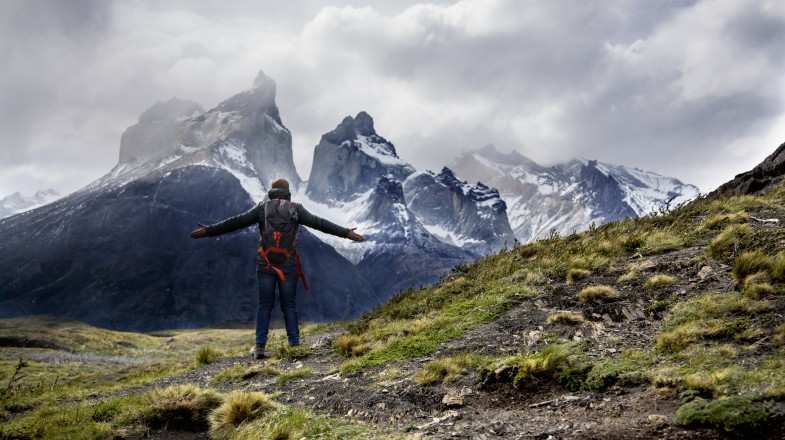
- 7.07K views
- ~ mins read
You’re bumping along an unpaved road, thankful you sprung for the 4-wheel drive rental car. Enormous mountains surround you on all sides, soaring up and disappearing into the clouds. You haven’t seen another soul on the road since morning and your stomach’s reminding you it’s past lunch time. Suddenly, the road terminates and you’re faced with a massive body of water. Nearby, a ferry bobs silently in the mist, ready to catapult you ahead on your epic quest. You just reached the first out of three ferry crossings on your daring road trip down Chile’s Carretera Austral and the adventure is just beginning.
This could be a day in your travel life if you decide to go on a Chile tour . At over 2,600 miles long with mountainous terrain and remote regions, Chile presents traveling challenges. However, a trip here is not without its rewards. From rich local culture, to authentic towns, to the most untouched natural areas on the planet, the places to visit in Chile make all the effort to reach them completely worth it.
Check out the top 12 Chile destinations to visit:
- Edward Nicholas Li
1. Torres del Paine National Park

Famous for epic trekking, monstrous glaciers, tranquil lakes, and iconic rock formations, Torres del Paine National Park is arguably Chile’s most sought-after attraction. Adventurous travelers flock to Chile’s Patagonia region to spend their days ogling unbeatable natural beauty and nights spent camping under the stars.
- What to do: The W trekking tour is the best-known trekking trail and takes visitors past the park’s worthiest sights like Torres del Paine, Glacier Grey , Los Cuernos and Valle del Frances.
- When to visit: The best time to visit Torres Del Paine is between December and February. Although this is the high season and the park gets busier, it’s also dry and warm—perfect conditions for hiking and enjoying the park’s incredible viewpoints.
- Crowds: During the high season Torres Del Paine is at its most crowded, but this mainly applies to guesthouses and hotels which book up quickly. The park itself is also busy, but its sheer size means you’ll be certain to find many beautiful spots all to yourself.
- How to get there: The nearest airport to Torres Del Paine is Punta Arenas, but if you’re coming from Buenos Aires, there aren’t any direct flights. Instead, the best way to reach the park is by flying to El Calafate, from where you can take a bus trip of up to 5 hours to reach Puerto Natales. It takes around 2.5 hours to get into the heart of the park from Puerto Natales, but the views along the way are all part of the adventure!
Highlights:
- Marvel at the Majestic Cuernos del Paine, also called the iconic "Horns of Paine".
- Trek to Lake Pehoé, characterized by its crystal-clear, turquoise waters surrounded by jagged peaks. The trek offers breathtaking panoramas of the lake and its glacier-fed beauty, making it a photographer's paradise.
2. Easter Island
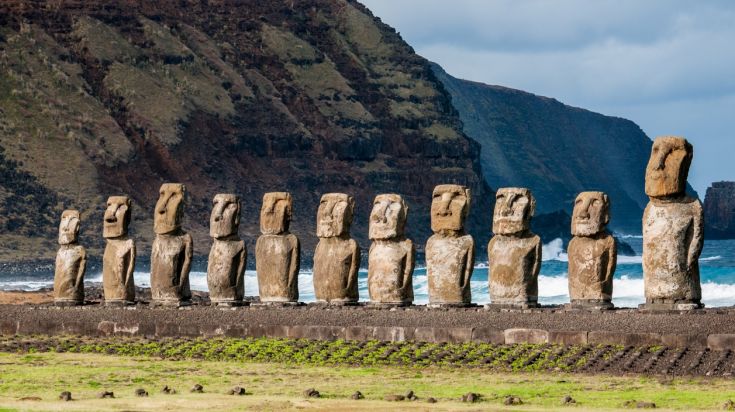
Lying over 3,219km off Chile’s eastern coast and 2,092km from any other populated piece of land, Easter Island is one of the most isolated inhabited places in the world and a photographer’s dream land. The volcanoes flow down to meet the beaches and the lush, rolling greenery makes an epic contrast to the untamed Pacific Ocean never lurking too far off in the background. Making the perfect model for photog’s portraits are the roughly 1,000 stone Moai statues.
- What to do: Don’t miss Rano Raraku and Ahu Tongariki boast the most impressive Moai statues. The former is thought to be the production site of the statues (housing over 400) and the latter has some of the largest, set on an incredible cliff-side location. Tip: Go at sunrise for photos of the sun splitting through the rocks.
- When to visit: Between April and November is the best time to head to Easter Island, when the weather is calm, mild, and not too humid. This is the best season to experience the most activities on Easter Island, although it can be a popular time to visit for others too!
- Crowds: Easter Island is popular year-round, from April to November due to good weather, in February for cultural celebrations, or in high season from January to March. Although you won’t be tripping over people at any time of year, Easter Island is very small so it may feel more crowded than you think.
- How to get there: Being one of the world’s most remote islands, Easter Island has no major cities nearby. The only way to reach the island is by plane, operated by LATAM, which flies there directly from Santiago in Chile. The journey takes around 6 hours.
- Witness the Moai statues at sunrise at Ahu Tongariki, where 15 massive Moai statues stand. Many visitors come to contemplate the mysteries of these unique, handmade structures.
- Explore Rano Raraku Quarry on a mesmerizing journey to the location where the Moai were carved. Hike along the rugged trails, surrounded by abandoned Moai in various stages of completion, offering a unique glimpse into the island's sculptural history.
3. San Pedro de Atacama
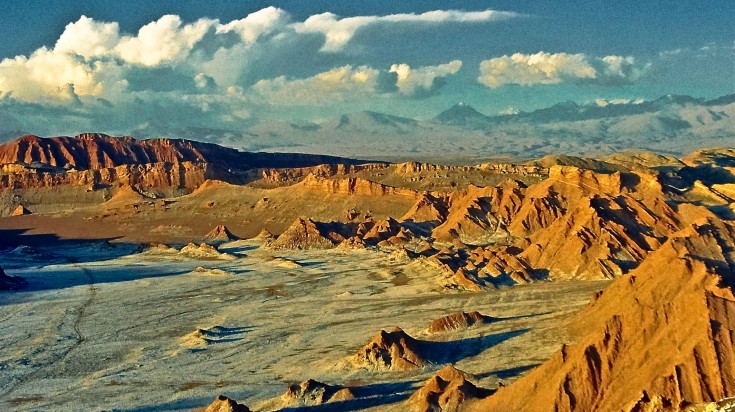
A small town built around an oasis on a desert plateau, roughly 5,000 people call San Pedro de Atacama home. The traditional way of life and other-worldly landscapes that expands throughout the Atacama Desert draw tourists who come to admire the naturally beautiful surroundings, simple lifestyles, and ancient culture that continues to thrive in the town. San Pedro de Atacama’s 16th century church is its iconic landmark and the Craft Village is the place to stroll through to witness the age-old local art traditions still practiced here.
- What to do: Moon Valley, with its lunar landscape, salt caves, and huge salt dunes molded by water and wind is undoubtedly a top place to visit in San Pedro de Atacama. Additionally, Tebinquiche Lagoon, part of the 1,200-square mile Salar de Atacama (Atacama Salt Flats) is a spectacular sunset vista area and photography hot spot.
- When to visit: There is no wrong time to visit the Atacama Desert, since it only rains six days per year. Sunshine is guaranteed! However, December to February offers warm, sunny summer weather. Avoid the desert between June and August when temperatures are freezing— sometimes it even snows.
- Crowds: San Pedro de Atacama can get crowded throughout the year, as it is such a small town and the gateway to the desert. Few people visit from June to August due to poor weather, and you’ll likely see the most crowds between December and February.
- How to get there: San Pedro de Atacama and its surrounding desert are remote but an extremely popular destination, meaning there is an easy route to get there. You’ll need to fly from Santiago to Calama Airport, from where you can jump on a shuttle bus to San Pedro, rent a car, or hire a taxi.
- Venture into the surreal lunar landscape of the Moon Valley (Valle de la Luna), where salt formations, sand dunes, and jagged rock formations create an otherworldly atmosphere.
- Embark on a colorful adventure in the Rainbow Valley (Valle del Arcoíris), named for its vibrant mineral deposits that paint the landscape with shades of red, green, and purple. Hike through this geological wonderland, exploring narrow canyons and taking in the stunning contrast of colors on the landscape.
4. Valparaiso
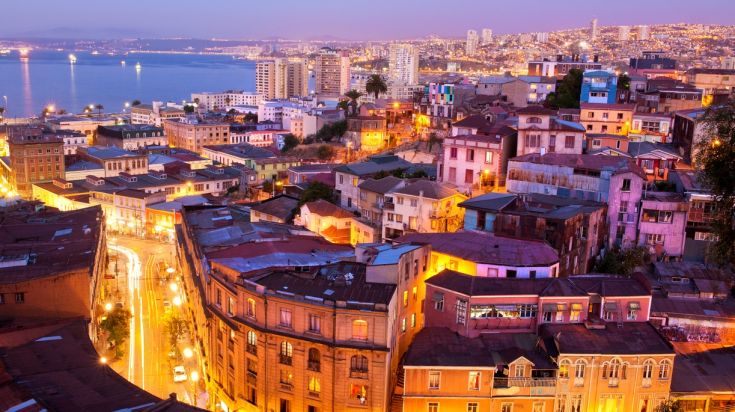
This bustling seaport lies 120km west of Santiago and possesses all the flairs and quirks one might expect from a World Heritage City. Valparaiso is praised for its rich culture and its ability to inspire local artists and poets. What should you do in town? Eat seafood, stroll the narrow streets, check out the city’s infamous collection of street art, peruse the art galleries, discover gastronomic treats and gaze upon the city’s magnificent architecture from its many towering viewpoints.
- What to do: Climb the stairs or take the El Peral funicular to Valparasio’s Cerro Alegreneighborhood, chalk-full of lively spirits, artists, street performers, bars, restaurants, churches, and gorgeous homes. For the best seafood in town, head to Caleta Portales, a fishing town within the city that offers up the freshest catches of the day.
- When to visit: The best time to visit is between October to April when the weather is warm and dry.
- Crowds: December to February sees the most crowds in Valparaiso, but many locals leave the city to escape to cooler areas on holiday while the tourists take over.
- Main city & how to get there: Valparaiso is a quick trip from Santiago by car—just 1.5 hours in fact. This is the easiest way to arrive, or alternatively, there are also local buses that go to Valparaiso from central Santiago.
- Wander through the maze-like streets and vibrant alleys of Cerro Concepción, one of Valparaiso's picturesque hills. Admire the street art and murals that adorn the buildings, and take in panoramic views of the harbor from Paseo Gervasoni.
- Immerse yourself in the world of Chilean poet Pablo Neruda by touring La Sebastiana, one of his former residences turned into a museum, and be enchanted by the panoramic views of the city and the sea from the top floor.
Find out the best options to get to Valparaiso from Santiago .
5. Santiago
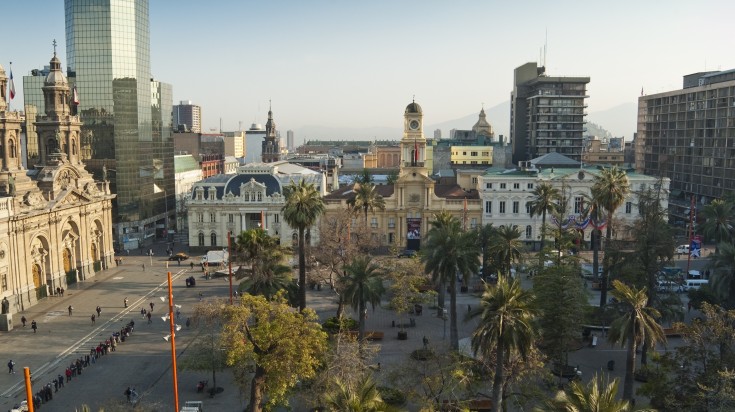
The country’s capital and the largest city is an obvious place to visit in Chile. This city offers a real taste and feel for what Chilean culture is all about. Explore its many neighborhoods, some of which provide a plethora of art galleries and others which are known for their markets selling local handicrafts. The historic city center has no shortage of museums and old buildings with impressive facades. Nightlife is also booming here — head to the Bellavista district to get your groove on.
- What to do: Explore Bellavista neighborhood. It is an artistic hub of boutique shops, art galleries, cafes, and houses some of the city’s best graffiti and street art. From here you can also trek to the top of the 914m St. Christopher Hill for city panoramas.
- When to visit: The summer season (July to August) is the best time to visit Santiago. Many locals leave during this time and the city is quieter, the weather is pleasant and the days are long.
- Crowds: Chile’s summertime, between December and February, is generally the busiest time in the city due to hot weather and a variety of celebrations.
- How to get there: Santiago has a major international airport with direct flights to the USA, Europe, Asia, and beyond.
- Take a cable car to the summit of San Cristóbal Hill for breathtaking panoramic views of Santiago's sprawling cityscape and the majestic Andes Mountains.
- Indulge in the flavors of Chilean cuisine at the bustling Central Market (Mercado Central), such as the renowned Chilean seafood stew known as caldillo de congrio.
6. Wine Valley

For the foodies and the wine lovers, a trip to the wine valleys south and west of Santiago top the list of places to visit in Chile. Chilean vineyards quickly climbed the ranks and now claim a spot amongst the best wine producing regions in the world. There are several valleys battling for the spotlight, but the three best-known around Santiago are Maipo Valley , Colchagua Valley , and Casablanca Valley . The latter is Chile’s only cool-climate wine producing region and is known especially for its excellent white wines and pinot noir.
- What to do: Check out Quintay Wine Estate and taste their perfected sauvignon blanc and Kingston Family Vineyards or Casa Botha for on-point pinot noir.
- When to visit: To sample wines and witness the harvest, visit between March and May, when most grapes are harvested and the region is particularly beautiful. However, wineries are open year-round so you can go anytime.
- Crowds: Chile’s wine regions, such as the Maipo Valley and Colchagua Valley, are busiest during harvest season, but visit towards the end and the crowds may ease off slightly.
- Main city & how to get there: Chile’s wine regions are huge and diverse, spread across most of the country. The best way to see one or a selection is via a tour—the most famous are the Maipo Valley and Casablanca Valley, which can be reached on a short drive from Santiago and Valparaiso respectively.
- Embark on a guided tour through the scenic vineyards of Maipo Valley, where you can stroll through rows of grapevines and learn about winemaking techniques against a backdrop of the Andes Mountains.
- Sip on classic Chilean wines such as carménère or cabernet sauvignon paired with local dishes such as empanadas or seafood paella.
7. Carretera Austral
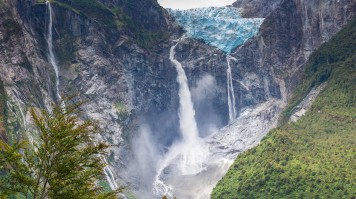
Road trippers, this one’s for you. Cruise through rural Patagonia following over 1,200km of road on Route 7 while enjoying pristine natural beauty and possibly the freshest air in the world. The starting point lies in Puerto Montt and the road terminates in Villa O’Higgins. The remote stretch of road winds through several National Parks, along wild rivers and lakes, through untouched forests, and past glaciers and mountain ranges. Traveling the whole route from start to finish includes 3 ferry crossings. It’s a big time commitment, but if you’re seeking some alone time amidst nature, make the trip.
- What to do: The Queulat National Park — known for its untouched evergreen forests, temperate rainforest and miles-long glaciers — is an obvious must-visit. Tackle the rugged trekking on Cerro Castillo — a mountain 100km south of Coyhaique — promising jagged peaks, hanging glaciers and a gorgeous turquoise glacier lake.
- When to visit: The best time to visit Carretera Austral The best time to visit Carretera Austral is between November and April, when the weather is at its best, although keep in mind the weather in Patagonia can be unpredictable!
- Crowds: November to December, and March to April, are the best months for visiting in terms of crowds. Although they’re still popular with visitors, they are far less crowded than in January and February when prices spike and locals have their school holidays.
- How to get there: You’ll need to rent a car or do a tour of Carretera Austral. If you’re coming from Santiago, there are flights to Puerto Montt, in the north of the region, and Balmaceda, in the south, both of which have car rental options, tours, and their own set of attractions.
- Embark on an unforgettable drive along this scenic highway that winds through some of Chile's most pristine and remote Patagonian landscapes, seeing dense rainforests, emerald lakes and rushing rivers along the way.
- Hike through Queulat National Park over suspension bridges and through ancient forests to visit the awe-inspiring Queulat Hanging Glacier.
8. Chile’s Lake District
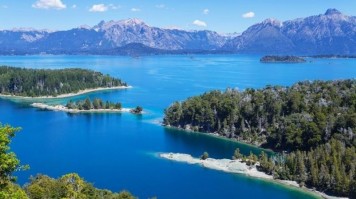
Chile’s most naturally scenic district runs 547km from Temuco in the north to meet Puerto Montt in the south. Renowned for gorgeous emerald lakes framed by snow-capped mountains and volcanoes, the Lake District provides endless vistas and incredible scenery. As beautiful and tranquil as the district is, it’s also known as an adventure capital. Rafting, zip lining, kayaking, volcano-climbing, hiking and alpine skiing are just some of the offerings. National Parks rule here, and no visit to the Lake District is complete without exploring one of them.
- What to do: Trek up Volcan Villarrica and ski or snowboard along the edge of crater while leaping from lava-flow formed halfpipes and eaves. The National Parks boasts spectacular day treks; the best way for appreciating all the Lake District’s glorious beauty. Shrouded in lush forest and temperate rainforest, Puyehue National Park’s trekking trails are some of the most impressive in the country. Bonus: the area’s German-inspired cuisine has made a name for itself and keeps travelers satisfied with hearty soups, meat, potatoes, and seafood.
- When to visit: Chile’s beautiful Lake District is the country’s wettest region, but for the driest weather, head here between October and April when the summer months bring slightly warmer temperatures.
- Crowds: As with many of Chile’s destinations, the Lake District gets busy with both tourists and locals in the summer months of January, February and even March. There will be fewer crowds if you visit in November and December.
- How to get there: From Santiago, you’ll need to fly or take a bus to Puerto Mott, the gateway to the Lake District. From here, there are dozens of cruises and tours which depart to explore the area.
- Head out on a hiking adventure in Conguillío National Park where you can admire the epic Llaima Volcano and walk amongst Araucarua (Monkey Puzzle) trees which date back thousands of years.
- Take a boat ride on the waters of Lake Todos los Santos, surrounded by snow-capped volcanoes, dense forests, and pristine wilderness—the ideal way to explore the remote wilderness of the Lake District.
9. Tierra del Fuego

Known better by its nickname as “The End of the World”, the aptly named, southernmost region in Chile is isolated albeit extremely intriguing. This triangular archipelago — explored by the likes of Charles Darwin and Ferdinand Magellan — presents a rough and rugged front that gives way to charming allure. This region can be explored on foot, but some of the most spectacular tours are conducted from the water.
- What to do: A boat trip to Cape Horn — the ominous black cliffs rising from thetreacherous seas — is an exhilarating excursion you’ll be talking about for the rest of your life. Another way to discover this region is by sailing or cruising through the magnificent fjords while stopping to trek along deserted coastlines and dramatic glaciers.
- When to visit: Months between October and April are the best to visit Tierra del Fuego, when the weather is warm. However, winter sports enthusiasts may prefer between June and September for excellent skiing.
- Crowds: The warmer months are the busiest time, both with locals and tourists coming overland or on cruise ships.
- How to get there: The quickest way to get to Tierra del Fuego is by flying to Ushuaia in Argentina. However, if you’re already in Chile, you can take the ferry from Punta Arenas to Puerto Porvenir, from where it’s around a 2-hour drive to get to Tierra del Fuego.
- Venture into the heart of Tierra del Fuego by exploring the region’s eponymous national park, where you can hike through Antarctic forests and spot native wildlife like foxes, guanacos, and seabirds.
- Meander along the water on a boat tour of the Beagle Channel, where you can observe glaciers, cliffs and colonies of adorable Magellanic penguins.

The island of Chiloe bursts with color and culture, instantly making visitors feel welcome and inspired. Chiloe’s striking landscape is complimented by brightly painted wooden churches (16 of which are UNESCO World Heritage Sites ) and over-water stilted homes. Populating Chile’s fifth largest island are a spiritual people whose culture revolves around mythology, witchcraft and folklore, making Chiloe a strange yet irresistible destination in Chile.
- What to do: Horseback riding through the Chiloe National Park allows visitors to experience the rushing rivers, serene lakes, and long beaches framed by dark green forests. In contrast, visit the town of Castro where you can find a vibrant display of the island’s characteristic palafitos (colorful stilted homes), excellent seafood restaurants, and plenty of arts and crafts shops to satisfy all your souvenir-buying needs.
- When to visit: A great time to go to Chiloe is during the South American summer, which falls between December and March.
- What to pack: Due to its chilly weather, which can continue even into summer, cold weather clothes are essential. Make sure to bring a warm coat, hiking boots, cozy socks and a hat for particularly windy days by the water.
- How to get there: Chiloe may be an island, but it’s fairly easy to reach. There are direct flights from Santiago which take around 2 hours. Alternatively, you can take a bus from either Santiago or Puerto Montt, which takes 17 hours and 4 hours respectively, which is roughly the same if you’re self-driving. You’ll then need to catch a 25-minute ferry across the Chacao Channel.
- Explore Chilloe’s classic stilted houses known as palafitos in the charming town of Castro, by wandering the streets to see the area’s unique architecture.
- Immerse yourself in the Chiloe’s natural beauty on a hike through Chiloé National Park. Look for local wildlife like pudú deer and foxes, and enjoy the stunningly sheer cliffs and amazing coastline views.
11. Lauca National Park

Lauca National Park is the place to visit in Chile for high-altitude landscapes, breathtaking scenery and unusual wildlife. Encounter crystal-clear lakes, snow-capped volcanoes and expansive salt flats, which all offer unparalleled opportunities for hiking, photography and other outdoor activities. Marvel at the striking beauty of Chungará Lake, perched at over 4267.2 m above sea level, or venture along trails to encounter graceful vicuñas, Andean flamingos and other rare wildlife.
- When to visit: Lauca National Park can be visited at any time of year, whether in the warm, summer months, clear, dry months of March, May, September and October, or even in winter during July and August, when winter wildlife and fewer visitors transform the park into a peaceful wonderland.
- How to get there: Reaching Lauca can seem confusing, but it’s a popular area with frequent transport links. From Santiago, there are flights to Arica, from where there are buses to Putre, one of the gateways to the park. If you’re driving, the CH-11 Highway also links Arica with popular destinations, including Bolivia’s capital of La Paz, for a longer sightseeing trip.
- Lace up your hiking boots and explore the extensive network of trails that wind through areas of Lauca National Park, such as the stunning Payachatas Valley
- Discover the traditional Andean village of Putre, a gateway to the park, where you can find colonial architecture, bustling markets, and meet friendly locals who can tell you more about their way of life.
12. Robinson Crusoe Island

Robinson Crusoe Island is situated in the remote Juan Fernández Archipelago of Chile, and was named by the government to reflect its beauty, inspired by pirates, buried treasure and hidden caves. Explore a landscape overflowing with wildlife found nowhere else on earth, such the Juan Fernández firecrown hummingbird and the South American fur seal. The island is an outdoor lovers’ paradise, with kayaking, snorkeling, and hiking amongst hidden waterfalls, rugged coastline and submerged caves, with areas like Centinela Hill, Puntas de Isla, and Puerto Francés almost untouched by outsiders.
- When to visit: The best time to explore Robinson Crusoe Island is between October and April, when the weather is warm and dry, and you won’t get caught in the rain that falls in the rest of the year.
- What to pack: Lots of outdoor gear for exploring is essential for Robinson Crusoe, no matter what you plan to do. Hiking boots and a lightweight backpack for hitting the trails, swimsuits, snorkels and sunscreen for riding the waves, and above all, insect repellent for venturing into caves, waterfalls and jungles.
- How to get there: Robinson Crusoe Island is just a 2.5 hour flight from Santiago.
- Trek through the lush and untouched forests on Robinson Crusoe Island, which are home to endemic plant species like the Juan Fernández fern, and cascading waterfalls, such as El Yunque.
- Scuba divers can plunge into the crystal-clear waters surrounding the island to see rare marine life and underwater caves, or snorkel along vibrant coral reefs to spot colorful fish, sea turtles and the fur seal.
Chile is cultural playground set amongst pristine land seemingly untouched by humans. Age-old traditions strongly live on, preserving the country’s heritage. Magnificent mountains and remote trails beckon rugged travelers who are looking to get off the grid while the quaint towns found along the way appeal to those with a softer side. Whether your goal is isolated travel in nature or meaningful encounters with locals, the top places to visit in Chile offer all this and everything in between.
Likewise, for more information on activities to try in Chile, read our things to do in Chile article. Know where to go and what to do, but not sure how long it will require? Check out our guide on how many days to spend in Chile . If you have off-the-beaten-track destinations that aren't available in packaged holidays, how about planning a custom Chile trip that is personalized to your requirement?
Related Categories
- Best Chile Hikes
- Chile Travel Advice
- How Long To Spend In Chile
- Top Chile Attractions
- What To Do In Chile
- When To Visit Chile
- Where To Go In Chile

Popular Destinations
- Europe Tours
- Everest Base Camp Trek
- Italy Tours
- Spain Tours
- Argentina Tours
- Canada Tours
- Sri Lanka Tours
- Antarctica Tours

You are browsing the UK site. Visit our US site .
You are browsing the US site. Visit our UK site .
You are browsing the US site. Visit our Rest of World site .
- Destinations
- Experiences
- The Seychelles
- South Africa
- Tanzania & Zanzibar
- Browse all Africa

- Browse all Arctic & Antarctica
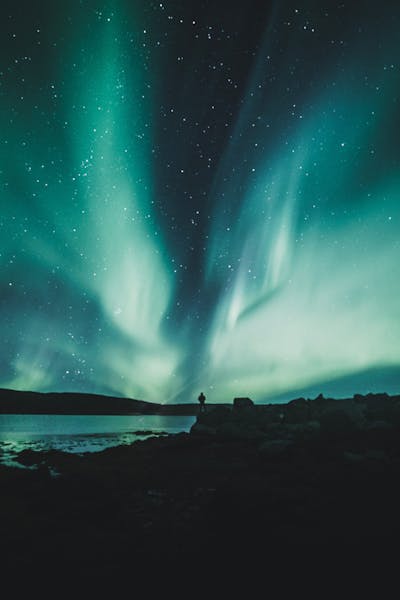
- The Maldives
- Papua New Guinea
- The Philippines
- South Korea
- The United Arab Emirates
- Browse all Asia
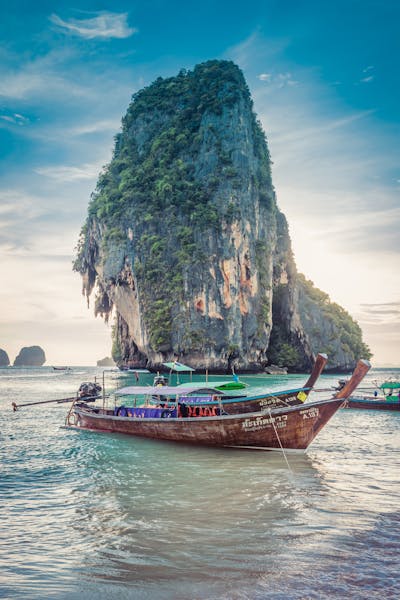
- The Cook Islands
- French Polynesia
- New Zealand
- Browse all Australasia & Oceania
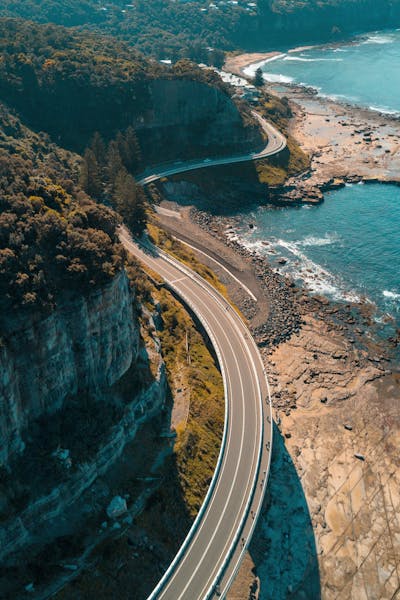
- The British Virgin Islands
- The Cayman Islands
- St Vincent and the Grenadines
- Turks and Caicos
- Browse all Caribbean
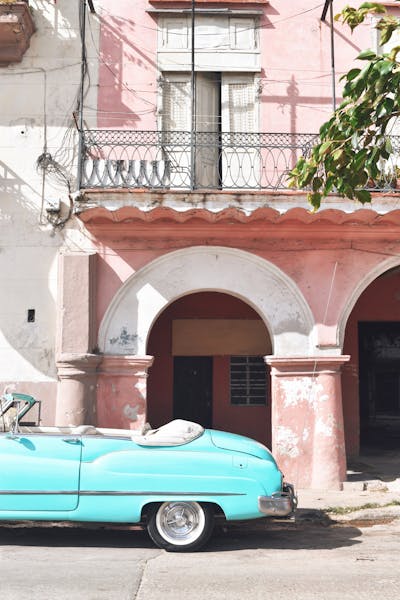
- Czech Republic
- Ireland & Northern Ireland
- Netherlands
- Switzerland
- UK & Ireland
- Browse all Europe
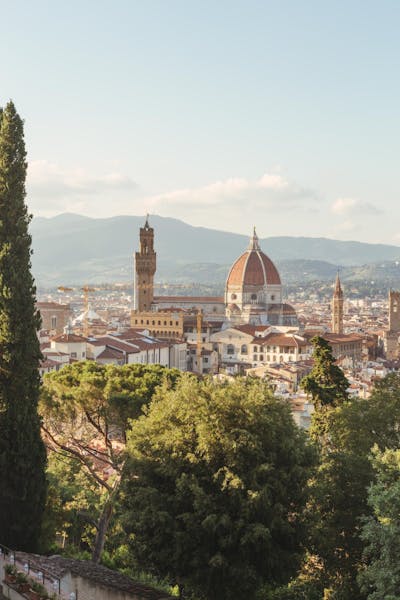
- Réunion Island
- Browse all Indian Ocean
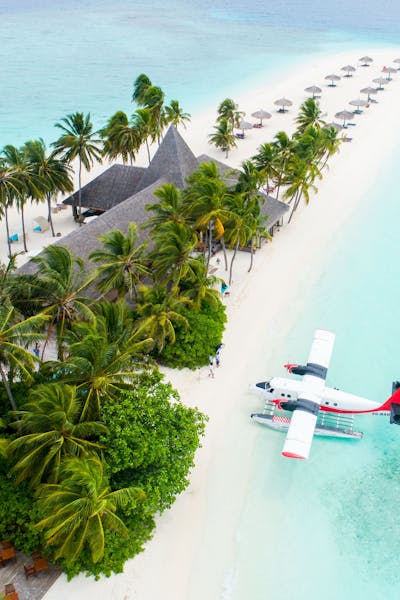
- Browse all Indian Subcontinent
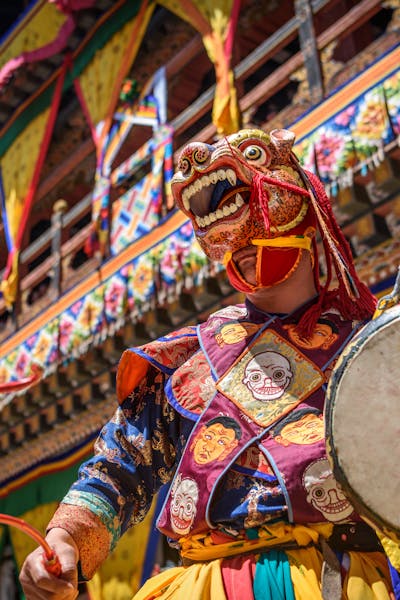
- Ecuador & the Galapagos
- Browse all Latin America
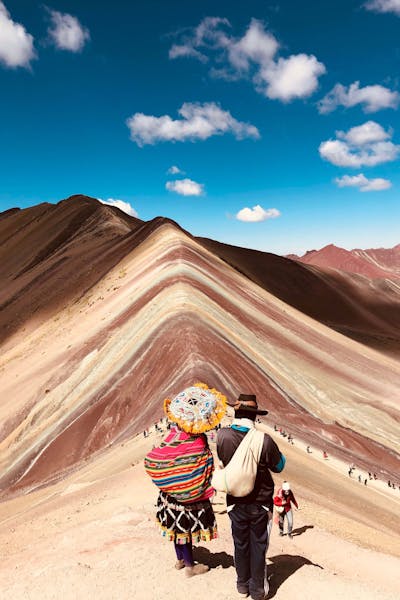
- Browse all Middle East
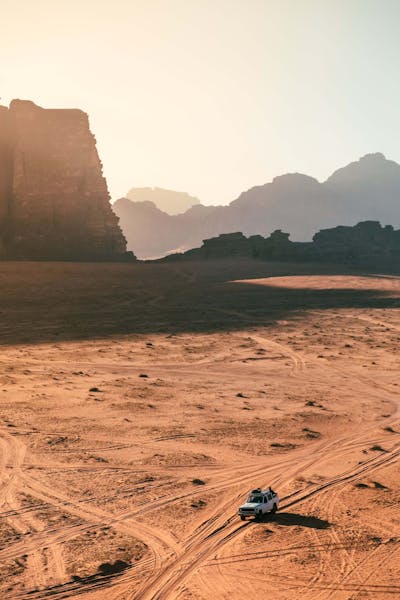
- Browse all North America
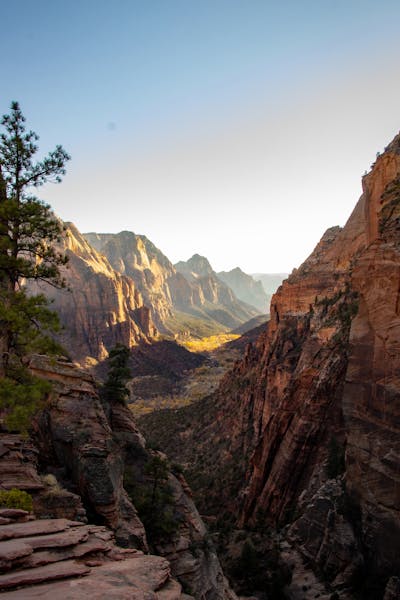
- Browse all South East Asia
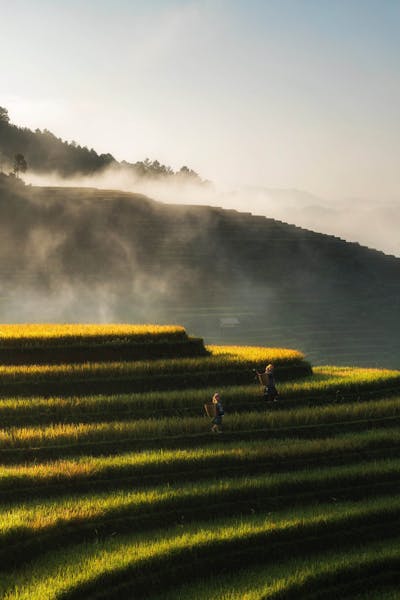
- Browse all South Pacific
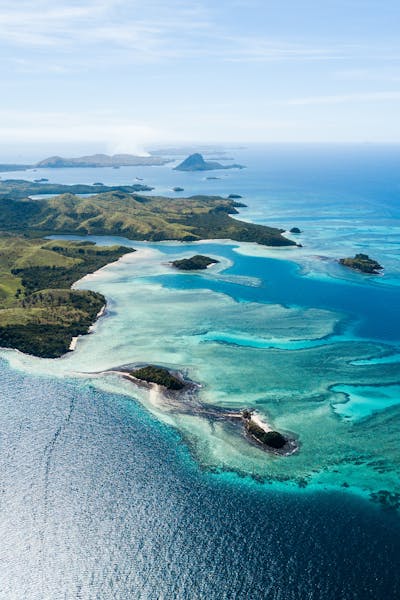
- A-Z destinations
- Our purpose
- 5 reasons to book with us
- Why not just do it yourself?
- How it all works
- Client testimonials
- In the press
Or filter further
Explore our inspiring experiences based on when you want to travel and how you want to feel.
Please, select at least one option.
The 10 best places to visit in Chile
Chile has long been an unsung hero of Latin America – but we’re all for changing that. A country of magnificent contrasts and breath-taking natural beauty, it’s a place that incites the intrepid explorer in all of us. On our ventures, we’ve trekked into the heart of Patagonia’s untamed wilderness and seen the ruby-red terrain of the Atacama transform under the ethereal hues of starlight. We’ve floated over the luscious, rolling vineyards of the Colchagua Valley in hot air balloons and explored the vibrant neighborhoods of its buzzing capital, Santiago. And you can too. That’s why we’ve created this – our detailed guide to the best places to visit in Chile. And you won’t want to miss it.
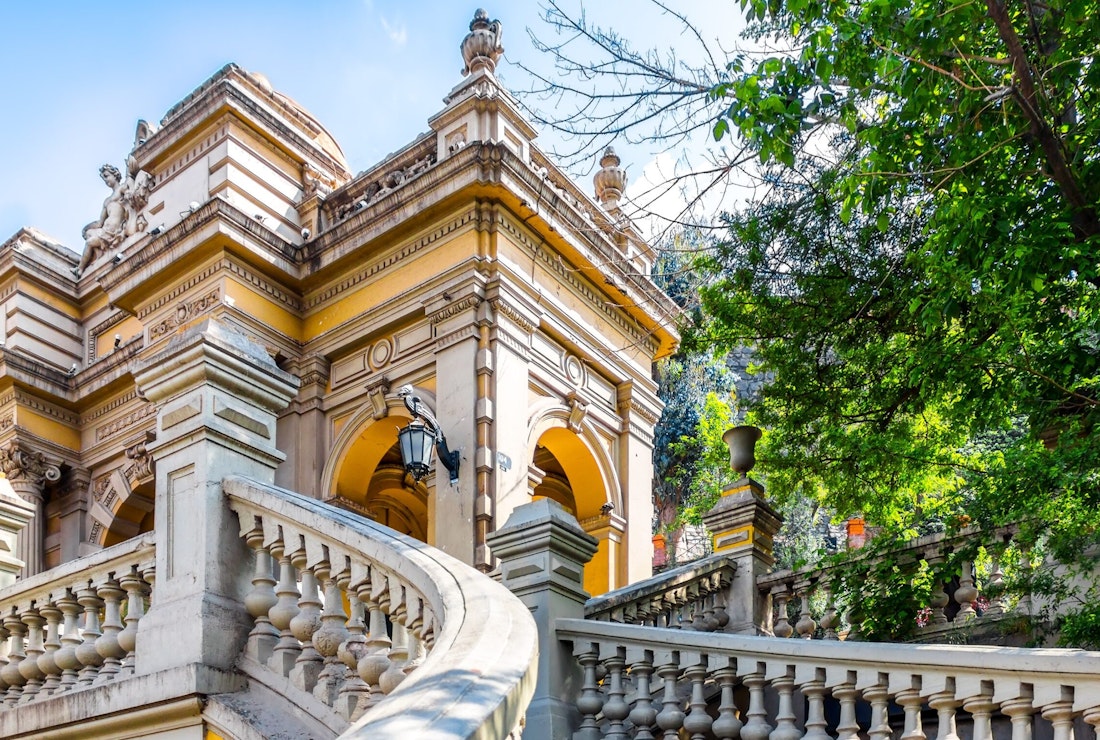
1. Santiago
Chile’s charming capital – Santiago – is a sprawling, bustling metropolis. And the perfect starting point for adventures. Encircled by the snow-smeared peaks of the Andes Mountains and dotted with white-thorned vachellia caven brimming with bright yellow flowers – natural and urban elements intertwine perfectly here. Between striking neoclassical architecture and palm-scattered plazas, we’ll show you the best places to visit in Santiago. Just follow in our footsteps. Or those of our expert guides, at any rate. This is luxury travel in Chile , Black Tomato style.
Things to do in Santiago
Between visiting Cerro Santa Lucia with its glittering fountains and picturesque terraces and marveling at the intricate architecture of Catedral Metropolitana – our private guides will show you the very heart of the city. At Mercado Central, watch as locals haggle for the best Chilean ingredients. Fresh locos (sea snails), creamy chirimoya (custard apples), sweet maqui (Chilean wineberries). Amongst colorful produce-laden stalls, you’ll sample traditional dishes like seafood empanadas at one of the market’s many tucked-away restaurants.
But that’s not all. For unrivalled views of Santiago , we’ll take you to Parque Metropolitano. It’s here that Cerro San Cristobal’s iconic statue resides, reached by a winding stone walkway. By daylight, stood between clear blue skies and luscious greenery. By night, illuminated against a backdrop of darkness and twinkling city lights. It’s no wonder it’s one of the best tourist attractions in Chile. Next up? An evening spent sampling fine Chilean wines – and tasting some delicious Chilean cuisine. Don’t mind if you do.

Where to stay in Santiago
When it comes to the best places to stay in Santiago, we tried to narrow it down to just one. But we couldn’t. So we’ll tell you three instead.
First up, The Singular . This luxurious and tranquil retreat boasts elegant interior design with neoclassical features, soft lighting, and muted tones. Here, surrounded by picturesque churches and fascinating museums, it’s all about peaceful relaxation in the heart of downtown Santiago. Take a dip in the rooftop pool and feel your worries drift away as you look out over the glittering Lastarria neighborhood.
Another? Amid Santiago’s trendy El Centro district lies a beautifully preserved mansion decorated with original stained glass windows. Or Hotel Magnolia , as it’s otherwise known. Perfectly positioned close to all the city’s must-see sights, here you’ll wind your way through beautiful parks and historical monuments before heading up to the hotel’s private rooftop terrace – cocktail in hand. Alternatively, relax with an in-room massage in your private suite, surrounded by elegant art deco touches. Now that’s what we call service.
Encircled by glimmering skyscrapers, luxury boutiques, and its own luscious gardens, one of the most glamorous places to stay in Santiago has to be Mandarin Oriental Santiago . A serene oasis situated in the exclusive neighborhood of Las Condes (and one with its own lagoon-like swimming pool complete with waterfall), this is the perfect place to unwind. With stunning views of the Andes Mountains to the east and San Cristobal Hill to the west, everything is at your fingertips. Opting for the Executive Suite, you’ll have access to your very own spacious outdoor terrace overlooking the city skyline, perfect for watching the sunset – or for enjoying a private dinner beneath the stars. The choice is yours.
If you’d like to stay in one (or more) of these stylish retreats , our luxury Travel Experts will be happy to arrange it as part of your bespoke trip to Chile. Just say the word.
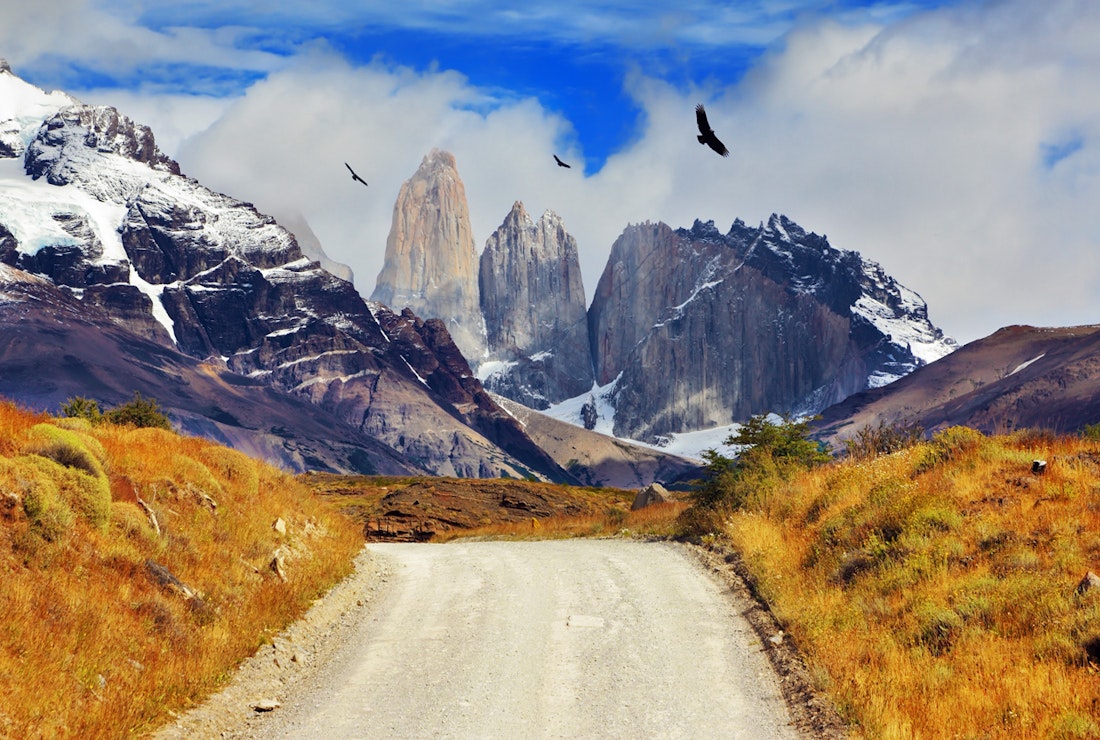
Raring to go?
Whatever it is that’s drawing you to Chile, let us help you make it a truly remarkable trip.
MAKE AN ENQUIRY
2. Torres Del Paine
Where sprawling ice fields meet snow-capped mountains, towering granite spires pierce vast open skies in the iconic Torres del Paine National Park. A breath-taking expanse of wilderness – this is one of the best places to visit in Chile. And every escapist’s dream. Here, you’ll head off the beaten path, tracking pumas and llama-like guanacos – keeping your eyes peeled for a rare sighting of the endangered Andean deer. Horse-riding through mesmerizing landscapes of ice and mighty peaks, you’ll weave your way through luscious valleys adorned with the vivid red flowers of Chilean fire trees.
To top it off, we’ll arrange for you to stay at an exclusive lodge truly at the heart of nature: Explora Patagonia . Perched overlooking the shores of the turquoise-tinted Lake Pehoe, this hidden retreat offers striking views of the Paine ridge and the iconic granite towers. Heading out into astoundingly beautiful landscapes (and the purest mountain air), you’ll hike and horse ride to your heart’s content. What more could you want from a Chilean adventure ? Except, perhaps, an indulgent soak in an open-air jacuzzi. Walk a few steps to the lodge’s Ona Bathhouses, you’ll have that too. Along with mesmerizing views of Lago Pehoe and Macizo del Paine.
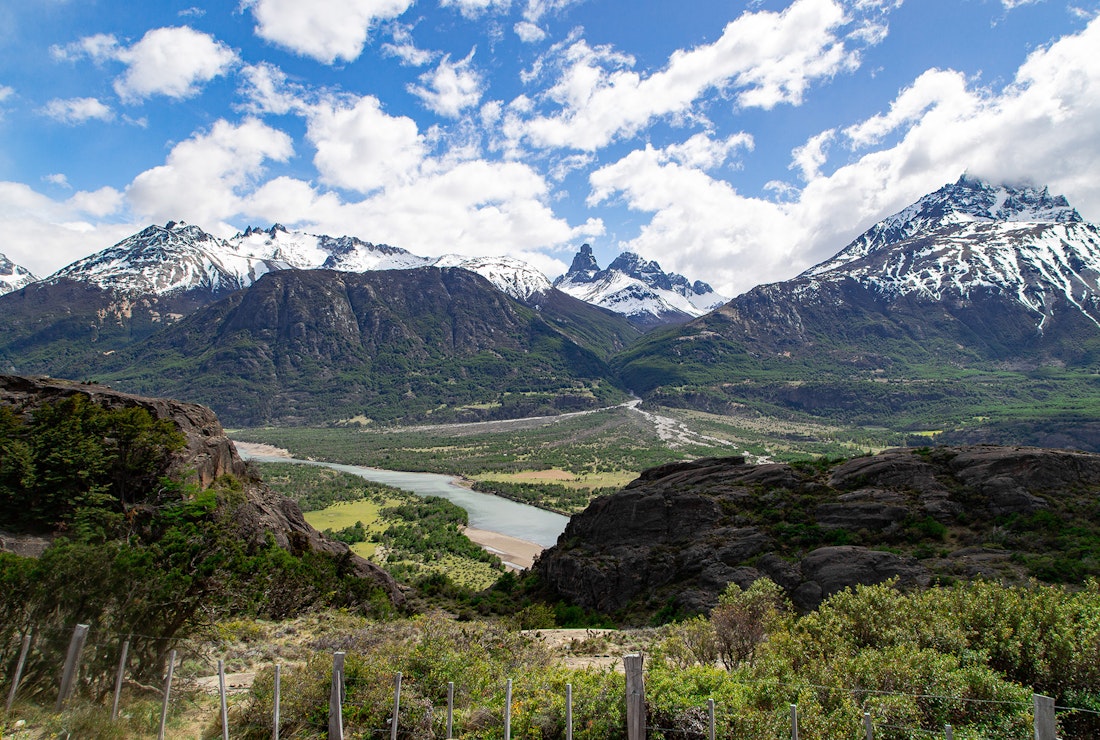
3. Patagonia National Park
Home to glistening lakes, rugged peaks, and glittering glaciers, the untamed wilderness of Patagonia awaits. And with over 750,000 acres of picturesque landscapes, you’ll certainly be spoilt for choice. Here, peaceful remoteness and undisputed beauty go hand in hand in effortless harmony. This is a place for those hearing the call of the wild. We did – and still do. That’s why we sent a few of our team here for some in-depth field research – spending their days in the wilderness, exploring barely-trodden trails flanked by bright blue lagoons and clay-red peaks. One of their favorite activities? The Lagunas Altas full-day trek. It left them breathless – in the best possible way. And you can catch a behind-the-scenes glimpse of their adventures here .
But that’s not all. With the largest private land donation ever to be made by a private entity to a country and the conservation effort of the Tompkins Conservation Foundation, this captivating National Park has recently reached new heights. And you can be amongst the first to pioneer these new wilds . Just ask one of our luxury Travel Experts. They’ll make it happen.
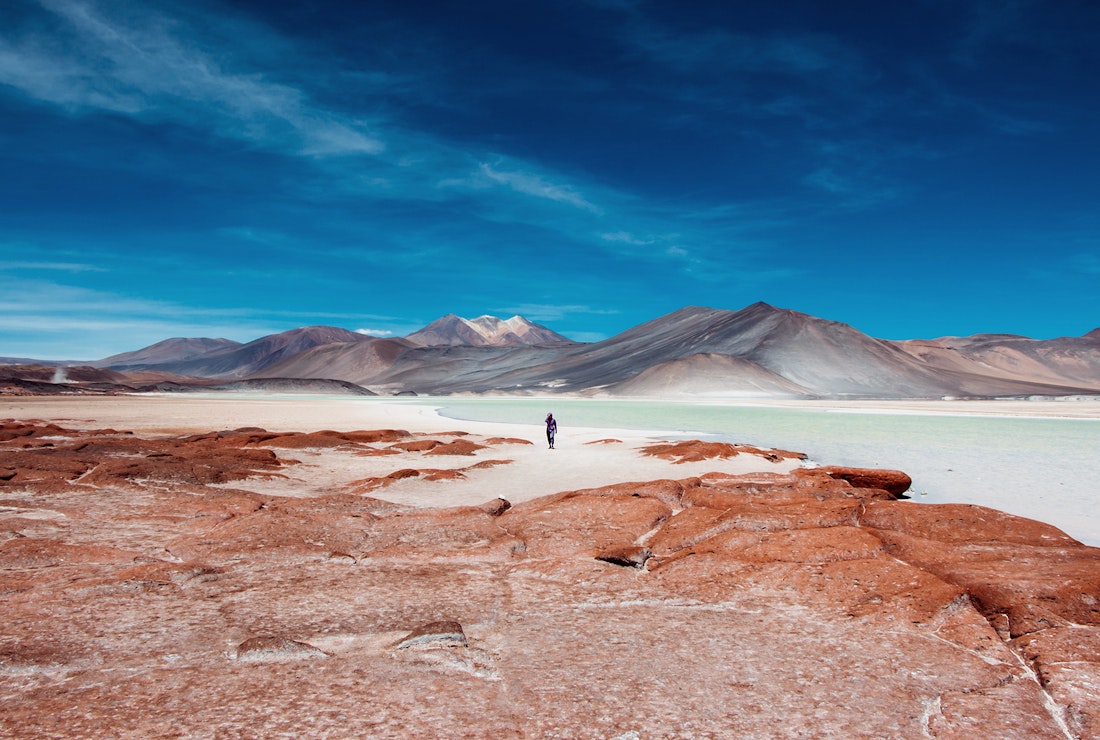
A visit to Chile’s Atacama Desert isn’t quite a trip to Mars – but it’s not far off. Ruby-red sands and dust-coated rocky terrain stretch out before you in endless waves, dotted with steaming thermal pools, deep valleys, and ancient salt lakes. Made up of lunar landscapes peppered with towering cardon cacti and yareta cushion plants – light green bubble-like forms – it really is like landing on the surface of another planet. And yet (rather remarkably) to a wealth of exotic wildlife, this is home. Sand-colored grasshoppers and lava lizards blend with pebbles along the desert floor as red scorpions scuttle by, past the flamingo-filled waters of the salt flats, framed by the rugged peaks of the Andes. Of course, we had to explore this – one of Chile’s top tourist attractions – for ourselves. Yes, it was spectacular. And yes, you should go.
Another one of our favorite things to do in Chile’s Atacama? Stargaze. As night falls, another world comes to life – one of extra-terrestrial landscapes lit by the mesmerizing glow of star-blanketed skies. Shadows and starlight. Glimpses of galaxies far, far away. There’s nothing quite so magical as this.
Due to the high elevation and lack of humidity or light pollution, the desert is also home to ESO Paranal Observatory – a captivating hub of modern astronomy. And as part of your bespoke family trip, we’ll take you behind the scenes. On this Field Trip class, you’ll discover the machinery, research, and workings of this powerful observatory and visit the world’s most advanced optical telescope – perfect for spotting stars and distant planets. This location is also home to another famous place in Chile: the Paranal Residencia. Featuring as a backdrop for the renowned movie – Quantum of Solace – here, on the driest place on Earth, you’ll walk in the footsteps of the ultimate secret agent. James Bond , to be precise.

5. Easter Island
Shrouded in the myths and legends of the Rapa Nui, here ancient monumental statues rise above the vastness of the Pacific Ocean and thousands of wild horses roam free amid low sloping hills. This is Easter Island – one of the most remote inhabited islands in the world. And it’s home to one of the most spectacular tourist attractions in Chile – the moai. Enormous statues carved from solidified volcanic ash, the early Rapa Nui people are believed to have created these iconic heads to honor their ancestors and chiefs. With many of them erected along the coastline, they would watch over the settlements of their descendants with their backs facing the deep, mystical depths of the ocean – the spirit world. Or so the story goes.
On this UNESCO World Heritage Site, the grass-carpeted flanks of extinct volcanoes are peppered with archaeological sites, glistening freshwater lakes form in craters, and volcanic caves create jagged spaces beneath the island’s surface. Let the adventures begin.
We’ll take you hiking up historic hills, cycling past plantations and colorful towns, and relaxing in the shade of palm groves beside the tranquil waters of the Pacific. Winding your way through fields and intriguing archaeological sites, you’ll hike to the Ranu Raraku Moai quarry, where you’ll come face to face with the iconic moai statues. Next up? Climbing Maunga Kuma and Maunga Terevaka – the island’s highest point. From up here, you’ll look out at breath-taking views over the entire island and the glittering Pacific Ocean that extends beyond. It’s a wonder that humanity ever reached this far-flung corner of the world all those years ago. But it’s certainly no wonder why a visit to this beautifully wild island is one of our favorite things to do in Chile. Just say the word, and one of our luxury Travel Experts will make it happen.
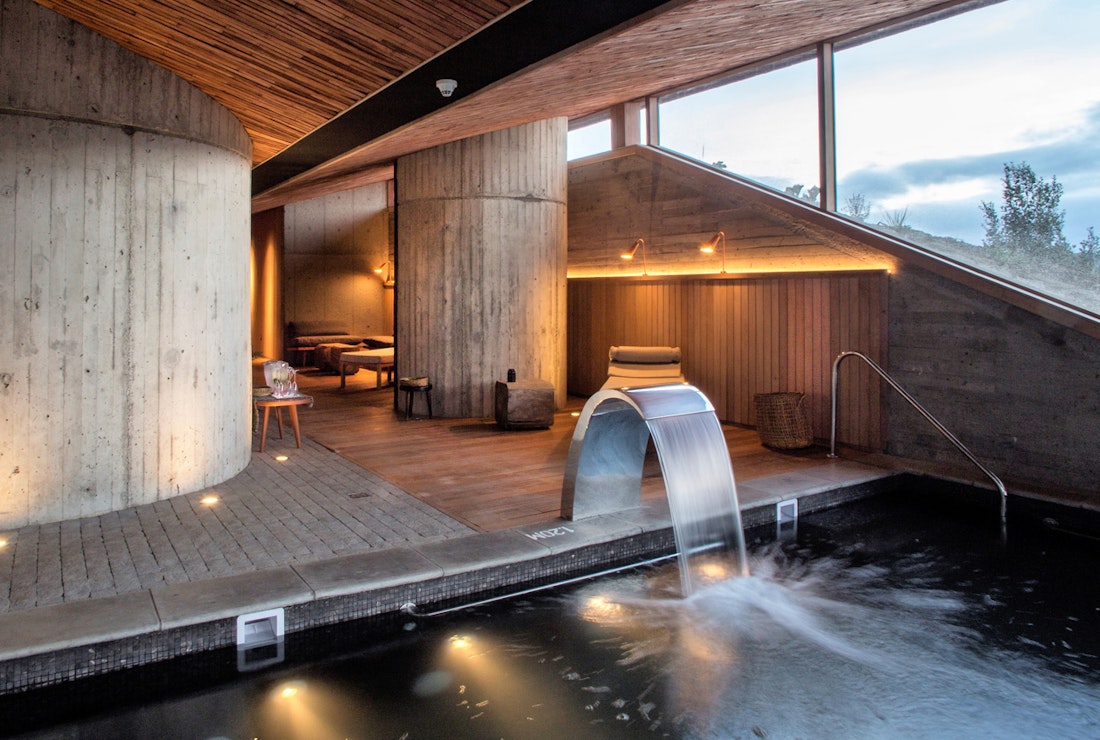
6. Chiloé Archipelago
Off the coast of Southern Chile lies the Chiloé Archipelago. Dusted with luscious forests and rolling hills, this isolated group of islands is the perfect place to do as much (or as little) as you like. Staying at the sleek Tierra Chiloé – an idyllic rural retreat – you’ll have the chance to embark on a range of excursions, dine on delicious Indigenous dishes, and relax in the hotel’s soothing spa.
But that’s not all. Hopping aboard the Williche – Tierra Chiloé’s traditional boat – you’ll explore these fascinating islands to your heart’s content. Sailing past mountains and green-carpeted isles, you’ll come across South American sea lion colonies on rocky outcrops, keeping your eyes peeled for panda dolphins and blue whales as they dip beneath the waves. Feet back on dry land, you’ll explore the vibrant local culture. Weaving your way through the area’s variety of UNESCO World Heritage Sites, you’ll discover picturesque churches and fascinating museums before heading back to the spa for an indulgent massage – or a relaxing soak in the Jacuzzi. The choice is yours.
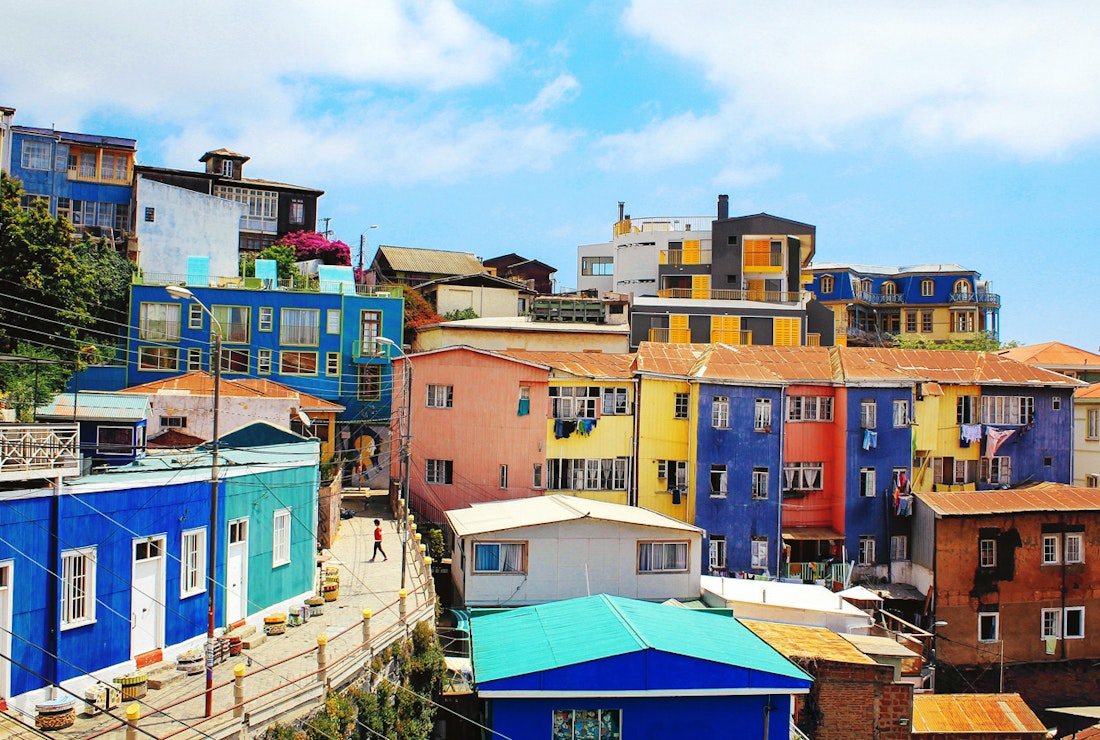
7. Valparaiso
A beautiful seaport city peppered with colorful houses, cobbled lanes, and vibrant street art, the delights of Valparaiso are not to be missed. Here, you’ll instantly feel immersed in the nautical lifestyle as we take you on a private tour around the port before embarking on a private boat ride to marvel at this multihued city from afar. Hiking up to the house of renowned artist, Pablo Neruda, you’ll look out at breath-taking views of the harbor. And then there’s the local cuisine. Amid the architectural beauty of the historic quarter (a UNESCO World Heritage Site), you’ll sample flavorsome Chilean dishes paired with local artisan beers. This is a true taste of South American culture. And you won’t want to miss it. After all, there’s a reason this picturesque city is often called ‘Paradise Valley’.
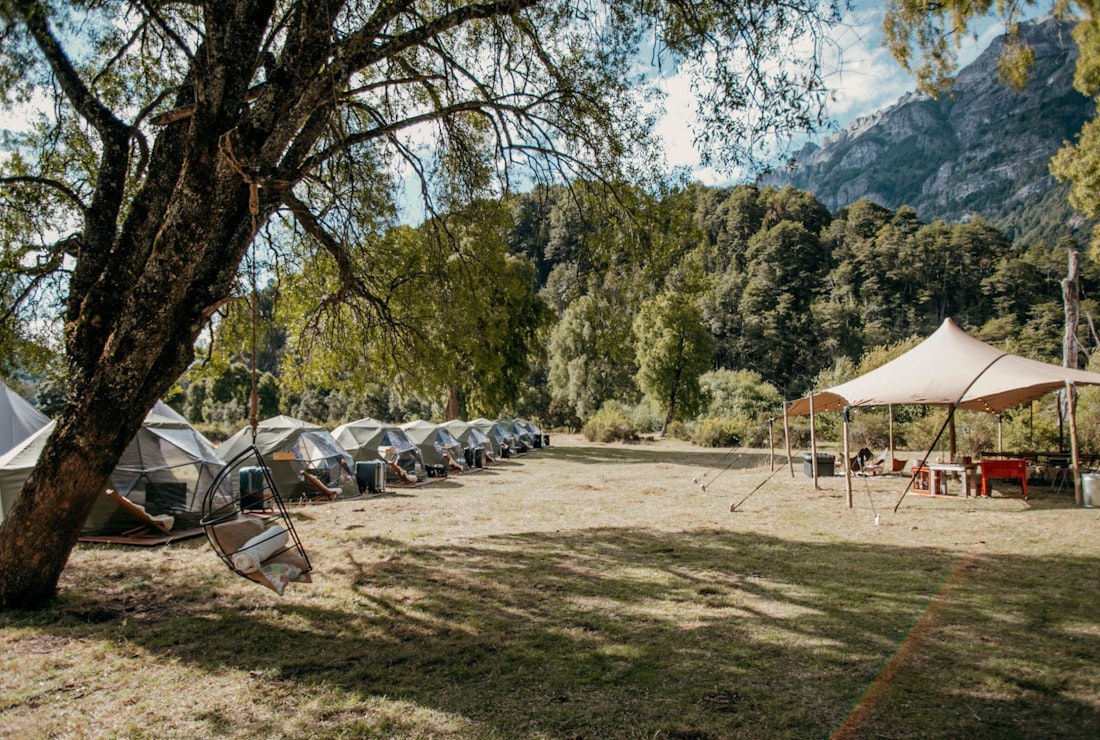
8. Your own private camp
Imagine your own luxury camp in one of the world’s most remote and untouched landscapes. Well, fortunately you don’t have to. This is Blink . With this exclusive service, our luxury Travel Experts will help you design your own fully bespoke pop-up hotel in the midst of breath-taking natural beauty. We’ll build it before you arrive, and then dismantle it once you’ve left. And one thing’s for certain: you’ll experience your own corner of the world in a way nobody else ever has. Or ever will. As they say – blink, and you’ll miss it.
What will your Blink camp include? Whatever you want. An innovative offering of outdoor accommodation and experiences, your tailor-made camp can include everything from private chefs and dining facilities to a mobile spa and on-site masseuse. Sourcing the most comfortable and luxurious ‘tents’ – you’ll feel as if you’re staying in a hotel suite (just one that’ll be taken down once you’ve gone). This is yours – and only yours. Now for the activities. Depending entirely on your tastes and your chosen destination, we’ll arrange an itinerary of activities and events for your whole trip – if you’d like us to, of course. Horse-riding, climbing, skiing, kayaking. The list goes on. Cocktail classes, foraging expeditions, helicopter adventures. And on.
This is luxury travel like never before. And, we may be slightly biased, but staying in one of our Blink camps is one of our favorite things to do in Chile. Whether you choose the surging valleys and towering peaks of Patagonia or the red-dusted landscapes of the Atacama – there’s nothing quite like it.
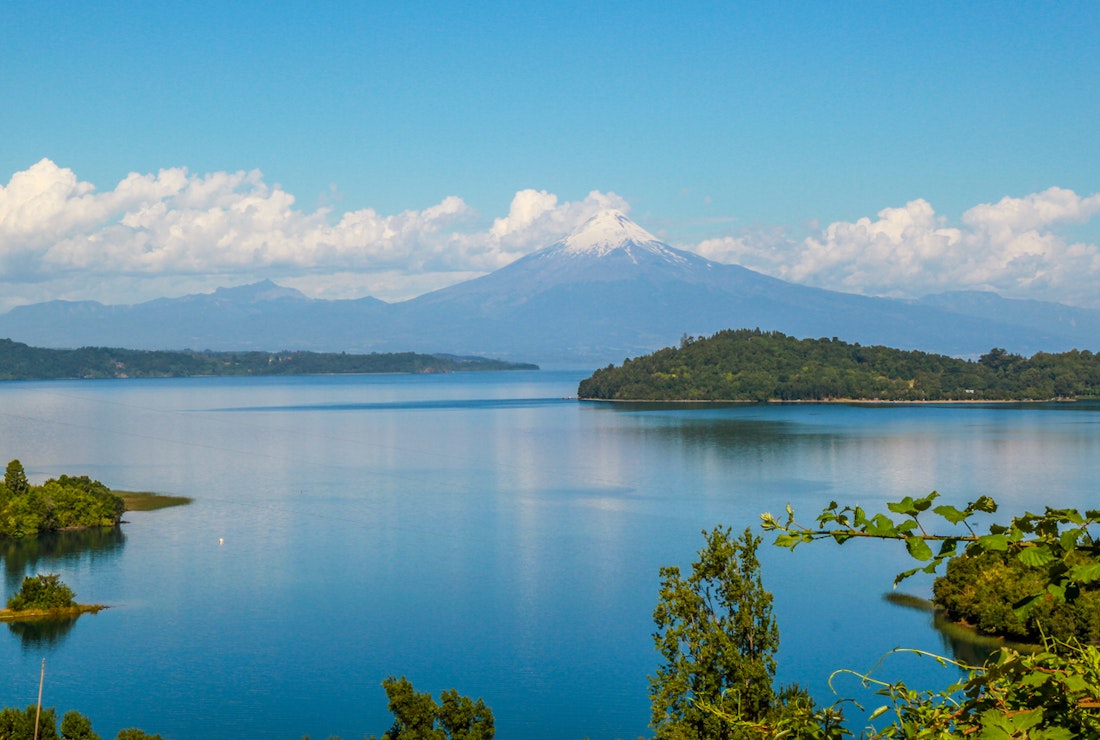
9. The Chilean Lake District
In the Andean foothills of Southern Chile, luscious landscapes are dotted with glittering, emerald-tinted lakes. This is the Chilean Lake District . The perfect place to experience nature at its most pure; at its most rugged and fresh. A haven for cyclists, kayakers, and hikers – and a popular destination for family trips – here, nature-filled adventures and gourmet picnics are the order of the day. Spend the morning cycling beside the magnificent snow-capped Osorno Volcano, kayaking across beautifully clear waters, or hiking up ice-capped mountains. Each day, you’ll enjoy unforgettable picnic lunches amid lush greenery and snow-smeared peaks as you look out onto sun-dappled glacial lakes. Breathing in the crisp, fresh air and the mesmerizing views – this is alfresco dining at its most breath-taking.
For a dash of sweetness, head to the lakeside town of Futrono for a taste of their mouth-watering jams. Made from maqui (Chilean wineberries) found in the surrounding countryside, you’ll savor their sugary and yet slightly tart notes before venturing back out into the Chilean wilds.

10. Maipo Valley
At the foot of the Andes Mountains, sprawling vineyards unfurl in endless waves. This is the Maipo Valley. The birthplace of the Chilean wine industry, this historic wine-producing region boasts over 7000 acres of fragrant, luscious vineyards encircled by snow-capped mountains. And just outside the city of Santiago, we’ll take you to one of our favorites – Viña El Principal. A small family-owned winery, here you’ll discover the perfect combination of climate, soil, and altitude which gives their wines a distinct (and entirely delicious) character. Uncovering the secrets behind Chile’s famous wine production, you’ll taste their finest reds with lunch in the sunshine, surrounded by grape-laden vines waiting to be plucked.
As the closest wine region to Chile’s capital, a visit to this peaceful valley combined with the vibrant streets of Santiago makes for the perfect pairing. Tempted? Speak to one of our luxury Travel Experts and they’ll plan your trip exactly as you’d like it.
Curious about Chile?
Whether you’re dreaming of the ruby-red landscapes of the Atacama, the breath-taking wilderness of Patagonia, or the vibrant streets of Santiago – we can’t wait to hear from you and start planning your trip. Entirely bespoke.
TAKE ME THERE
You might like

I would take the Northwest Passage
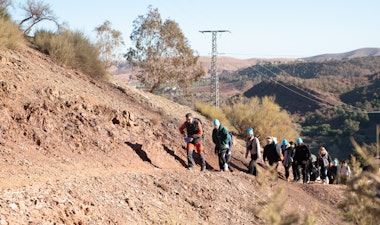
Field Notes from Morocco
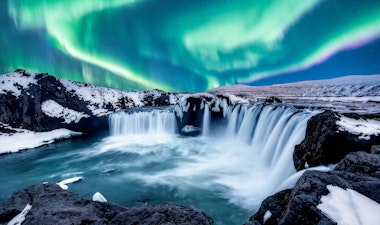
Sophie's Field Notes from Iceland
Giving back in morocco.
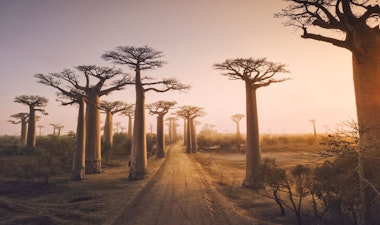
Anthony's field notes from Madagascar
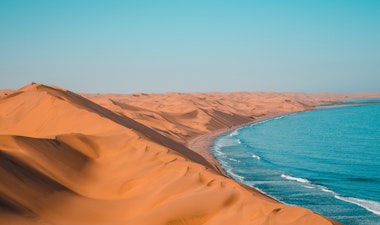
Grace's field notes from Namibia
Put the world in your palm.
Sign up for weekly inspiration curated by our Travel Experts – straight to your inbox, straight from the world of Black Tomato.

8 Incredible Places to Visit in Chile For Your Next Adventure
By Author Steph Dyson
Posted on Last updated: 14th November 2023
Having spent over three years living in Santiago, plus multiple other trips back to Chile where I’ve hitchhiked , road-tripped , and trekked around this country , I think it’s fair to say I know a thing or two about the places to visit in Chile.
As one of the top destinations on the planet for adventurous travelers (and #1 in South America ), there are a plethora of destinations that you really need to discover on your next trip to South America’s skinniest and stunning[ist] country.
Sure, Patagonia and Torres del Paine National Park are a huge draw (and included in this list), but there are so many utterly beautiful places across the country that deserve to be on your itinerary.
So, get ready to be inspired with this list of my eight favorite locations for your next adventure when you travel to Chile – and don’t miss my article about the best things to do in Chile , either!
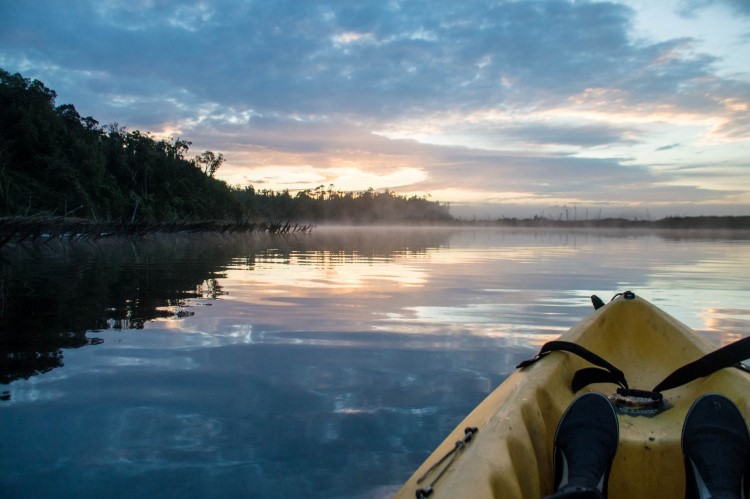
1. Torres del Paine National Park
If you’ve read anything about this country then it should come as no surprise that Torres del Paine National Park comes out at the top of this list of places to visit in Chile.
I first saw the granite spires of this surreally beautiful national park when I hiked the W back in March 2016 and was so enamored that I had to return to complete the Full Circuit or O.
Although I understand that a nine-day hike can take quite a chunk out of anyone’s holiday allocation or backpacking trip in Chile, I strongly recommend that you consider trekking the Circuit rather than the more popular – and very busy – W .
Not only will you get your fill of hanging glaciers, glimmering glacial lakes, and glimpses of guanacos, foxes, and hares, but it’s a genuine adventure that accessible even to those who’ve never embarked upon a multi-day hike before.
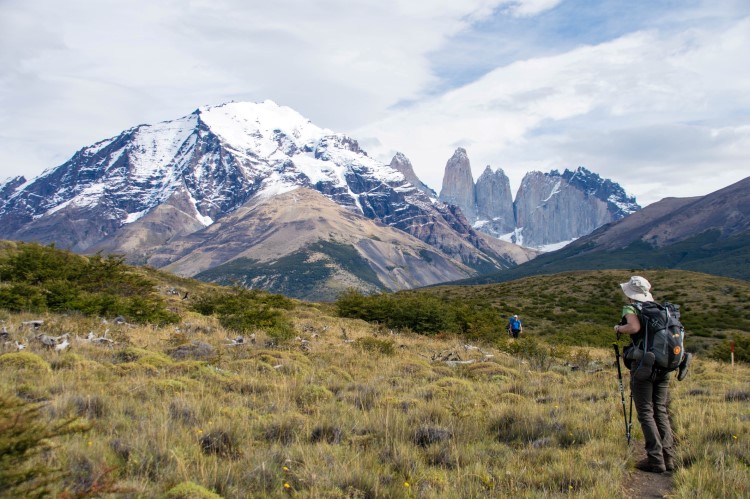
How to get to Torres del Paine National Park from Santiago: Flights from Santiago to Puerto Natales run from the start of December until the end of February with LATAM Airlines . Out of these dates, flights from Santiago to Punta Arenas with LATAM or Sky (two per day, three hours 25 minutes) are your best option.
Where to stay in Puerto Natales: The closest town to Torres del Paine is Puerto Natales, and most travellers stay at least overnight in what has become a surprisingly hip little town. Possibly my favorite hotel in Patagonia (or Chile itself) is Simple Patagonia ($250 USD double) where, on clear evenings, sunsets across the sound are spectacular from its vast windows. Channeling the barns that once populated the region, the buildings are simple, while inside is a modern warm design, with underfloor heating, large tiled baths, and astonishing views from the living and dining area and bedrooms (the best are rooms 8 and 11).
2. Chilean Tierra del Fuego, Southern Patagonia
As adventurous places to visit in Chile go, this is probably the most difficult and rewarding of them all. Tierra del Fuego, the huge island at the far end of Patagonia, is only really visited on the Argentine side, with tourists making their way to Ushuaia and the southernmost city on the planet.
Planning Your Trip to Chile?
Save time, stress & money with a customized travel itinerary planned for you by a Chile expert
But the Chilean half of Tierra del Fuego is a bewitching paradise of soaring, snow-dusted mountains, rusty peat bog, and a huge range of native wildlife that you’re almost guaranteed to see on a trip here.
In March 2017, I took not one but two road trips to the very end of the road at Caleta Maria, powering through windswept landscapes in our rental Landrover and wild camping beside vast, undisturbed lakes. In March 2024, I returned and stayed at the incredible Lodge Deseado (read about my experiences in Tierra del Fuego and how you can visit independently ).
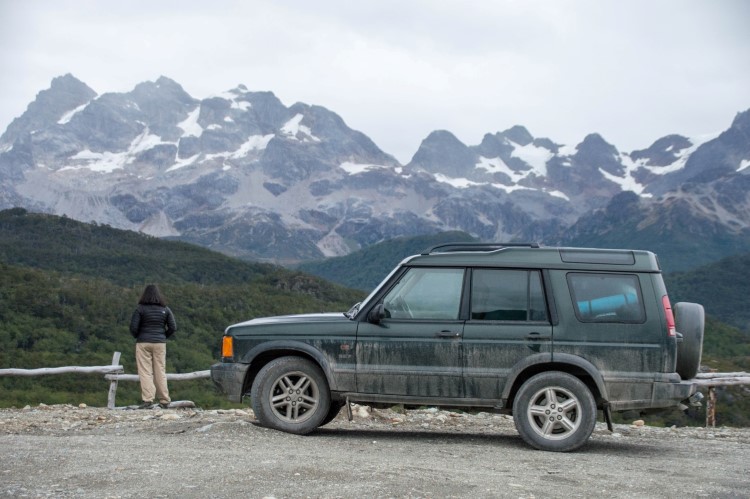
Chilean Tierra del Fuego was truly the most beautiful place I’ve ever been in South America and for adventurous souls, it’s the ultimate place to visit in Chile.
It’s also home to Parque Pingüino Rey , a reserve protecting the 70-or-so-strong colony of king penguins that lives at the shores of Bahía Inútil in Tierra del Fuego and which you can visit as part of an expensive tour from Punta Arenas or by arriving independently.
How to get to Tierra del Fuego from Santiago: Fly from Santago to Punta Arenas and hire a vehicle (a 4×4 isn’t necessary but a car with reasonably high suspension is a good idea) and take the ferry across at Punta Delgada to Tierra del Fuego.
There are plenty of international vehicle rental companies in town, but for the best prices and to book easily in advance (and get insurance documents in English), I always use Rental Cars .
Where to stay in Tierra del Fuego: There is a range of cabañas (cabins) run by local people en route . We stayed in Hosteria Las Lengas (four-person cabin $83,300 CLP ($125 USD), double room $134,470 CLP ($202 USD), reservations [email protected] ) on the shores of Lago Blanco and at Estancia Lago Fagnano (camping (price unknown), four-person cabin $60,000 CLP ($90 USD), contact +61 2 262 366 or +56 9 821 683 88), as well as wild camped in various lake and riverside spots.
3. The Chepu Valley, Chiloé
A growing number of those who travel to Chile head to Chiloé, the island just south of Puerto Montt in the Lakes Region. It’s best known for its rainbow-colored houses on stilts that line the estuary in capital Castro and which are known as palafitos.
Many of these former fishermen’s dwellings have been converted into swish boutique hotels and symbolize the rich culture that makes this island so distinct from the rest of Chile.
You’ll also see this singular identity in the equally quirky wooden churches dotted around the island. 150 were built by the Jesuits in the early 1600s with the help of the Chilote people, with the remaining 60 – many in pastel hues – a curious representation of the island’s boatbuilding and religious heritage. 16 have also been designated UNESCO World Heritage sites to reflect their distinctive cultural importance.
Beyond the architecture, Chiloé is a place of unique food (try curanto, a seafood and potato stew cooked underground) and untouched natural landscapes.
While Parque Nacional Chiloé is the most visited, my personal favorite is the astoundingly beautiful and wildlife-rich Chepu Valley.
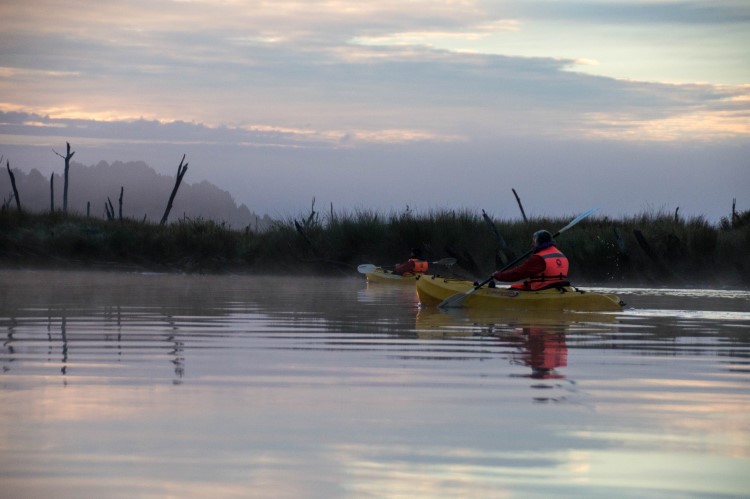
Here, I kayaked at dawn through the jet-black boughs of a forest that sunk beneath the waters of Río Puntra after a 9.3 magnitude earthquake – the largest ever recorded – ripped through the island, causing the whole of Chiloé to drop 1.5m.
You might even spot Southern river otters in these silent waters, and while I failed to do so, I did manage to catch a glimpse of a whole family of pudú, one of the smallest deer species in the world.
Unfortunately, the lodge that used to offer these tours has since shut down, so your best option is a tour from nearby Ancud. The area also has one of the most beautiful coastlines I’ve seen in Chile, so it’s well worth the wander down to the beach.
How to get to the Chepu Valley from Santiago: Sky and LATAM both fly to Puerto Montt (five per day, one-hour 45 minutes, from where you need to take a bus to Puerto Montt bus station to get connecting transport to Ancud.
From here, public buses leave on Mondays, Wednesdays, and Fridays to Chepu (check at the bus station for the exact times in the morning and afternoon). Alternatively, you can take a taxi directly to Chepu or get dropped off at KM 25 on the road towards Castro and hitchhike from there.
Where to stay in the Chepu Valley: On the western shores of Lago Cucao in the southwest of the island, Palafito Cucao Lodge ($130 USD double, two-night minimum) is one of my favorite places to stay in Chile. The building mimics a traditional wooden-shingled palafito, with a stylish living room and wraparound terrace over the lake, where you may spot an otter meandering through the waters. It’s also just a short distance from Parque Nacional Chiloé , which is home to a number of short hiking trails and outstandingly beautiful beaches.
4. The Carretera Austral, Northern Patagonia
This 1,240km stretch of mostly unpaved road makes for one of the most exciting ways of traveling in Chile: road-tripping. Depending on your Chile travel itinerary, you can start the Carretera Austral at its northern tip from Puerto Montt or at its southernmost town, Villa O’Higgins.
In reality, most rent a vehicle in the former (just check the T&Cs to ensure you can take it on the Carretera Austral) and drive through the glacial and forested landscapes of northern Patagonia, stopping at Carretera highlights such as the Queulat Hanging Glacier, the Enchanted Forest, the San Rafael Glacier, and the Marble Caves.
You can also hire a car in Balmaceda, an airport halfway down the Carretera Austral.
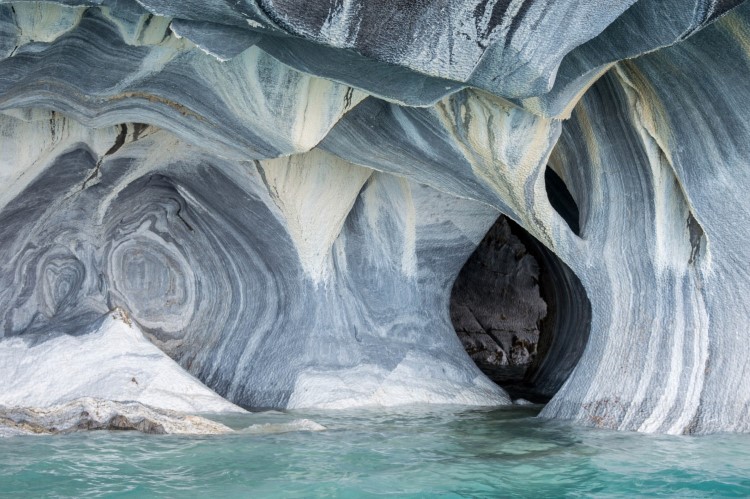
For those with even more adventurous tendencies, travel in Chile wouldn’t be complete without hitchhiking the Carretera Austral, a both safe and highly recommended way of seeing Patagonia.
You’ll need to allow yourself more time as it’s never guaranteed that you’ll get hitch, and also to pack a full set of camping equipment (check out my recommended packing list for Patagonia for suggestions ) just in case you get stuck in the middle of nowhere and have to pitch up in a spellbindingly beautiful part of Patagonia – what a shame!
How to get to the Carretera Austral from Santiago: Sky and LATAM both fly to Puerto Montt (five per day, one-hour 45 minutes). Alternatively, the Navimag ferry leaves Puerto Montt and sails to Coyhaique, about halfway along the Carretera Austral two times per week during the Austral summer.
Where to stay along the Carretera Austral: There are plenty of places to stay en route . Check out this complete guide to the Carretera Austral for all my recommendations.
5. Puerto Varas, The Lakes Region
Puerto Varas has long been one of the favorite places to visit in Chile for travelers, not only because this small city has an incredible lakeside location and is overlooked by the snowy cone of Volcán Osorno, but it’s also a short distance away from a whole host of hikes and activities.
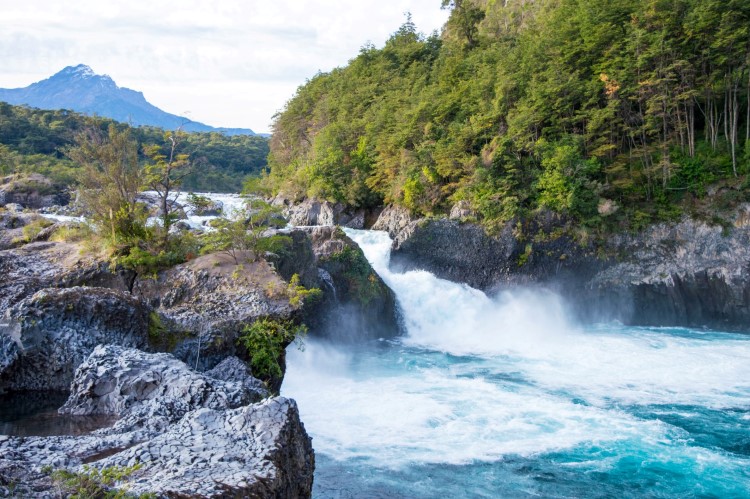
One option is to summit the volcano using a tour, but if you’re on a smaller budget, you’re better off renting a car from town and driving up to the end of the road near the top of the volcano, from where it’s possible to ride the cable car even higher.
At the top of the cable car, you can hike to the red crater which has stupendous panoramic views of the surrounding landscape.
Nearby, there’s also the Saltos de Petrohue, a set of gushing waterfalls that spill over ancient lava flows and the tiny village of Petrohué where you can walk along the beach beside Lago Todos Los Santos and even pay a small amount for a short boat trip around the lake.
How to get to Puerto Varas from Santiago: Sky and LATAM both fly to Puerto Montt (five per day, one-hour 45-minutes) and from there, it’s a short bus journey to the bus station and then 20 minutes via local minibus to Puerto Varas. Buses from Santiago also leave for Puerto Varas, taking roughly 13 hours.
Where to stay in Puerto Varas: Both times that I’ve travelled in Chile to Puerto Varas, I’ve stayed in Compass del Sur (dorm $14,000 CLP ($17 USD), double room $39,000 CLP ($46 USD)). They have huge, comfortable rooms and their breakfast is awesome!
6. The Atacama Desert, Norte Grande
Sky-piercing volcanoes combine with record-breaking geyser fields and a sprinkling of flamingos in the Atacama Desert, one of the most popular destinations for foreign tourists and one of the truly unmissable places to visit in Chile.
At over 2,400m above sea level, the Atacama Desert is breathtaking in both senses of the word and also one of the top places on the planet for stargazing thanks to an average of over 200 cloudless nights per year.
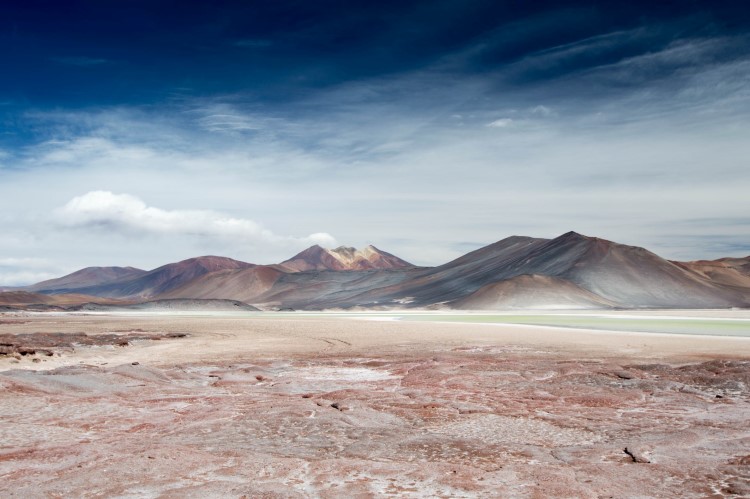
But while a trip to this high-altitude region of desert and salt flats is always going to be memorable, one way to ramp up the adventure is by hiring a car and heading out into the Atacama Desert under your own steam.
Not only will this save you a lot of cash, but it means that you can adapt your itinerary and reach places such as the Piedras Rojas – a strange formation of lava flow from one of the many surrounding volcanoes – which was my personal highlight.
How to get to the Atacama Desert from Santiago: Seven flights per day leave from Santiago to Calama (two hours 10-minutes), after which it’s a one-and-a-half-hour bus journey to San Pedro de Atacama, the oasis town at the heart of the desert.
Where to stay in the Atacama Desert: I stumbled upon Ckuri Atacama ($48,000 CLP ($78 USD) double) online and this is definitely the nicest place you will find in San Pedro. They only have three rooms and it’s best if you’re a couple (they’re only double rooms), but they all include a bathroom with shower, a large double bed and a small dining area with fridge, cutlery, and plates.
7. Valdivia, The Lakes Region
This small university city in the Lakes Region isn’t one of the places to travel in Chile for adventure per se , but given that so few tourists ever make it here, part of Valdivia’s appeal is that you feel like you’ve made it some truly away from the crowds.
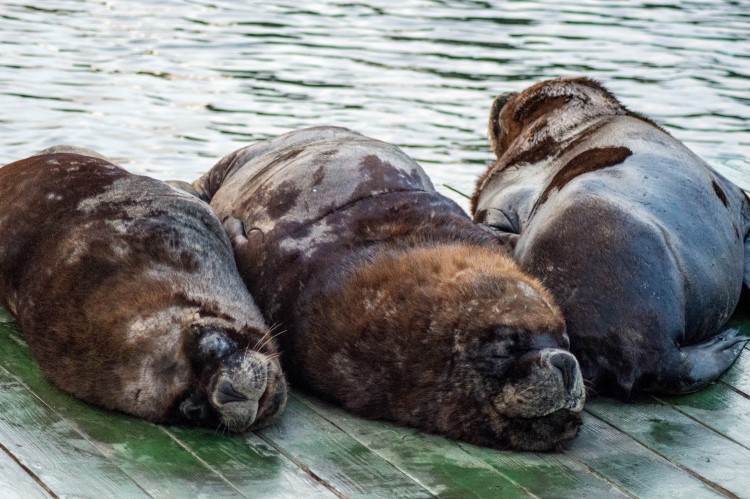
That said, there’s plenty of room for an adventure in Valdivia, which is best known by Chileans as the beer capital of the country, thanks in large to the German heritage of many of its residents.
Brewing giant Kunstmann is based here and you can even do a tour of its factory (something I’ve heard compared to a trip to Disney Land – so you may want to give it a miss), but there’s a range of tiny, craft breweries and brilliant bars selling all the local brews (a particular favorite was El Growler ).
What’s more, the resident sea lion colony that lives at the fish market is more than worth the trip to Valdivia alone – particularly as you’ll likely see a fearless local dog attempting to have a standoff with an equally fearless sea lion…
Outside of town, you can take a bus to nearby Niebla where tiny motorboats transport you across to the ruined Spanish fortifications on Isla Mancera and Corral or you can enjoy the museum at Fuerte Nieble with its commanding views across the bay.
How to get to Valdivia from Santiago: It’s a ten-hour, overnight bus from Santiago to Valdivia with a number of companies offering the route. You can also take a 3-and-a-half-hour bus from Puerto Montt.
Where to stay in Valdivia: We stayed in the incredible Airesbuenos Hostel (dorms $12,000 CLP ($16 USD), double $32,000 CLP ($51 USD)), which has a beautiful outdoor space, huge comfortable bedrooms and a really great breakfast.
7. Pucón , The Lakes Region
For many, Pucón is the ultimate destination for adventure travel in Chile, with the main highlight being the fact that you can ascend to the peak of Volcán Villarrica, an active, 2,847m stratovolcano that presides over the town and the whole area.
One of the major draws of hiking to the top is the lava lake found within the volcano’s crater and which can be seen spitting lava in the months of February and March when it’s most active.
Luckily, it hasn’t erupted for two years, when it spewed lava and ash into the air and over 3,000 people were evacuated.
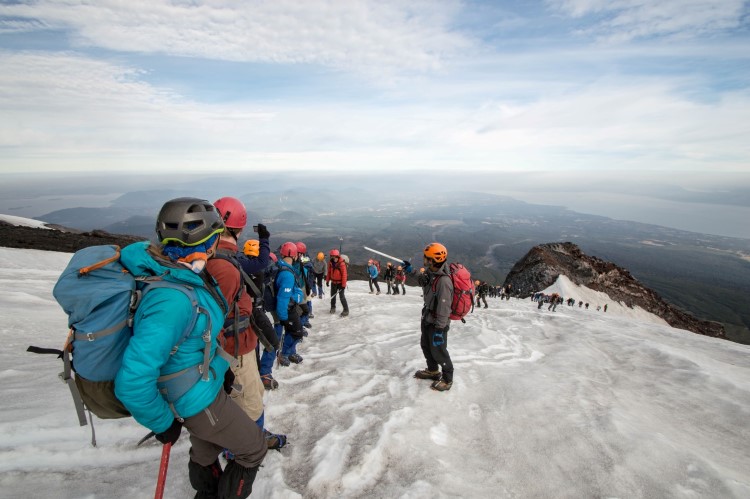
But the real fun comes when you make your way down, sliding on your posterior as far as the snow will take you.
Although you’re unlikely to see the lava if you visit in October or November, you’ll definitely end up sliding down the volcano a lot further (and walking a lot less) than we did when I was there in March.
In and around Pucón there are also a wealth of hiking trails with sensational views in Parque Nacional Huerquehue, kayaking and rafting opportunities on the nearby Río Trancura, and a load of hot springs that are best visited at night so that you can relax in a geothermal pool beneath a shimmering sky of stars.
How to get to Pucón from Santiago: Most visit Pucón as part of a trip towards Santiago from Patagonia as it’s around five hours by bus to Puerto Varas and Puerto Montt. However, it’s possible to take an 11-hour overnight bus from Santiago directly to Pucón.
Where to stay in Pucón: Pucón is known as Chile’s capital of adventure and, while it’s a firm favorite with the backpacking set, if you’re looking for a high level of comfort than a hostel, there are plenty of options – although you will need a car to access the best. Rakau Lodge ($275 USD double) sits comfortably within this category. This sensitively-designed property is surrounded by forest and so is the ideal place for relaxation – particularly after a busy day of hitting the trails in nearby Parque Nacional Huerquehue. It’s worth upgrading to the villa for your own private terrace surrounded by the peaceful sounds of the forest.
Saturday 23rd of September 2023
Spent 2 months traveling Chile about 15 years ago…went everywhere by Guide and public transportation. Stayed with families and camped. Chile is a gorgeous country in all aspects! Thanks for the reminder
Steph Dyson
Thursday 23rd of November 2023
Thanks Judi!
Friday 8th of September 2017
Thanks Steph for the great information! I am going to some of these places next month!
Monday 11th of September 2017
Thanks Mark! And you'll have such a great time - enjoy!
Must-see attractions in Chile

Parque Nacional Patagonia
Northern Patagonia
Dubbed as the Serengeti of the Southern Cone, the 690-sq-km Parque Nacional Patagonia features Patagonian steppe, forests, mountains, lakes and lagoons…
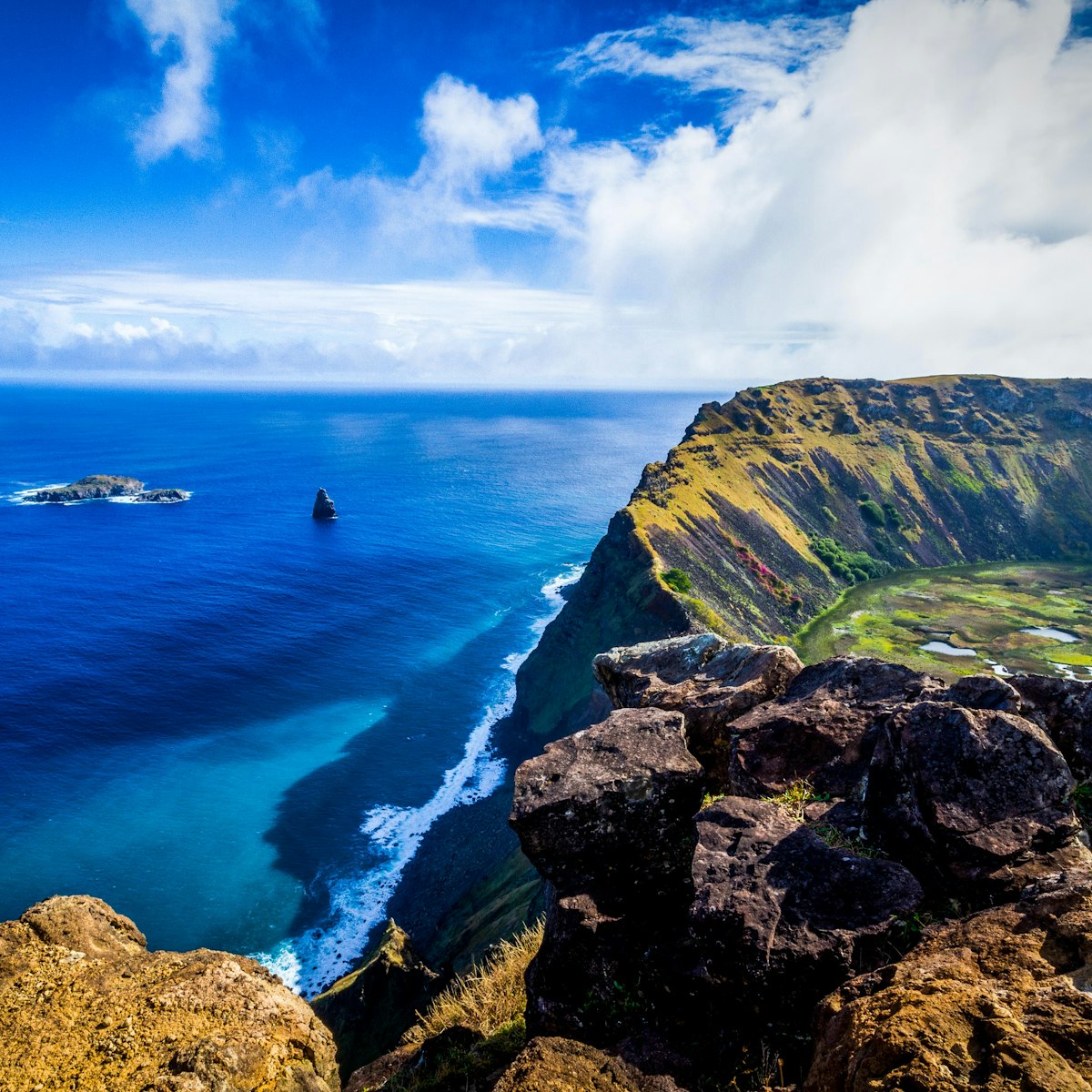
Orongo Ceremonial Village
Rapa Nui (Easter Island)
Nearly covered in a bog of floating totora reeds, the crater lake of Rano Kau resembles a giant witch's cauldron and is a wild greenhouse of endemic…

Rano Raraku
Known as 'the nursery,' the volcano of Rano Raraku, about 18km from Hanga Roa, is the quarry for the hard tuff from which the moai were cut. You'll feel…

Ahu Tongariki
The monumental Ahu Tongariki has plenty to set your camera's flash popping. With 15 imposing statues, it is the largest ahu ever built. The statues gaze…

Centro Gabriela Mistral
This striking cultural and performing-arts center – named for Chilean poet Gabriela Mistral, the first Latin American woman to win the Nobel Prize in…

Beach bums in search of a place to wallow will love this postcard-perfect, white-sand beach. It also forms a lovely backdrop for Ahu Nau Nau, which…

Casa de Isla Negra
Middle Chile
The spectacular setting on a windswept ocean headland makes it easy to understand why Isla Negra was Pablo Neruda’s favorite house. Built by the poet when…

Cerro San Cristóbal
The best views over Santiago are from the peaks and viewpoints of the Parque Metropolitano, better known as Cerro San Cristóbal. At 722 hectares, the park…
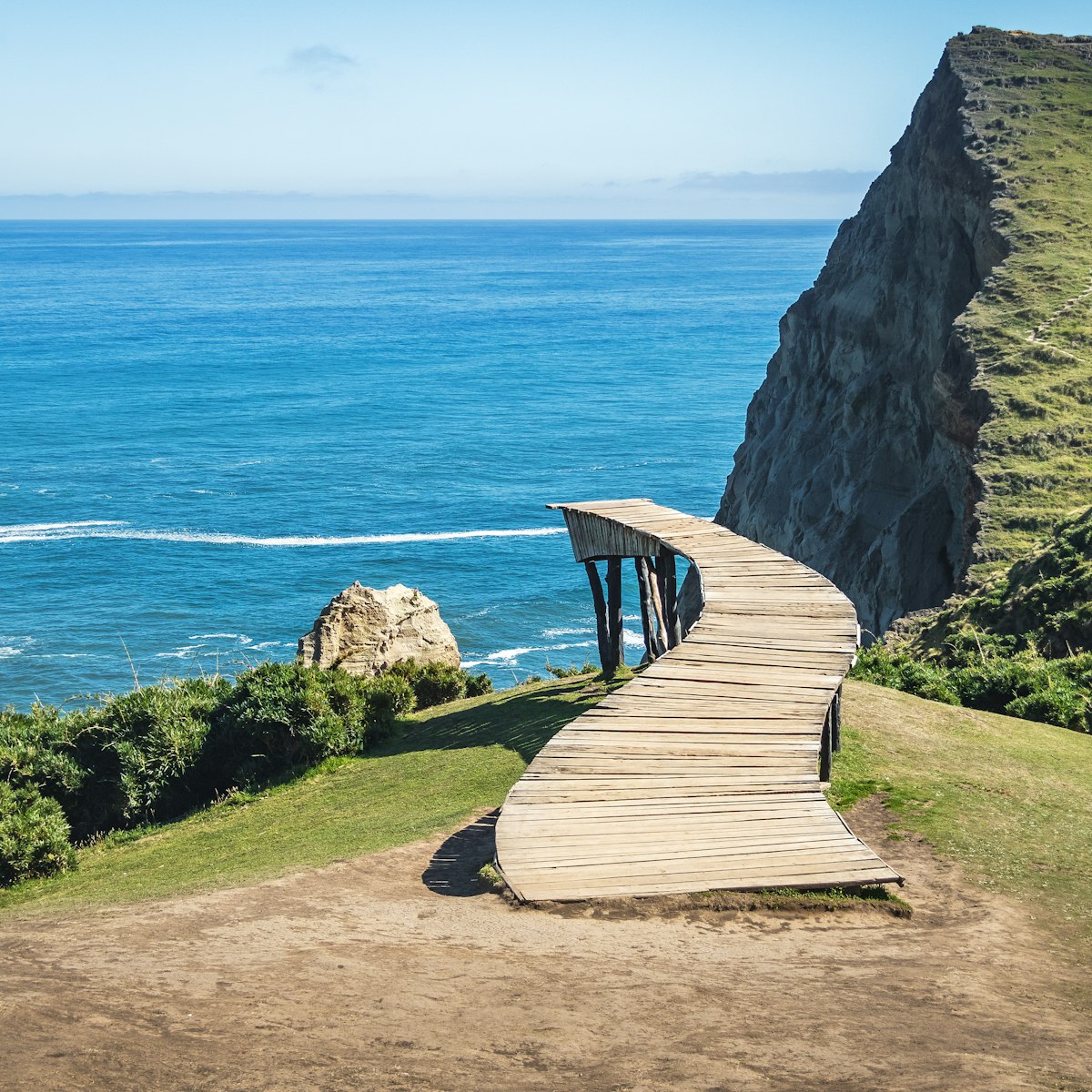
Muelle de las Almas
Shrouded in folklore and Huilliche mythology, Chiloé's 'Dock of Souls' was built in 2007 by architect Marcelo Orellana. The curved boardwalk spans 17m…
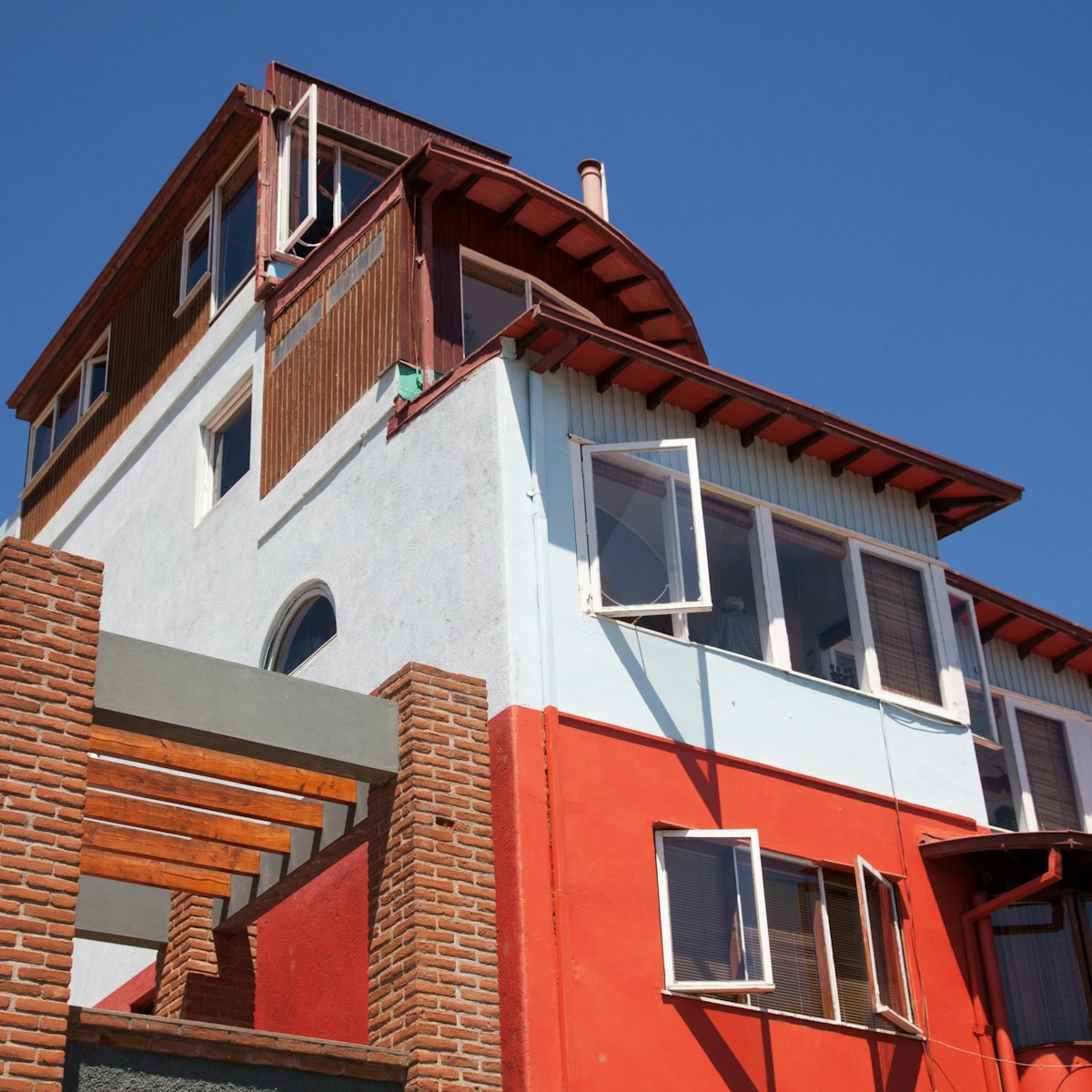
La Sebastiana
Bellavista's most famous resident writer was Pablo Neruda, who made a point of watching Valparaíso's annual New Year's fireworks from his house at the top…
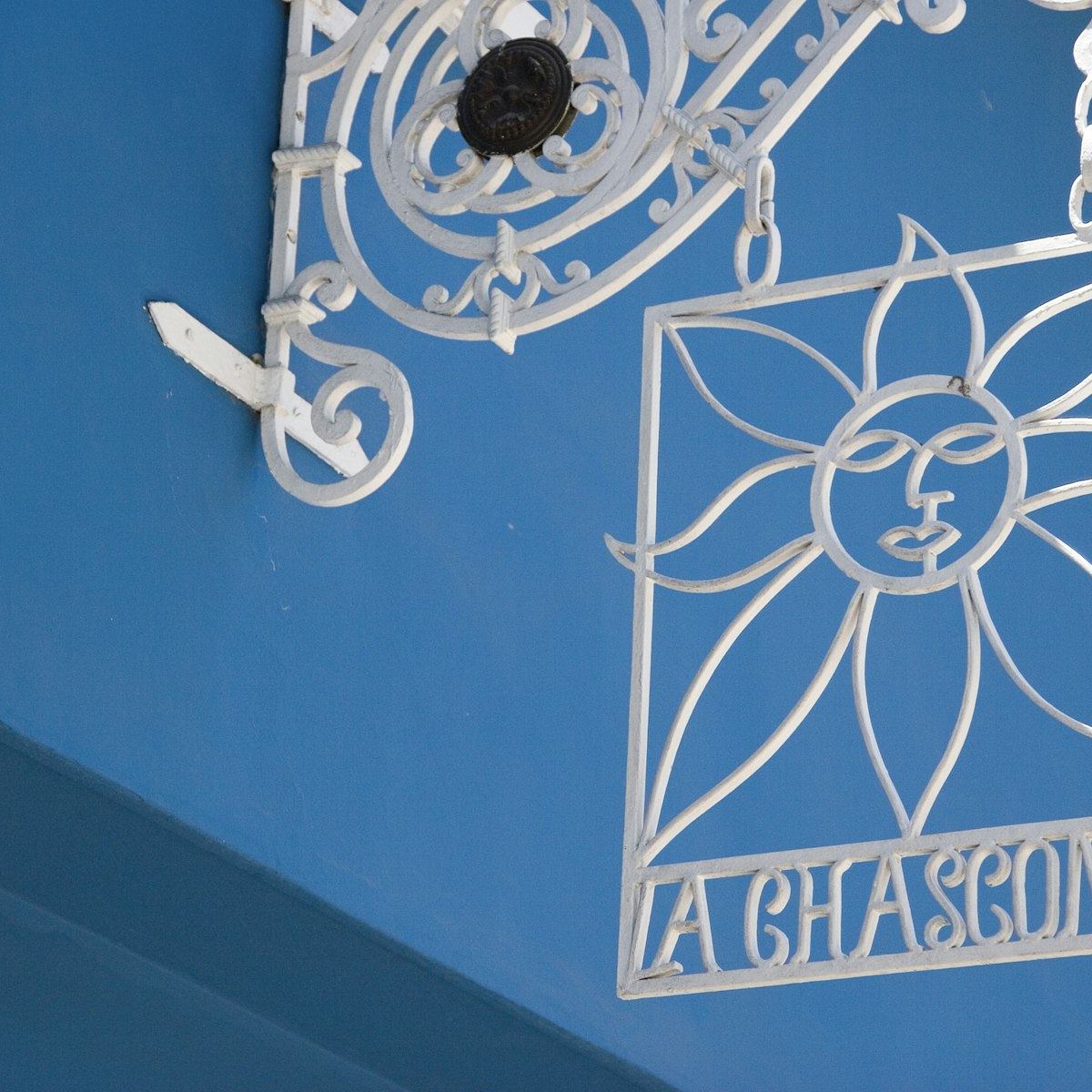
La Chascona
When poet Pablo Neruda needed a secret hideaway to spend time with his mistress Matilde Urrutia, he built La Chascona (loosely translated as 'Messy Hair')…
Mina San José
Norte Chico
In 2010, 33 miners were trapped more than 700m underground after a devastating collapse within the mountain where they'd been working. Following a…
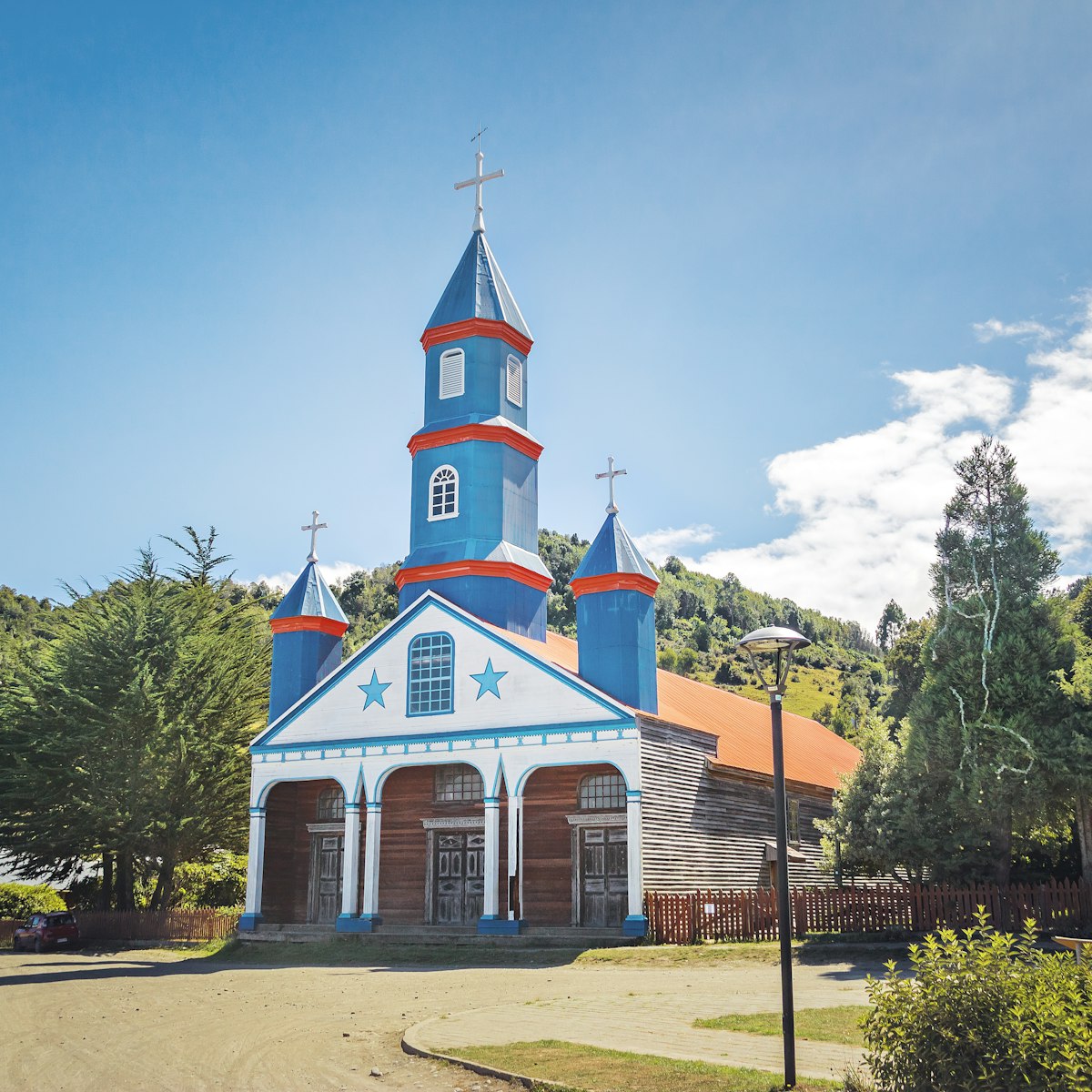
Iglesia de Nuestra Señora del Patrocinio
The magnificent Unesco-listed church (1837), for which the town is named (Tenaún means 'three mounts') has been meticulously restored down to the last…
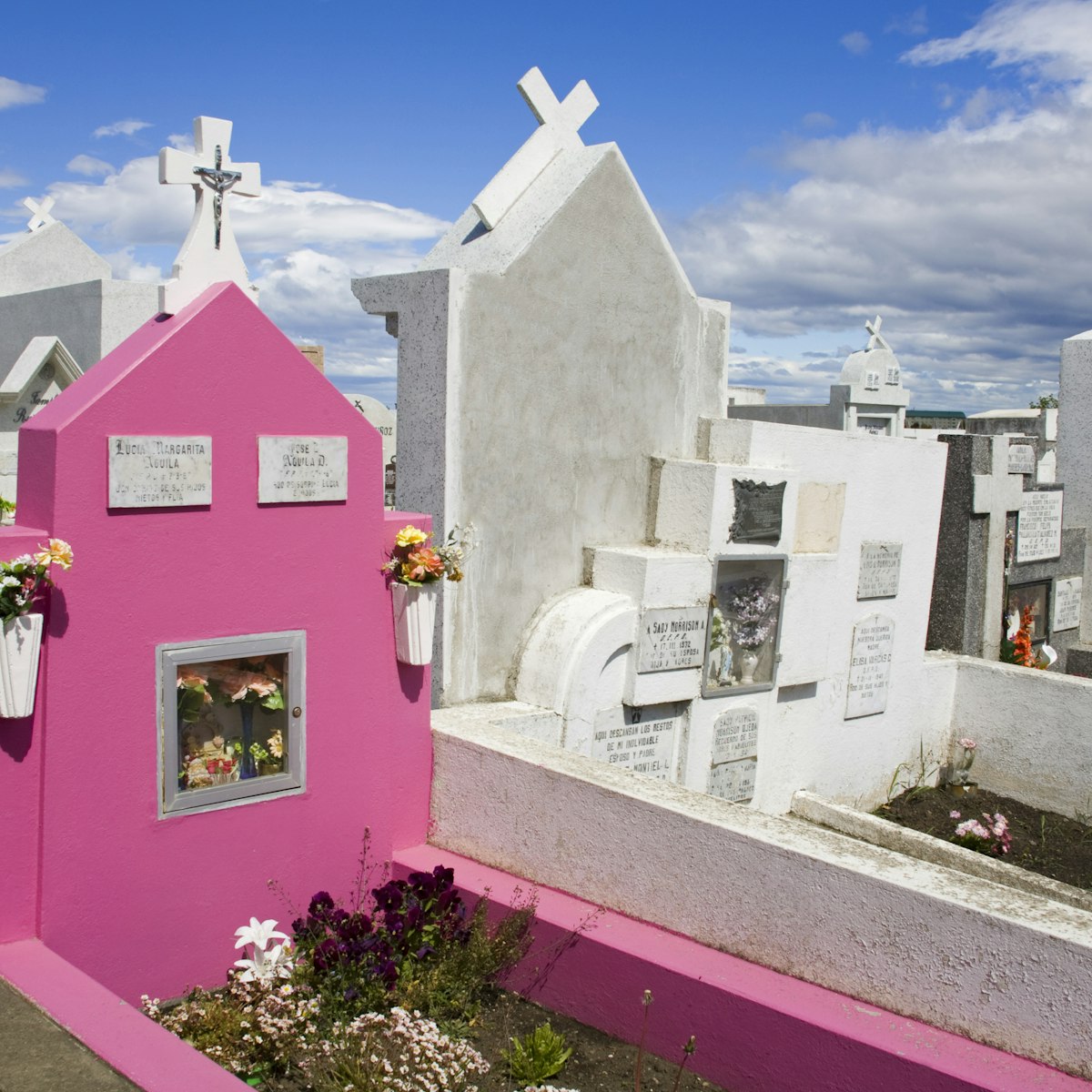
Cementerio Municipal
Punta Arenas
Among South America’s most fascinating cemeteries, with both humble immigrant graves and flashy tombs, like that of wool baron José Menéndez, a scale…

Iglesia Santa María de Loreto
Achao's 18th-century Jesuit church, on the south side of the Plaza de Armas, is Chiloé's oldest (1740). Crowned by a 25m tower, the World Heritage site…
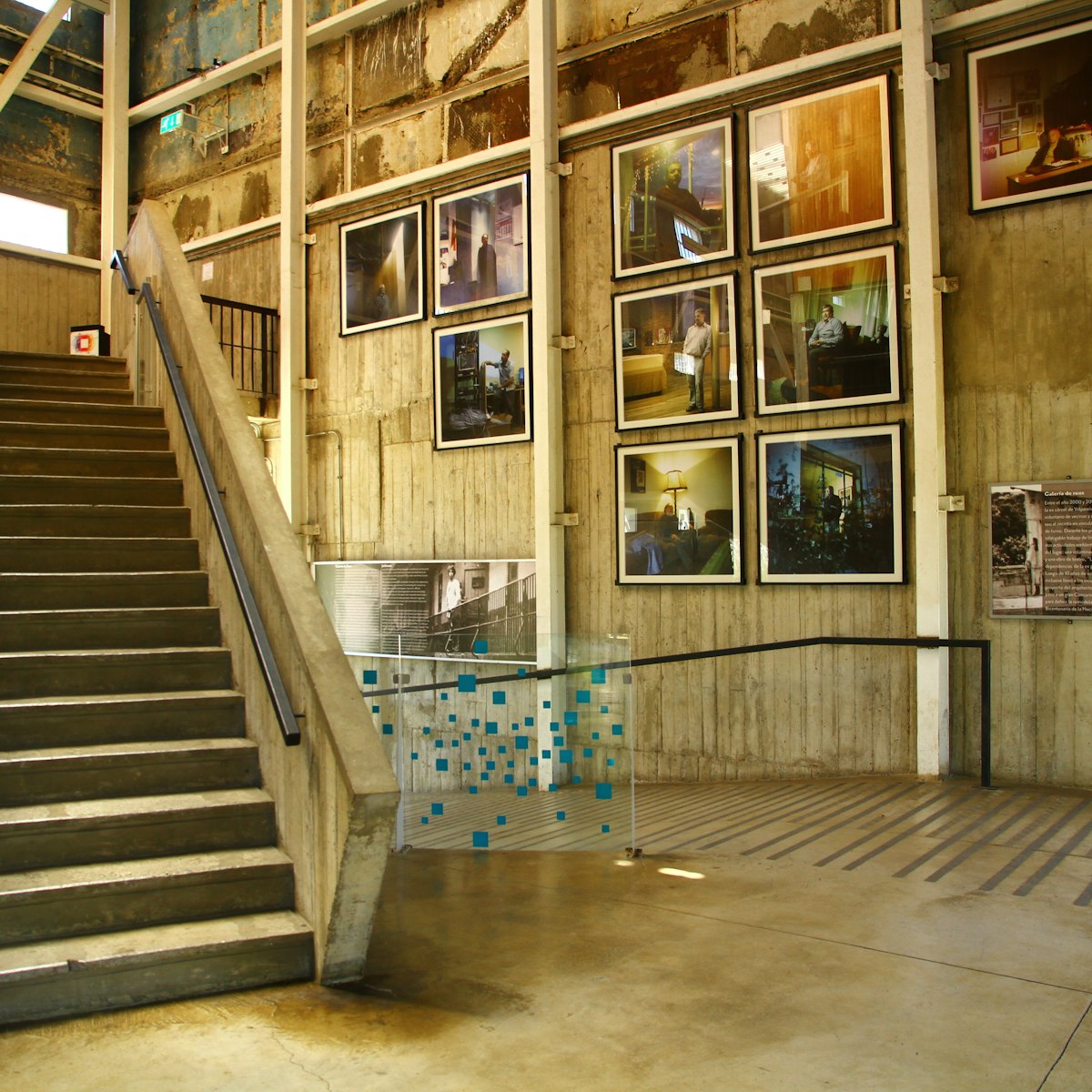
Parque Cultural de Valparaíso
This cultural center built from the bones of a prison has a little bit of everything the thinking traveler could ask for. There are excellent murals in…
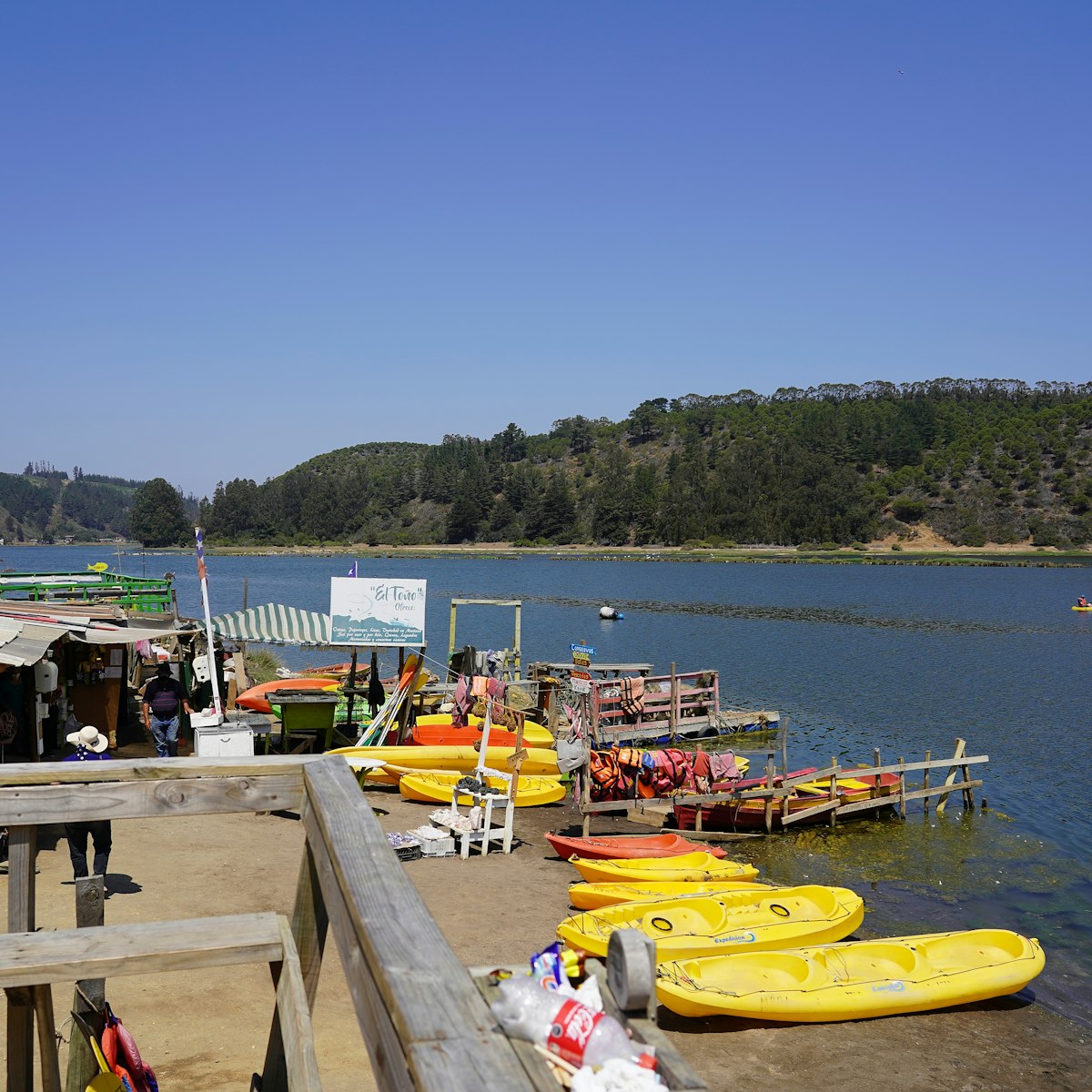
This little village has good ocean views and a few restaurants and cabins. Head to the bridge for a 30-minute boat tour of the Laguna de Cahuil (CH$5000…

Jardín Botánico Nacional
Viña Del Mar
There are over 3000 plant species in the nearly 400 hectares of parkland that comprise Chile's Jardín Botánico Nacional. It's 8km southeast of the city…
Parque del Estrecho de Magallanes
Southern Patagonia
The historic sites of Puerto Hambre (Port Hunger) and Fuerte Bulnes are the centerpiece of this privately managed park, an excellent introduction to…
Museo de Sitio Colón 10
See the 32 excavated Chinchorro mummies in situ at this tiny museum below El Morro. They were discovered when an architect bought this former private home…
Iglesia San Francisco de Castro
Italian Eduardo Provasoli chose a marriage of neo-Gothic and classical architecture in his design for the elaborate Iglesia San Francisco, one of Chiloé's…
Museo de la Memoria y los Derechos Humanos
Opened in 2010, this striking museum isn't for the faint of heart: the exhibits expose the terrifying human rights violations and large-scale …
Museo Chileno de Arte Precolombino
Exquisite pottery from most major pre-Columbian cultures is the backbone of Santiago's best museum, the Museo Chileno de Arte Precolombino. As well as…
Museo Ralli
This little-visited museum on a quiet residential street in Vitacura boasts a stunning collection of contemporary Latin American art mixed in with…
Centro de Visitantes Inmaculada Concepción
Don't even think about visiting Chiloé's Unesco-listed churches without first stopping in at this excellent museum housed in the former Convento…
Museo Regional de Ancud Aurelio Bórquez Canobra
This worthwhile museum, casually referred to as Museo Chiloé, offers interesting displays tracking the history of the island, including a full-sized…
La Confluencia
Don't miss this dramatic viewpoint, where Chile's most powerful river, the Baker, froths into a broad, behemoth cascade before merging with the milkier,…
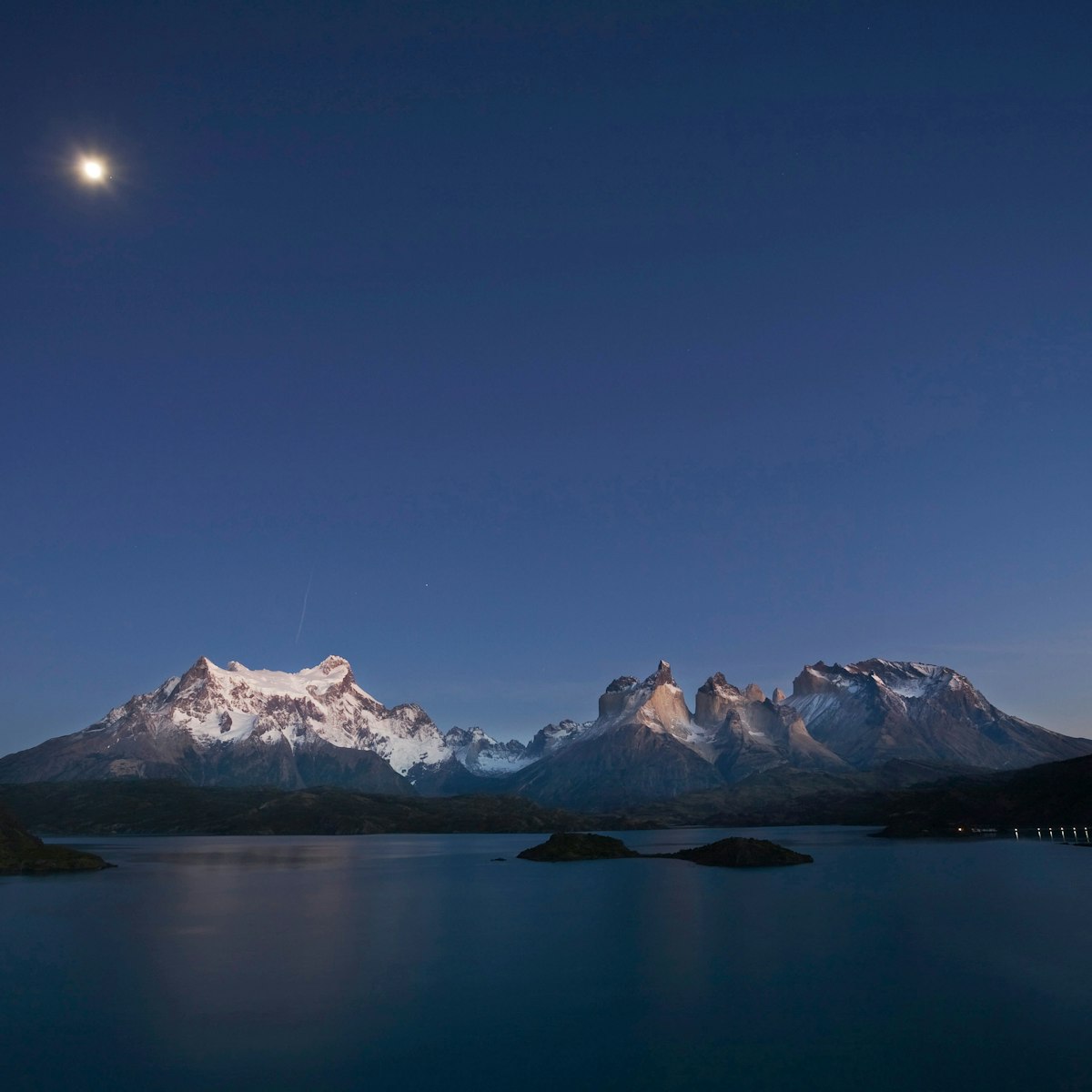
Parque Nacional Torres del Paine
Soaring almost vertically more than 2000m above the Patagonian steppe, the granite pillars of Torres del Paine (Towers of Paine) dominate the landscape of…
Parque Nacional Rapa Nui
The vast majority of Rapa Nui falls within the boundaries of this national park. Think of it like an open-air museum with mysterious archaeological sites…
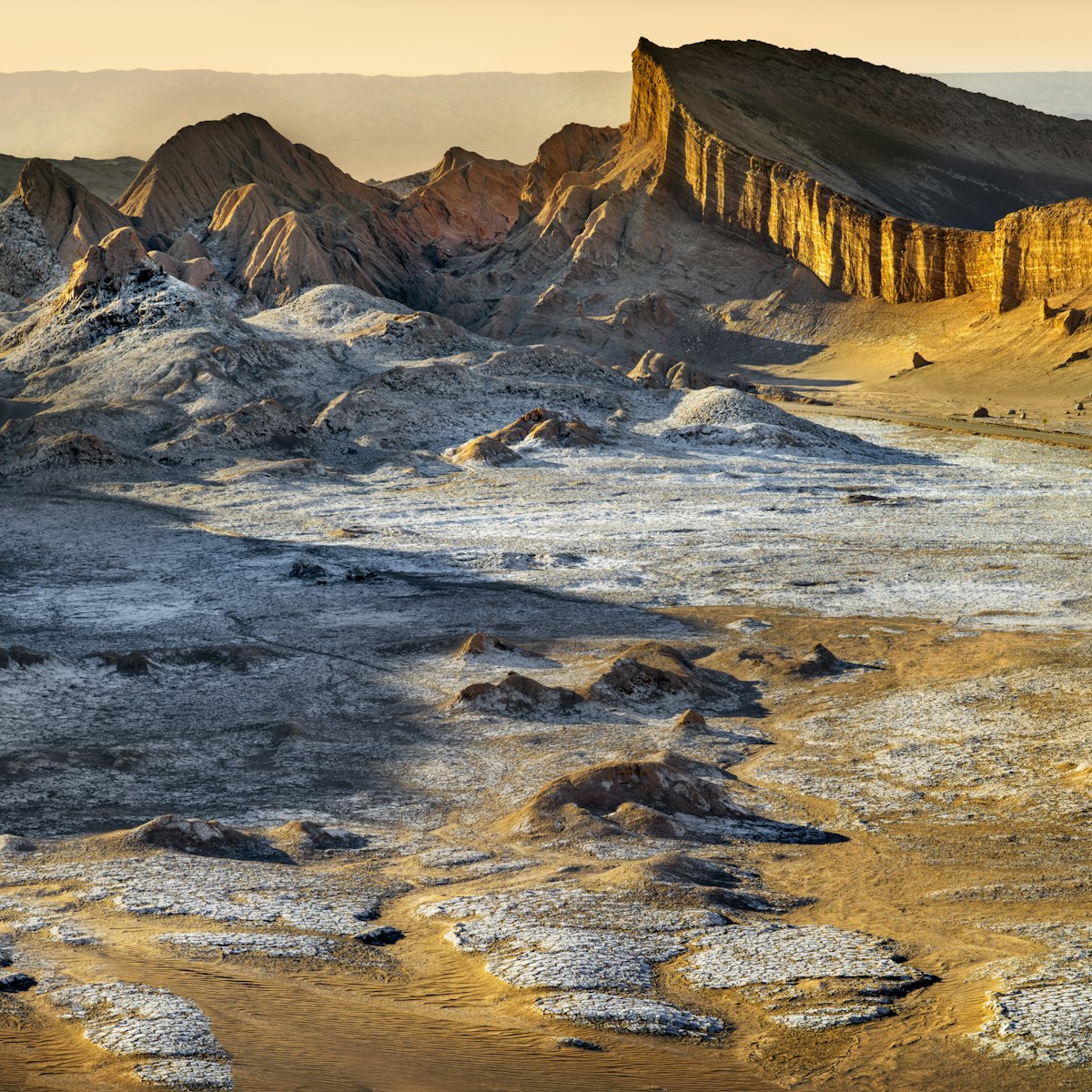
Valle de la Luna
Norte Grande
Watching the sun set from the exquisite Valley of the Moon is an unforgettable experience. From atop a giant sand dune, you can drink in spectacular views…
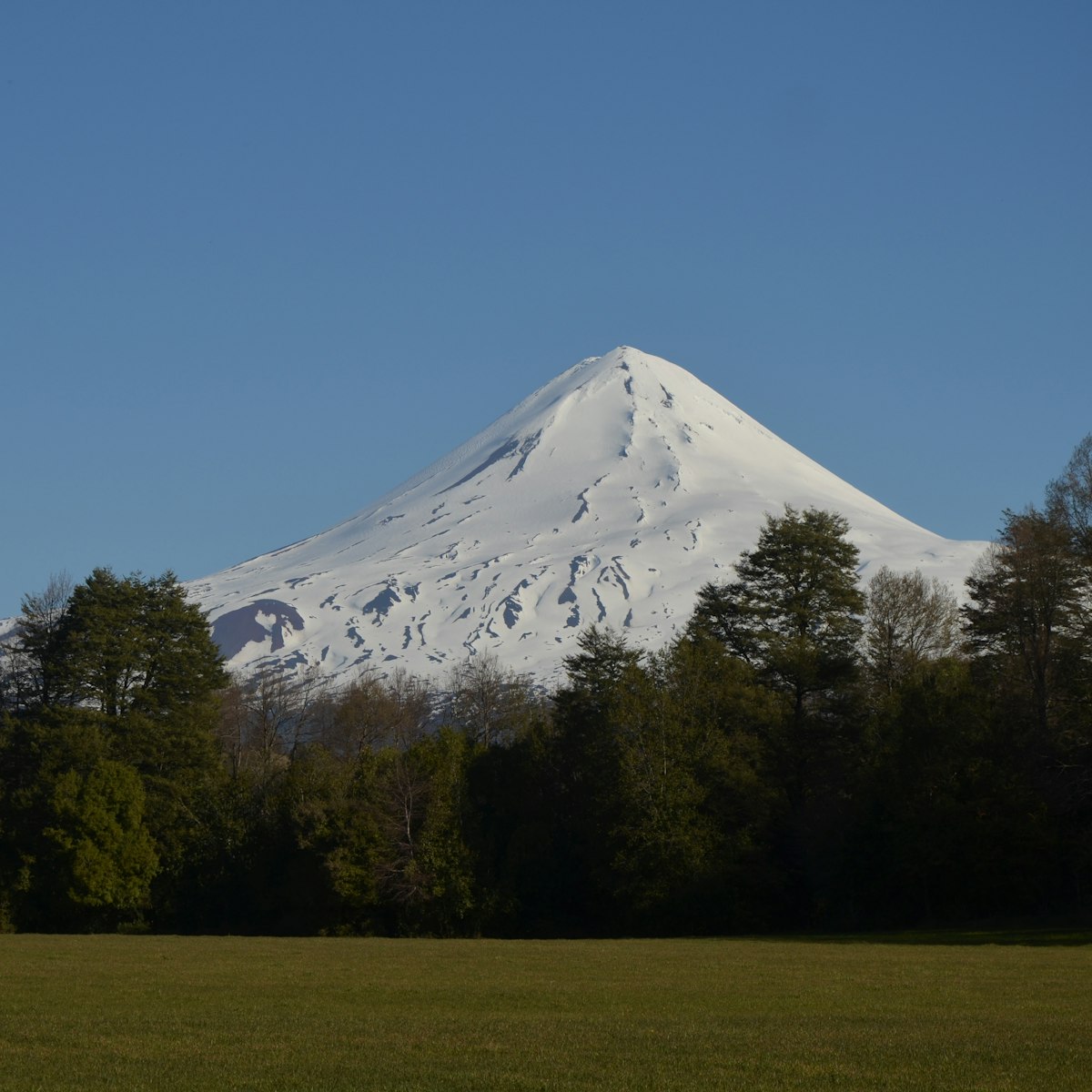
Parque Nacional Conguillío
The 3125m Volcán Llaima, one of Chile's most active volcanoes, forms the focal point of Parque Nacional Conguillío and the Unesco Biosphere Reserve in…
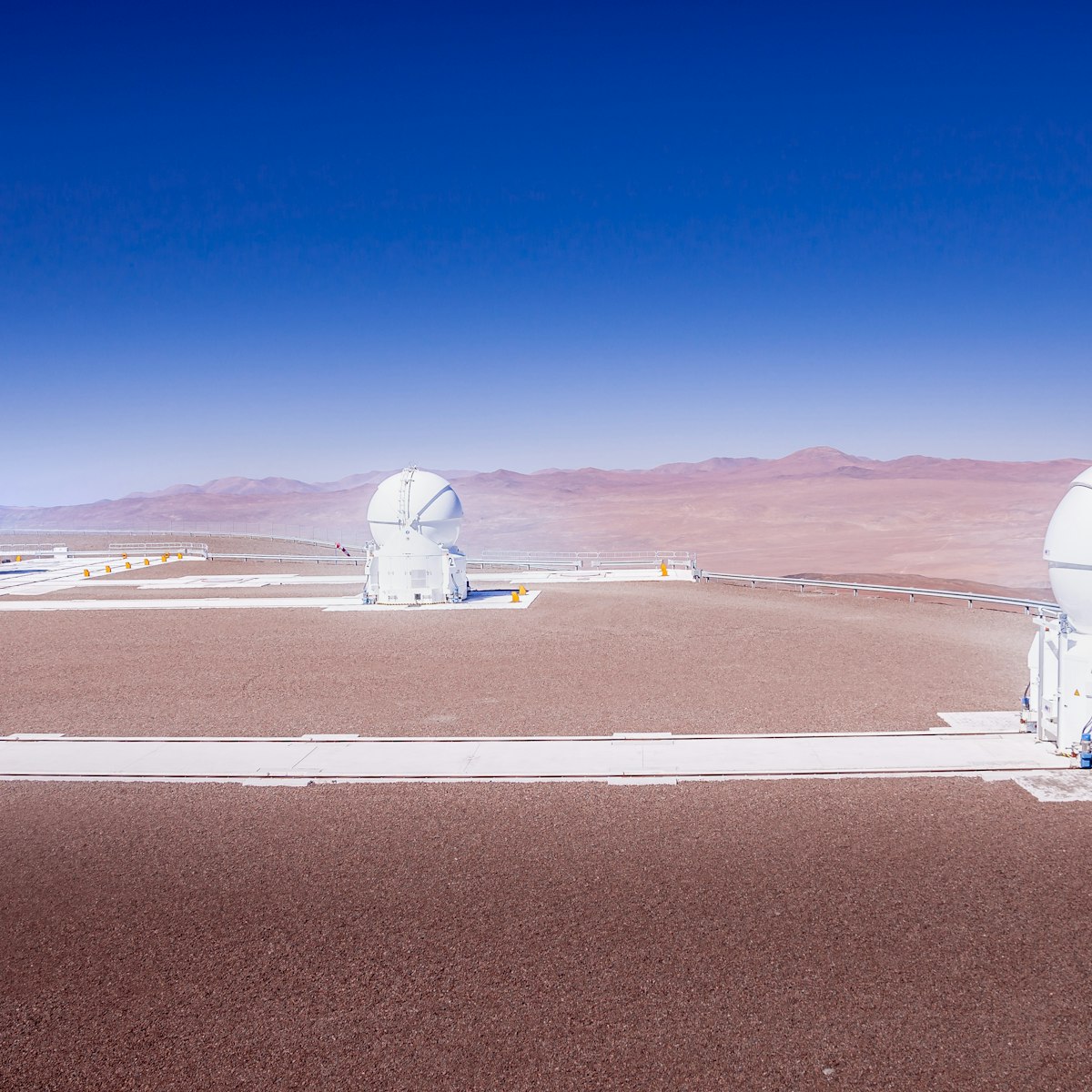
Cerro Paranal Observatory
In the world of high-powered telescopes, where rival institutes jostle to claim the 'biggest,' 'most powerful' or 'most technologically advanced'…
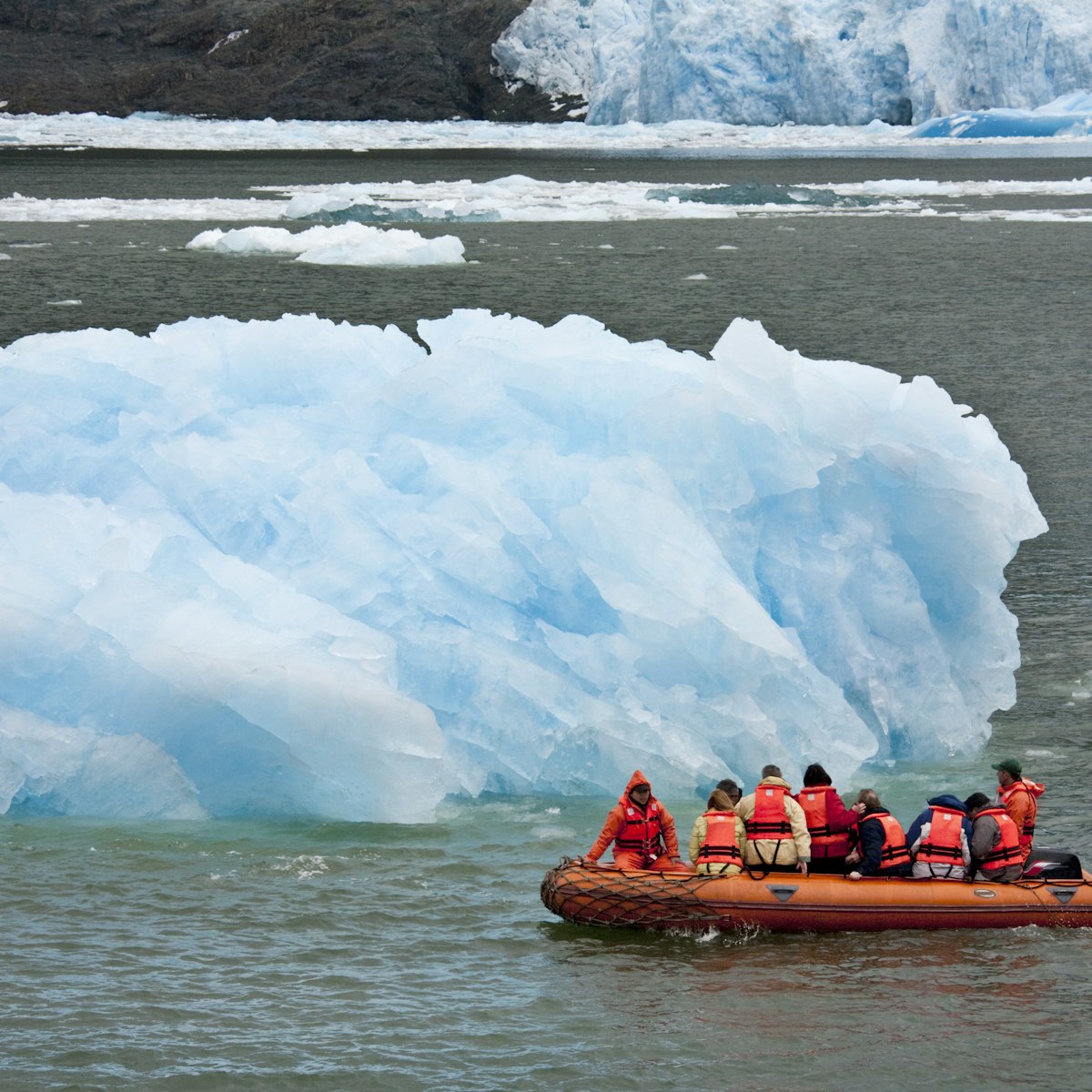
Parque Nacional Laguna San Rafael
Awesome and remote, this national park brings visitors face to face with the 30,000-year-old San Valentín glacier in Chile's Campo de Hielo Norte…
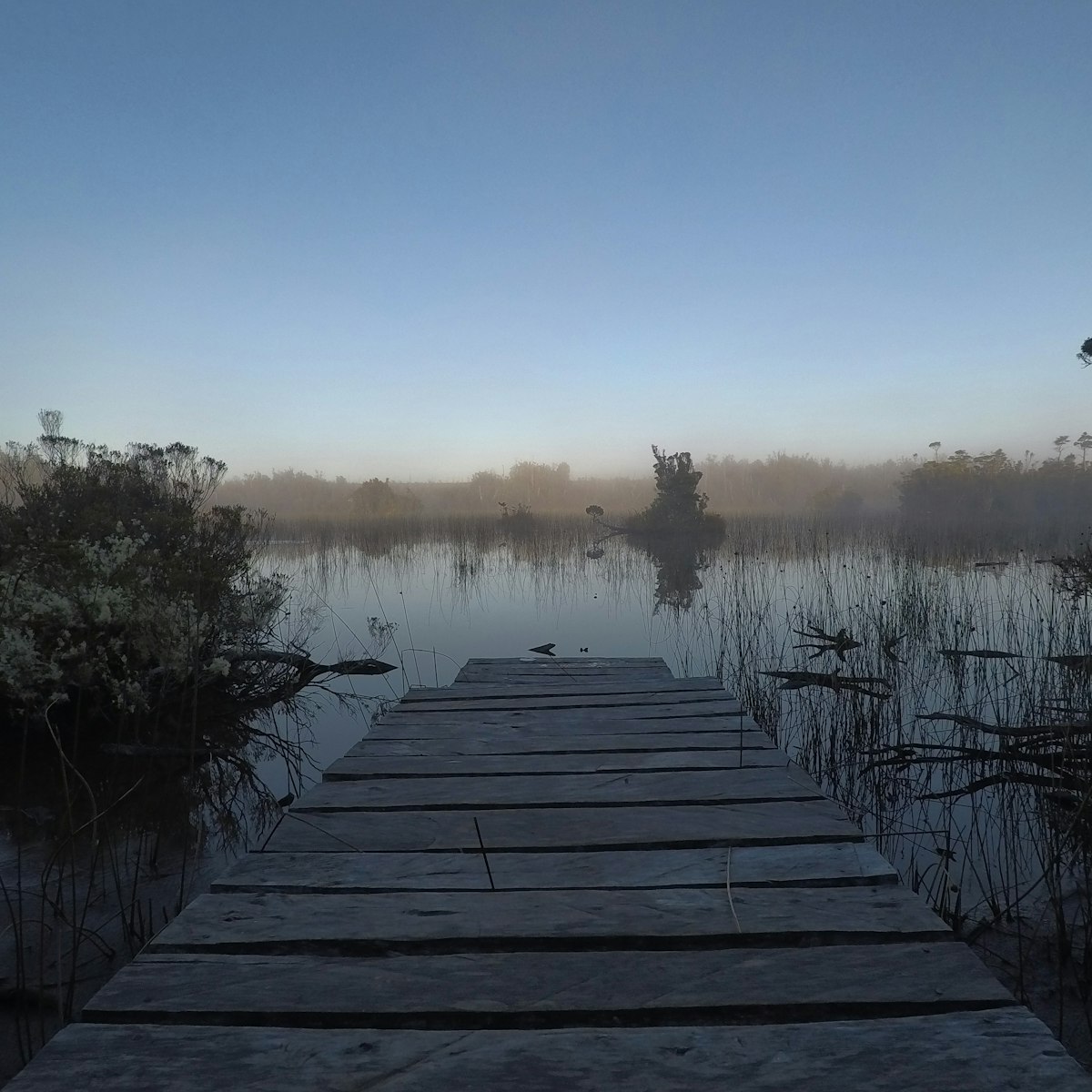
Parque Tantauco
Created and owned by Chilean business magnate and current president Sebastián Piñera (and run by his foundation, Fundación Futura), this private nature…
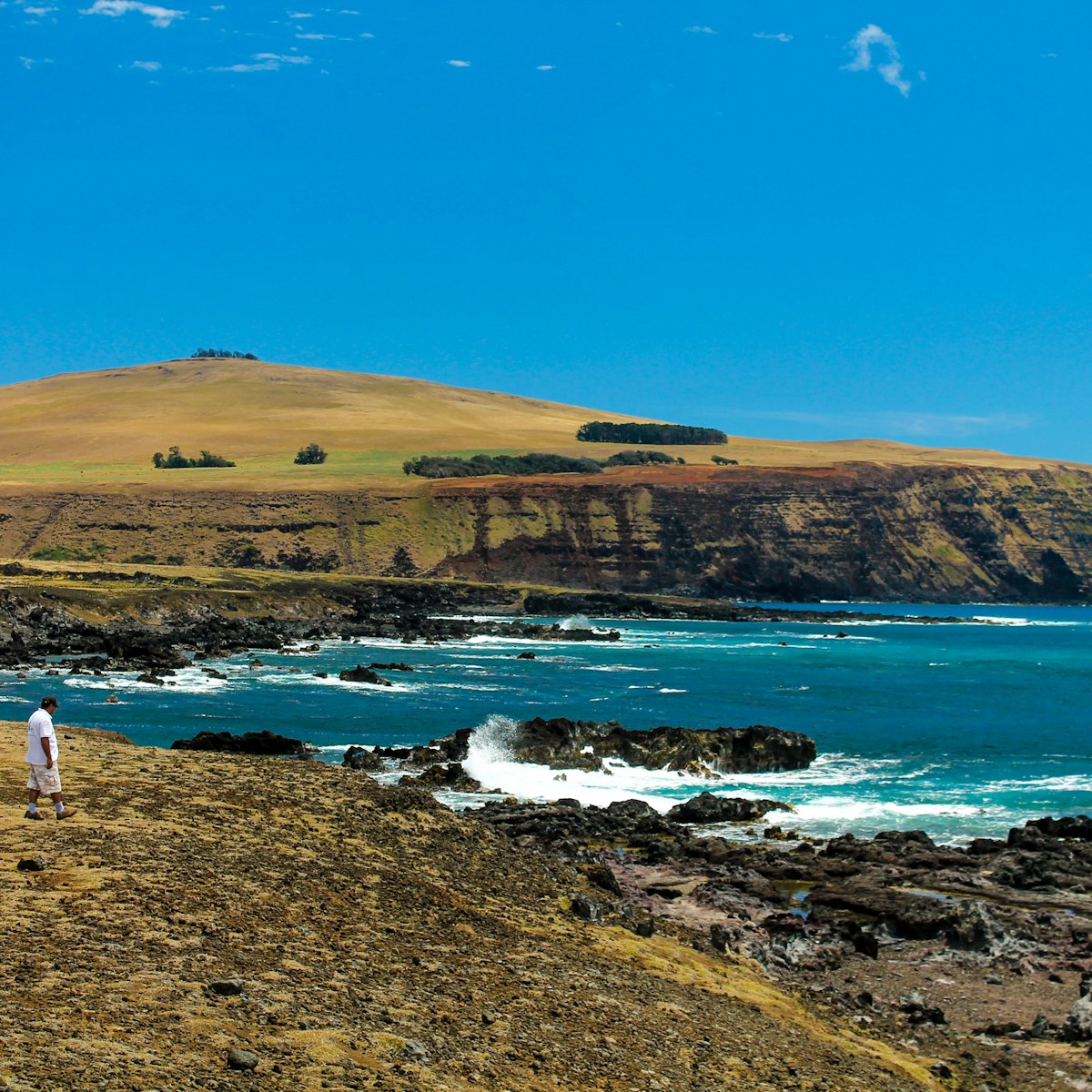
Península Poike
At the eastern end of the island, this high plateau is crowned by the extinct volcano Maunga Pu A Katiki (400m) and bound in by steep cliffs. There are…
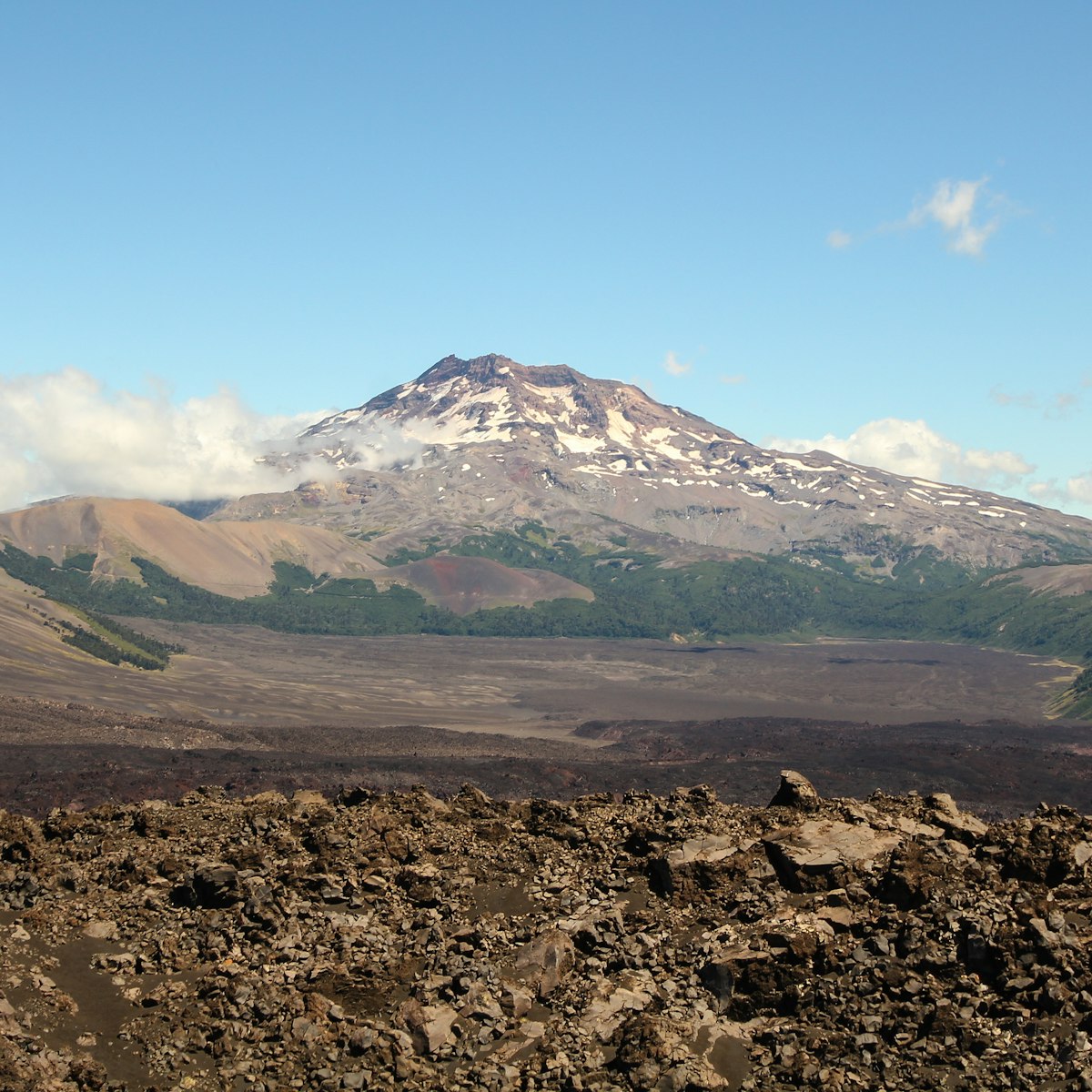
Reserva Nacional Malalcahuello-Nalcas
Serving up one of the most dramatic landscapes in all of Sur Chico and easily the jewel of northern Araucanía’s protected reserves, the 303 sq km Reserva…
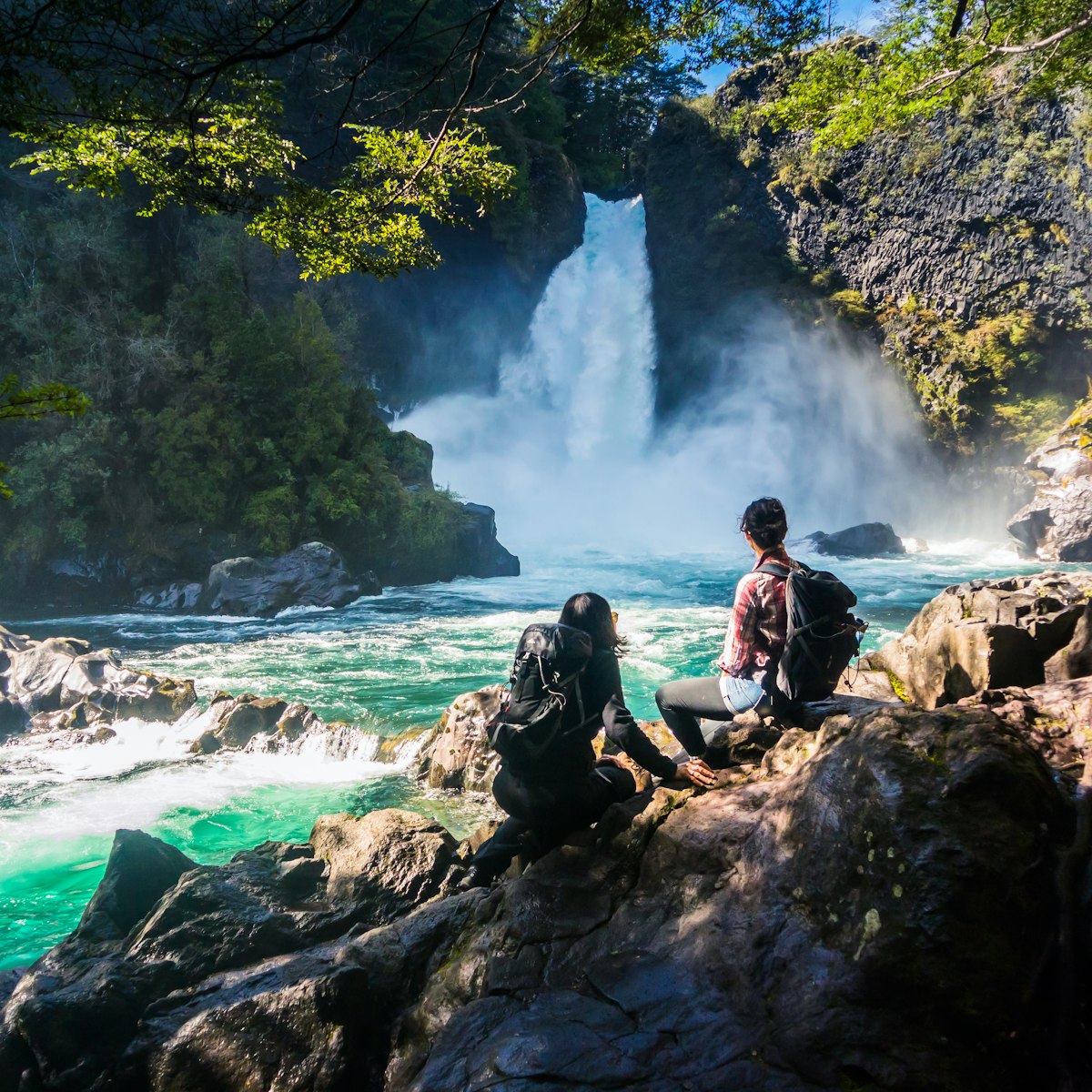
Huilo-Huilo Biological Reserve
This conservation project, begun in 2000, encompasses 1000 sq km of private land that has been developed for low-impact ecotourism and falls within a much…

Parque Nacional Archipiélago Juan Fernández
This national park covers the entire archipelago, a total of 93 sq km, though the township of San Juan Bautista and the airstrip are de-facto exclusions…
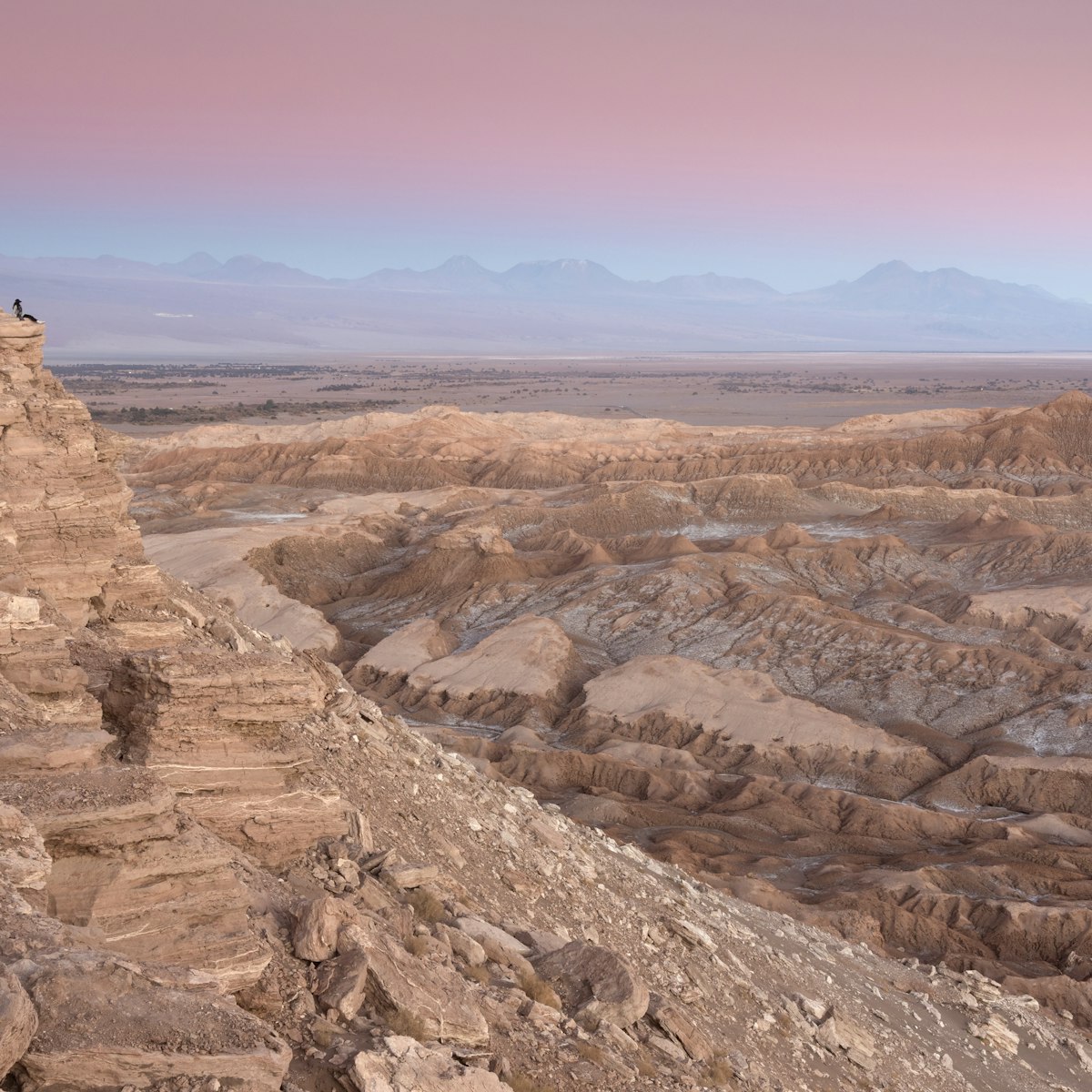
Valle de la Muerte
San Pedro de Atacama Region
Around 3.5km west of San Pedro, this striking valley should figure high on any itinerary to the region, with jagged rocks, a towering sand dune and…
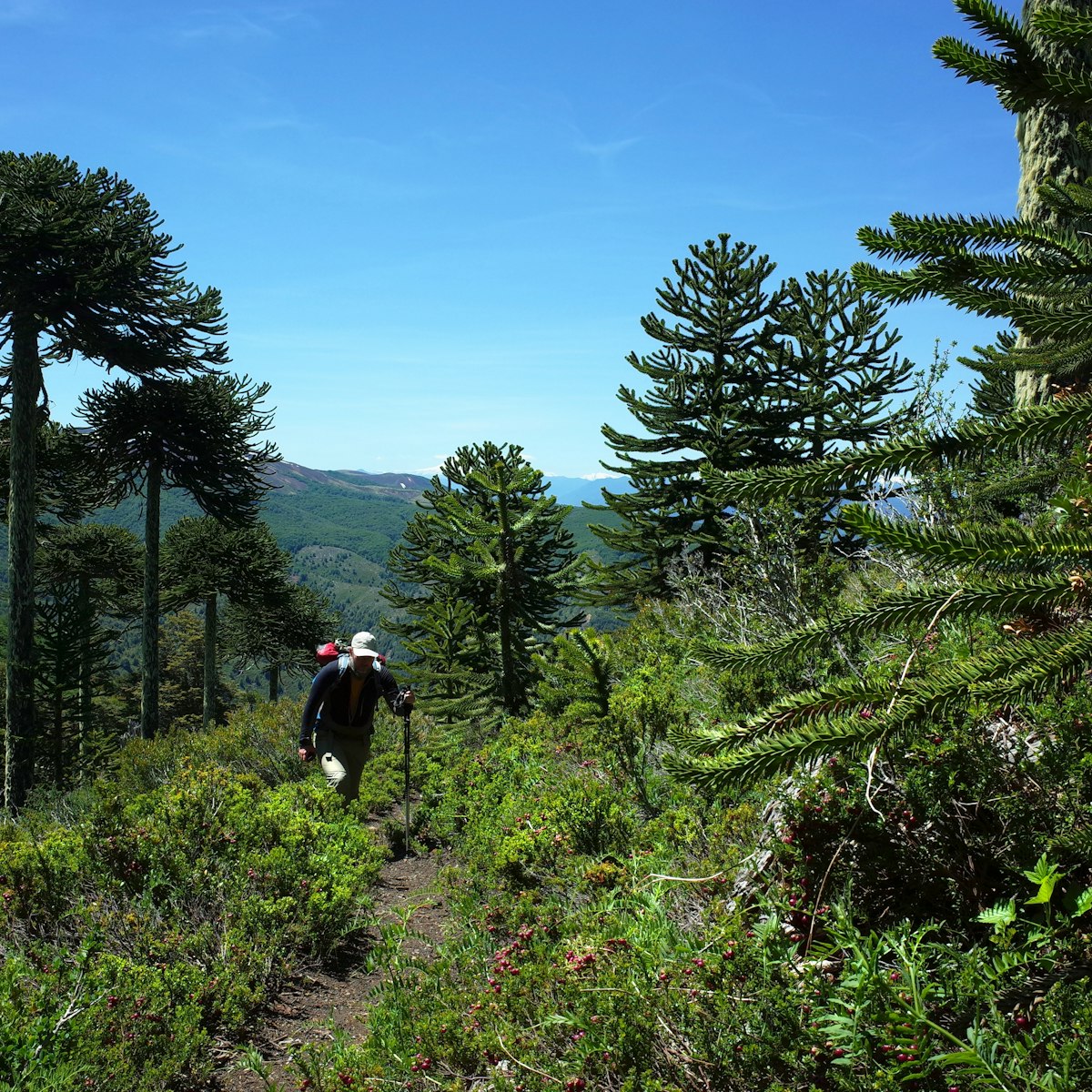
Parque Nacional Villarrica
Towering over the adventure capital of Pucón, Volcán Villarica is the centerpiece of Parque Nacional Villarrica, one of the most popular parks in Chile…
More destinations you need to see
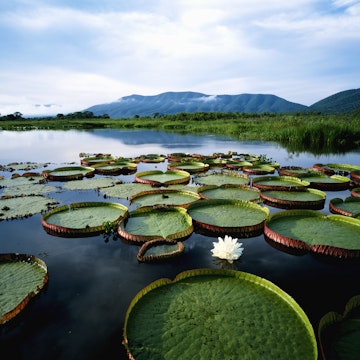
- USA/Canada 1-888-232-3813
- Walking & Hiking
- Wildlife and Nature
- Multiactivity
- Photo Safari
- Excepcional Journey
- Water Adventures
- Food & Wine
- City Escapes
- Winter Adventures
- EcoCamp Patagonia
- Argentine Patagonia
- Chilean Patagonia
- Atacama Desert
- Santiago and Central Valley
- Easter Island
- Lake District
- Multidestination
- Northwest Argentina
- Uyuni Salt Flats, Bolivia
- For Families
- For Couples
- For Friends
- For Solo Travelers
- Central Valley
- Wildlife & Nature
- News & Awards
- Sustainability
- Outdoor Sports
- Yoga & Wellness

12 Things You Must Know Before You Travel to Chile (2022 Updated)
Posts by tag.
- Patagonia (76)
- Inspire (50)
- Wildlife & Nature (28)
- News & Awards (25)
- Outdoor Sports (21)
- Food & Wine (20)
- Central Valley (16)
- Culture (14)
- Atacama Desert (13)
- Sustainability (8)
- Lake District (5)
- Yoga & Wellness (5)
- Easter Island (3)
- Bolivia (1)
Last Update : July, 27th 2022
Planning a trip to Chile?
2020 was a bad year for travelers, with most borders being closed as “stay home” became the norm. And while most of us started traveling from home (thank you, internet), nothing will ever replace a trip to a beautiful place .
And if you’re thinking about Chile, you probably know this is one of the most beautiful destinations on the planet . But there’s so much to learn about our favorite country in South America. Here’s a quick guide so you can get familiar with Chile and get ready for a trip of a lifetime with some useful information.
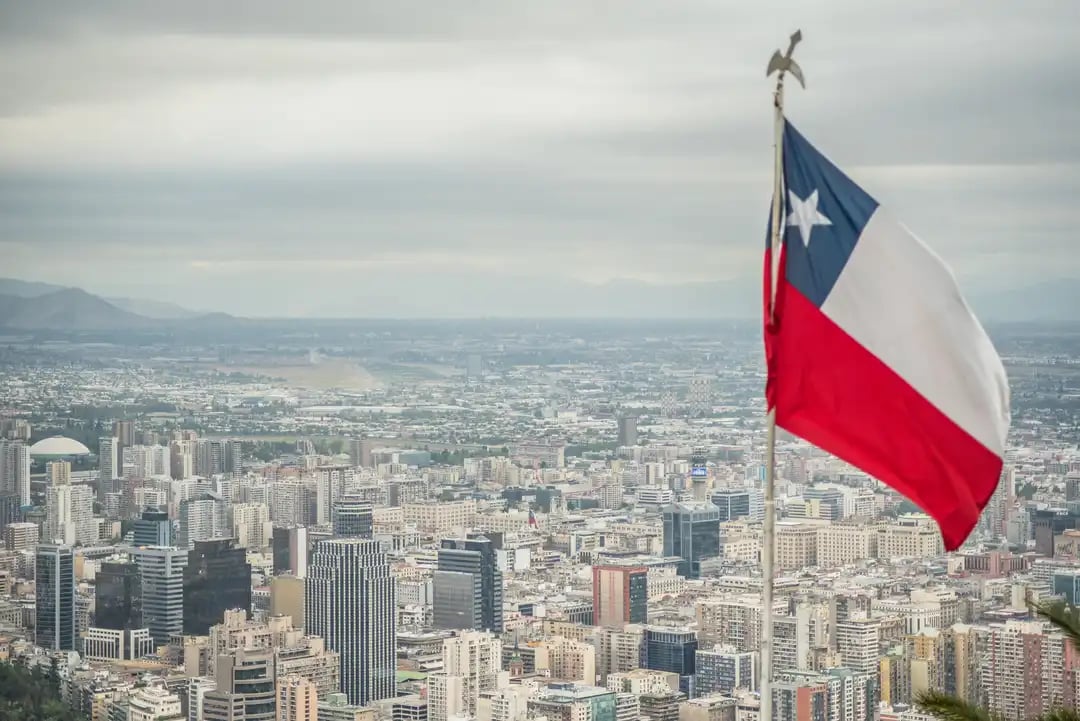
¡Buen viaje!
1. Chile is amongst the safest countries on Earth
2. chile is more expensive than its neighbors, but incredibly rewarding, 3. chile is covid-19 vaccination champion in south america, 4. if you plan an adventure in chile, you may have to train first, 5. the best time to travel to chile is not always when you think, 6. distances in chile are long, 7. chileans speak a very unusual spanish, 8. border crossing to argentina can be tricky in some places, 9. the visa and vaccines you need to travel to chile, 10. chileans have some curious social rules, 11. how to eat like a chilean in chile, 12. these are the best places to visit in chile.
Chile is a very safe destination for travelers in South America. According to the Global Peace Index (updated every year), Chile currently ranks as the 27 th safest country on the planet. It is usually considered the safest country in South America, together with Uruguay. Thanks to its low crime rates and nice behavior towards travelers, the “thin country” can be considered a very safe destination (especially if you visit its spectacular national parks).
Chile is the most developed country in South America , and some travelers like to talk about it as the “most European-like country in Latin America”. It is therefore an expensive country compared to its neighbors Bolivia, Peru and Argentina, and you should take a look at the updated exchange rate before you travel to Chile (the local currency is the Chilean peso).
To give you an idea, restaurant costs are on a par with the US for similar level restaurants. Prices vary tend to vary a lot from a place to another (for instance, prices in Patagonia are usually higher than the ones in central Chile). But whether it has to do with the food or with the excursions, it is usual to get more than what you pay for ! There is some excellent Chilean cuisine and both the guides and the travel experiences are incredibly rewarding.
And if you’re on low budget, don’t worry! There are plenty of alternatives, such as simpler restaurants and delicious street food; and more accessible travel experiences.

Worried about COVID-19? We are too! However, we are optimistic regarding the near future as Chile became a COVID-19 vaccination champion in South America . Health experts and government officials credit the country’s early negotiations with vaccine producers and in July 2022, more than 90% of the objective population was vaccinated (with up to 4 doses!). The country of 19 million inhabitants is an example in Latin America , often named in world’s Top 3 together with Israel and the United States.
Check out the complete guide on what you need to travel to Chile during the COVID-19 pandemic here.
Despite the intensity of the coronavirus waves that have hit the country, the country is already a "new normal". These are great news for tourism, isn’t it?
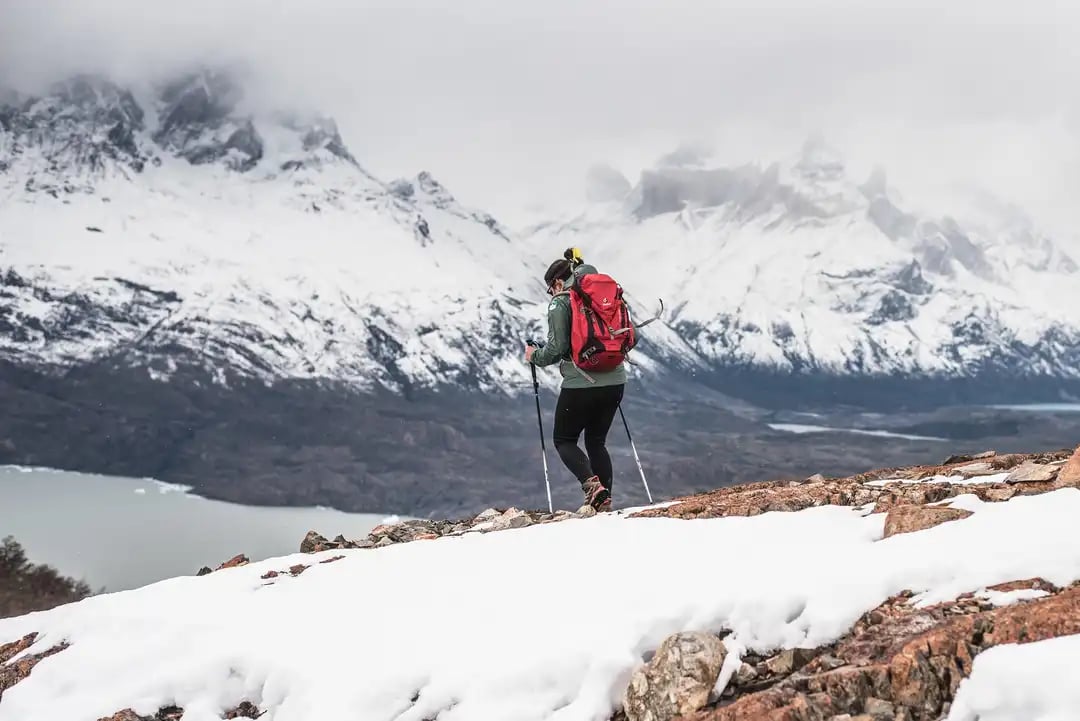
Chile is amongst the best adventure travel destinations in the world. It was awarded 6 times as the “World’s Leading Adventure Travel Destination” in the World Travel Awards , the “Oscars of tourism”. But be careful when it comes to choosing your adventure! Some of them are really demanding and require some previous training.
Some experiences are accessible for everyone , like a trip to the Atacama Desert or a Wildlife Safari in Torres del Paine National Park . However, Patagonia’s most popular multiday hikes are quite demanding. The W Trek requires at least some regular trail walking. As for the epic “O Trek” (Torres del Paine Circuit), the Dientes de Navarino Circuit and the Cerro Castillo Circuit , these are for the experienced hikers only. The terrain is irregular, hiking distances are long and include some steep uphill. In short, you’d better check out the details on the level of difficulty of the trip you’re interested in before taking the final decision.
Chile is a land of extremes. You’ll find the driest desert on Earth in north (the Atacama Desert) and the world’s third freshwater reserve in the south (the Patagonian ice fields). That’s what makes Chile a hard place to understand when it comes to scheduling a trip.
While most people think there is no rain at all in northern Chile, there may be some occasional heavy rain fall in summer, especially between December to March. This is due to the Altiplanic winter, a phenomenon that can cause storms in the Arica and Parinacota and in the Atacama regions.
In Patagonia, summer months (from December to March) are the busiest ones, but also the windiest. There is a “ best time to come ” for everyone, and this is how we could sum it up.
Best outdoor adventure weather: November to March
Best time to avoid the crowds: April to October (note: it may be difficult to find accommodation due to off-season from June to August).
Best time to spot wildlife: April to November
Chile extends 4,270 km (2,653 miles) from North to South, with an average of 177 km (110 mi) from East to West. Traveling from the Arica region to southern Patagonia would be the same as traveling from northern Scandinavia to Morocco!
You’ve got it: distances are long, and domestic flights usually take a few hours (for instance, it takes roughly 3,30 hours to get from Santiago to Punta Arenas). Besides the hours spent flying, you will also have to drive a lot, especially if you head to Patagonia. Getting to EcoCamp Patagonia from the Punta Arenas airport requires a 5 to 6-hour drive (a beautiful one)!
And if you plan to travel to Easter Island, remember that the “world’s most remote island” is located 3.759km (2.335mi) away from Santiago (a 5-hour and 40-minute flight).
“Cachai” “Piola” “Weon” “Bacán”: if you speak Spanish but do not understand these words, don’t worry! Chileans may speak the most peculiar Spanish in the world . The Royal Spanish Academy recognizes 2,214 words and idioms exclusively or mainly produced in Chilean Spanish, in addition to lots of unrecognized slang expressions.
But no panic! Chileans love to communicate with tourists and I bet you’ll be able to understand each other, even if you don’t speak Spanish at all.

Chile and Argentina are separated by a huge natural boundary : the Andes mountains. In Patagonia, the mountains get lower but the terrain is irregular, with lots of channels, ice fields and islands. At the border between Villa O’Higgins (Chile’s Aysén Region, the southernmost point of the Carretera Austral), vehicles are inaccessible. Here, you’ll have to take a boat, get a horse and walk 35 kilometers (22mi) if you want to cross to Argentina.
In most places, the immigration offices between both countries are miles apart, but crossing is easy if you have your own transfer or vehicle. If you travel by yourself, you should consider that some parts of Patagonia have no public transport to go through the border.
You won’t need a visa if you stay less than 90 days in the country (do not lose the small paper the immigration authorities will give you while entering Chile).
However, having your updated COVID-19 vaccines to enter the country is strongly recommended. While a negative PCR upon arrival is not compulsory any more, having your updated COVID-19 vaccines will allow you to get a "mobility pass" which is mandatory to enter many public places such as bars, restaurants and movie theaters ( more information here ).
Also, you must declare all products of plants and animal origin while entering into Chile (non-compliance with this obligation can be expensive!).
“Go to Chile and you’ll be welcomed with open arms” . This is a true statement. It is also true that Chileans have some traditions, mannerisms and customs that may leave you confused. Some of the funniest facts? Chileans add “-po” to virtually every word (for emphasis or just because locals feel like it). Chileans have lunch at around 2pm, and have “elevenses” in the evening. What does that mean? Well, it’s like having an afternoon tea, accompanied by bread with avocado, jam, paté or ham.
Everything stops for a football game , so streets may seem empty when Chile plays (but wait for the celebration if Chile wins!).
Finally, Chile is a seismic country. Chileans say there’s an earthquake only if it’s over 6 on the Richter scale . If it’s under 6 on Richter, some Chileans don’t even feel it. In these cases, they say it’s only a “temblor” (tremor).

There’s a new culinary world awaiting to be discovered in Chile! There is a rich and diverse range of dishes for everyone’s taste, though the famous ingredients include plenty of seafood (coastline), avocado, beef (the whole country) and lamb (Patagonia). There are also some amazing indigenous influences you will find in some regions (such as the Atacama Desert and the Araucanía region with the Mapuches), and you can get some incredible gourmet food in Chile’s main cities, especially in Santiago.
But the spirit of Chile can be tried on the street. You should definitely try the empanada (little puff pastry baked in the oven), the humita (corn mixed with onion and basil, in a preparation that is wrapped in maize leaves) and the completo (a local version of the hot-dog, that includes avocado).
No trip to Chile would be complete without an “asado”, a barbecue. “Asados” are the best excuse for Chileans to gather, making it the most important social occasion held all year round.
As for the beverages, Chile is worldwide famous for its delicious wine. You should also try the Pisco – a brandy produced in wine regions of Chile and Peru. And Chile also has some delicious beer!
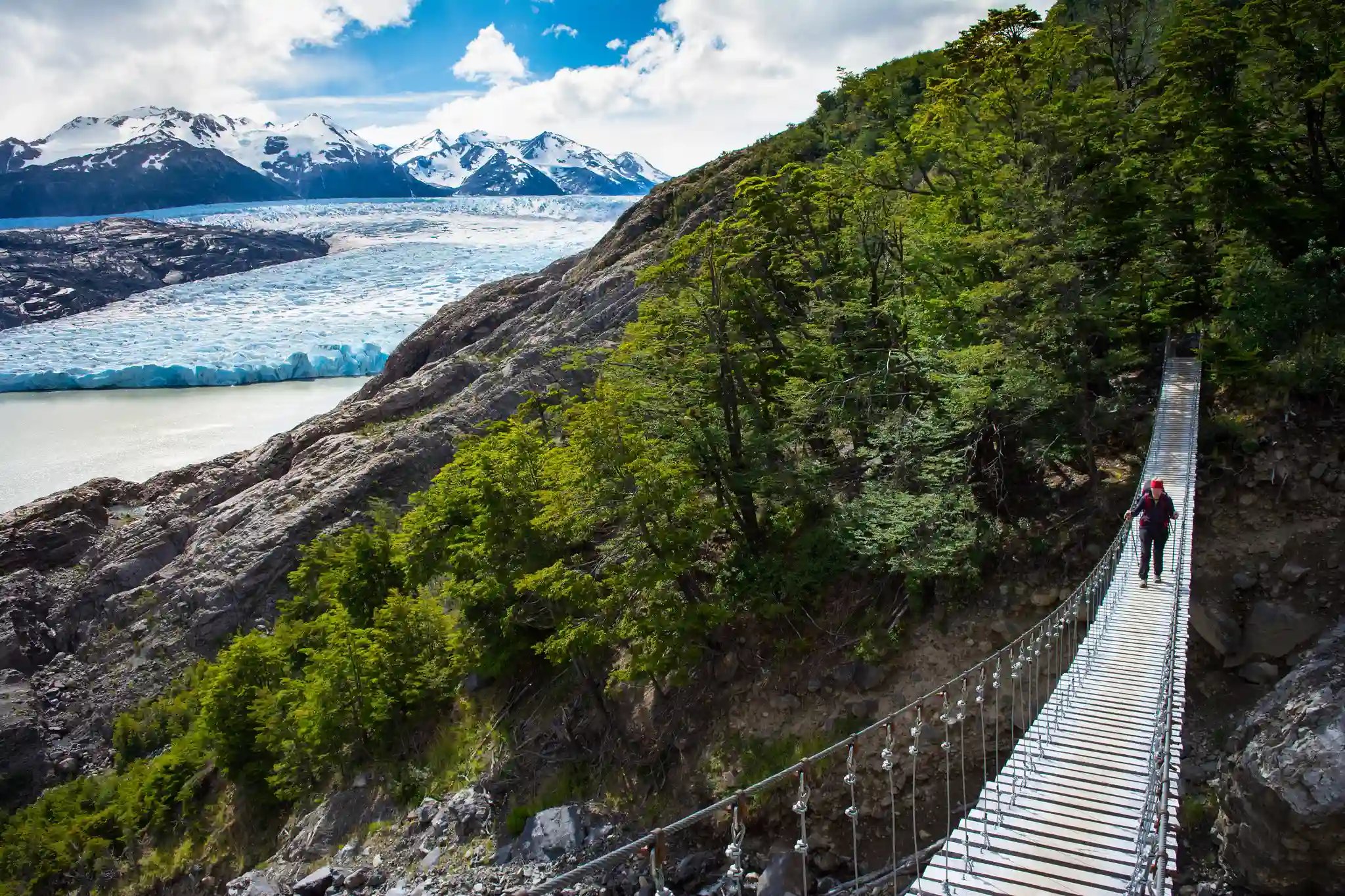
We could write an entire book featuring Chile’s best places to visit . But if we had to sum it up, we would start with the Atacama Desert in the north, the world’s most arid desert. It stretches over 1000 kilometers of the Pacific coast to the border with Bolivia and Peru, offering a spectacular natural scenery. Here you’ll see the clearest sky on Earth, the incredible Tatio geysers and colorful lagoons above 3000 meters.
Further south, you should consider a trip to Valparaíso , Chile’s colorful port that is full of history. Santiago de Chile is worth a visit, with its vibrant streets, fascinating museums and delicious restaurants. Close to the country’s Metropolitan region, you could also go for some wine tasting in the beautiful wine valleys.
Another highlight is the Lake District , with its snowcapped volcanoes, German influence and vast lakes. Heading south you’ll reach Patagonia, with the stunning national parks of Chile’s Aysen Region. Here you can do the best road trip in South America while driving through the Carretera Austral, and do a hike of a lifetime through the Cerro Castillo National Park .
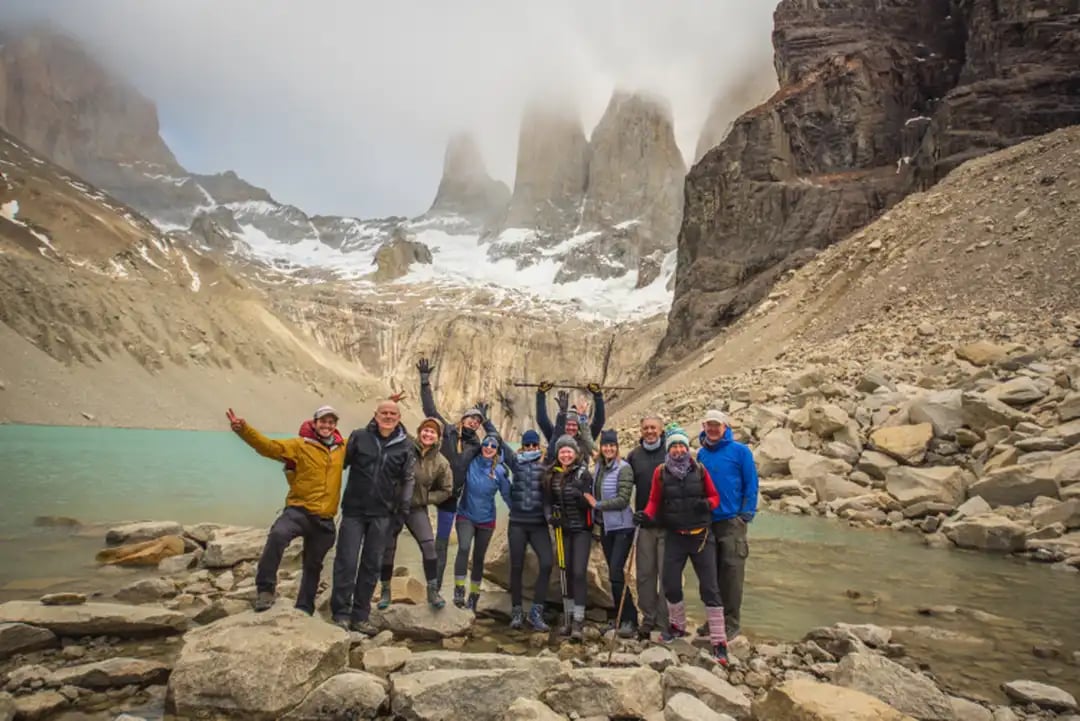
But the crown jewel of Patagonia is definitely Torres del Paine National Park , with its mesmerizing granite spires, abundant wildlife and spectacular hiking trails. You can stay at EcoCamp Patagonia , the world’s first geodesic hotel, to make your stay in Chile’s finest national park even better!
Another great place to hike is the Navarino island , home to the southernmost trek on Earth, “los dientes de Navarino”.
And we can’t talk about Chile without mentioning Easter Island (Rapa Nui), with its 1,000 monumental Moai statues in the heart of the Pacific Ocean.
_resultado.webp?width=1080&name=Cerro%20Castillo%20Trek%20-%20Carretera%20Austral%20(3)_resultado.webp)
Ready for your trip to Chile? Take a look at our adventures or contact us to make your dream adventure come true!
Subscribe to our Newsletter
Related posts.
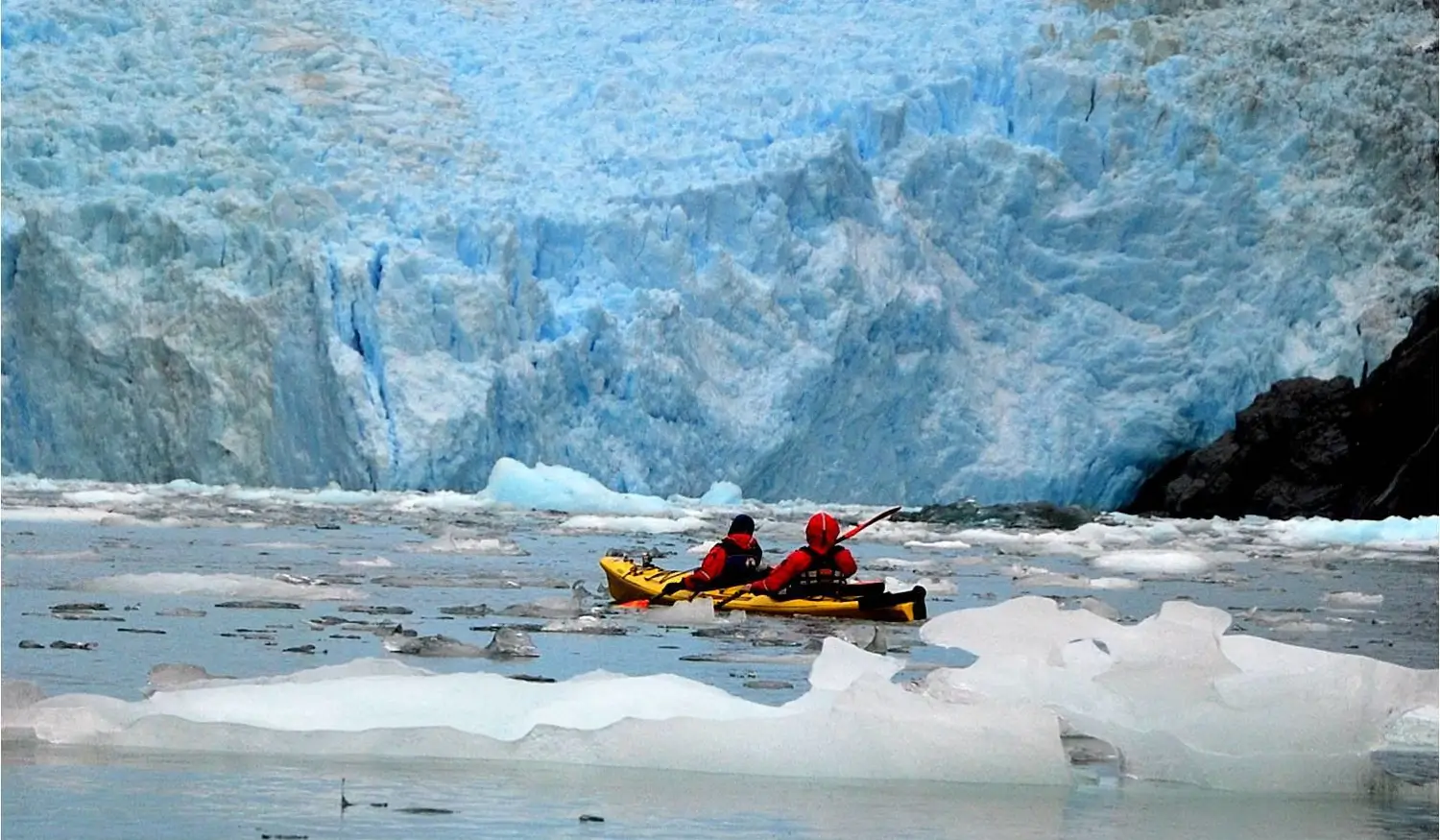
Patagonia's glaciers: worth a visit
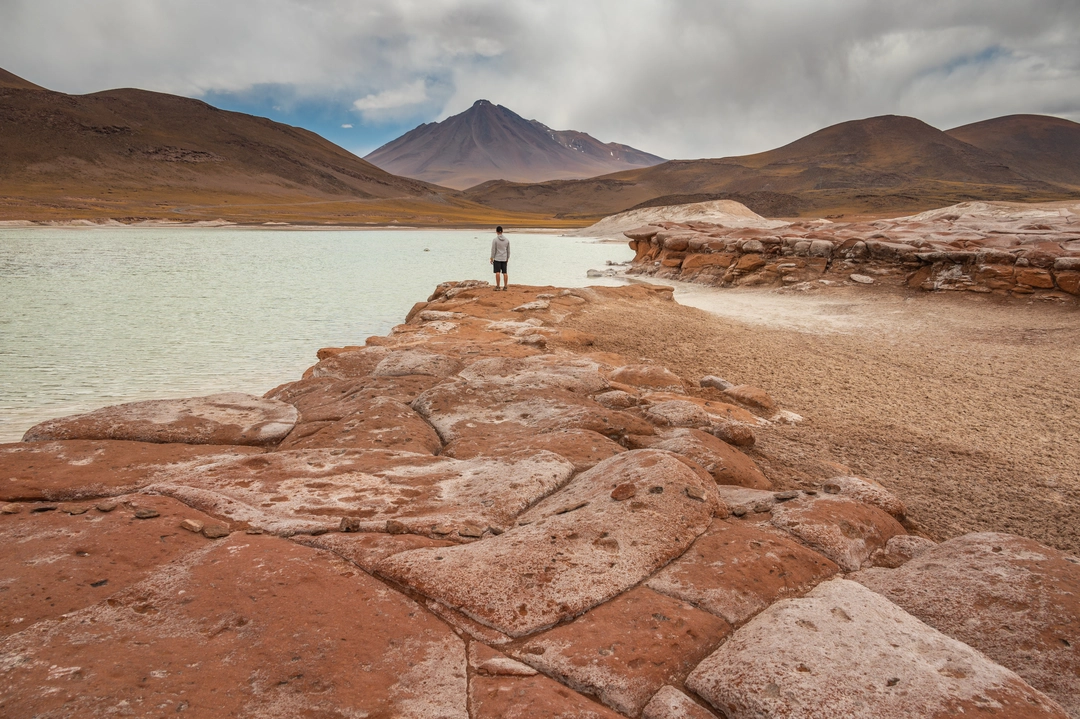
The Best Destinations in Chile for Adventure Travelers
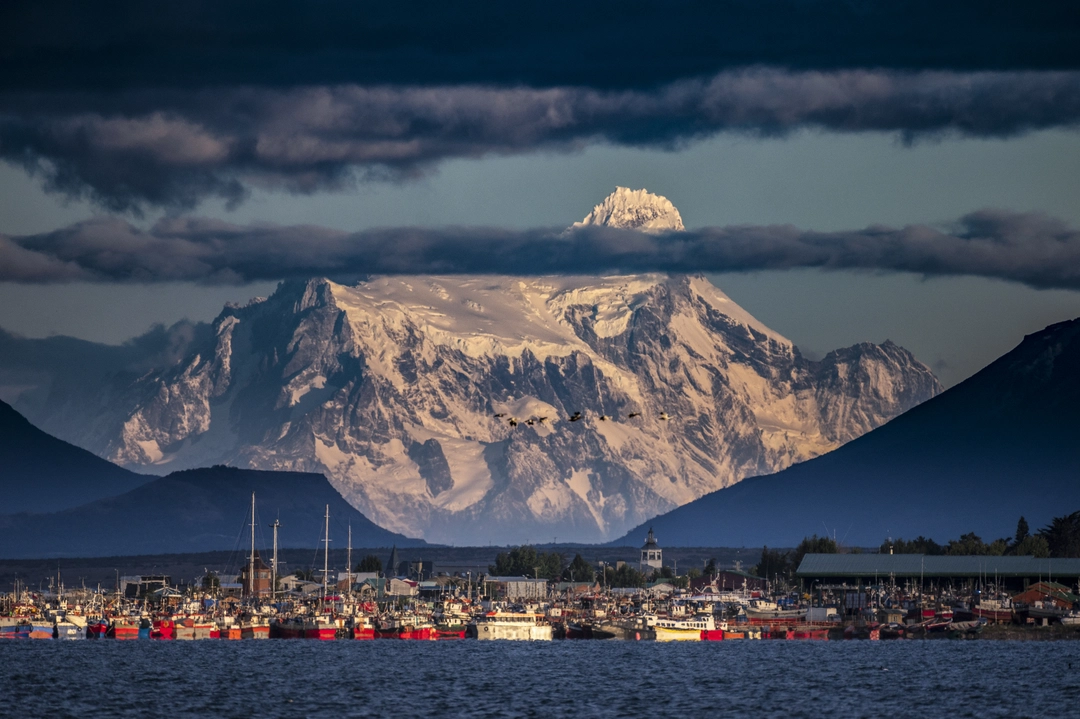
8 Things You Didn't Know About Patagonia

The Chilean Way
Want to learn more about the beautiful country of Chile? Download our insider’s guide to learn all the best travel tips and tricks.

- TERMS & CONDITIONS
- PRIVACY POLICY
Destination
- Multi Destination
- Salta Argentina
Experiences
- Multi-activity
- Exceptional Journeys
SOCIAL NETWORKS

Updated October 4th, 2022
Dear Traveler,
We are very happy to announce that there are currently no travel restrictions in Chile. Together with the above mentioned, it is mandatory to comply with the following requirements:
- You only have to present the vaccination certificate issued in your country when boarding to Chile. Those who do not have their vaccinations must present a negative result in a PCR test dated less than 48 hours from departure to enter Chile. Those who are under 18 years of age do not have any requirements to enter Chile
- A negative PCR upon arrival is not compulsory any more but diagnostic tests will be carried out randomly at the entry point to Chile. Confirmed cases shall be isolated according to the general health regulations.
- Medical insurance covering any expenses caused by COVID-19 is not compulsory any more
- The use of a face mask is voluntary
In case you have any questions, we will be happy to help you!
The Team at Cascada Expediciones & EcoCamp Patagonia
- South America
- 20 Must Visit Attractions In...
20 Must-Visit Attractions In Santiago, Chile

Nestled within Chile’s central valley, Santiago is a beautiful city to explore and take in the view, especially after it rains and the Andes mountains stand tall and brilliant in the distance. After decades of attracting tourists with the country’s stunning geographic diversity, Chile’s capital has grown into an emerging tourist destination all on its own and a great jumping off point for countrywide travels. Whether here for one night or one week, don’t let this South American city’s charms elude you. Culture Trip highlights here the must-see spots for travellers to Santiago.
1. parque bicentenario.


2. Los Dominicos Village
3. la vega central market.
Market, French

4. Santa Lucia Market
Market, Street Food

5. Mercado Central de Santiago
Market, South American

Become a Culture Tripper!
Sign up to our newsletter to save up to $800 on our unique trips..
See privacy policy .
6. Cerro San Cristóbal
Park, Zoo, Natural Feature
Barrio Lastarria
This gorgeous European-style neighborhood is home to some of the city’s best shops and restaurants in addition to an active street market. Try a wine flight at local wine bar Bocanáriz and learn about the pisco rivalry at the Chilean-Peruvian restaurant Chipe Libre . For coffee, dessert or a tasty meal, stop by top-rated nearby café and restaurant, Hibrido (formerly Colmado).
Bocanáriz José Victorino Lastarria 276, Santiago, Chile +56 2 2638 9893
Chipe Libre Républica Independiente del Pisco, José Victorino Lastarria 282, Santiago, Chile +56 2 2664 0584
Hibrido (Colmado), Merced 346, Santiago, Chile +56 8094918955
7. La Piojera
Bar, Chilean

Once visited by Chilean President Arturo Alessandri Palma, this place seems anything but presidential. With a name that literally translates to ‘fleahouse’, calling La Piojera a dive bar would be generous. That doesn’t stop it from drawing in a fascinating array of international and Chilean travelers, however. Order the classic Chilean drink, the terremoto , which includes pineapple ice cream, pipeño white wine and your choice of either grenadine or Fernet.
8. La Peluqueria Francesa (Boulevard Lavaud Restaurant)
Bar, Restaurant, French, Vegetarian, European

Plaza de Armas
Located in Santiago’s historic city center, Plaza de Armas has recently undergone renovations to restore some of its classic beauty. Be on the lookout for local street performers and artists and if mass isn’t going on, pop into the gorgeous Metropolitan Cathedral of Santiago, which faces the Plaza de Armas square.
Cerro Santa Lucia
A shorter climb than Cerro San Cristobal, getting atop this hill and park is a bit less strenuous and time-consuming. With remains of an old castle on top, the Santa Lucia hill is a charming setting for a peaceful afternoon picnic or early-evening stroll.
9. Museo Nacional de Bellas Artes
Museum, Building, University
10. Museo de Arte Contemporáneo
11. la chascona, 12. parque quinta normal, 13. museo de la memoria y los derechos humanos, 14. el huaso enrique.
Restaurant, South American
15. Museo Chileno de Arte Precolombino
16. patio bellavista.
Bar, South American
17. La Peña del Nano Parra
Music Venue
Culture Trips launched in 2011 with a simple yet passionate mission: to inspire people to go beyond their boundaries and experience what makes a place, its people and its culture special and meaningful. We are proud that, for more than a decade, millions like you have trusted our award-winning recommendations by people who deeply understand what makes places and communities so special.
Our immersive trips , led by Local Insiders, are once-in-a-lifetime experiences and an invitation to travel the world with like-minded explorers. Our Travel Experts are on hand to help you make perfect memories. All our Trips are suitable for both solo travelers, couples and friends who want to explore the world together.
All our travel guides are curated by the Culture Trip team working in tandem with local experts. From unique experiences to essential tips on how to make the most of your future travels, we’ve got you covered.

See & Do
The top 9 things to do in barrio bellavista, santiago.

The Top Art Galleries in Santiago

Bars & Cafes
The top 10 bars in bellavista, santiago.

A One-Week Itinerary to Chile: Santiago, Valparaíso and Atacama

Places to Stay
The best hotels in santiago, chile.

Follow These Santiago-Based Fashion Bloggers for Style Tips

Restaurants
The 10 best restaurants in bellavista.

A Guide to LGBTQ+ Nightlife in Santiago, Chile

The Best Places for Shopping in Costanera

The Best Boutique Hotels in Santiago, Chile

How This Chilean Bike Is Outsmarting City Bike Thieves

The Best Hostels for Backpackers in Santiago, Chile
Culture trip spring sale, save up to $1,656 on our unique small-group trips limited spots..

- Post ID: 1057341
- Sponsored? No
- View Payload

Touropia Travel
Discover the World
15 Best Cities to Visit in Chile
By Alex Schultz · Last updated on May 4, 2024
A land of outstanding beauty, Chile´s mountainous and volcanic, lake riddled scenery is home to a few interesting cities that have a whole host of attractions just waiting to be explored. With fantastic beaches, historic architecture and delicious cuisine as well as lively nightlife and inspiring museums; the best cities in Chile have something for everyone to enjoy.
A range of different cultures have left their impact on this land and so the bustling streets are home to cosmopolitan and diverse populations that make for a unique cultural experience.
15. Coyhaique
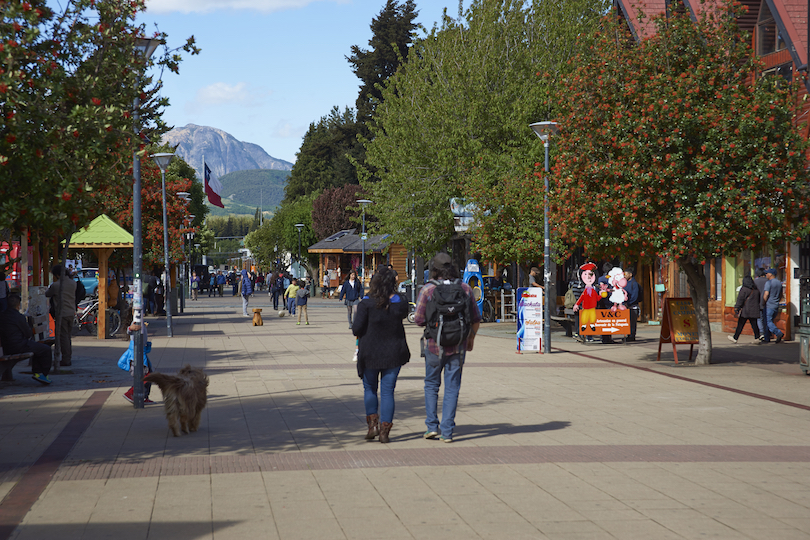
Set in the beautiful landscape of the Northern Chilean Patagonia, Coyhaique is the largest city in the area and is the urban center for the region. As such there are various malls, restaurants, hotels and nightclubs for visitors to check out.
While the setting of the city is stunning with the impressive mountains rearing up all around it, most visitors use it as a base from which to explore the nearby natural wonders. With fantastic trekking, fly-fishing and mountaineering on offer, the surrounding delights of Patagonian ice caps and the lovely sights that line the winding Carretera Austral road make Coyhaique worth stopping by.
14. Puerto Montt
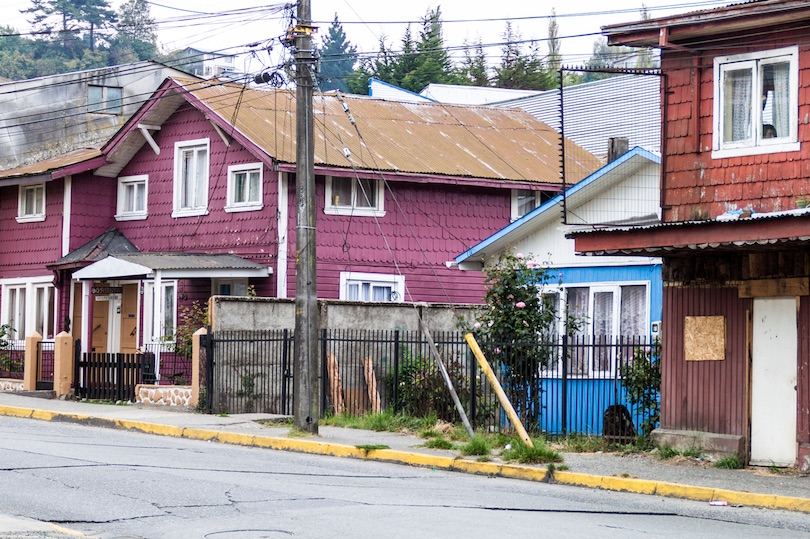
Despite its picturesque setting on an attractive bay with snow-capped mountains on the horizon, even locals sometimes refer to it as ´Muerto Montt´ (Dead Montt) due to the lack of things to see and do.
As an important port, the city is quite grimy although there are a few nice restaurants which are worth checking out. The capital of the Lake District has great transportation links and so Puerto Montt is mainly visited by tourists looking to visit Chile´s glacial lakes, awe-inspiring volcanoes and beautiful national parks.
13. Concepcion
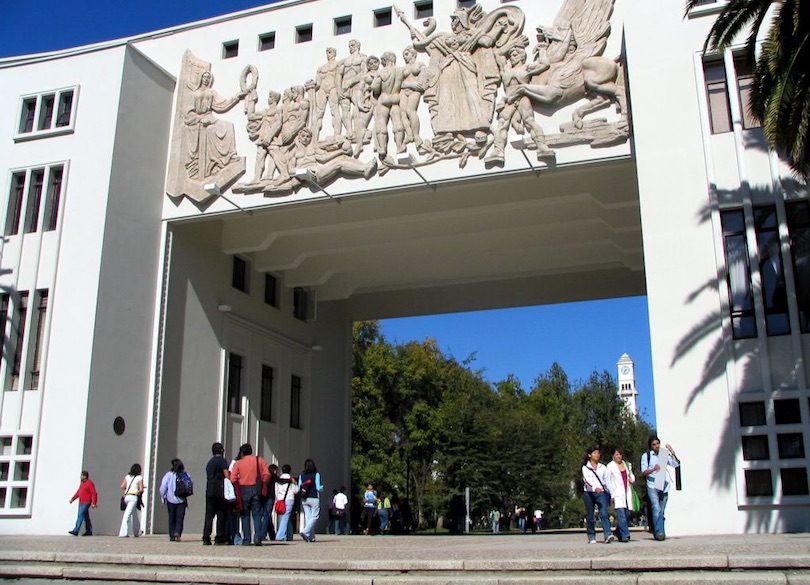
This sprawling metropolis is home to a large student population and consequently there is a lively arts and cultural scene. The youthful feel to the place has manifested itself in a boisterous nightlife and an energetic music scene with many of Chile´s best acts originating from Concepcion.
While the city itself is relatively uninspiring due to the earthquakes that have plagued its history, it is the ambiance and energy about the place that makes it worth visiting.
12. Valdivia
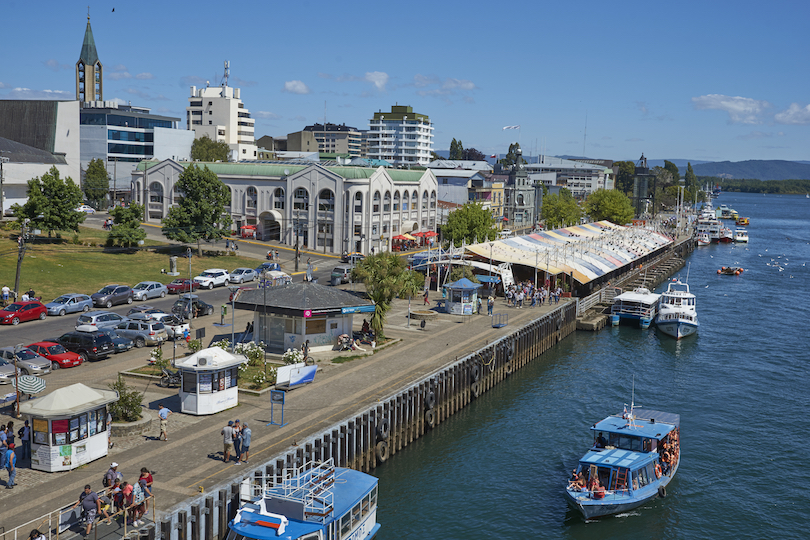
As the most important university town in the south of the country, Valdivia has a lot of cheap bars, restaurants and cafes as well as a thriving arts scene which gives the city a youthful feel to it.
Lying at the spot where the Calle Calle and Cruces rivers join, it is a picturesque place surrounded by waters and wetlands and old colonial buildings are interspersed among more modern edifices. Following Chile´s independence, German settlers flocked to the area and as such there are some great local beers and atmospheric bars. Every year the local brewery puts on a bierfest with German music and performances by folk bands.

A scenic city, Castro lies at the head of a fjord on Chiloe Island and its brightly colored wooden houses that sit on stilts above the water give a distinctive feel to the place. Modern buildings mix seamlessly in with its older buildings and churches and thanks to its range of fantastic trendy restaurants it is considered a gastronomic destination.
Castro is a surprisingly cosmopolitan city for its location although the local Chilote culture still shines through. Many visitors to the city use it as a base to explore the island and the nearby archipelago.
10. Antofagasta
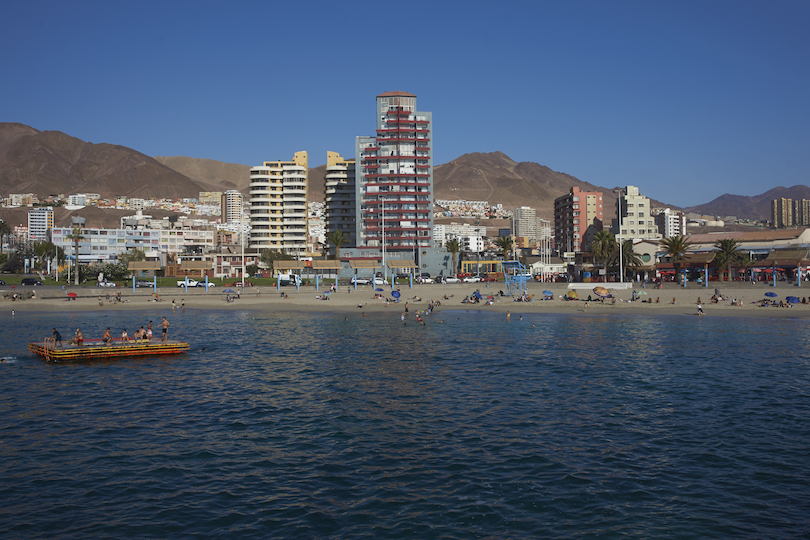
Lying between the Atacama Desert and the Pacific Ocean, this sprawling city is an industrial centre for the region and as such its soulless modern developments and high-rise tower blocks often scare tourists away.
While the grimy port is indeed quite unattractive, Antofagasta does have a few nice spots on offer with the old plaza being particularly pleasant to relax in and Barrio Historico having some lovely old buildings.
The redevelopment of the waterfront and piers has improved things and the rock arch at La Portada is one of the city´s main sights. Most people only stop over on the way to other sites in the area.
9. Puerto Varas
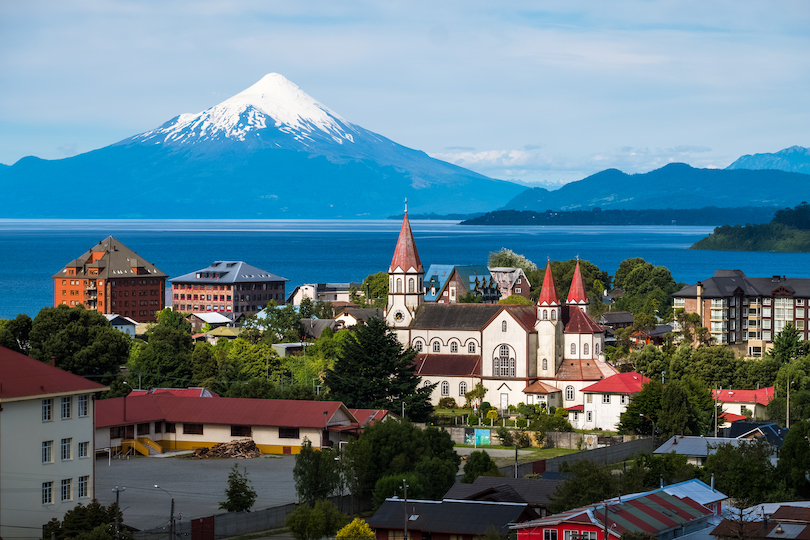
With two domineering volcanoes in the background and the sparkling lake Llanquihue lying before it; Puerto Varas is certainly a picturesque place to visit. With its German heritage and colonial architecture, the city feels as if it has been taken out of Bavaria and the mix of Chilean and Germanic influences is intoxicating.
As there are a plethora of great outdoor activities lying on its borders, many people use it to explore the surrounding rivers and forests with Vicente Perez Rosales National Park being particularly popular.
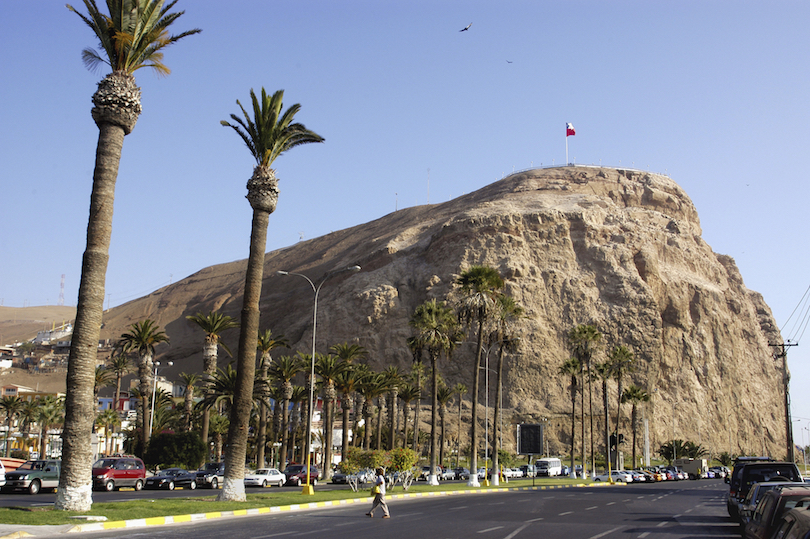
A relaxing, laid-back, peaceful place, the beach resort city of Arica is perfect for kicking back and lounging on the beach. With its fantastic climate and constant sunshine, it´s a popular destination with Chilean and Bolivian tourists and the centre of town sits below the domineering Morro cliff.
Due to its diverse population, the thriving markets are fun to walk around and there are also a couple of nice plazas dotted about. From here you can explore Lauca National Park, head to the nearby Azapa Valley or even venture on to Peru or Bolivia.
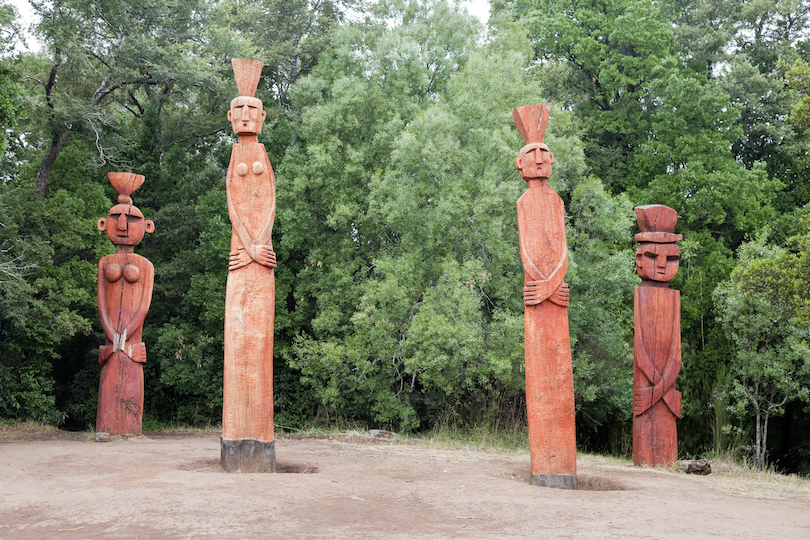
This commercial city is primarily interesting to visit due to its inextricable link with the Mapuche and and it is their rich cultural heritage that makes Temuco worth stopping by. The colourful markets have lots of local crafts on offer and there are still some old traditional buildings hidden about here and there.
Formerly the home of the famous poet Pablo Neruda, Temuco is a leafy tree-filled city which acts as a transport hub for the region. The surrounding countryside is great to explore and Conguillio National Park is not too far away.
6. Vina del Mar
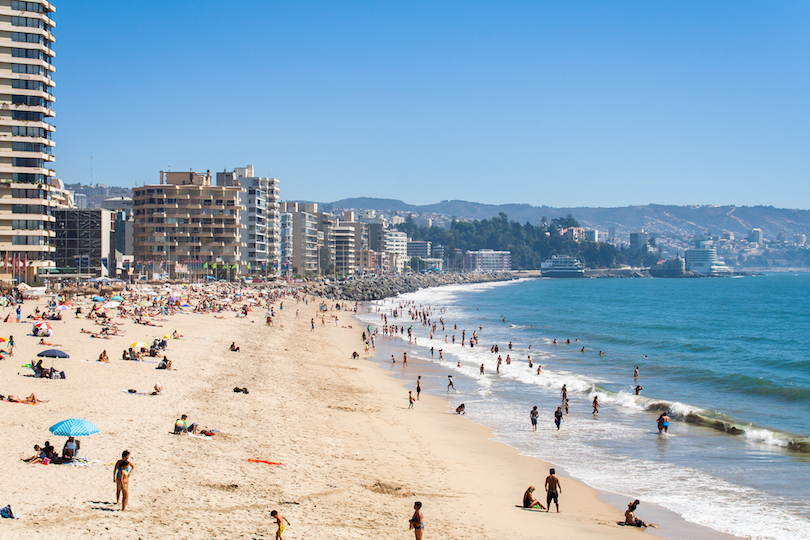
Situated just outside of Valparaiso, Vina Del Mar couldn´t be more different. Clean and uncluttered, leafy avenues cut through the city before palaces and parks give way to the tower blocks that look out over the expansive beach.
Nicknamed Garden City, there are some fantastic botanical gardens on offer and although various parts of the city have retained their elegance and charm, large parts of Vina Del Mar look just like any other beach resort around the world with the usual casino, restaurants and bars. It is very popular however for its lovely beaches and every year hordes of people visit for its amazing music festival.
5. Punta Arenas
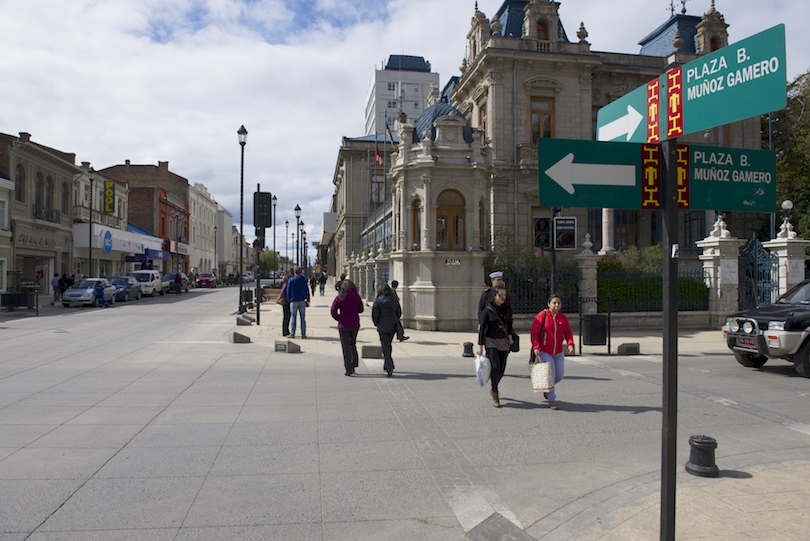
An intriguing mix of rural and urban, wooden tin-roofed houses rub shoulders with giant glistening malls and business buildings in Punta Arenas. An important port, this sprawling city is located right down south in Chile bordering the Magellan Strait and due to the petrochemical industry the population is growing as the area becomes more wealthy.
With lots of tourist services on offer and a plethora of stunning sights lying nearby, Punta Arenas is a great base from which to explore the Tierra del Fuego archipelago and Torres del Paine national park as well as neighboring Argentina .
4. La Serena
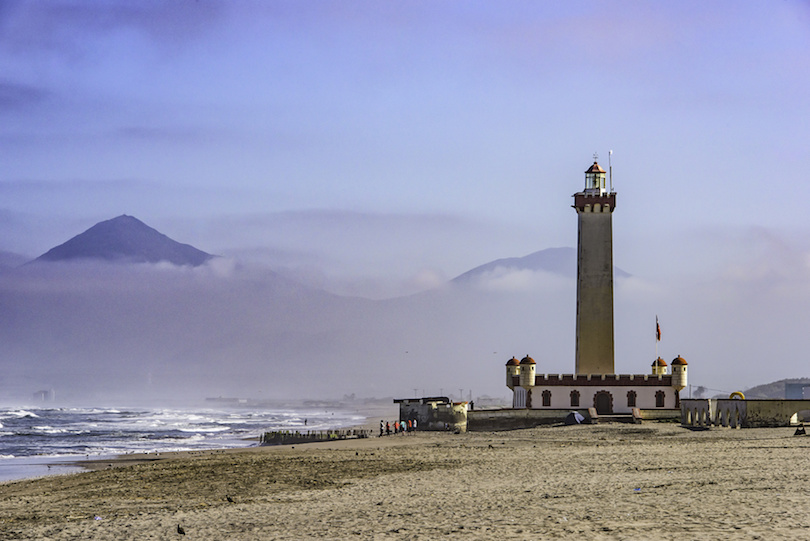
The second oldest city in Chile, La Serena is the capital of its region in the north and is a charming place to spend some time. It has a lovely long beach lining the ocean and lots of great colonial and neo-colonial architecture as well as old stone churches and leafy boulevards.
Apart from the impressive archaeological museum, La Serena doesn’t have much in the way of attractions but it is very rewarding simply wandering around its picturesque streets and stopping by its bustling markets.
In the early months of the year the city is inundated by Chilean tourists but is more relaxed the rest of the year. In the area surrounding La Serena you can make a few great day trips to nearby beaches and the small villages and vineyards that dot the region.
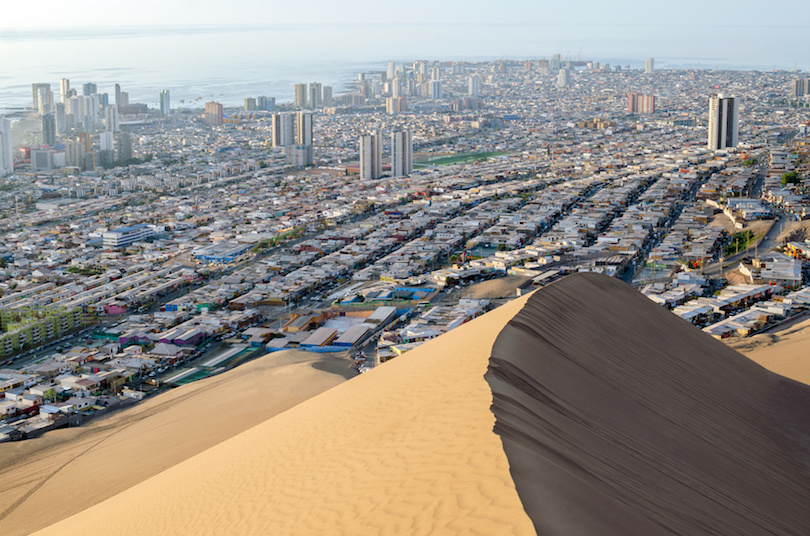
Spectacularly located at the foot of a desolate coastal mountain range with a gigantic sand dune overlooking it, Iquique is a bustling cosmopolitan city with a fantastic beachfront. As it borders the Pacific Ocean and is in a duty-free shopping zone, an eclectic mix of people descend on the city with surfers and casino goers, paragliders and shoppers all equally at ease in Iquique.
One of the best beach resorts in Chile, its lovely oceanfront promenade makes for a peaceful and scenic walk as wooden walkways add to its charm. As well as lounging on the perfect beaches, surfing in its waters or paragliding above the dunes, Iquique is also a great place from which to explore the northern part of Chile.
2. Santiago de Chile

The capital of Chile is home to forty percent of the country´s population and as such it is a bustling, cosmopolitan place full of life and energy. With a wide range of great museums, theaters, galleries and more, there is a vibrant cultural scene with each neighborhood having its own particular feel to the place.
A sophisticated city, you can stop by its world-class restaurants and walk through its fancy neighborhoods and leafy hillside parks before heading to the lively nightlife spots and bars in Barrios Brasil. Snow-capped mountains form a beautiful backdrop to Santiago and, due to its proximity to the ocean; you can ski and visit the beach on the same day!
1. Valparaiso
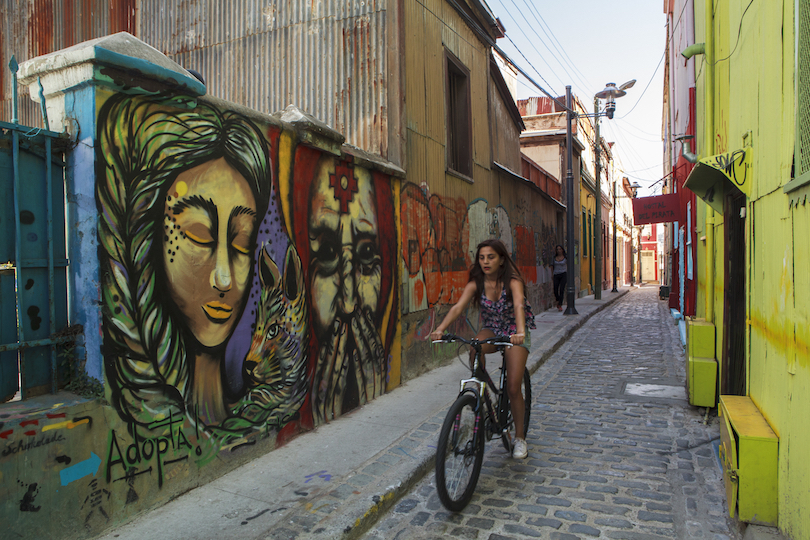
Charming yet messy, colorful but falling apart; Valparaiso´s stunning setting overlooking the ocean only adds to its uniqueness. With winding streets and stairways dripping down the hillsides of the city to the water down below and vibrant street art and brightly painted decaying buildings, Valparaiso is a delight to explore and has long drawn artists and thinkers to its shores.
Despite its bohemian feel, the city is quite grimy and edgy as sailors and prostitutes dot its streets and there are a couple of crime-riddled areas which tourists should avoid. Having said that, Valparaiso is one of the most popular cities to visit in the country and when you see its old town full of atmospheric cafes and bars around the port area; you´ll surely fall in love with this idiosyncratic place.
Map of cities in Chile
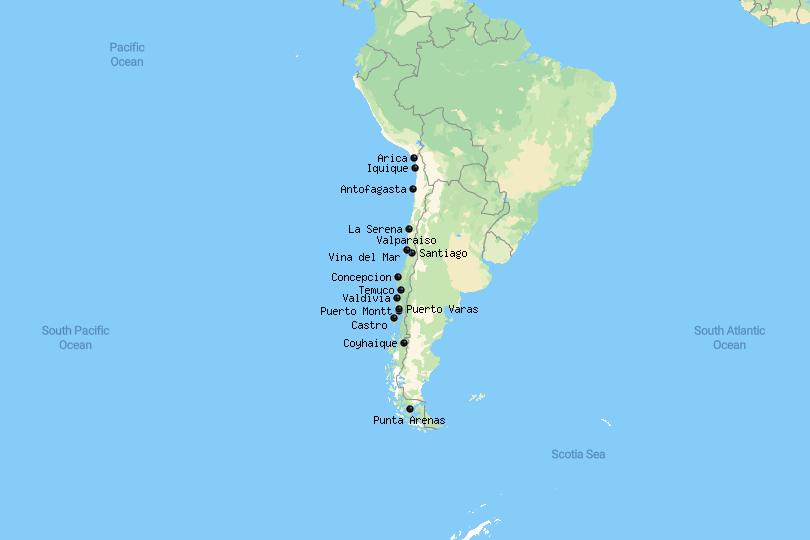
Share this post:
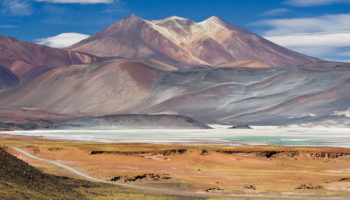
10 Best Places to Visit in Chile
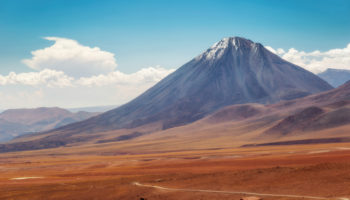
10 Most Amazing Volcanoes in Chile
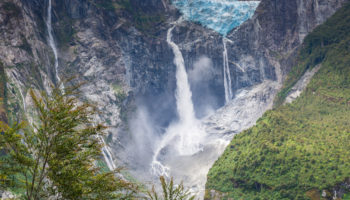
10 Most Beautiful National Parks in Chile
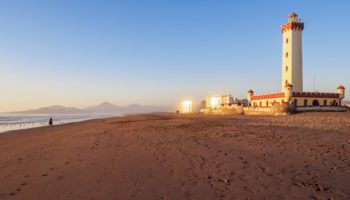
9 Most Beautiful Regions of Chile
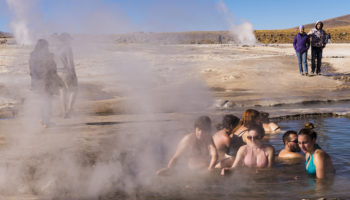
17 Top Tourist Attractions in Chile
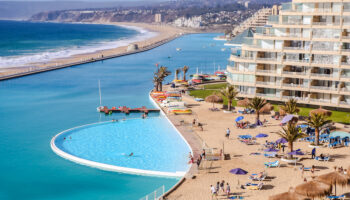
11 Most Awesome Places to Stay in Chile
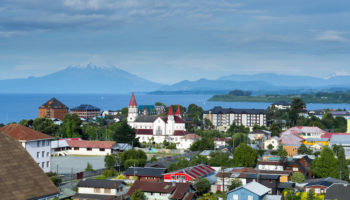
12 Most Charming Small Towns in Chile
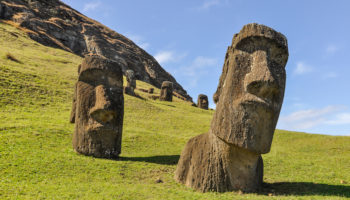
Unravel the Secrets of Chile’s Easter Island
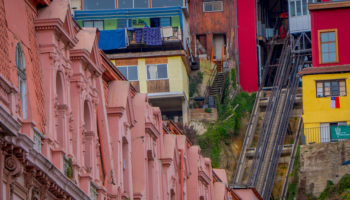
10 Best Things to do in Valparaiso, Chile
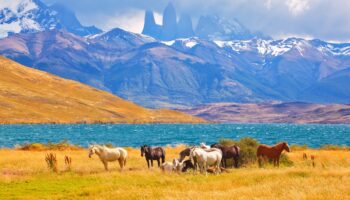
The Majestic Beauty of Torres del Paine National Park
Reader interactions, leave a reply cancel reply.
Your email address will not be published. Required fields are marked *
This site uses Akismet to reduce spam. Learn how your comment data is processed .

Tourism in Chile
Disclaimer: Some posts on Tourism Teacher may contain affiliate links. If you appreciate this content, you can show your support by making a purchase through these links or by buying me a coffee . Thank you for your support!
Tourism in Chile is big business! But why is this such an important industry and how is it best managed? Read on to find out…
Tourism in Chile
Geography of chile, the tourism industry in chile, statistics about tourism in chile, tourist attractions in chile, types of tourism in chile, economic impacts of tourism in chile, social impacts of tourism in chile, environmental impacts of tourism in chile, faqs about tourism in chile, to conclude: tourism in chile.
Chile, a slender ribbon of land stretching along South America’s western edge, offers a geographic and cultural tapestry unlike any other. From the Atacama Desert in the north to the glacial landscapes of Patagonia in the south, Chile presents a diverse array of natural wonders and rich traditions. This article explores the myriad attractions and experiences that define Chile as a captivating travel destination.

Chile is a long, narrow country located in South America, stretching along the western edge of the continent. Here is an overview of the geography of Chile:
- Shape and Borders: Chile extends over 4,300 kilometers (2,670 miles) from north to south but is relatively narrow, with an average width of about 177 kilometers (110 miles). It is bordered by the Pacific Ocean to the west, Argentina to the east, Bolivia to the northeast, and Peru to the north.
- Coastline: Chile boasts an extensive coastline that stretches approximately 6,435 kilometers (4,000 miles) along the Pacific Ocean. It is characterized by rugged cliffs, rocky headlands, fjords, and numerous islands, including the Juan Fernández Islands and the Chiloé Archipelago.
- Regions: Chile can be divided into several geographical regions. From north to south, these include the Atacama Desert, the Norte Chico, the Central Valley, the Chilean Coastal Range, the Andes Mountains, the Lakes District, and the Patagonian region.
- Atacama Desert: Located in northern Chile, the Atacama Desert is one of the driest places on Earth. It features vast stretches of arid landscapes, salt flats, geysers, and unique rock formations. The region is known for its astronomical observatories due to the clear and dry skies.
- Andes Mountains: The Andes Mountain range runs along the eastern border of Chile, separating it from Argentina. This mountainous region is home to many active volcanoes, including Villarrica, Llaima, and Osorno. The Andes offer breathtaking landscapes, high-altitude lakes, and excellent opportunities for trekking and mountaineering.
- Patagonia: Located in southern Chile, Patagonia is renowned for its stunning natural beauty. It encompasses diverse landscapes, including glaciers, fjords, lakes, mountains, and the iconic Torres del Paine National Park. Patagonia is a popular destination for adventure activities, such as hiking, camping, and wildlife watching.
- Lakes District: The Lakes District is a picturesque region known for its pristine lakes, dense forests, and snow-capped volcanoes. It offers opportunities for water sports, fishing, hot springs, and exploring charming towns like Puerto Varas and Pucon.
- Easter Island: Although geographically part of Chile, Easter Island is situated in the southeastern Pacific Ocean, approximately 3,700 kilometers (2,300 miles) off the mainland. It is famous for its mysterious moai statues, which are massive stone sculptures created by the indigenous Rapa Nui people.
- Climate: Chile experiences diverse climates due to its extensive north-to-south stretch. The north features a desert climate with hot and dry conditions, while the central regions have a Mediterranean climate with warm summers and mild winters. Further south, the climate becomes cooler and wetter, with subpolar conditions in the extreme south.
- Natural Resources: Chile is rich in natural resources. It is the world’s leading producer of copper and possesses significant reserves of other minerals, including lithium. The country also has vast agricultural areas, producing fruits, vegetables, wine, and seafood.
The geographical diversity of Chile offers a wide range of outdoor activities, stunning landscapes, and unique ecosystems, attracting travelers from around the world.
The tourism industry in Chile has experienced significant growth in recent years, becoming an important sector for the country’s economy. Chile’s diverse geography, natural beauty, cultural heritage, and outdoor activities attract a wide range of international visitors. Here is an introduction to the tourism industry in Chile:
- Natural Attractions: Chile is known for its breathtaking natural attractions, including the Atacama Desert, the Andes Mountains, the Lake District, Patagonia, and the Easter Island. These destinations offer diverse landscapes, such as deserts, volcanoes, glaciers, fjords, lakes, and pristine beaches, making Chile a paradise for outdoor enthusiasts, adventurers, and nature lovers.
- Adventure Tourism: Chile is a popular destination for adventure tourism. Visitors can engage in activities like hiking, trekking, mountaineering, skiing, snowboarding, rafting, kayaking, surfing, and wildlife watching. The country’s diverse geography and challenging terrains provide ample opportunities for adrenaline-pumping adventures.
- Cultural Heritage: Chile boasts a rich cultural heritage influenced by its indigenous roots, colonial history, and modern developments. Visitors can explore historic neighborhoods, museums, and landmarks in cities like Santiago, Valparaiso, and La Serena. The archaeological sites of the Atacama Desert and the mysterious moai statues on Easter Island offer insights into the country’s ancient civilizations.
- Wine Tourism: Chile’s wine industry has gained international recognition, and wine tourism has become increasingly popular. The Central Valley region, including areas like Maipo Valley and Colchagua Valley, offers picturesque vineyards and wineries where visitors can sample world-class wines, take tours, and enjoy wine tastings.
- Gastronomy: Chilean cuisine is diverse, with influences from indigenous traditions, Spanish heritage, and international flavors. Visitors can savor traditional dishes like empanadas, cazuela (stew), pastel de choclo (corn pie), and seafood specialties. The country also has a thriving seafood industry, making it a paradise for seafood lovers.
- Ecotourism and Sustainability: Chile has been actively promoting ecotourism and sustainable practices. National parks, nature reserves, and protected areas offer opportunities for ecotourism, wildlife conservation, and responsible travel. Sustainable initiatives are also encouraged in accommodations, transportation, and tour operators to minimize environmental impacts.
- Accessibility and Infrastructure: Chile has invested in improving its tourism infrastructure, including airports, roads, accommodations, and tourist services. Major cities like Santiago and Valparaiso are well-connected by international flights, and internal flights and buses facilitate travel to various regions. Accommodation options range from budget hostels to luxury hotels and eco-lodges.
- Tourist Routes and Circuits: Chile offers several well-defined tourist routes and circuits that allow visitors to explore different regions and attractions. Examples include the Ruta del Vino (Wine Route), Carretera Austral (Southern Highway), the Route of the Parks, and the Rapa Nui Cultural Circuit on Easter Island.
- Sustainability and Conservation: Chile has made efforts to protect its natural and cultural heritage through the creation of national parks, reserves, and UNESCO World Heritage Sites. Conservation initiatives aim to preserve unique ecosystems, promote sustainable practices, and ensure the long-term viability of tourism in these areas.
- Hospitality and Services: Chilean hospitality is known for its warmth and friendliness. The tourism industry has grown in response to the increasing number of visitors, leading to the development of quality services, tour operators, guides, and accommodations that cater to the needs and preferences of travelers.
Here are 10 key statistics about tourism in Chile:
- In 2019, Chile welcomed approximately 4.5 million international tourists, marking a 5% increase compared to the previous year.
- Tourism contributed approximately 3.5% to Chile’s GDP in 2019.
- The number of international tourist arrivals to Chile has been steadily increasing over the years, with an average annual growth rate of 11.1% from 2008 to 2019.
- The United States, Argentina, Brazil, and Europe (particularly Spain, France, Germany, and the United Kingdom) are among the top source markets for tourists visiting Chile.
- Santiago, the capital city of Chile, is the main entry point for international tourists, accounting for a significant portion of arrivals. Other popular destinations include Valparaiso, San Pedro de Atacama, Torres del Paine National Park, and Easter Island.
- The tourism industry in Chile generates employment opportunities for a significant number of people. In 2019, it directly employed around 440,000 individuals, accounting for 2.4% of total employment in the country.
- Adventure tourism is a major draw for visitors to Chile. The country offers diverse outdoor activities, including trekking, hiking, skiing, mountaineering, water sports, and wildlife watching.
- Wine tourism has gained prominence in Chile, with its wine regions attracting visitors from around the world. The country is the ninth-largest wine producer globally and offers wine tours and tastings in regions like Maipo Valley, Colchagua Valley, and Casablanca Valley.
- Sustainable tourism practices are emphasized in Chile. The country has developed several protected areas, national parks, and nature reserves to preserve its unique ecosystems and promote eco-tourism.
- Cruise tourism is also significant in Chile, with various cruise lines including Chilean ports in their itineraries. The country’s long coastline, fjords, and stunning landscapes make it an attractive destination for cruise passengers.

Chile is a country filled with remarkable tourist attractions that cater to a wide range of interests. Here are some of the most popular tourist attractions in Chile:
- Torres del Paine National Park: Located in Patagonia, Torres del Paine is one of the most breathtaking national parks in the world. It features stunning granite peaks, glaciers, turquoise lakes, and diverse wildlife. The park offers opportunities for hiking, camping, and wildlife spotting.
- Easter Island (Rapa Nui): Situated in the southeastern Pacific Ocean, Easter Island is famous for its mysterious moai statues. Visitors can explore the archaeological sites, learn about the fascinating history of the Rapa Nui civilization, and witness the unique Polynesian culture.
- San Pedro de Atacama: Located in the Atacama Desert, San Pedro de Atacama is a small town that serves as a gateway to various natural wonders. Visitors can witness otherworldly landscapes, including the Moon Valley, geysers, salt flats, and colorful lagoons.
- Valparaiso: This vibrant coastal city is renowned for its colorful houses, bohemian atmosphere, and artistic heritage. The hills of Valparaiso are adorned with street art, and its historic center is a UNESCO World Heritage site. Visitors can enjoy panoramic views, explore art galleries, and ride the historic funiculars.
- Chiloé Archipelago: Located in southern Chile, the Chiloé Archipelago is known for its distinctive culture and stunning landscapes. The region is dotted with charming wooden churches, palafitos (stilt houses), and offers opportunities for hiking, kayaking, and observing unique bird species.
- Wine Regions: Chile is famous for its wine production, and several wine regions attract wine enthusiasts. The Maipo Valley, Colchagua Valley, Casablanca Valley, and others offer vineyard tours, wine tastings, and the chance to experience the country’s renowned wines firsthand.
- Santiago: The capital city of Chile, Santiago, is a bustling metropolis that blends modernity with historic charm. Visitors can explore the vibrant neighborhoods, visit cultural sites like the Plaza de Armas and La Moneda Palace, and enjoy delicious cuisine and vibrant nightlife.
- Pucon: Nestled in the Lakes District, Pucon is a popular adventure tourism destination. It offers activities like climbing Villarrica Volcano, exploring hot springs, enjoying water sports on Lake Villarrica, and trekking in nearby national parks.
- Lauca National Park: Located in northern Chile, Lauca National Park showcases stunning high-altitude landscapes, including snow-capped volcanoes, lakes, and hot springs. It’s known for its diverse wildlife, including vicuñas, flamingos, and Andean foxes.
- Elqui Valley: Situated in the northern part of the country, the Elqui Valley is known for its clear skies and ideal stargazing conditions. It’s also famous for its vineyards, pisco production, and beautiful landscapes.
These attractions highlight the diverse beauty and cultural heritage of Chile, providing visitors with an array of memorable experiences.
Chile offers a diverse range of tourism experiences, catering to various interests and preferences. Here are some of the most popular types of tourism in Chile:
- Nature and Adventure Tourism: Chile’s natural landscapes are a major draw for adventure enthusiasts and nature lovers. Activities such as trekking, hiking, mountaineering, skiing, snowboarding, white-water rafting, kayaking, and wildlife spotting are popular in destinations like Torres del Paine National Park, the Atacama Desert, Patagonia, and the Lake District.
- Cultural and Historical Tourism: Chile has a rich cultural heritage influenced by indigenous cultures, Spanish colonization, and European immigration. Visitors can explore historical sites, museums, and archaeological sites like Easter Island’s moai statues, Valparaiso’s UNESCO-listed historic center, and the Atacama Desert’s pre-Columbian ruins.
- Wine and Gastronomic Tourism: Chile’s wine regions have gained international acclaim, making wine tourism a popular choice for visitors. Wine enthusiasts can tour vineyards, participate in tastings, and learn about the winemaking process in regions like Maipo Valley, Colchagua Valley, and Casablanca Valley. Chilean cuisine, including seafood dishes, traditional empanadas, and hearty stews, also attracts food lovers.
- Ecotourism and Sustainability: Chile is committed to preserving its natural heritage and promoting sustainable tourism practices. Ecotourism is popular, with protected areas like national parks and nature reserves offering opportunities for eco-conscious travelers to explore pristine environments, observe unique flora and fauna, and support conservation efforts.
- Astronomical and Stargazing Tourism: Chile’s clear skies and favorable atmospheric conditions make it an ideal destination for astronomical and stargazing tourism. Observatories and research centers in regions like the Atacama Desert provide visitors with the opportunity to witness breathtaking views of the night sky, learn about astronomy, and engage in stargazing tours.
- Wellness and Spa Tourism: Chile boasts natural thermal springs and spa resorts that cater to wellness seekers. Destinations like Termas Geométricas and Termas de Puritama offer relaxation, rejuvenation, and therapeutic experiences in the midst of stunning natural surroundings.
- Ski and Winter Sports Tourism: The Andes Mountains provide excellent opportunities for ski and winter sports enthusiasts. Ski resorts like Valle Nevado, Portillo, and La Parva attract visitors from around the world who come to enjoy the slopes, snowboarding, heli-skiing, and other winter activities.
- Beach and Coastal Tourism: Chile’s long coastline offers beautiful beaches, seaside towns, and opportunities for water sports and relaxation. Popular coastal destinations include Viña del Mar, La Serena, Arica, and the surfing hotspot of Pichilemu.
- Birdwatching and Wildlife Tourism: Chile is home to diverse ecosystems, attracting birdwatchers and wildlife enthusiasts. The country offers the chance to spot unique species like flamingos, condors, penguins, marine mammals, and various bird species in their natural habitats.
- Off-the-Beaten-Path Tourism: For adventurous travelers seeking off-the-beaten-path experiences, Chile offers remote and less-explored regions. These include the Carretera Austral in Patagonia, remote islands like Robinson Crusoe Island, and lesser-known national parks that offer solitude and untamed beauty.
These types of tourism showcase the vast array of experiences and attractions that make Chile an exciting and sought-after destination for travelers.
Tourism plays a significant role in the economy of Chile, contributing to job creation, foreign exchange earnings, and regional development. Here are some key points regarding the economic impacts of tourism in Chile:
- Contribution to GDP: Tourism is an important sector of the Chilean economy, contributing directly and indirectly to the Gross Domestic Product (GDP). In 2019, tourism accounted for approximately 3.5% of Chile’s GDP.
- Employment Generation: The tourism industry in Chile generates a substantial number of jobs across various sectors. It directly employs a significant portion of the workforce, including individuals working in hotels, restaurants, transportation, travel agencies, and tour operators. In 2019, tourism directly employed around 440,000 people, constituting approximately 2.4% of total employment in the country.
- Foreign Exchange Earnings: Tourism in Chile brings in foreign currency through the expenditures of international visitors. This revenue contributes to the country’s foreign exchange reserves and helps support economic stability. In 2019, international tourism receipts in Chile amounted to approximately USD 3.3 billion.
- Balance of Payments: Tourism in Chile has a positive impact on the country’s balance of payments. The inflow of foreign currency through tourism revenue helps offset the outflow of currency due to imports and other external expenses.
- Regional Development: Tourism in Chile contributes to regional development by promoting economic activities in various parts of the country. Popular tourist destinations outside major cities benefit from infrastructure development, job creation, and increased business opportunities, helping to reduce regional disparities.
- Diversification of the Economy: The tourism industry contributes to diversifying Chile’s economy, reducing its dependence on traditional sectors such as mining and agriculture. By attracting international visitors, tourism helps stimulate investment, innovation, and entrepreneurship in related industries and services.
- Small and Medium Enterprises (SMEs): Tourism in Chile provides opportunities for small and medium-sized enterprises to thrive. Local accommodations, restaurants, craft vendors, tour guides, and transportation services often benefit from tourism-related demand, leading to the growth of micro-businesses and supporting local entrepreneurship.
- Ancillary Industries: Tourism in Chile creates a ripple effect in other industries, stimulating demand for goods and services. Industries such as agriculture, food production, retail, construction, and entertainment indirectly benefit from tourism-related activities.
- Infrastructure Development: The growth of tourism in Chile often leads to infrastructure development, including the construction and improvement of transportation networks, airports, hotels, restaurants, and other tourist facilities. This not only enhances the visitor experience but also supports the overall development of the country’s infrastructure.
- Investment and Foreign Direct Investment (FDI): The tourism industry in Chile attracts domestic and foreign investments, contributing to its growth and expansion. Investors recognize the potential of Chile as a tourism destination, leading to the development of new accommodations, attractions, and tourism-related businesses.

Tourism in Chile has various social impacts on the local communities, culture, and society. Here are some key points highlighting the social impacts of tourism in Chile:
- Cultural Exchange: Tourism in Chile provides opportunities for cultural exchange between visitors and local communities. Travelers have the chance to learn about Chilean traditions, customs, and heritage, while locals have the opportunity to share their culture, history, and way of life.
- Preservation of Cultural Heritage: Tourism in Chile can contribute to the preservation and promotion of cultural heritage. Historical sites, museums, indigenous communities, and traditional festivals gain recognition and support through tourism, leading to their preservation and safeguarding for future generations.
- Community Empowerment: Tourism can empower local communities by providing economic opportunities. Local residents can engage in tourism-related activities such as offering accommodations, guiding tours, selling handicrafts, and providing local experiences, thus enhancing their livelihoods and socioeconomic conditions.
- Revitalization of Traditional Practices: Tourism in Chile can help revitalize and promote traditional practices and crafts. Local artisans, farmers, and producers often benefit from tourism demand for authentic products, leading to the preservation and continuation of traditional skills and knowledge.
- Cultural Pride and Identity: Tourism in Chile can foster a sense of pride and identity among local communities. Recognizing their cultural heritage and traditions as valuable tourism assets can instill a sense of pride and contribute to the preservation of cultural identity.
- Awareness and Appreciation of Diversity: Tourism in Chile exposes visitors to the diverse cultural and ethnic groups within Chile. By interacting with different communities, tourists gain a deeper understanding and appreciation of cultural diversity, fostering tolerance, respect, and cultural exchange.
- Social Cohesion and Community Development: Tourism in Chile can contribute to social cohesion by promoting interaction and cooperation among community members. Collaborative efforts for tourism development can lead to improved community infrastructure, services, and a sense of unity among residents.
- Education and Awareness: Tourism in Chile can serve as an educational platform, raising awareness about environmental conservation, cultural heritage, and sustainable practices. Visitors often learn about local customs, history, and environmental preservation, fostering a sense of responsibility and respect towards the destination.
- Infrastructure and Services Development: The growth of tourism often leads to the development of infrastructure and services that benefit both residents and visitors. Improved roads, transportation networks, healthcare facilities, and other amenities can enhance the quality of life for local communities.
- Social Inclusion and Empowerment: Tourism in Chile can contribute to social inclusion by involving marginalized groups, indigenous communities, and women in tourism-related activities. Inclusive tourism initiatives can create opportunities for underrepresented populations, promote diversity, and empower vulnerable groups.
While tourism brings positive social impacts, it’s important to address potential challenges such as overtourism, cultural commodification, and maintaining a balance between preserving cultural authenticity and meeting visitor expectations. Responsible and sustainable tourism practices can maximize the positive social impacts while mitigating negative effects, ensuring the well-being of local communities.

Tourism, while bringing economic and social benefits, can also have environmental impacts. In the case of Chile, tourism can affect the country’s diverse ecosystems and natural resources. Here are some key points regarding the environmental impacts of tourism in Chile:
- Biodiversity and Habitat Conservation: Chile is known for its rich biodiversity and unique ecosystems, including forests, deserts, mountains, and coastal areas. Tourism activities can impact fragile habitats and wildlife populations if not managed sustainably. It is crucial to promote responsible tourism practices to minimize disturbance to wildlife and protect sensitive areas.
- Land and Natural Resource Use: Tourism infrastructure, including hotels, resorts, and recreational facilities, requires land for construction and operation. The development of tourism infrastructure may lead to land conversion, deforestation, and habitat fragmentation if not properly planned and regulated. Responsible land use practices are necessary to minimize the environmental footprint of tourism.
- Water Consumption and Management: Tourism activities such as accommodations, restaurants, and recreational activities can put pressure on local water resources. Efficient water management practices, water conservation measures, and responsible wastewater management are important to minimize the impact on freshwater ecosystems and ensure the sustainable use of water resources.
- Waste Generation and Management: Tourism in Chile generates significant amounts of waste, including solid waste and wastewater. Inadequate waste management practices can lead to pollution of water bodies, natural areas, and ecosystems. It is essential to promote waste reduction, recycling, and proper waste disposal methods to minimize the environmental impact of tourism.
- Climate Change and Carbon Footprint: Tourism-related transportation, energy consumption, and infrastructure contribute to greenhouse gas emissions, which contribute to climate change. Promoting sustainable transportation options, energy efficiency, and renewable energy sources can help reduce the carbon footprint of the tourism industry and mitigate climate change impacts.
- Conservation and Protected Areas: Chile is home to numerous national parks, reserves, and protected areas. These areas can experience increased visitor numbers and associated pressures from tourism activities. It is crucial to implement sustainable tourism practices, visitor management strategies, and strict regulations to protect these fragile ecosystems and maintain their ecological integrity.
- Pollution and Air Quality: Tourism-related transportation, particularly air travel and road transport, can contribute to air pollution and decreased air quality. This can have adverse effects on both human health and the environment. Encouraging sustainable transportation options, promoting low-emission technologies, and raising awareness about air pollution are important steps in minimizing the environmental impact.
- Natural Resource Conservation: Tourism activities such as water sports, fishing, and wildlife viewing can put pressure on natural resources if not properly managed. It is crucial to promote sustainable practices and regulations to ensure the conservation of natural resources and minimize negative impacts on ecosystems and biodiversity.
- Education and Conservation Awareness: Tourism in Chile can play a significant role in raising awareness about environmental conservation and promoting sustainable practices. Educational programs, interpretive signage, and responsible tourism guidelines can help visitors understand the importance of protecting Chile’s natural environment and encourage environmentally friendly behavior.
- Collaboration and Sustainable Practices: Collaboration among stakeholders, including government bodies, tourism operators, local communities, and visitors, is essential to address and mitigate the environmental impacts of tourism in Chile. Implementing sustainable tourism practices, supporting local conservation initiatives, and promoting eco-certifications can contribute to minimizing negative environmental effects.
By promoting responsible and sustainable tourism practices, Chile can minimize the environmental impacts of tourism while preserving its natural beauty and ensuring the long-term sustainability of its ecosystems and resources.

Now that we know a bit more about tourism in Chile, lets answer some of the most common questions on this topic:
Q: What is the best time to visit Chile?
A: The best time to visit Chile depends on the region you plan to explore. For central and southern Chile, the summer months (December to February) offer pleasant weather for outdoor activities. In the north, the weather is generally good year-round, but the Atacama Desert can be visited throughout the year due to its dry climate.
Q: Is it safe to drink tap water in Chile?
A: In most urban areas of Chile, tap water is considered safe to drink. However, it is advisable to drink bottled water in more remote or rural areas. It’s always a good idea to check with locals or your accommodation for specific recommendations.
Q: Are credit cards widely accepted in Chile?
A: Yes, credit cards are widely accepted in most establishments, including hotels, restaurants, and shops in major cities and tourist areas. However, it is still advisable to carry some cash for small establishments or when visiting more remote areas.
Q: Do I need a visa to visit Chile?
A: It depends on your nationality. Many countries, including the United States, Canada, Australia, and most European countries, do not require a visa for visits of up to 90 days. However, it’s essential to check the visa requirements for your specific nationality before traveling.
Q: What are the must-visit destinations in Chile?
A: Some of the must-visit destinations in Chile include Santiago, Valparaíso, San Pedro de Atacama, Torres del Paine National Park, the Chilean Lake District, Easter Island, and the wine regions of Colchagua and Casablanca.
Q: Can I visit Easter Island from mainland Chile?
A: Yes, you can visit Easter Island (Rapa Nui) from Santiago. Several airlines offer regular flights to Easter Island, and the flight duration is approximately five hours.
Q: Are there any safety concerns when visiting Chile?
A: Chile is generally a safe country for tourists. However, it’s advisable to take precautions against petty theft and pickpocketing, particularly in crowded areas or public transportation. It’s also recommended to stay informed about any travel advisories or local safety guidelines.
Q: What is the currency in Chile, and can I use US dollars?
A: The official currency in Chile is the Chilean Peso (CLP). While US dollars are widely accepted in some tourist areas and major hotels, it’s recommended to exchange some currency to Chilean Pesos for small purchases or when visiting local establishments.
Q: Are there any travel restrictions or entry requirements due to COVID-19?
A: Travel restrictions and entry requirements are subject to change. It’s important to check the latest travel advisories, entry requirements, and health protocols from official sources, such as the Chilean government or your country’s embassy or consulate.
Q: Can I explore multiple regions of Chile in one trip?
A: Yes, it is possible to explore multiple regions of Chile in one trip. However, due to the country’s elongated shape, travel distances can be significant. It’s recommended to plan your itinerary and consider domestic flights or long-distance buses to optimize your time and cover more ground.
Chile’s tourism sector, reflecting its diverse landscapes and rich cultural tapestry, has become a cornerstone of its economy. As international interest grows, the importance of sustainable tourism practices becomes paramount. To safeguard its unique attractions, Chile must navigate the challenges and opportunities of tourism with foresight and responsibility.
If you enjoyed this article about tourism in Chile, I am sure you will like these too:
- 12 fascinating facts about the biggest desert in South America
- Tourism in Rio De Janeiro
- 55 interesting facts about New Mexico
- 25 Exciting Facts About Paraguay
- 32 Fun Facts about Guatemala
Liked this article? Click to share!

- Huasco Valley
- San Pedro de Atacama
- Elqui Valley
- Antofagasta
- Limarí – Fray Jorge National Park
- Bahía Inglesa
- Alto El Loa
- La Serena and Coquimbo
- Copiapó Valley
- Tagua Tagua – Almahue Valley
- Alto Colchagua Universidad Glacier
- Cachapoal Valley
- Portillo Ski Resort
- Pirque and Maipo Valley
- Aconcagua Valley
- Valle Nevado Ski Resort
- El Colorado Ski Resort
- Curicó Valley
- Maule Valley
- San Antonio/Leyda Valley
- Colchagua Valley and Santa Cruz
- Casablanca Valley
- Viña del Mar
- Cajón del Maipo
- Robinson Crusoe Island
- Rancagua and Sewell
- La Parva Ski Resort
- Rano Raraku
- Llanquihue Lake
- Chillan Ski Resort
- Puerto Montt
- Osorno and Puyehue
- Valdivia and Corral
- Pucón and Villarrica
- Panguipulli
- Temuco and Lago Budi
- Arauco Territory
- Puerto Varas
- Chilean Antarctic Destination
- General Carrera Lake
- Tierra del Fuego
- Coyhaique and Puerto Aysén
- Carretera Austral
- Torres del Paine
- Puerto Natales
- Punta Arenas
- Family recreation
- Coastal beaches
- Lakeside Beaches
- Hot Springs
- Spa and relaxation
- Patagonian cruises
- Lake sailing
- International cruises
- Visits to observatories
- Astronomical facilities
- Indigenous Peoples and Ethnotourism
- World Heritage Sites
- Archaeology
- Paleontology
- Poetry and Literature
- Typical gastronomy
- Gastronomy of the world
- Hiking y trekking
- Skiing and snowboarding
- Mountainbike
- Horseback Riding
- Mountain and rock climbing
- Sport fishing
- Kitesurfing and water sports
- Ice walking
- Overland 4×4
- Paragliding and aerial sports
- Wildlife watching
- Landscape photography
National Parks
- Bird Watching

Updated the day 17 January, 2024
- Entry Requirements
Frequently asked questions
Requirements for entering chile.
As of May 9th, the Protected Borders Plan is no longer in effect. This means that the request for a PCR test and random tests in the entry to Chile are eliminated. A current vaccination certificate will not be required when entering Chile.
Chile opened several of its border crossings for tourists, including Santiago, Iquique, Antofagasta, and Punta Arenas airports. You can check the terrestrial open border crossings here: at this link .
The people who oversee this supervision are the authorities in charge of migratory control at airports, border controls, etc. (Policía de Investigaciones, mainly), and it will take place upon entry registration in the country.
Every foreigner who enters the country as a holder of a temporary residence permit must prove before the control authority that they have the legal means for survival that allow for their stay in the country during the period of validity of their permit, as well as that of people subject to their dependency who accompany them.
The way to prove the amount can be shown in different ways, including cash, a bank account statement, a credit card, etc.
Travelers shall have their Single Entry Form (FUI) , their round-trip ticket, and a reservation at a tourist service registered in SERNATUR or an invitation letter from the Provincial Delegation.
Protocols for your favorite attractions
The new post-Covid-19 tourism will demand strict standards of hygiene and sanitation of spaces, therefore, the invitation is to adopt these recommendations and adopt a new travel culture
PROTOCOLS FOR TOURIST LODGING
WHAT SHOULD TOURISTS DO TO COMPLY WITH THEM?
When you arrive and check-in…
- Observe the social distancing required.
- Allow establishment to take your temperature and disinfect your hands.
- Avoid exchanging papers, brochures, or pencils.
- Prefer digital pre-checking.
- Wear face mask at all times.
- Pay with bank card or via electronic transfer.
During your stay…
- Always remember to wear face mask.
- Wash your hands frequently. The hotel should have areas enabled to wash hands with soap or hand sanitizer gel dispensers.
- Leave keys or cards in the containers provided.
- Prefer activities or meetings in open spaces.
- Notify hotel staff if you have Covid-19 symptoms or suspect you have them.
When going to eat…
- Self-service should be kept to a minimum. Ideally, the tourist should not handle food.
- Ideally, buffet breakfast should not be available. If they cannot be eliminated, make sure that safety measures are available to implement.
Ski Centers
SKI CENTER GOOD PRACTICES GUIDELINES
- Ski centers have special structure and operation features; hence you will find that measures vary based on the activity.
- Observe the instruction of each establishment or activity. If, for instance, you go to a restaurant, the rules will be the same as those that are implemented throughout the country and observing allowable capacity, social distancing, use of face mask, and washing of hands is prioritized.
If you are at the establishment’s ticket office or entrance…
- Prioritize buying tickets online to help minimize overcrowding.
- Observe the minimum recommended distancing.
- Clean your hands. There will be hand sanitizer gel dispensers available in the ticket control area and throughout the center.
- Learn the rules implemented by the establishment.
- Remember to use snow gloves and “face mask type” protection suitable for the location, otherwise you will not be able to enter.
- Allow your temperature to be taken and complete the health self-survey.
- Locker rooms will not be available, arrive ready from home.
- Each center will have sanitization guidelines such as glove disinfection. Observe the instructions of the establishment’s instructors and staff.
Facilities or equipment rental…
- Rental services will only operate if physical distancing and maximum capacity are ensured and if entrances are controlled with unidirectional flow per station.
- Prefer contactless card payment.
- If there is a digital pre-rental plan available, use that option.
- Respect the minimum distancing established.
- Everything must be properly disinfected. You can help by avoiding touching objects with your hands.
Restaurantes and coffee shops
GASTRONOMIC SECTOR PROTOCOLS
WHAT SHOULD TOURISTS DO TO COMPLY?
- Do not enter the premises while at full allowed capacity.
- Let the establishment take your temperature and disinfect your hands.
When sitting…
- You should always wear face mask, but when taking it off to eat you should not leave it on the table.
- Remember that everything will be disinfected and you must observe the distance with whom you are attending. Menu will not be on printed paper.
- Observe the number of people allowed per table.
If you go to the restroom…
- Everything will be disinfected. However, avoid touching handles and faucets directly with your hands.
- Prefer drying with paper towel, which should be available to users.
When leaving…
- Prefer bank card or electronic transfer payment.
- Remember to wear face mask.
- Maintain social distancing and leave through approved exits.
The restaurant must sanitize tables after each customer use and make sure that all utensils are disinfected and ensure kitchen and restroom cleanliness. Ventilation of areas is the restaurant’s responsibility and recommended protocol must be followed in its entirety.
Adventure tourism
GOOD PRACTICES GUIDELINES FOR ADVENTURE TOURISM
WHAT MUST TOURISTS DO TO COMPLY WITH THEM?
In public service offices…
- Observe the number of people allowed inside.
- Make pre-reservations via digital channels or telephone.
- Allow temperature to be taken.
- Avoid exchanging printed material.
- Wash your hands constantly. Disinfectant dispensers should be available in the establishment.
During the activity…
- Notify if you have any Covid-19 symptom.
- If possible, buy travel insurance coverage for the type of activity.
- Number of people per group and capacity as per the recommendations of the health authorities. Observe them.
- Find information on the safety practices and restrictions of the company you are hiring.
- If you are in an enclosed area, remember to wear face mask.
GOOD PRACTICES GUIDELINES FOR CAMPING
Upon arrival…
- Remember that the use of face mask is mandatory.
- Observe the area’s entrances and the instructions provided upon your arrival.
- Wash your hands properly and constantly.
- Keep the recommended social distancing.
- If you made reservations, remember that you should have previously accepted the establishment’s contingency plan terms.
- If you did not make reservations, you will be sent a document electronically on the contingency plan, which you must accept to formalize your stay.
- Prefer electronic transfers or bank card payments.
- If possible, communicate with the person in charge of the campsite by phone to avoid moving around the establishment.
- Observe the posted signs with information on restrictions.
- If the campsite includes dining room or common areas, remember that said areas must be closed if ordered by the health authorities.
- Be aware of health care centers around you and inform the staff if you have any Covid-19 symptoms.
Mice Tourism
GOOD PRACTICES GUIDELINES FOR MICE TOURISM
Meeting venues…
- Everything must be previously disinfected and ventilated.
- Entrances and exists must be defined and restricted if several are available.
- Observe distancing allowed while standing and sitting.
- Observe the number of attendees allowed.
- Wash your hands constantly.
- Avoid exchanging pencils, papers, or folders.
Coffee breaks…
- Avoid exchanging objects with other attendees.
- Everything will be disinfected and utensils will be disposable. Observe this restriction and contribute to its enforcement.
- Remember, always maintain the recommended distancing.
- Upon arrival, allow the establishment to take your temperature and find out about the practices implemented by the venue. Remember that you must fill out a health statement truthfully and report if you have coronavirus symptoms.
Rural Tourism
GOOD PRACTICES GUIDELINES FOR RURAL TOURISM
- Remember to always wear face mask.
- Observe the recommended social distancing.
- Find out about the venue’s rules and read brochures or posters on restrictions.
- Avoid touching the venue’s objects.
- Remember to fill out your health statement online.
- Allow the venue to take your temperature.
If you decide to use rural tourist lodging…
- Do not forget your face mask and hand washing.
- Observe the venue’s restrictions and social distancing.
- Avoid the exchange of printed material.
- If possible, make reservations in advance through websites, social networks, WhatsApp or telephone.
- Prefer bank card or electronic transfer payments.
- If you use keys, place them in their assigned containers.
- Objects such as carpets or cushions will be removed from rooms.
- Observe these changes which are intended to prevent the spread of the virus.
- If you use food services, remember to observe the allowed capacity.
If you use trails…
- Ask what tours, circuits, and activities are allowed.
- Observe the frequency established for their use.
- Remember the maximum number of people allowed per tour and observe that restriction.
Tour guides
GOOD PRACTICES GUIDELINES FOR TOUR GUIDES
WHAT MUST TOURISTS KNOW?
- Tour guides operating independently must decide the tenor of the tour, sanitary measures, regulations, etc.
- Before formalizing your reservation, you must read and accept the implemented regulations and guidelines.
WHAT MUST TOURISTS DO TO COMPLY WITH THESE GUIDELINES?
Before starting the tour…
- You must fill out a document in which you accept the terms of the activity, declare your physical condition, and health history.
- Let them take your temperature and check for coronavirus symptoms.
- Listen carefully to all the information that the tourist guide provides you.
- You should never remove face mask.
- Remember to wash hands constantly. If there are not facilities or hand sanitizer gel available, the tour guide should provide them.
- Observe the number of people allowed per tour.
- Observe all the instructions provided taking into account that if you enter a place it may have different rules. Read them and follow them.
- If you interact with other tourists, remember to keep the recommended social distancing.
- The tourist guide will inform you about health services near the area. Keep them in mind in case of an emergency and tell the tourist guide if you have any Covid-19 symptom.
PROTOCOLS FOR CEREMONIES
- Observe the maximum capacity allowed and find out about the district’s phase where the ceremony is held. The number of people allowed in the venue will be based on that.
- Make sure that the ceremony does not last more than 2 hours.
- Remember that wearing face mask is mandatory at all times.
- Avoid overcrowding and observe social distancing.
- Sanitize your hands frequently.
Swimming pools
PROTOCOLS FOR THE USE OF PUBLIC SWIMMING POOLS
Before arriving…
- Book tickets online or buy them in advance to avoid crowds.
- Make sure that you do not have any symptoms or have not been in contact with anyone that is infected.
- Organize going to a public swimming pool with your closest family group and avoid socializing with other people.
- Avoid bringing too many accessories and implements that can be shared. Bring just the necessary things.
While in the premises…
- Observe the allowed capacity, exits and entrances, and social distancing.
- Do not take face mask off, except when entering the pool.
- Remember that you cannot use slides or games.
- Arrive with swimsuit on, remember that lockers will not be available to change clothes.
- When using restrooms, observe the corresponding queue to avoid overcrowding and remember to wash your hands.
- Do not stay in the pool too long. It will be controlled to avoid overcrowding.
Commerce and services
PROTOCOLS FOR TRADE AND SERVICES ESTABLISHMENTS
- Wear face mask always.
- Observe the site’s recommended physical distancing.
- Prefer bank card payments and sanitize your hands after use.
- Disinfect your hands.
- Allow the venue to take your temperature and check your health upon arrival.
- Observe the venue’s allowed capacity and implemented safety measures.
GOOD PRACTICE GUIDELINES FOR BEACHES
WHAT SHOULD TOURISTS DO TO COMPLY WITH GUIDELINES?
In the area…
- Observe the distance defined by the concession holder. At least one meter, avoiding all physical contact.
- Remember that the use of face mask is still mandatory, except when entering the sea.
- Follow the authorities’ self-care recommendations.
- If you go with children, avoid using the children’s playgrounds and, if they do, clean contact areas before using.
- Hand washing is still permanent even if you are at the beach.
- Clean and disinfect personal items at all times.
- Don’t litter. Discard waste at the assigned areas.
- Remember to bring and take care of cleaning supplies, such as hand sanitizer gel, face mask, and disinfectant wipes. When you leave, do not leave them discarded.
- Avoid sharing lotions or personal items, as well as food or fluids.
- If you buy items, buy them in approved establishments that comply with health protocols and, if possible, pay with bank cards.
- If you use chairs or beach chairs, avoid sharing them and make sure they are properly sanitized.
AIRPORT PROTOCOL
WHAT SHOULD TOURISTS DO TO COMPLY WITH PROTOCOL?
At the terminal:
- The use of face mask is always mandatory.
- Remember to sanitize your hands.
- Observe, in any terminal area, the one-meter distance with a passenger of another group.
- Fill out the Passenger Location Form accurately.
- Enter the passenger terminal alone, with the exception of minors, senior adults, or people requiring assistance.
- Follow the health authorities’ instructions of and obtain information on the venue’s protocols.
Before flying:
- Observe the one-meter distance and floor markings installed for this purpose.
- Distancing between people of a same household will not be required.
- Avoid touching the venue’s handles, devices in place and your face.
- Follow the instructions of aviation personnel.
- Carry the least number of items in your pockets to avoid overcrowding the control area. If this is not possible, keep them in your hands so that they can be quickly placed on trays.
- Queue only if you are called to board.
- Keep at least one meter away from the boarding queue.
After the flight…
- Remove your luggage only when instructed.
Urban parks and aquares
URBAN PARKS AND SQUARES PROTOCOL
Before arriving:
- Coordinate visits and avoid going in large groups.
- Find out about the corresponding allowed capacity of each area you wish to visit.
- If you must buy a ticket, prefer purchases in advance and online.
- If possible, bring your own disinfecting items plus a bottle of water to avoid sharing with others.
On the venue:
- Observe the allowed capacity of each park, trail, or square.
- You cannot remove your face mask, as its use is always mandatory.
- Keep the recommended distance of at least 1 meter between people of a same group and 5 meters between different groups.
- Avoid touching surfaces. If not possible, remember to disinfect your hands and do not touch your face.
- Observe the instructions of each area, such as the use of benches, special exercise areas for seniors, facilities, or safety tapes.
- Do not leave waste in the area. Discard waste in the nearest waste container.
MUSEUM, CULTURAL CENTER, AND ART GALLERY PROTOCOLS
Establishment…
- Prefer buying or booking tickets online.
- Find out sanitary measures of each place and observe them.
- Comply with physical distancing rules.
- Remember to wear face mask at all times.
- Sale and consumption of food is prohibited inside these establishments to prevent visitors from taking off their masks.
- If you enter a coffee shop or store inside the establishment, observe their instructions and protocols.
- Everything must be properly sanitized. Contribute to cleanliness and wash your hands frequently with water or hand sanitizer gel.
- Observe the maximum capacity allowed. If you must wait outside to enter, maintain social distancing and respect the line.
- If you can schedule a guided tour, prefer that option. This way schedules will be maintained and crowds will be avoided.
During your tour…
- Do not remove your face mask.
- Maintain physical distancing.
- Wash your hands frequently.
- Avoid touching objects, handles, or gadgets.
- Observe the instructions provided by tour guides or those posted by the establishment.
- Prefer electronic or bank card payments.
PROTOCOL FOR ZOOS OPEN TO THE PUBLIC
WHAT MUST TOURISTS DO TO COMPLY?
- Do not remove your mask at any time.
- Comply with entry protocol focused on checking your health status. Allow the establishment to take your temperature.
- If possible, bring your own alcohol or hand sanitizer gel plus a bottle of water.
- Prefer groups of few people.
- Observe the instructions and safety measures of each place.
- Maintain a minimum distancing of 1 meter from other groups of visitors.
- If you enter an allowed enclosed area, observe the allowed capacity.
- Keep the allowed distance from animals and observe boundaries.
PROTECTED WILDLIFE AREA PROTOCOLS
- Let the establishment take your temperature.
- You must enter with a face mask and wear it inside the site.
- Help preventing overcrowding.
- Listen carefully to safeguard instructions provided at the beginning of the visit.
- Remember to keep your distance. Two meters recommended for groups or families.
- Your group cannot exceed 15 people.
- Be aware of cleaning and self-care measures.
- Do not have direct contact with park rangers, people from local communities, or others without the mandatory security measures.
- Don’t forget to frequently wash your hands and sanitize your personal items such as backpacks, clothes, bottles or others after the activity.
- You must attend the mandatory prevention induction sessions. They may be online or in person.
- Collaborate with the park ranger’s instructions and safety measures such as taking the temperature.
Facilities…
- Long or difficult trails may be closed to minimize not only contagion risks, but also accidents that could increase the work load of health care systems, police, or firemen.
- When using individual trails, maintain the recommended physical distancing.
- It is very likely that lookouts will be closed since they may be a source of contagion. Observe the instructions of each area you visit.
- If you decide to eat in the destination’s assigned areas, observe physical distancing at each table.
- In case of grills, there will be an allowed capacity to observe distancing.
Astrotourism
GOOD PRACTICE GUIDELINES FOR ASTRONOMY CENTERS AND ASTROTOURISM
Before the tour:
- Book tickets online or by phone in advance.
- Find out about the safety measures and protocols implemented for your experience. Help make sure that everything is observed.
- Face masks are mandatory for the entire experience.
- Maintain a distance of 1.5 to 2 linear meters with another person.
- Observe markings installed at each area. Follow the venue’s rules and safety instructions as well.
- Wash your hands or use hand sanitizer gel when necessary.
- Avoid handling objects.
- Carry and protect your personal and hygiene items.
- Remember to bring warm clothes. Tours are at night and the company may not provide these items to avoid contagion.
- If you visit enclosed facilities, observe the venue’s rules.
- When using restrooms, use disposable paper towels to dry your hands.
- Prefer electronic or bank card payment.
PROTOCOL FOR CASINOS, GAMBLING, AND ENTERTAINMENT ESTABLISHMENTS
WHAT MUST TOURISTS DO TO COMPLY WITH THE PROTOCOL? Inside the venue… • Observe the allowed capacity as well as physical distancing and recommendations issued. • Remember that the use of face mask is mandatory at all times. • Avoid generating agglomerations. • Disinfect hands constantly, especially after handling shared objects. • Find out the stage of the venue’s community. The operation must observe the Step by Step Plan and measures such as venue capacity or operating days may change. • Prefer bank card payments. Slot machines, bingos, and games… • You will only be able to use slot machines that have been sanitized and are not blocked or disabled. • Disinfect hands and objects continuously. Cleaning items for this purpose will be available in these areas. • Disinfect slot machines before use. Disinfecting wipes will be available on site or the staff will provide you with a cleaning kit. • Avoid exchanging tokens and other items. • Observe the venue’s demarcations. • Consumption of food and beverages is prohibited.
Agencies and tour operators
TRAVEL AGENCIES AND TOUR OPERATORS GOOD PRACTICES GUIDELINES
Before going to a place…
- Check schedule online or by phone.
- Schedule in advance your service to avoid overcrowding the place.
- Make sure you do not have any coronavirus symptoms before going.
When you are in a place…
- Remember to use face mask and observe recommended distancing.
- Wash your hands frequently and avoid touching objects.
- Allow your temperature to be taken while entering the place.
- Your cell phone will be the option to inform you when you are at the place to avoid using brochures or printed material.
- When paying prefer electronic transfers or bank card payments.
- If you use cash, wash your hands thoroughly before and after doing transaction.
During the tour…
- Follow the instructions of your tour guide and observe the imposed restrictions.
- Remember that not all destinations are enabled.
- Avoid close contact with other people and touching objects in places.
GOOD PRACTICES GUIDELINES FOR ENOTOURISM
Upon arrival to the vineyard, remember that…
- You must allow the establishment to take your temperature and fill out an online health statement.
- You must carry your identification. The venue’s personnel will request identification for preventive and traceability purposes.
- Wearing face mask is mandatory.
- Hand washing is essential to prevent the spread of Covid-19.
- Keep the required social distancing.
- It is your obligation to find information on the measures implemented by the venue. Read posted signs.
- If you make reservations online, you are helping to minimize contagion.
- Each area should be properly disinfected, however, avoid touching handles, keys, or tables to minimize contagion.
- If you use the venue’s rest rooms, dry your hands with paper towel.
- Always listen to the Tourist Guide, he/she will inform you about safety measures.
- Groups cannot exceed 10 people. Contribute observing this rule.
- The vineyard will redistribute parking lots and spaces to avoid overcrowding. Contribute observing this measure.
- Prefer bank card payments, electronic transfers, and online reservations.
Touring the vineyard…
- Take advantage of the natural resources that the vineyards offer.
- Avoid manipulating objects, lids, or signs.
- During wine tasting, the tour guide should use gloves and avoid, for example, touching glasses with the bottle’s neck.
- Use hand sanitizer gel and clean your hands before entering the wine tasting area.
- If you are assigned a tasting glass, keep it in a safe place and remember that it is for your personal use.
- Observe allowed capacity and recommended social distancing.
- Avoid manipulating the available products.
- Wash your hands and remember to wear face mask.
Chile takes care of you
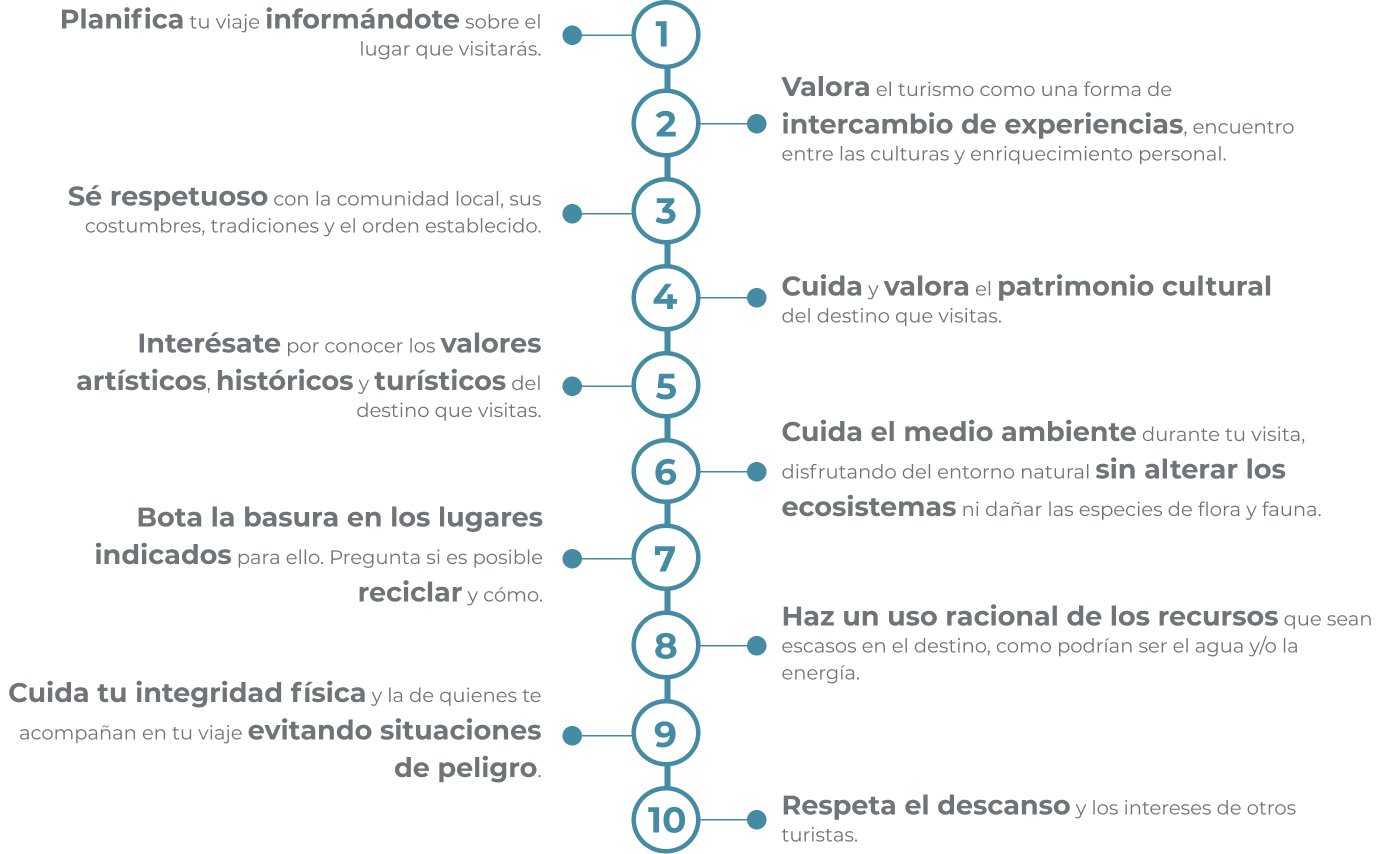
Check out the indispensable recommendations for your next trip to our country. here
Tourist confidence
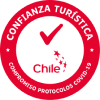
Choose the services that have joined our protocols against COVID
Social networks

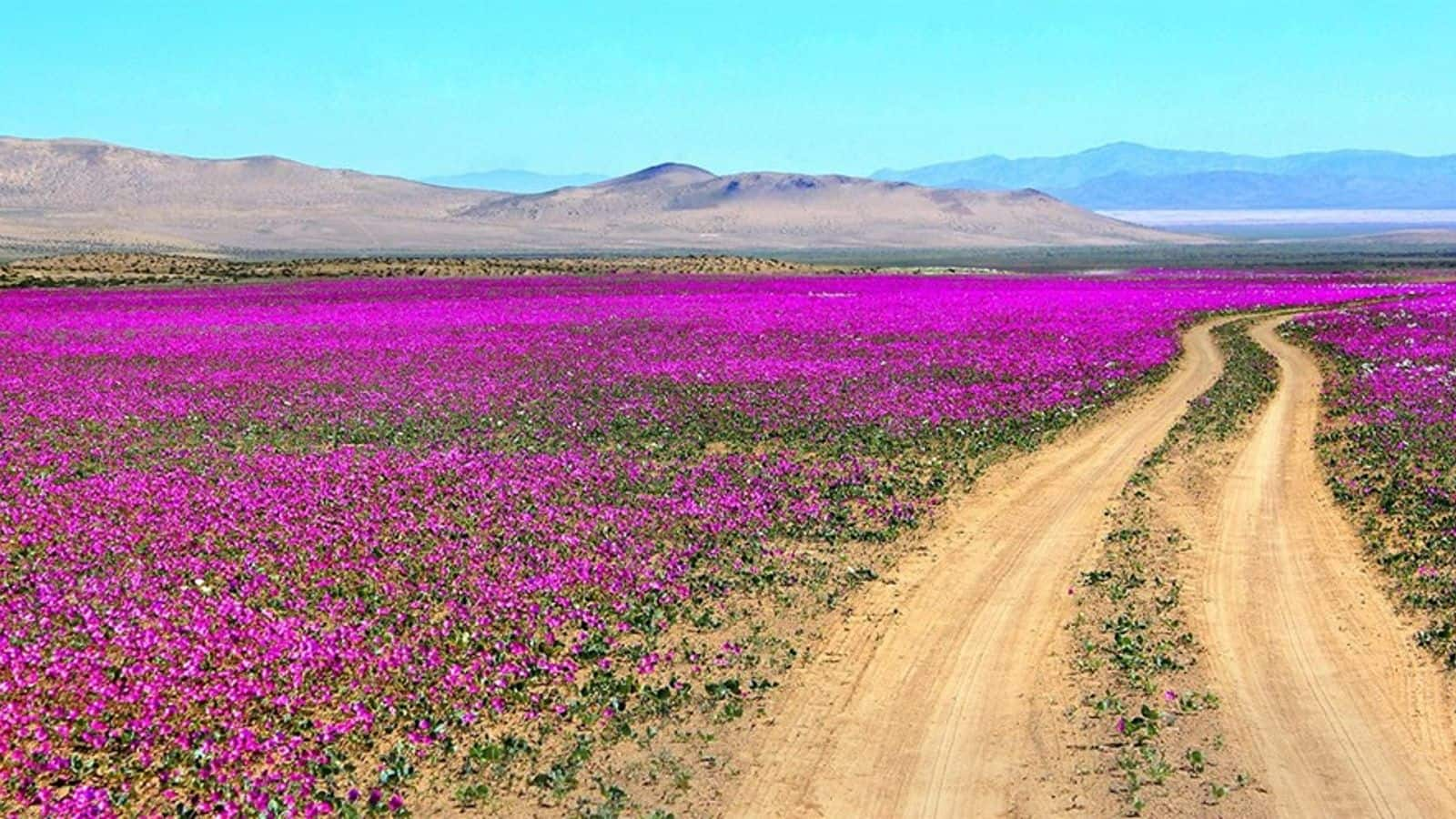
Witness Atacama's desert bloom spectacle
The Atacama Desert in Chile , known as the driest desert on Earth, transforms into a breathtaking spectacle of color during its rare bloom. This phenomenon occurs when rainfall is higher than usual, awakening seeds that have lain dormant in the soil for years. The result is a vibrant display of flowers stretching across the desert landscape, offering a unique and unforgettable experience for visitors.
Plan your visit timing
To witness the desert bloom in Atacama, precise timing is essential. This rare phenomenon usually unfolds between September and November, after the winter rains have nourished the arid land. However, it's not guaranteed to occur annually as it heavily relies on sufficient rainfall. For the best experience, regularly check weather forecasts and local news updates to plan your visit during a bloom year.
Explore diverse landscapes
The Atacama Desert's bloom is captivating, but its landscapes offer more. Beyond flowers, there are salt flats, geysers, and lunar-like valleys. Night skies here are perfect for stargazing. For safety and to learn about these geological wonders, guided tours are advisable. This approach ensures visitors fully experience the diverse natural beauty of Atacama's terrain without missing its geological significance.
Capture the colorful display
The Atacama Desert turns into a paradise for photographers when it blooms, showcasing vivid flowers against sandy hues. The best natural lighting for capturing this spectacle occurs early morning or late afternoon. Visitors should respect this unique environment by not picking flowers or disturbing wildlife, ensuring the beauty of the desert is preserved for everyone to enjoy.
Respect local guidelines
The bloom seasons bring many tourists to the Atacama, impacting its fragile ecosystems. It's crucial to follow conservation rules: stay on designated paths, remove all litter, and conserve water in this dry area. By supporting local businesses, tourists can help spread the economic benefits of tourism throughout the community, ensuring a positive impact on both the environment and local economy.

Passing Thru Travel
15 Eco-Islands 2024 – Sustainable Island Retreats
Posted: February 24, 2024 | Last updated: February 24, 2024

In an age where sustainable travel is not just a preference but a necessity, islands around the world are leading the way in eco-friendly tourism. These destinations offer more than just stunning beaches and clear waters; they are committed to preserving their natural beauty and cultural heritage. From the remote corners of the Pacific to the vibrant ecosystems of the Caribbean, this guide explores 15 of the world’s most sustainable island getaways. Each of these islands offers a unique blend of responsible tourism practices and unforgettable natural experiences, ensuring that your visit leaves a positive impact.
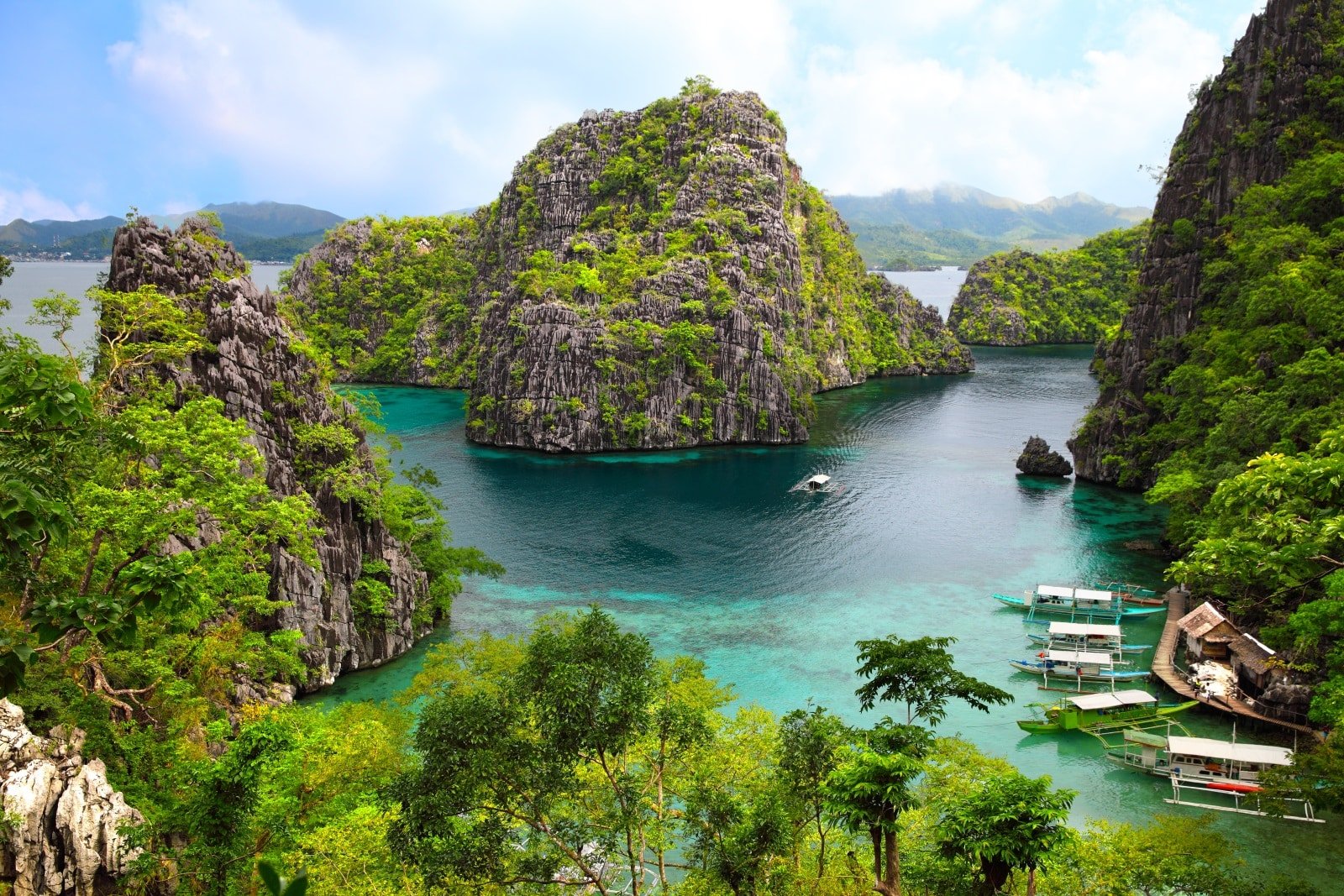
1. Palawan, Philippines
Palawan, the Philippines’ ecological marvel, is a testament to sustainable island living. This lush paradise, with its crystal-clear waters and rich marine life, is a haven for eco-conscious travelers. The island’s efforts in conservation are evident in attractions like the UNESCO-listed Puerto Princesa Subterranean River National Park and the sustainable luxury resorts in El Nido. Community-based tourism initiatives here not only protect the environment but also support local livelihoods. Visitors can engage in snorkeling, island-hopping, and exploring hidden lagoons, all conducted with respect to the natural surroundings.
Insider’s Tip: Engage in community-led tours for an authentic and responsible exploration of the island.
When To Travel: The dry season from November to May offers the best weather.
How To Get There: Fly to Puerto Princesa or El Nido from major cities in the Philippines.

2. Galapagos Islands, Ecuador
The Galapagos Islands, a unique showcase of biodiversity, are a global model for sustainable tourism. The Ecuadorian government and local operators maintain strict controls to preserve the islands’ delicate ecosystems. Visitors can marvel at the unique wildlife and volcanic landscapes while contributing to conservation efforts. The islands offer a range of eco-friendly accommodations and tours that prioritize environmental responsibility. Activities include guided nature walks, snorkeling with sea lions, and observing the famous Galapagos tortoises in their natural habitat.
Insider’s Tip: Opt for smaller, eco-certified cruises to minimize your environmental impact.
When To Travel: Visit from June to December for cooler temperatures and active wildlife.
How To Get There: Fly to Baltra or San Cristobal from mainland Ecuador.
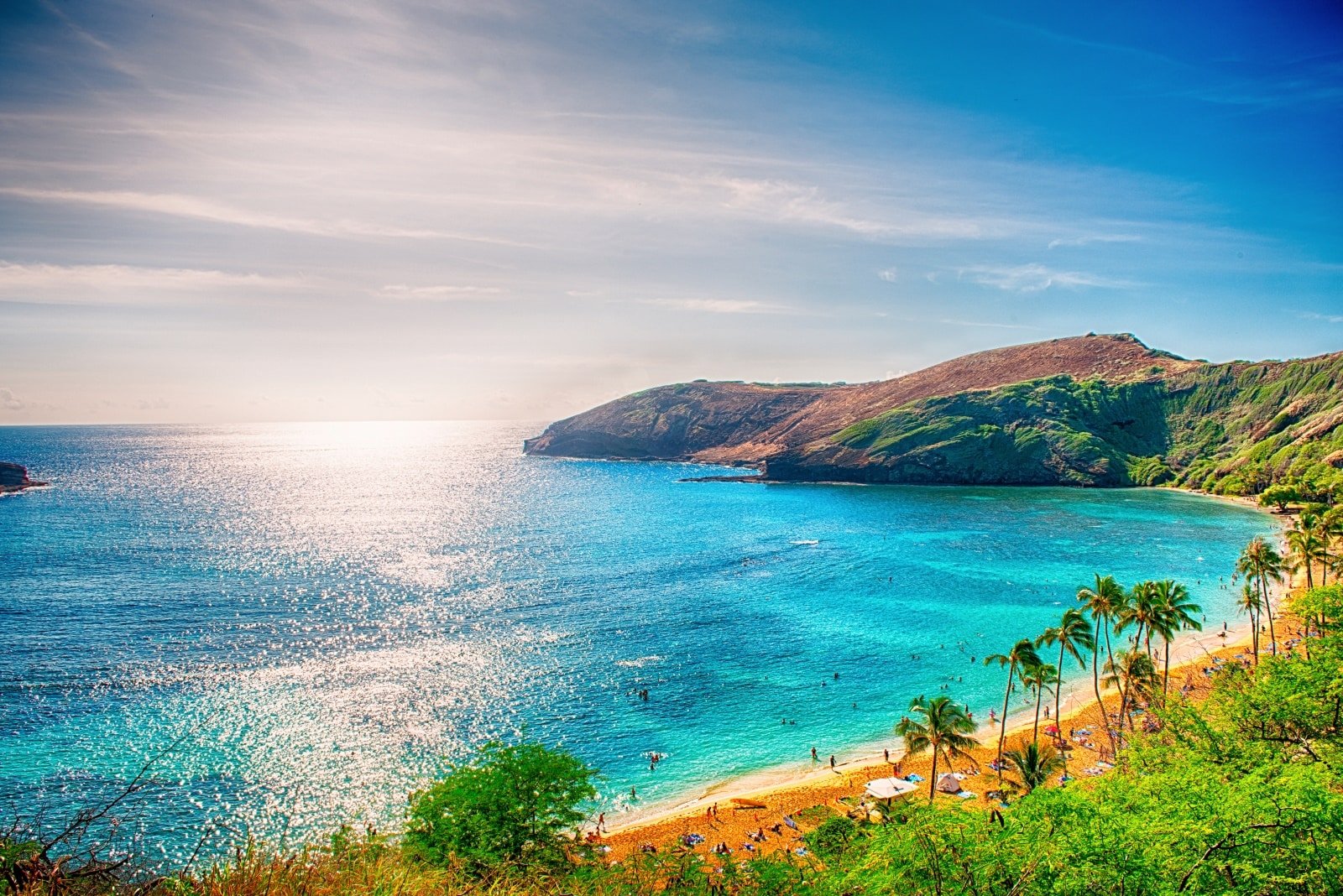
3. Maui, Hawaii, USA
Maui, the second-largest Hawaiian island, is a leader in sustainable tourism practices. The island’s lush landscapes, from the volcanic Haleakal? National Park to the Road to Hana, are maintained through eco-friendly initiatives. Visitors can enjoy organic farm-to-table dining, solar-powered water adventures, and cultural tours that respect the local heritage. Maui’s commitment to preserving its natural and cultural resources makes it a prime destination for eco-conscious travelers. The island’s diverse ecosystems, including rainforests and coral reefs, offer nature enthusiasts a wide range of activities.
Insider’s Tip: Participate in a beach clean-up to give back to the community.
When To Travel: The shoulder seasons of April to May and September to November offer great weather with fewer crowds.
How To Get There: Fly directly to Kahului Airport on Maui.
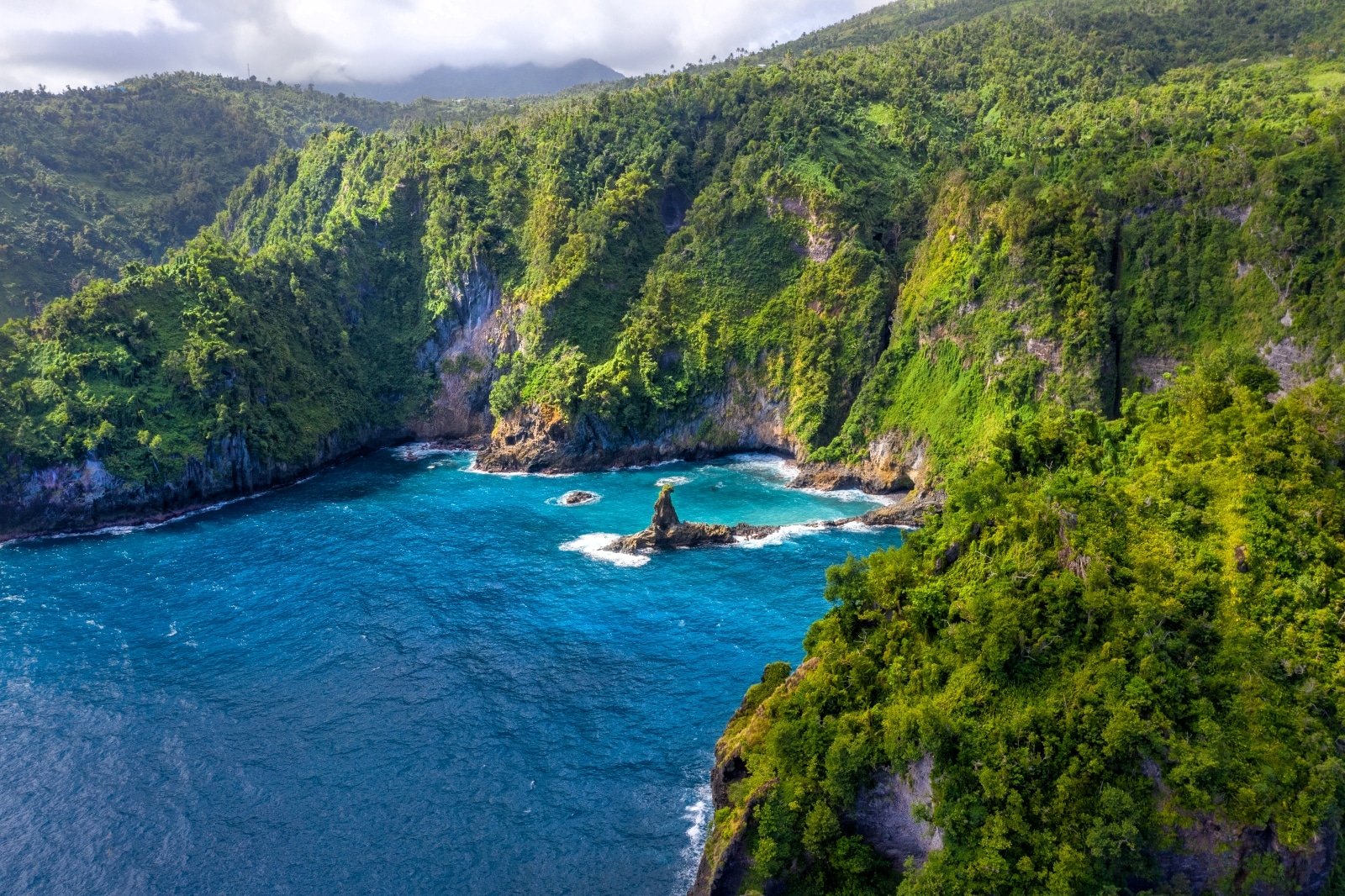
4. Dominica, Caribbean
Dominica stands out in the Caribbean for its commitment to eco-tourism. Known as the “Nature Island,” it boasts lush rainforests, hot springs, and a rich array of wildlife. The island’s eco-lodges and nature tours focus on conservation and community involvement, offering immersive experiences like whale watching and hiking to the Boiling Lake. Dominica’s rugged terrain and natural hot springs provide a unique backdrop for sustainable adventures, from birdwatching to exploring hidden waterfalls.
Insider’s Tip: Explore the island’s unique waterfalls and natural hot springs for a relaxing experience.
When To Travel: The dry season from December to April is ideal for exploring.
How To Get There: Fly to Douglas-Charles Airport, with connections from major Caribbean hubs.
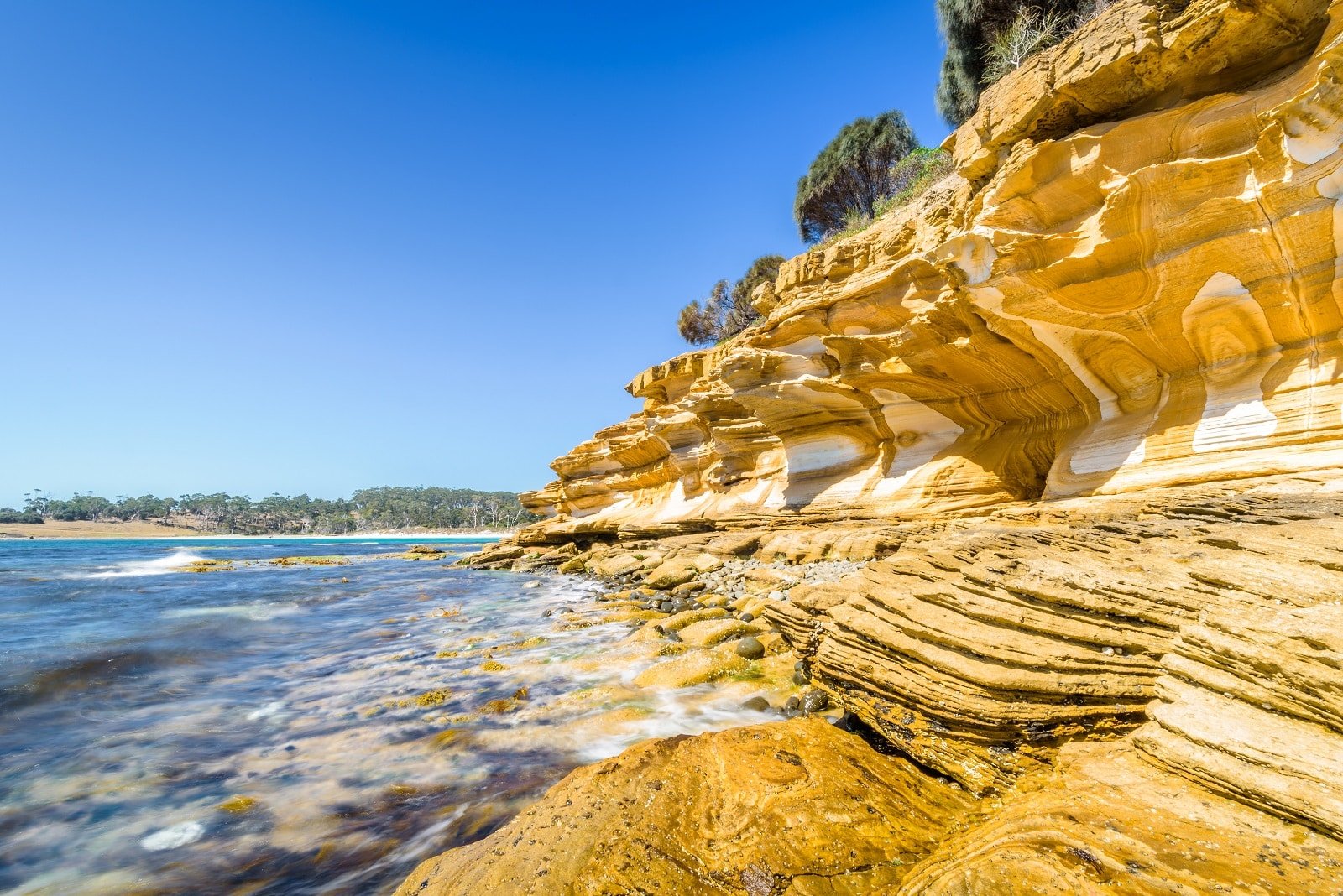
5. Tasmania, Australia
Tasmania, an island state of Australia, is a treasure trove for eco-conscious travelers. Over 40% of its land is protected as national parks and reserves, offering a diverse range of pristine environments. From the rugged wilderness of the Tasmanian Wilderness World Heritage Area to the serene beauty of Wineglass Bay, Tasmania is a haven for nature lovers. The island is committed to sustainable practices, evident in its eco-lodges and conservation projects. Visitors can engage in eco-friendly activities, such as hiking in ancient rainforests, watching wildlife, and exploring the island’s unique geology.
Insider’s Tip: Visit the Tasmanian Devil sanctuaries to learn about conservation efforts for this iconic species.
When To Travel: The summer months of December to February are ideal for outdoor activities.
How To Get There: Fly to Hobart or Launceston from major Australian cities.
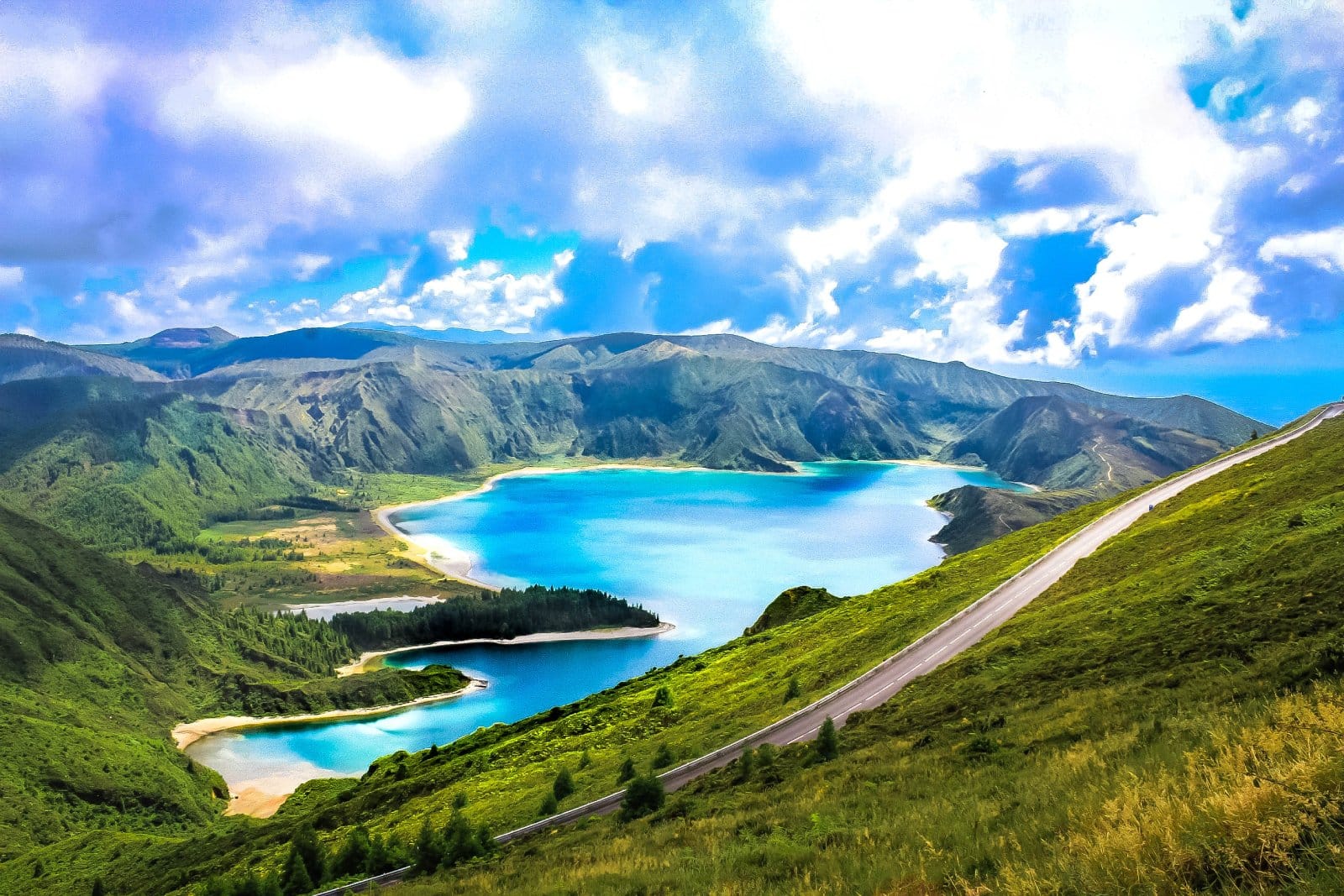
6. Azores, Portugal
The Azores, a group of nine volcanic islands in the North Atlantic, are a model for sustainable tourism. The islands’ stunning landscapes, from green pastures to thermal springs, are complemented by eco-friendly accommodations and activities. Whale watching, hiking, and diving in the Azores not only offer incredible experiences but also support conservation efforts. The islands’ commitment to sustainability includes renewable energy initiatives and the protection of marine life.
Insider’s Tip: Try geothermal cooking, a unique culinary experience on the islands.
When To Travel: Visit from April to October for the best weather and whale-watching opportunities.
How To Get There: Fly to Ponta Delgada on São Miguel Island from Lisbon or other European cities.
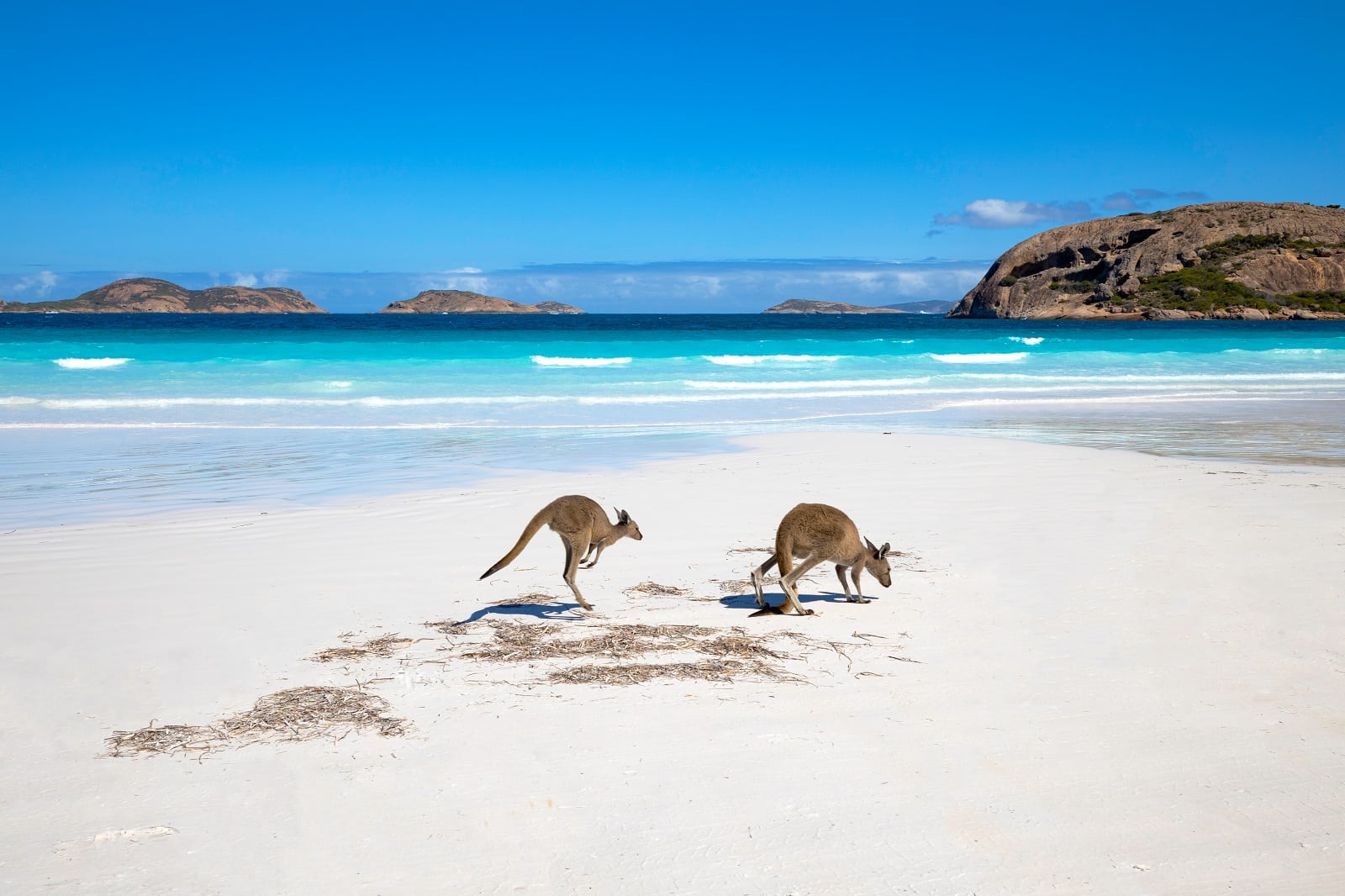
7. Kangaroo Island, Australia
Kangaroo Island, off the coast of South Australia, is a wildlife sanctuary and a leader in sustainable tourism. The island’s diverse habitats are home to many native Australian species, protected through eco-friendly practices. Visitors can enjoy guided wildlife tours, conservation experiences, and stays in eco-lodges. The island offers a unique opportunity to see Australian wildlife in their natural habitat, such as kangaroos, koalas, and echidnas.
Insider’s Tip: Join a nocturnal tour to see the island’s wildlife in their natural habitat, including kangaroos and echidnas.
When To Travel: Visit from September to March for the best wildlife viewing.
How To Get There: Fly to Kingscote Airport on Kangaroo Island or take a ferry from Cape Jervis.
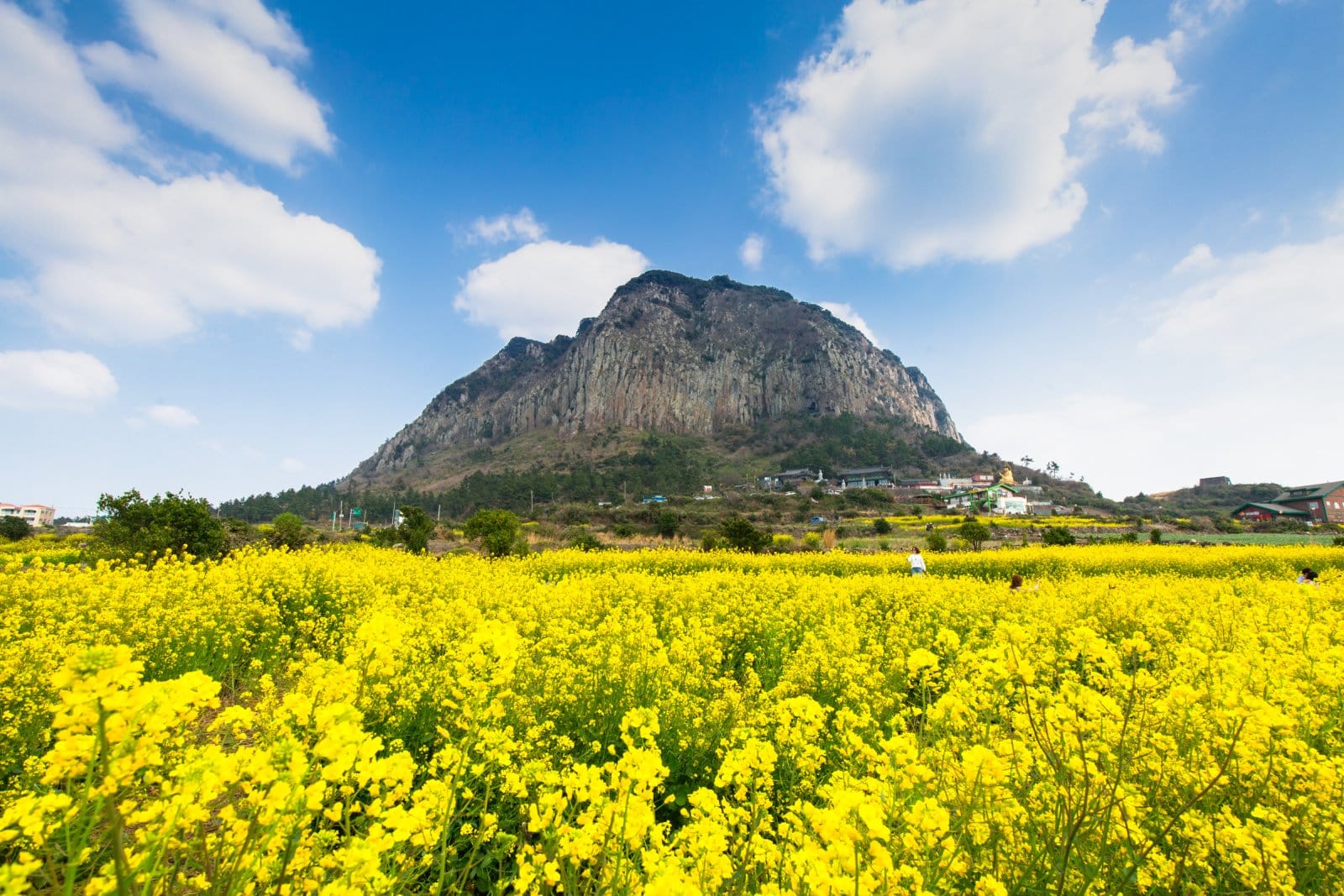
8. Jeju Island, South Korea
Jeju Island, off the southern coast of South Korea, is known for its natural beauty and commitment to sustainability. The island’s UNESCO-listed Geopark showcases unique volcanic landscapes, waterfalls, and beaches. Eco-friendly initiatives across the island promote sustainable agriculture and tourism, making it a great destination for environmentally-conscious travelers. Activities include exploring lava tubes, hiking up Hallasan Mountain, and visiting traditional Korean villages.
Insider’s Tip: Explore the island’s lava tubes and craters for a unique geological experience.
When To Travel: Spring (April to June) is ideal for mild weather and beautiful cherry blossoms.
How To Get There: Fly to Jeju International Airport from various cities in South Korea and Asia.
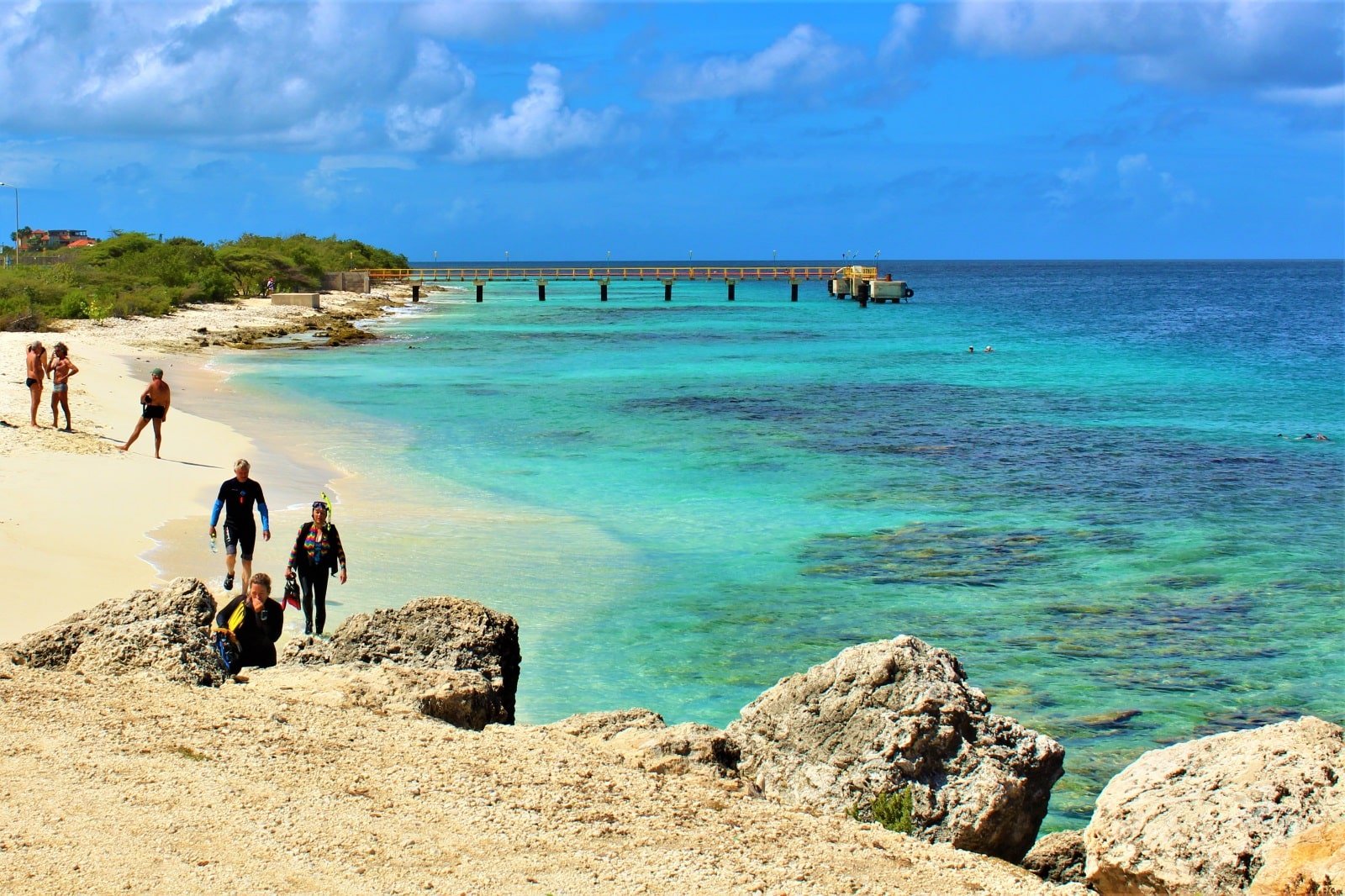
9. Bonaire, Caribbean
Bonaire, part of the Dutch Caribbean, is a pioneer in marine conservation. The island’s surrounding waters are a protected marine park, offering some of the best diving and snorkeling experiences in the Caribbean. Sustainable practices on land and sea make Bonaire a top choice for eco-friendly island travel. Visitors can enjoy activities like windsurfing, kitesurfing, and exploring the island’s unique flora and fauna.
Insider’s Tip: Try windsurfing or kitesurfing in Lac Bay, known for its ideal conditions.
When To Travel: Visit year-round, with the best diving conditions from April to October.
How To Get There: Fly to Flamingo International Airport on Bonaire from the United States, Europe, or other Caribbean islands.
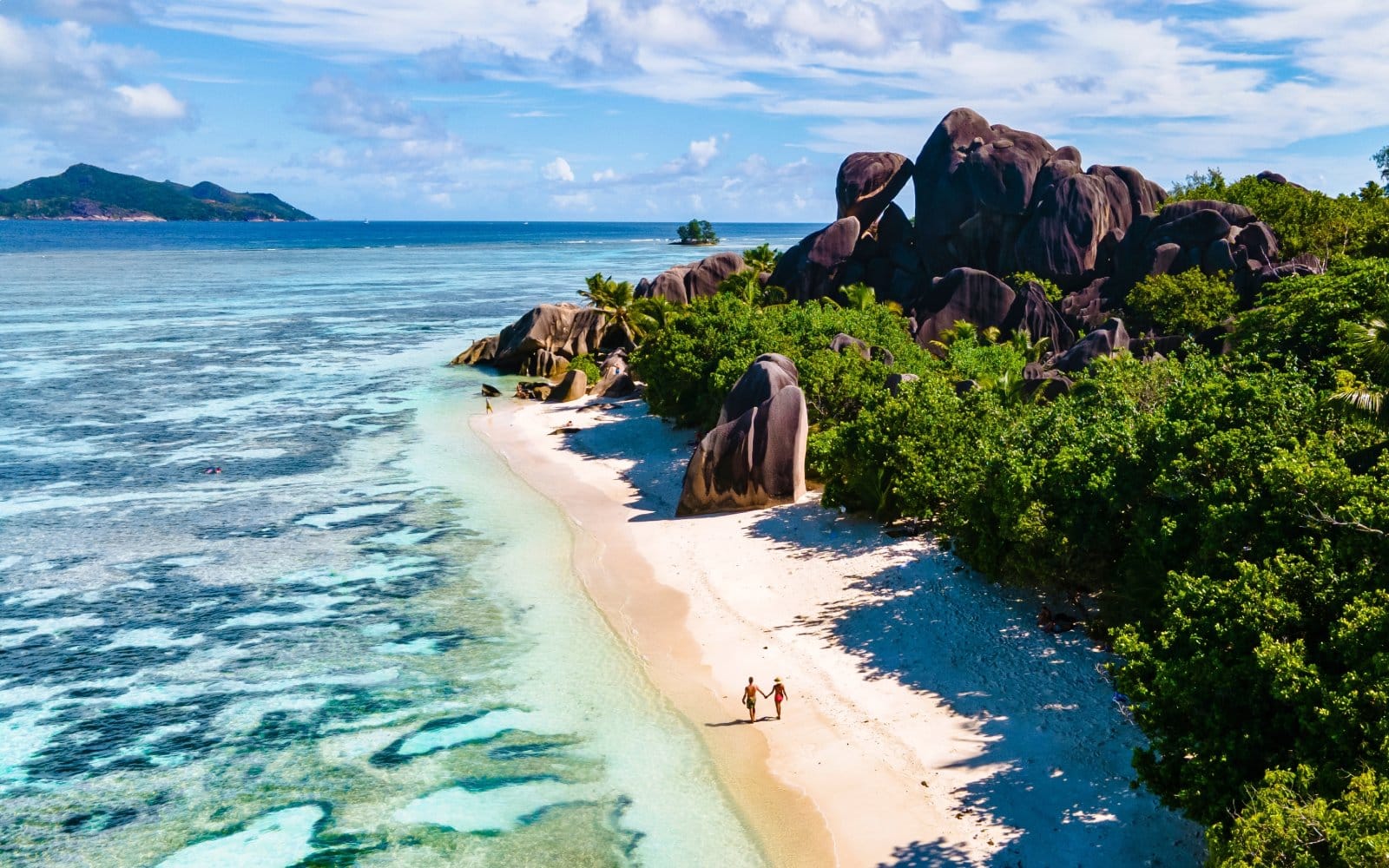
10. Seychelles
The Seychelles, an archipelago in the Indian Ocean, is a leader in environmental conservation. The islands offer stunning beaches, coral reefs, and nature reserves. Sustainable tourism practices here include eco-lodges, marine conservation projects, and guided nature tours. The Seychelles’ commitment to preserving its natural and cultural heritage makes it an ideal destination for responsible travelers.
Insider’s Tip: Visit Vallee de Mai on Praslin Island, a UNESCO World Heritage Site, to see the rare Coco de Mer palm.
When To Travel: April to May and October to November offer calm seas and pleasant weather.
How To Get There: Fly to Seychelles International Airport on Mahé Island from major international hubs.
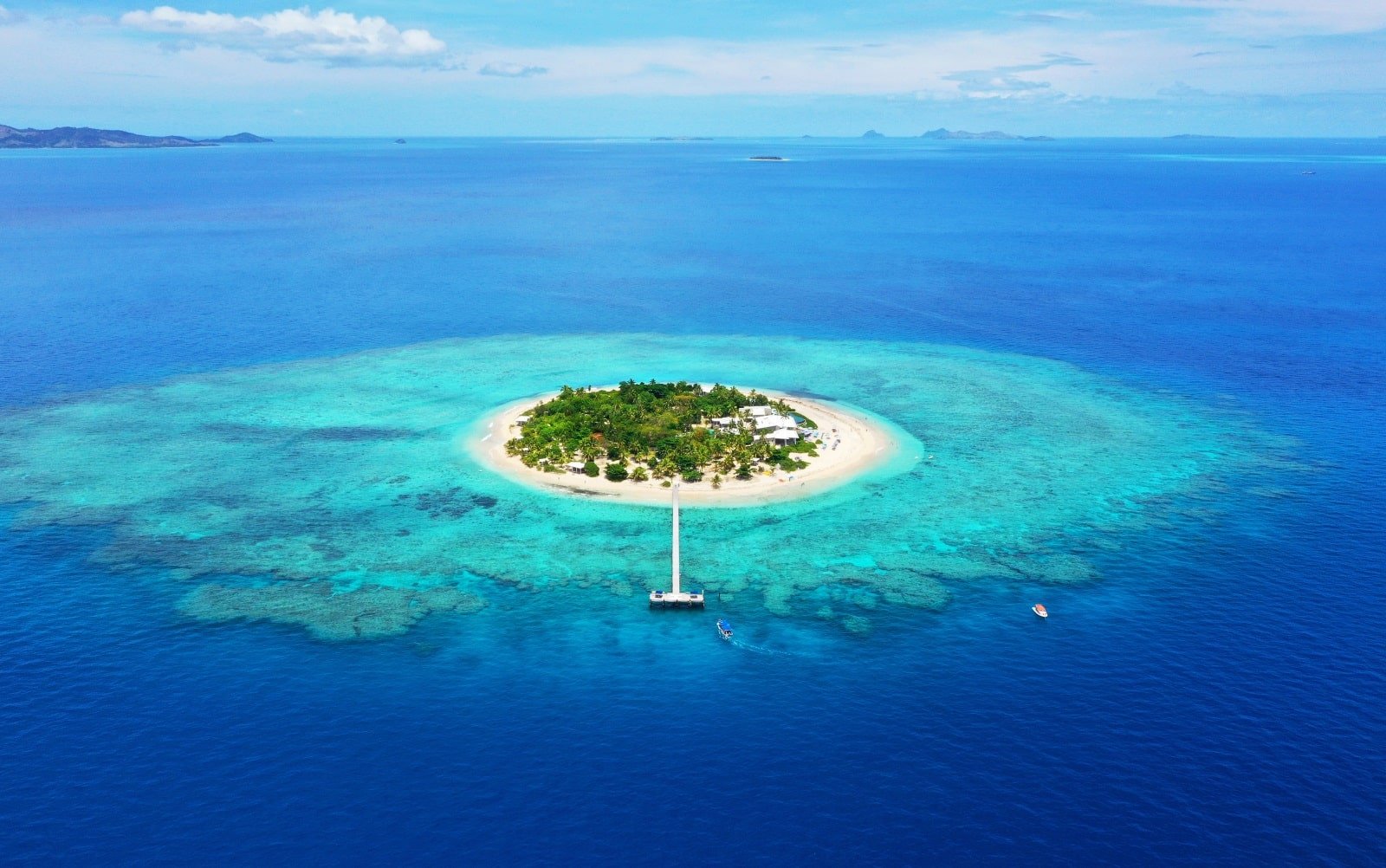
Fiji, an archipelago in the South Pacific, is renowned not just for its breathtaking coral reefs and warm hospitality but also for its dedication to sustainable tourism. The islands are a paradise for eco-conscious travelers, offering a variety of eco-friendly resorts and activities that range from diving in vibrant coral reefs to engaging in cultural tours and participating in conservation initiatives.
Fiji’s commitment to sustainable practices ensures that your visit contributes positively to the local communities and the preservation of the environment. The islands’ lush landscapes and clear waters provide the perfect setting for various activities, including kayaking, snorkeling, and exploring traditional Fijian villages. Engaging with the local community and participating in environmental conservation projects offer a deeper understanding and appreciation of Fiji’s natural beauty and cultural richness.
Insider’s Tip: Participate in a reef conservation project for a hands-on experience in marine preservation.
When To Travel: The best time to visit is during the dry season, from May to October.
How To Get There: Fly to Nadi International Airport on Fiji’s main island, Viti Levu.
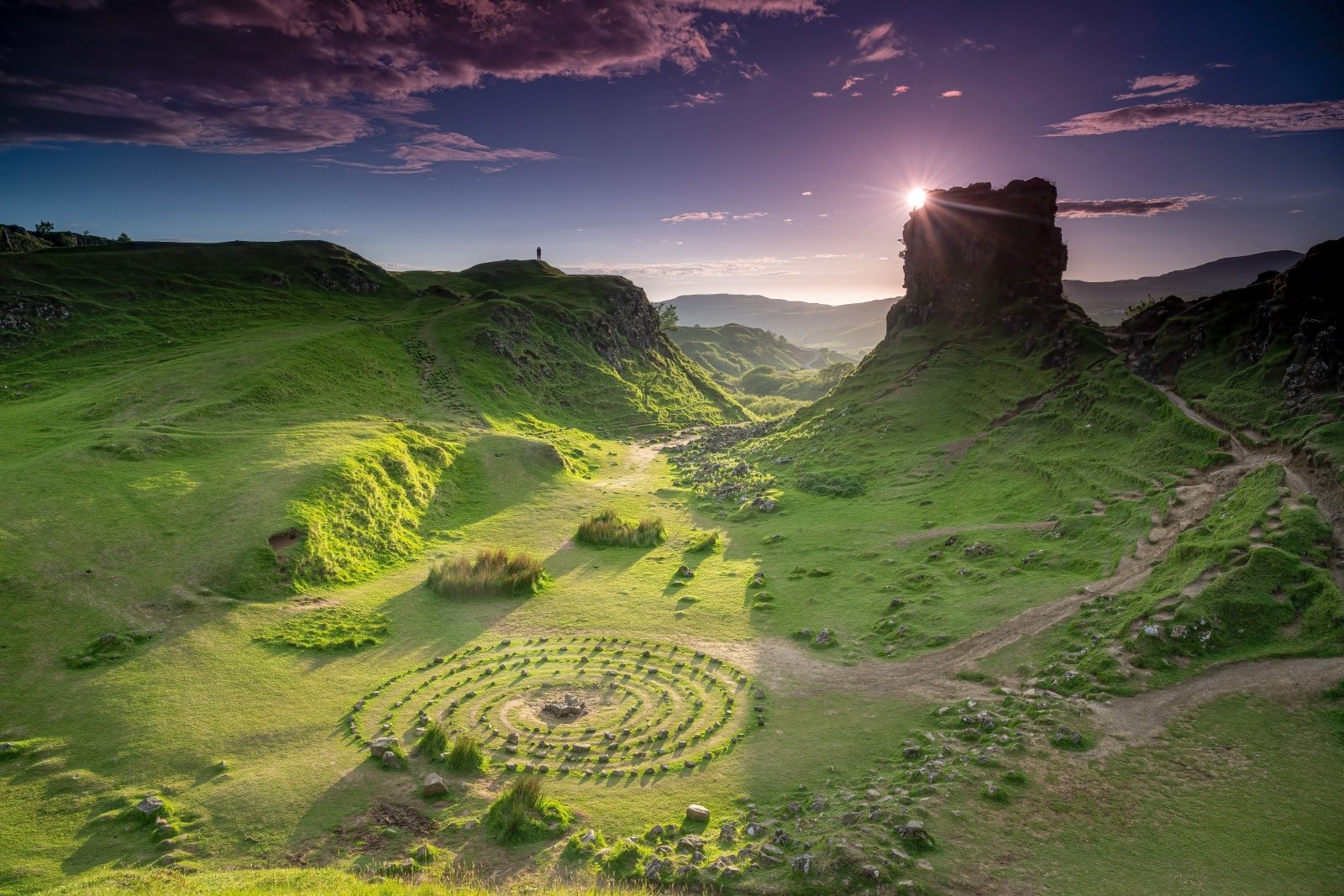
12. Isle of Skye, Scotland
The Isle of Skye, located off the west coast of Scotland, is a destination that captivates with its dramatic landscapes and rich cultural heritage. Known for its rugged coastlines, mystical mountain ranges like the Cuillins, and historical sites such as medieval castles, Skye is a haven for outdoor enthusiasts and history buffs alike. The island’s commitment to eco-friendly tourism is evident in its sustainable accommodations and practices that aim to preserve the natural environment.
Visitors can immerse themselves in the island’s beauty through activities like hiking, wildlife watching, and exploring the local folklore and traditions. The Isle of Skye’s enchanting scenery, from the famous Fairy Pools to the Old Man of Storr, offers endless opportunities for sustainable exploration and adventure.
Insider’s Tip: Visit the Fairy Pools, a series of clear, cold pools and waterfalls in the Cuillins.
When To Travel: May to September offers the best weather for outdoor activities.
How To Get There: Drive or take a bus from mainland Scotland to the Isle of Skye.
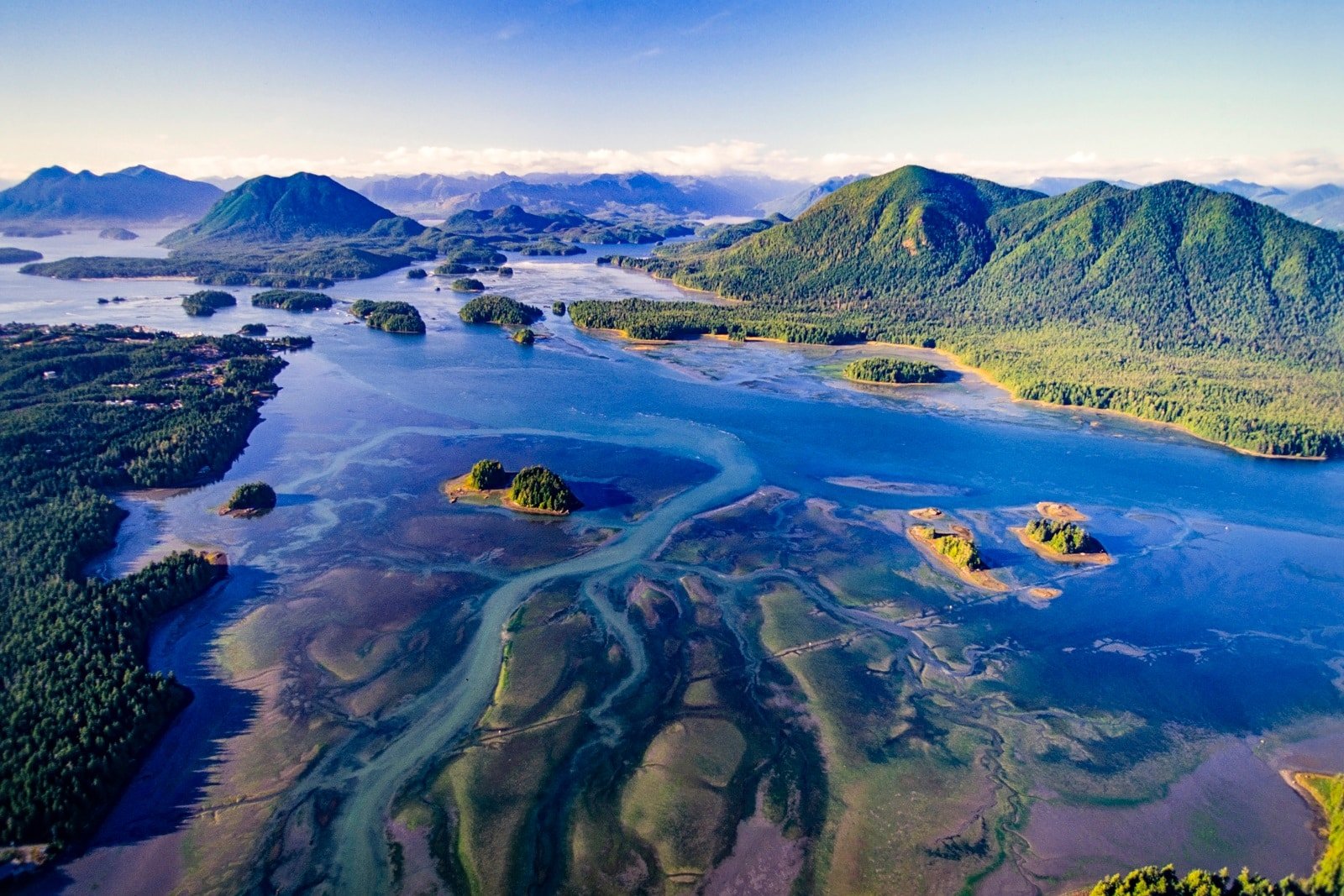
13. Vancouver Island, Canada
Vancouver Island, off Canada’s Pacific Coast, is a diverse ecosystem ranging from temperate rainforests to rugged beaches and mountainous terrain. The island is a model for sustainable tourism, offering a range of eco-friendly activities and experiences. Visitors can explore ancient forests, such as those in Cathedral Grove, go whale watching in the Pacific waters, or learn about the rich indigenous cultures of the island.
Vancouver Island’s commitment to environmental stewardship is evident in its conservation efforts and promotion of sustainable practices among local businesses and communities. The island provides a perfect blend of adventure and relaxation, with opportunities for hiking, kayaking, and enjoying the local culinary scene while focusing on ecological responsibility.
Insider’s Tip: Explore the island’s west coast for incredible wildlife viewing, including bears and whales.
When To Travel: Visit from June to September for the best weather and wildlife viewing.
How To Get There: Fly to Victoria International Airport or take a ferry from Vancouver.
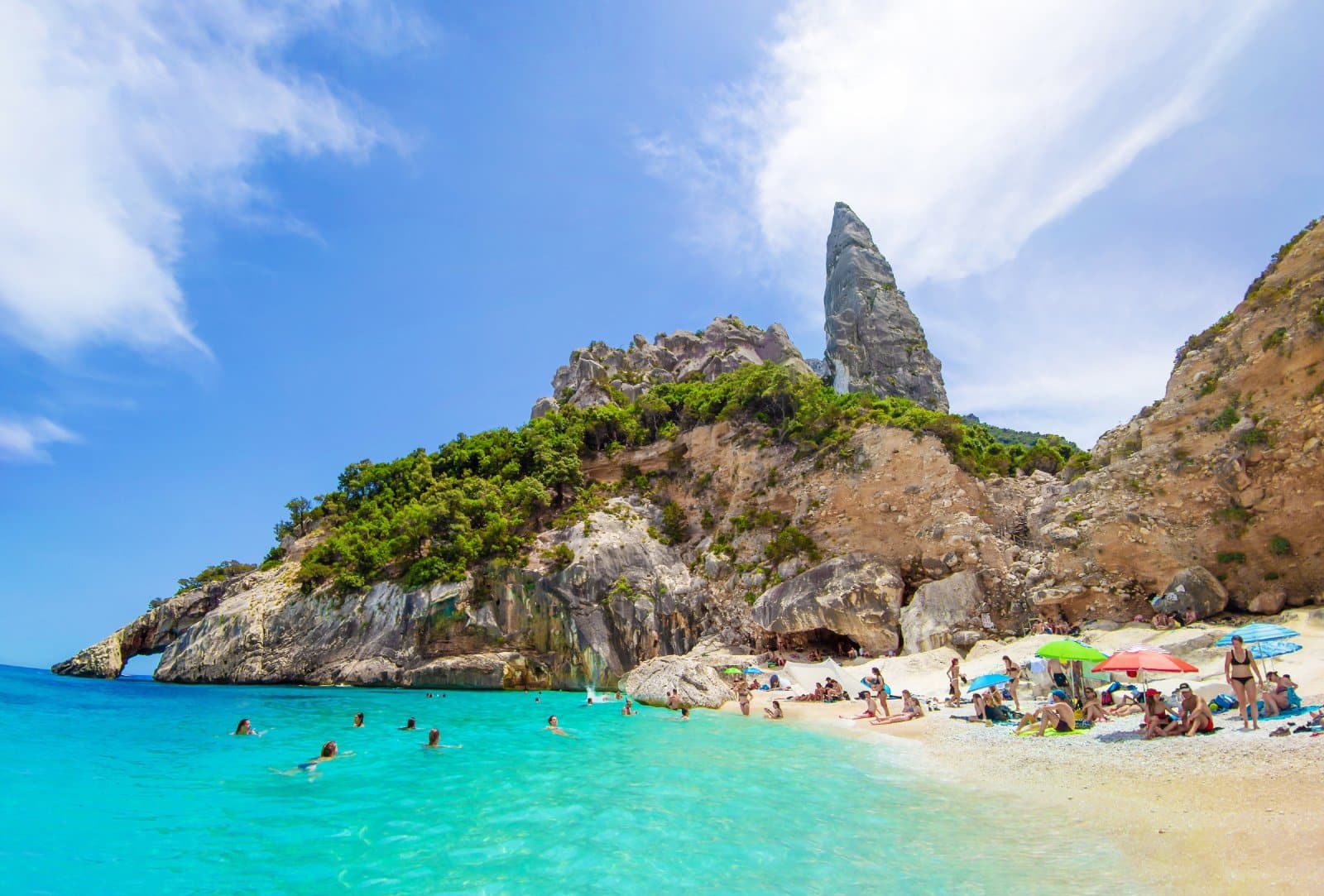
14. Sardinia, Italy
Sardinia, nestled in the Mediterranean Sea, is an island that offers more than just stunning beaches and crystal-clear waters. It is where the preservation of natural landscapes and cultural heritage is paramount. Visitors to Sardinia can enjoy sustainable agritourism, explore archaeological sites like the Nuraghe, and hike in the island’s rugged interior.
The island’s approach to tourism balances enjoyment with conservation, ensuring its beauty is maintained for future generations. Sardinia’s diverse landscape, from the Costa Smeralda to the mountainous Barbagia region, provides a range of activities for travelers, including horseback riding, wine tasting, and discovering the unique traditions and crafts of the local communities.
Insider’s Tip: Visit the Nuraghe, ancient megalithic edifices, to glimpse Sardinia’s past.
When To Travel: April to June and September to October offer pleasant weather and fewer crowds.
How To Get There: Fly to Cagliari, Olbia, or Alghero airports from major European cities.
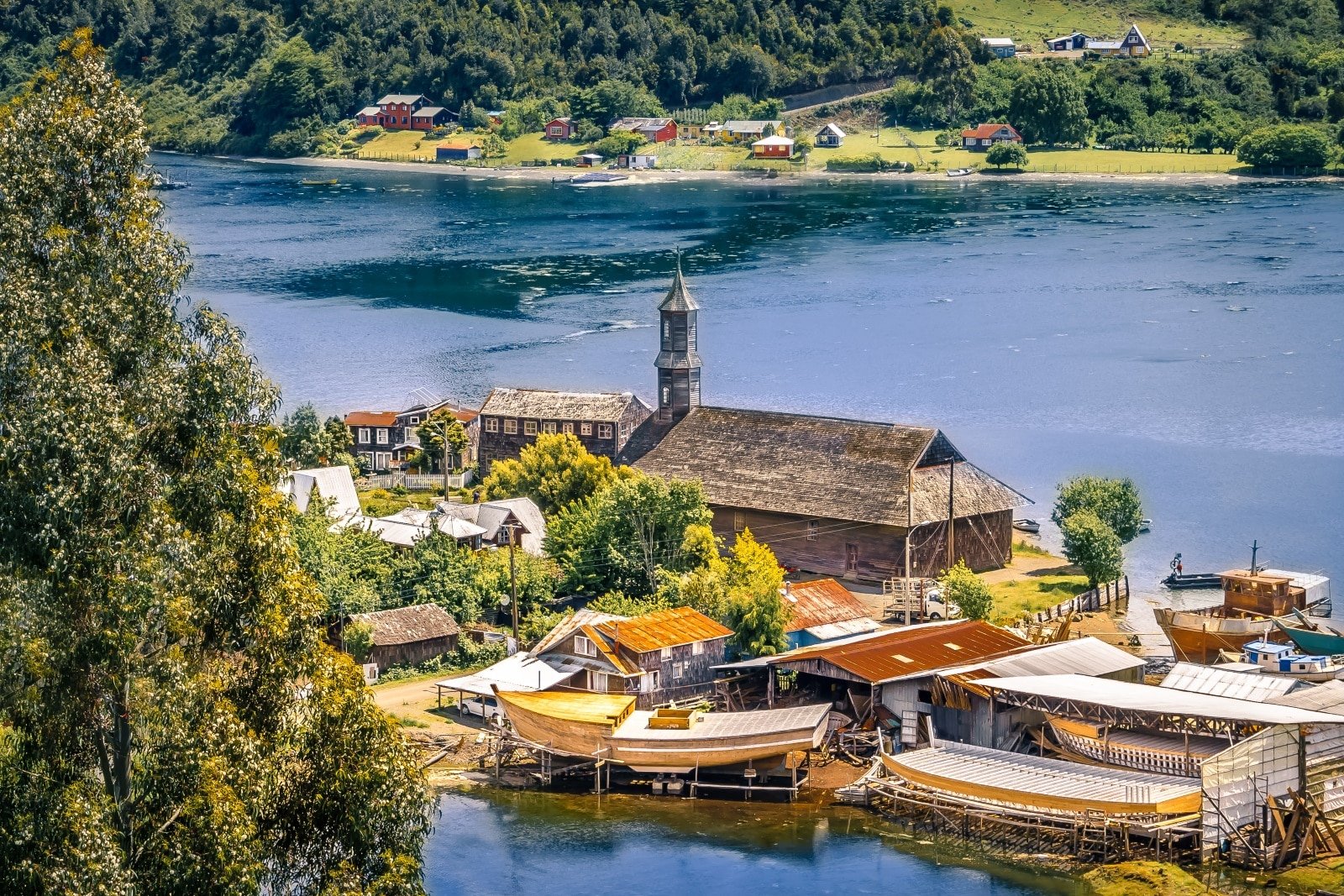
15. Chiloé Island, Chile
Chiloé Island, located in the southern region of Chile, is where myth and tradition blend seamlessly with the natural environment. Known for its distinctive wooden churches and rich folklore, Chiloé is committed to sustainable tourism practices. The island’s cultural heritage is deeply connected to its natural surroundings, offering visitors a chance to experience both.
Eco-friendly accommodations and activities such as bird watching, hiking, and exploring the island’s national parks are popular among travelers. The island’s cuisine, particularly its seafood and unique dishes like curanto, reflects its sustainable relationship with the sea and land. Chiloé’s rolling hills, dense forests, and coastal landscapes provide a tranquil setting for a sustainable and culturally enriching getaway.
Insider’s Tip: Try curanto, a traditional Chilote dish, to taste local cuisine.
When To Travel: The best time to visit is during the summer months of December to March.
How To Get There: Fly to Puerto Montt and then take a ferry to Chiloé Island.
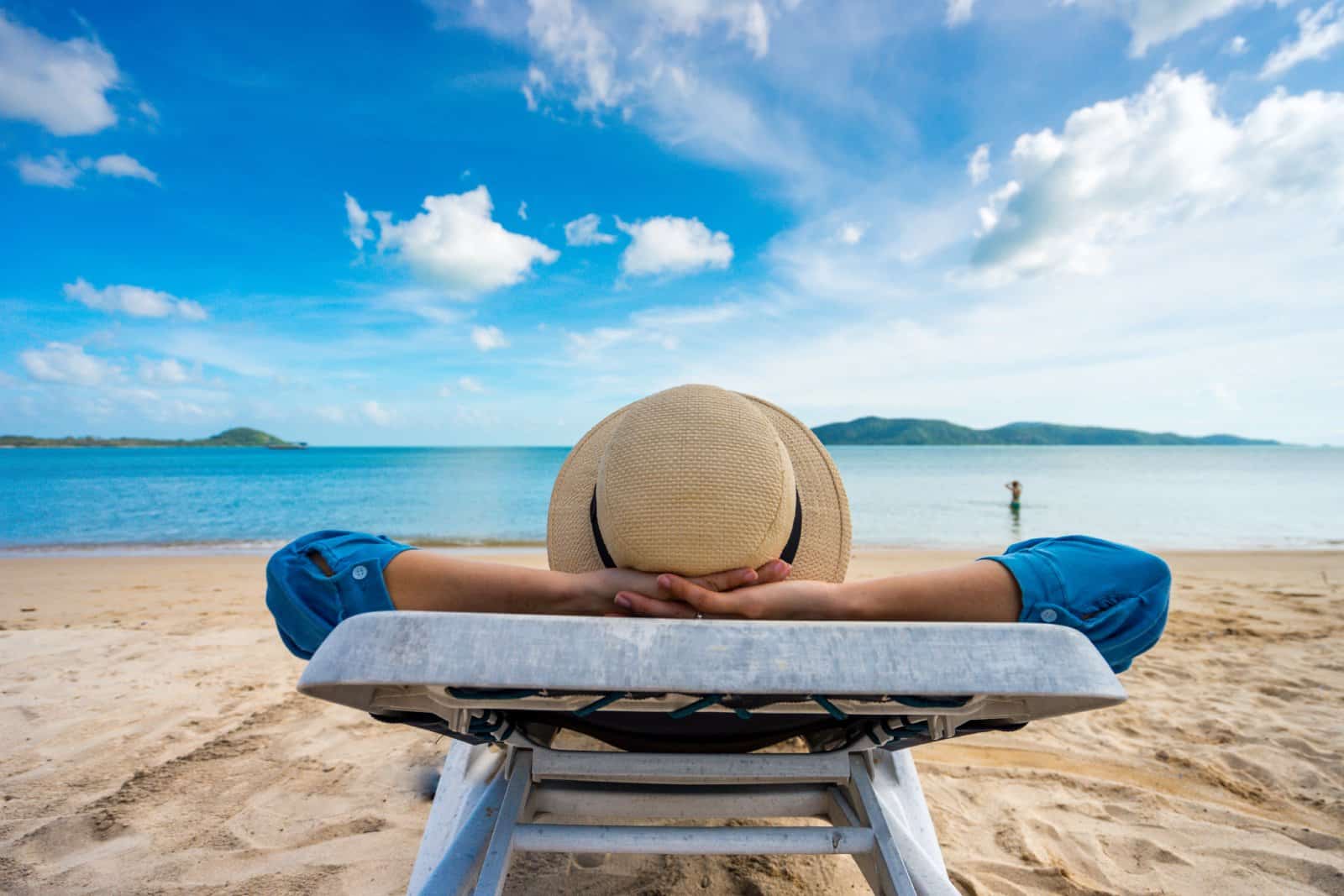
The Bottom Line
Embarking on a sustainable island getaway allows you to responsibly enjoy some of the world’s most beautiful destinations. These eco-friendly islands offer breathtaking natural beauty and a commitment to preserving their environment and culture. Whether you’re snorkeling in Fiji’s coral reefs, exploring the ancient landscapes of Sardinia, or immersing yourself in the unique culture of Chiloé, your journey will contribute to the sustainability of these incredible places. As you plan your next island adventure, remember that your choices can help preserve these paradises for future generations.
More Articles Like This…
Barcelona: Discover the Top 10 Beach Clubs
2024 Global City Travel Guide – Your Passport to the World’s Top Destination Cities
Exploring Khao Yai 2024 – A Hidden Gem of Thailand
The post 15 Eco-Islands 2024 – Sustainable Island Retreats republished on Passing Thru with permission from The Green Voyage .
Featured Image Credit: Shutterstock / Grekov’s.
For transparency, this content was partly developed with AI assistance and carefully curated by an experienced editor to be informative and ensure accuracy.
More for You
Stephen Hawking once gave a simple answer as to whether there was a God
Fact Check: We Looked into Actor Terrence Howard's Claim That He Holds Patent on Augmented/Virtual Reality Technology
Donald Trump Handed Legal Win In Battle Against Mary Trump
‘Old People Smell’ Is Real, Here’s What Causes It and How To Avoid It
Is Victoria Beckham’s Diet Healthy? She Eats The 'Same Thing Every Day,' According To Her Husband David
‘It’s already highway robbery.’ Why people don’t wait to claim Social Security and what experts say
12 Uncomfortable Truths About Christianity That People Aren't Ready to Hear
I’m a Bank Teller: 3 Times You Should Never Ask For $100 Bills at the Bank
The health condition many women are developing after COVID

Trump judge faces a ‘serious problem’ if court returns guilty verdict: John Yoo
Woman Loses 50 Pounds By Following Five Simple Rules
“I would cut him out immediately”: Glen Powell Ensured He Was the Perfect Val Kilmer Replacement in Top Gun 2 That Tom Cruise Readily Accepted
Camera Covered in Fake Leaves Found in Homeowner’s Yard
Ukraine-Russia war – live: Kyiv fires US weapon inside Russia as Zelensky accuses China of ‘sabotage’
Why Mexico Is Militarizing
Ex-DOJ Official Assesses Trump's Chances Of Supreme Court Intervention
What to Know About POTS, a Condition Marked by Dizziness and Fatigue That’s Often Misdiagnosed
“It was the best part I ever got”: The Dark Knight Star Michael Caine Was Furious Over One of His Best Roles That Landed Him an Oscar Nomination
Mom Shares Tip That Helped Her Drop 160 Pounds Healthily—Without Fad Diets
5 people explain what it actually feels like to die

IMAGES
VIDEO
COMMENTS
8. Lauca National Park. Lauca National Park. Located in the far north of Chile, just 140 kilometers east of the city of Arica, Lauca National Park (Parque Nacional Lauca) covers an area of 1,300 square kilometers and consists largely of high plains and mountain ranges, many of the latter comprised of large volcanoes.
10. The Elqui Valley. Best place for stars and pisco. This fertile valley on the southern fringe of the Atacama Desert is the epicenter of Chile's pisco industry, with a half-dozen distilleries where you can learn about the nation's revered brandy (as well as toss back a few sours).
7. Viña Cousino Macul. 2,792. Wineries & Vineyards. Vineyard with a rich family heritage, showcasing a variety of high-quality wines and educational tastings. Includes a tour of historic cellars and a museum highlighting the region's viticulture. See ways to experience (7) 2023. 8.
7. Cerro San Cristobal. Dominating the Santiago skyline is Cerro San Cristobal, one of Chile's most recognizable natural landmarks. Named after St. Christopher, this tree-lined hill boasts some of the best views in the entire city. From the summit, you'll be able to look down on the bustling streets of Santiago.
5. Ski in the Andes. Professional skiers and snowboarders from the Northern Hemisphere decamp to Chile each winter to train at the myriad resorts located in the Central Andes. Join the procession at top-notch (and high-altitude) centers such as Valle Nevado and Ski Portillo near Santiago.
North to south, the best places to spot penguins are Isla Damas, Algarrobo, Chiloé, Seno Otway, Isla Magdalena, Tierra del Fuego, and "Antárctica Chilena.". Chile claims a big chunk of the ...
Tourism in Chile Where the impossible is possible. From the extreme north with the driest desert in the world to the austral south with eternal ice and inverted waterfalls, Chile is an invitation hard to refuse. Learn about tourism in Chile and be amazed by the experiences in the southernmost portion of the world.
Sep 23, 2023 • 7 min read. With some patience - and a bit of basic Spanish - the thin South American nation of Chile can be the perfect setting for a family adventure. Tips & Advice. Wildlife & Nature. Budget Travel. Activities. Activities. Festivals & Events. Astrotourism.
9. Barrio Lastarria. This bohemian neighborhood has plenty of shops, bookshops, design shops, museums, cinemas, theater, restaurants and bars, hotels and tourist appartments, and more. 10. Costanera Center. Costanera Center opened its doors in June of 2012 in Providencia, one of Santiago's most happening neighborhoods. With more than 197,000 ...
1. Hike the W or O in Torres del Paine National Park. Popularity: High - this is the country's principal tourist attraction, with 300,000 visitors in 2019.However, there are plenty of hiking routes in Torres del Paine that are far quieter than the W.; Patagonia's best-known park, Torres del Paine National Park in the far south of Chile attracts thousands of visitors per year - drawing ...
Here is a look at some of the best places to visit in Chile: 10. La Serena [SEE MAP] Antifama / Flickr. This northern Chilean town is the second oldest in the nation. It boasts a city full of lovely architecture and a warm golden beach.
With some 2,600 miles (4,300 kilometers) separating the southern tip of Patagonia from the northern border of Peru, Chile has a myriad of worthwhile attractions across a variety of geographical zones. Starting from the south, let's work our way north on a tour of Chile's 20 best tourist destinations.
13. Visit Pablo Neruda's Houses. The famous poet and senator of the Chilean Communist Party, Pablo Neruda, is one of the most important and beloved figures in South America. When you travel to Chile, visiting his houses is a must if you want to get in touch with the history and culture of the country.
Travel Guides; Tours and Attractions; ... this six-floor mecca is a fantastic place to stock up on supplies for trips further afield in Chile, with the city's best supermarket (Jumbo), department ...
2. Easter Island. The giant statue heads called Moai makes Easter Island in Chile a major tourist attraction. Lying over 3,219km off Chile's eastern coast and 2,092km from any other populated piece of land, Easter Island is one of the most isolated inhabited places in the world and a photographer's dream land.
7 World Heritage Sites in Chile. 1. Humberstone and Santa Laura Saltpeter Works. Photo: Sernatur audiovisual bank. Located in the Atacama Desert, Humberstone and Santa Laura Saltpeter Works are true ghost towns and tangible evidence of the period when Chile was the major producer of saltpeter in the world in the late 19 th and early 20 th ...
2. Torres Del Paine. Where sprawling ice fields meet snow-capped mountains, towering granite spires pierce vast open skies in the iconic Torres del Paine National Park. A breath-taking expanse of wilderness - this is one of the best places to visit in Chile. And every escapist's dream.
7. Valdivia, The Lakes Region. This small university city in the Lakes Region isn't one of the places to travel in Chile for adventure per se, but given that so few tourists ever make it here, part of Valdivia's appeal is that you feel like you've made it some truly away from the crowds. Sea lions dozing in Valdivia.
Towering over the adventure capital of Pucón, Volcán Villarica is the centerpiece of Parque Nacional Villarrica, one of the most popular parks in Chile…. Discover the best attractions in Chile including Parque Nacional Patagonia, Orongo Ceremonial Village, and Rano Raraku.
1. Chile is amongst the safest countries on Earth. Chile is a very safe destination for travelers in South America. According to the Global Peace Index (updated every year), Chile currently ranks as the 27 th safest country on the planet. It is usually considered the safest country in South America, together with Uruguay.
Exploring the expansive La Vega Central produce market is a full-on sensory experience, offering diverse sights, sounds, flavours and textures. Try a traditional Peruvian pepper, buy a kilo of fresh strawberries or feast on some traditional Chilean cuisine at the market's eating area. 4. Santa Lucia Market.
17 Top Tourist Attractions in Chile. 10 Most Beautiful National Parks in Chile. 10 Best Things to do in Valparaiso, Chile. 12 Best Things to Do in Iquique, Chile. Unravel the Secrets of Chile's Easter Island. Reader Interactions. Leave a Reply Cancel reply. Your email address will not be published. Required fields are marked *
Tourist attractions in Chile. Chile is a country filled with remarkable tourist attractions that cater to a wide range of interests. Here are some of the most popular tourist attractions in Chile: Torres del Paine National Park: Located in Patagonia, Torres del Paine is one of the most breathtaking national parks in the world. It features ...
Search in Chile Travel. Search. Tourism service [email protected] +56 2 27318337 +56 9 9458 0453 ... Protocols for yourfavorite attractions. The new post-Covid-19 tourism will demand strict standards of hygiene and sanitation of spaces, therefore, the invitation is to adopt these recommendations and adopt a new travel culture ...
The Atacama Desert in Chile, known as the driest desert on Earth, transforms into a breathtaking spectacle of color during its rare bloom. This phenomenon occurs when rainfall is higher than usual ...
This paper has as objective to describe the genesis of an experience of communitarian tourism in Tralcao (City of San Jose de la Mariquina, Chile) emerged from Agenda 21 of Region Los Rios ...
But with tourism accounting for at least 45 per cent of the island's GDP, generating more than €16 billion in income, there are no easy answers for authorities in Majorca, Menorca, Ibiza and ...
Image Credit: Shutterstock / Angelina Dobreva. 6. Azores, Portugal. The Azores, a group of nine volcanic islands in the North Atlantic, are a model for sustainable tourism. The islands' stunning ...